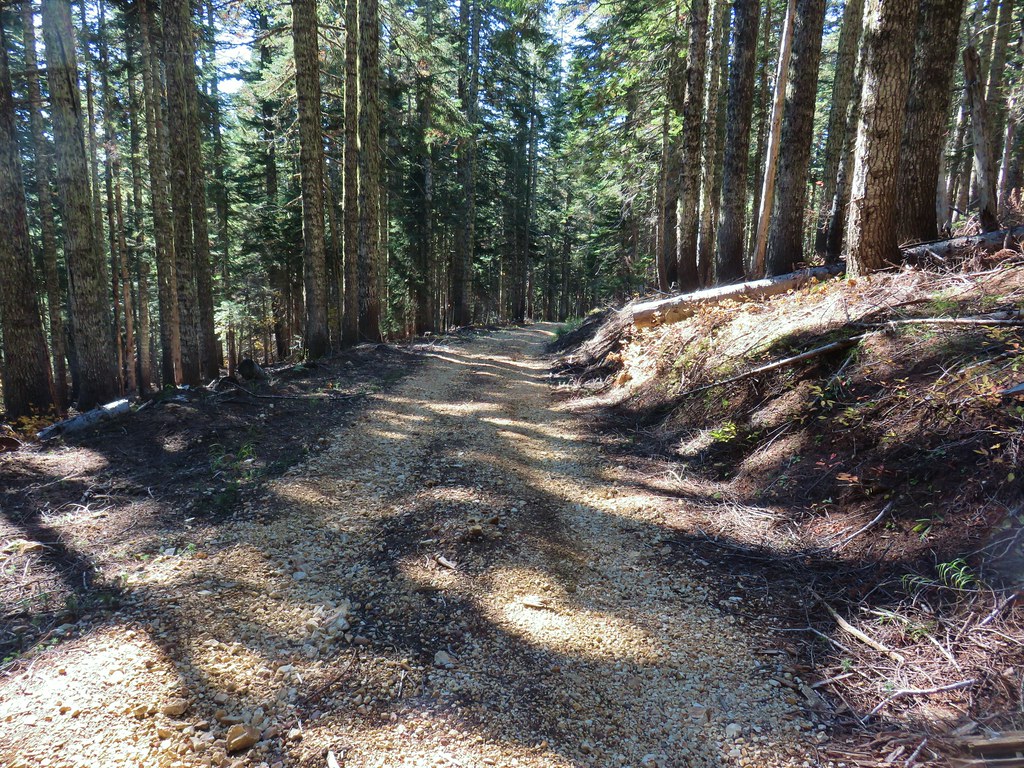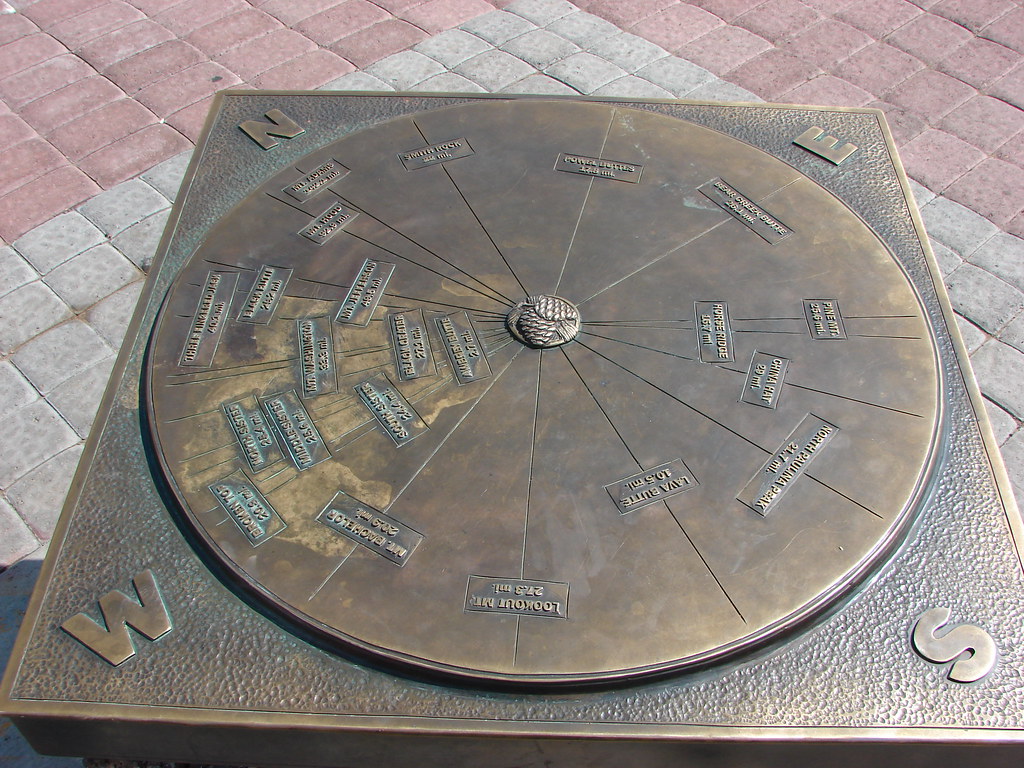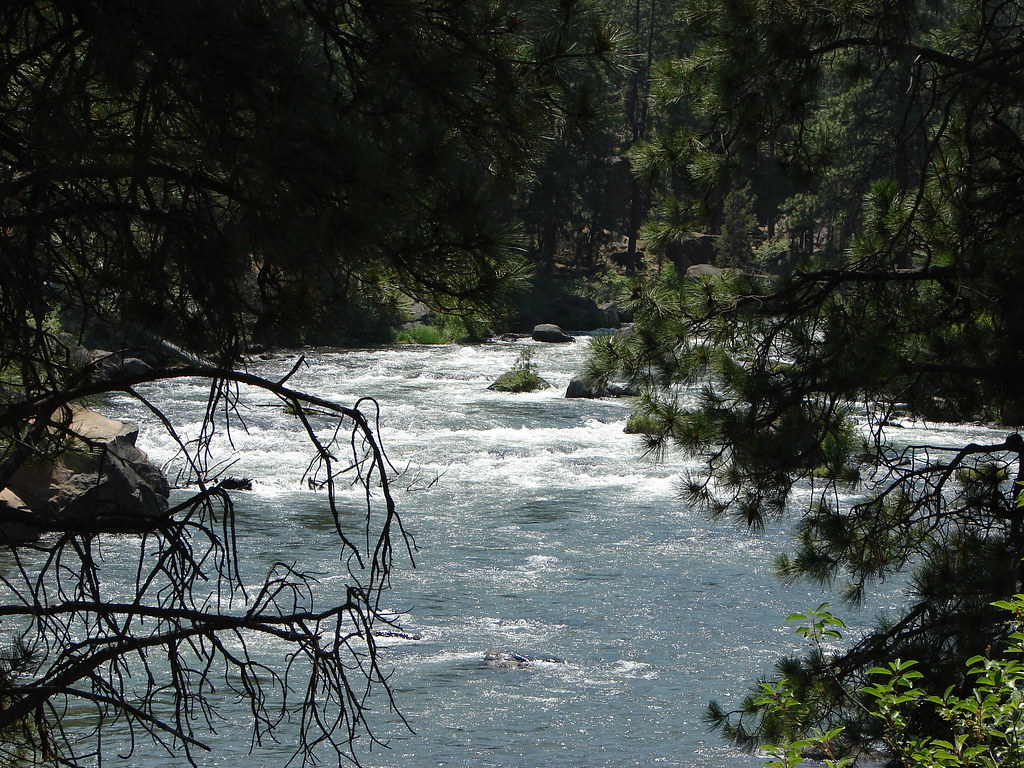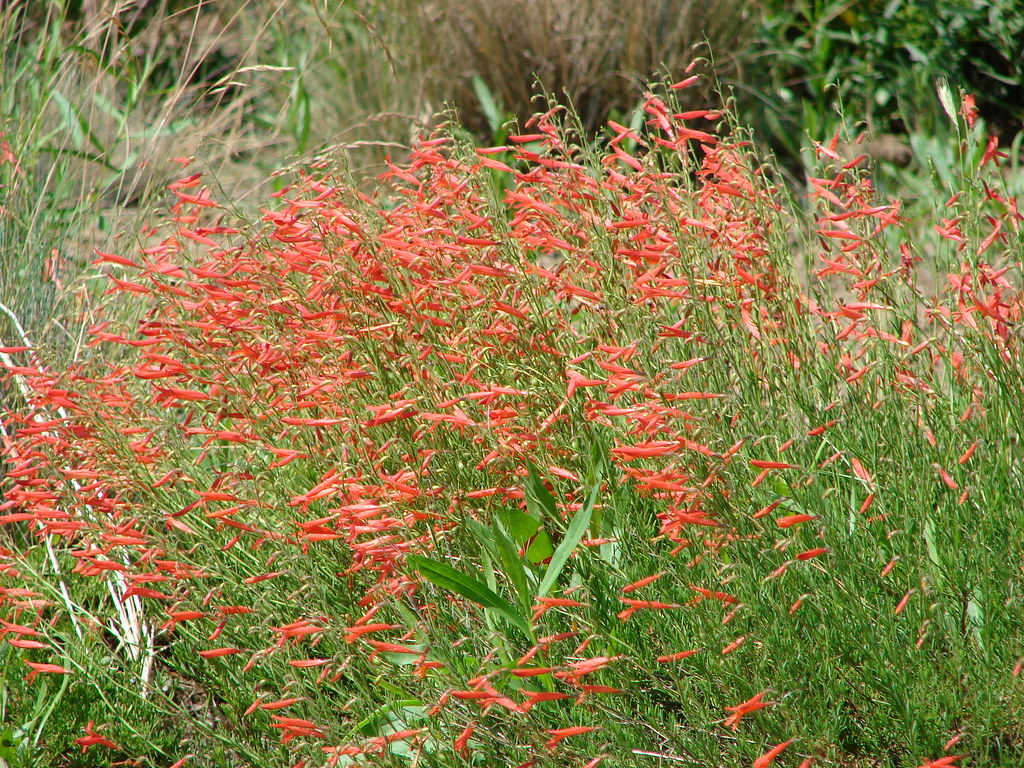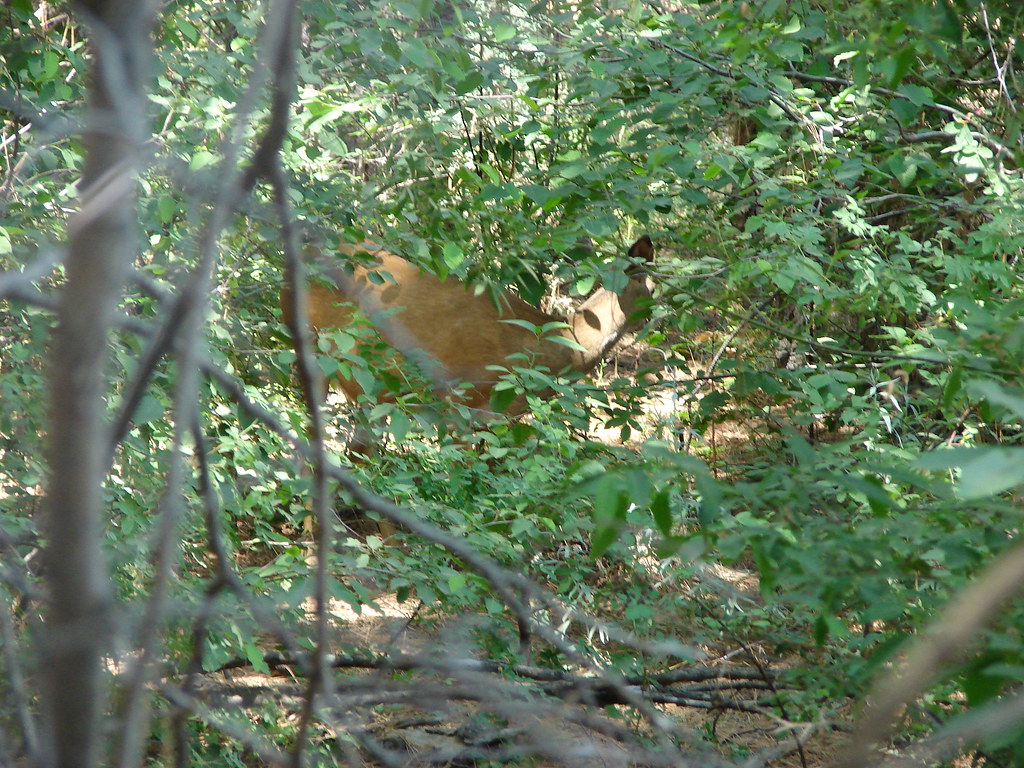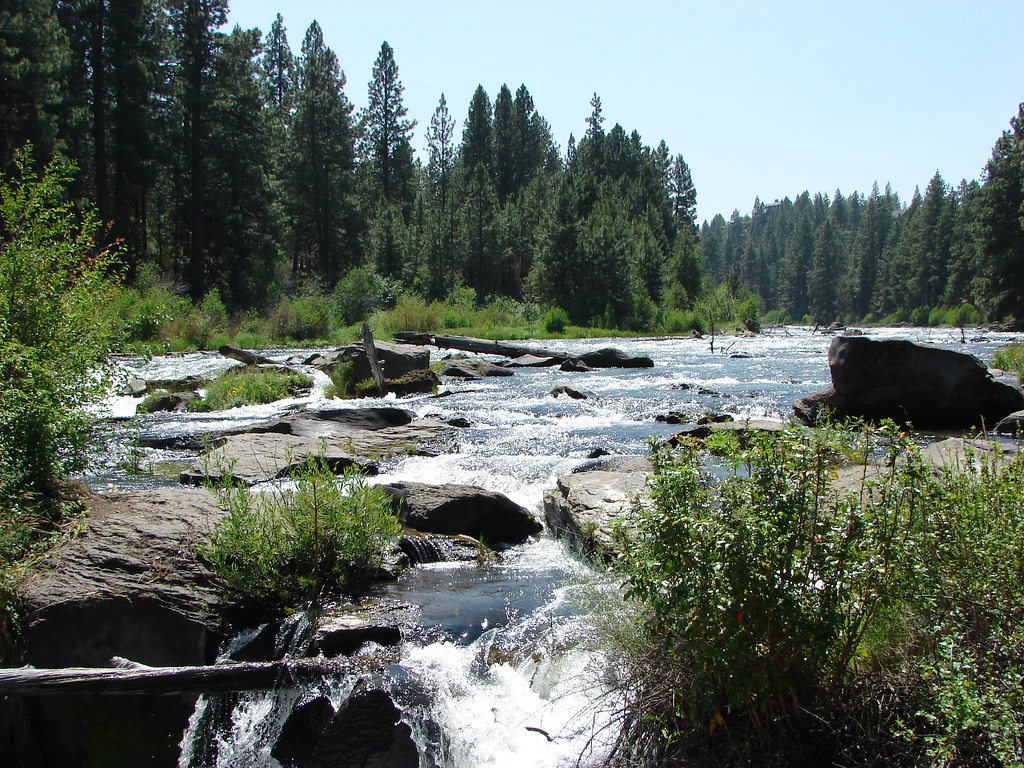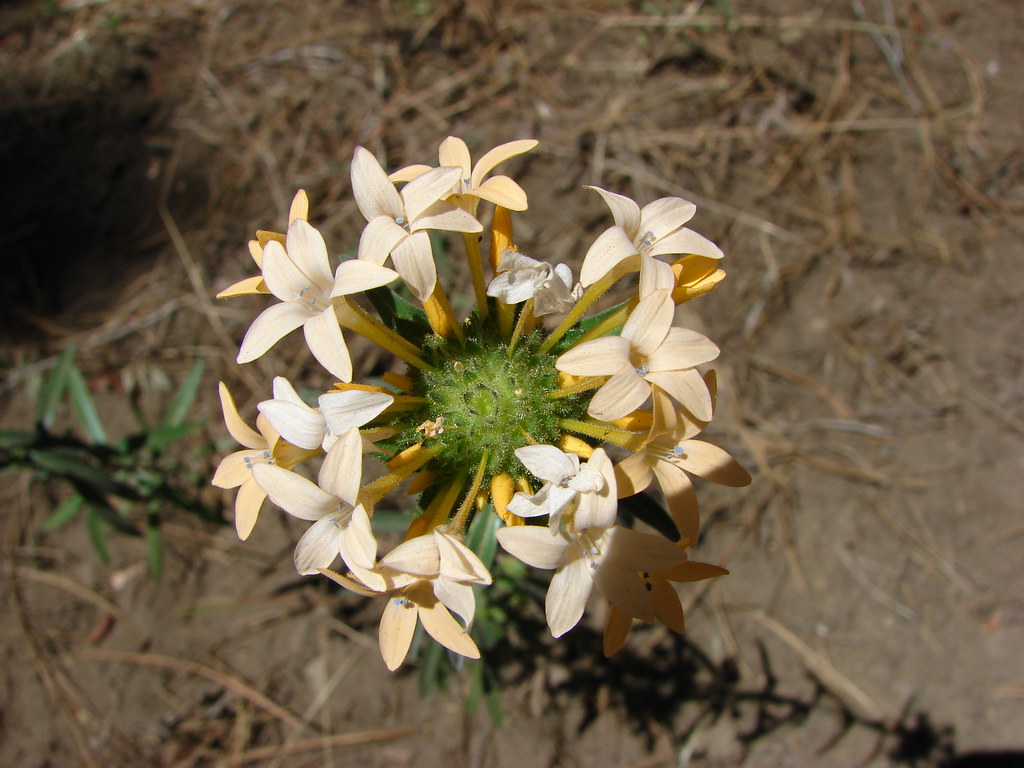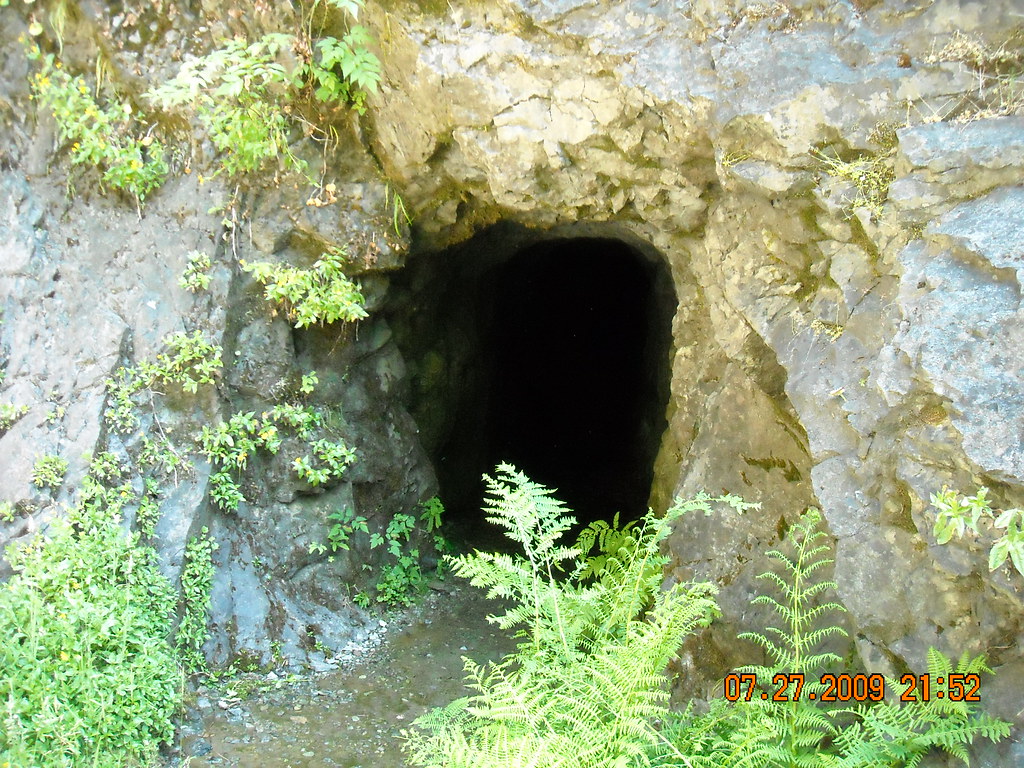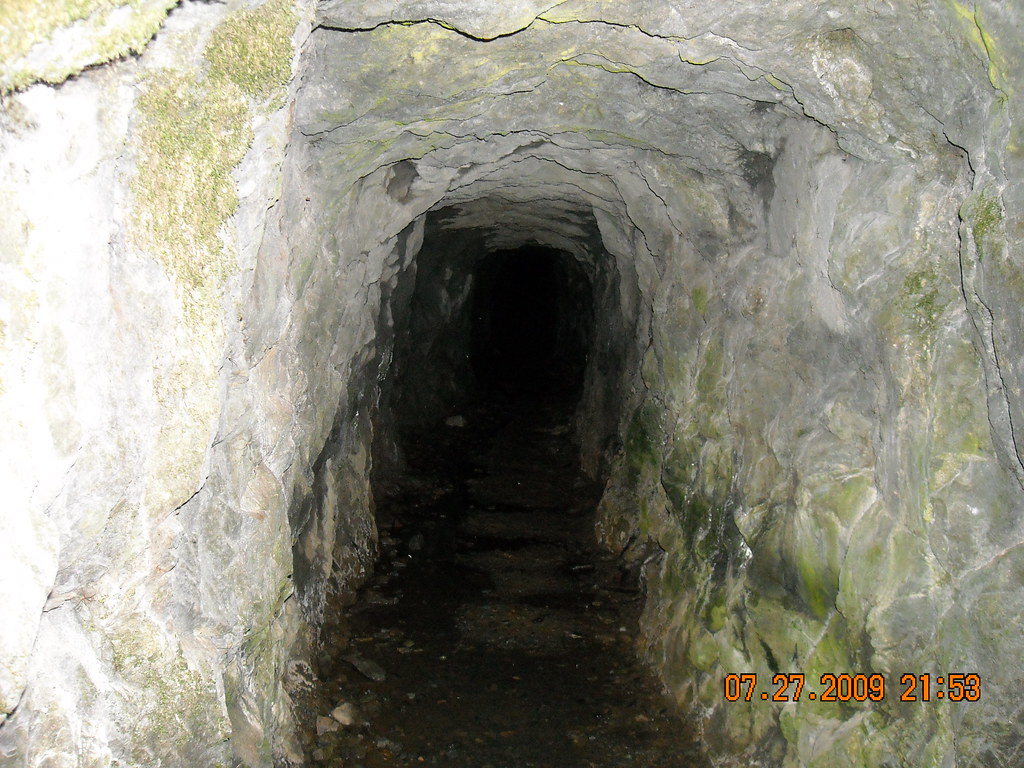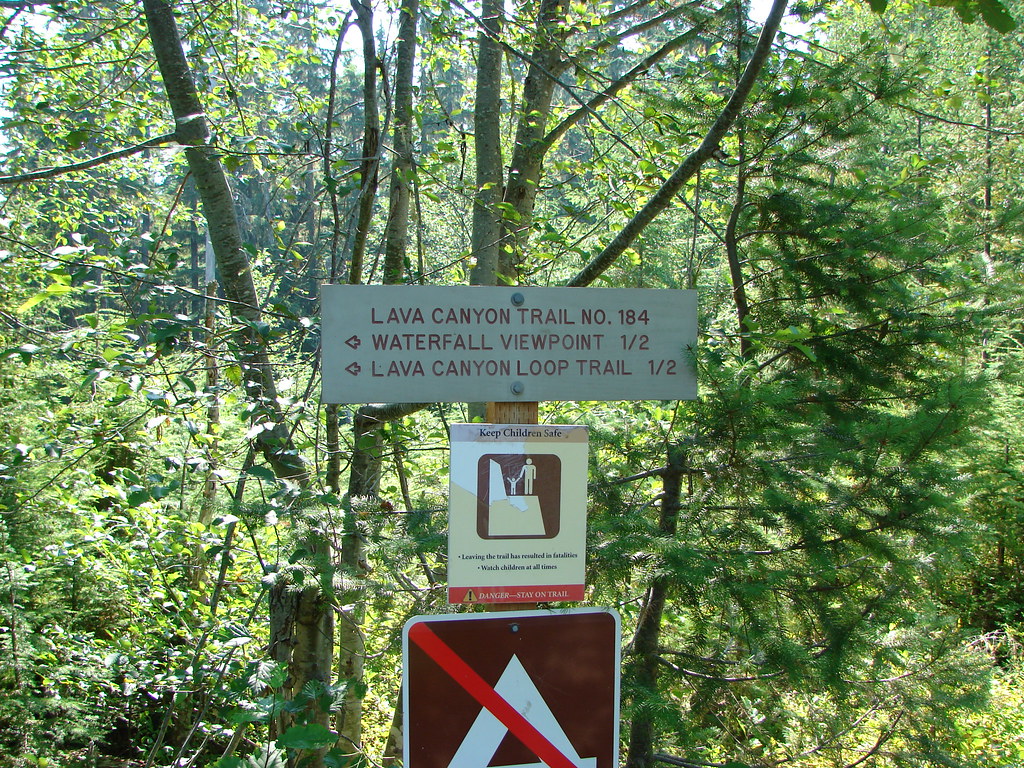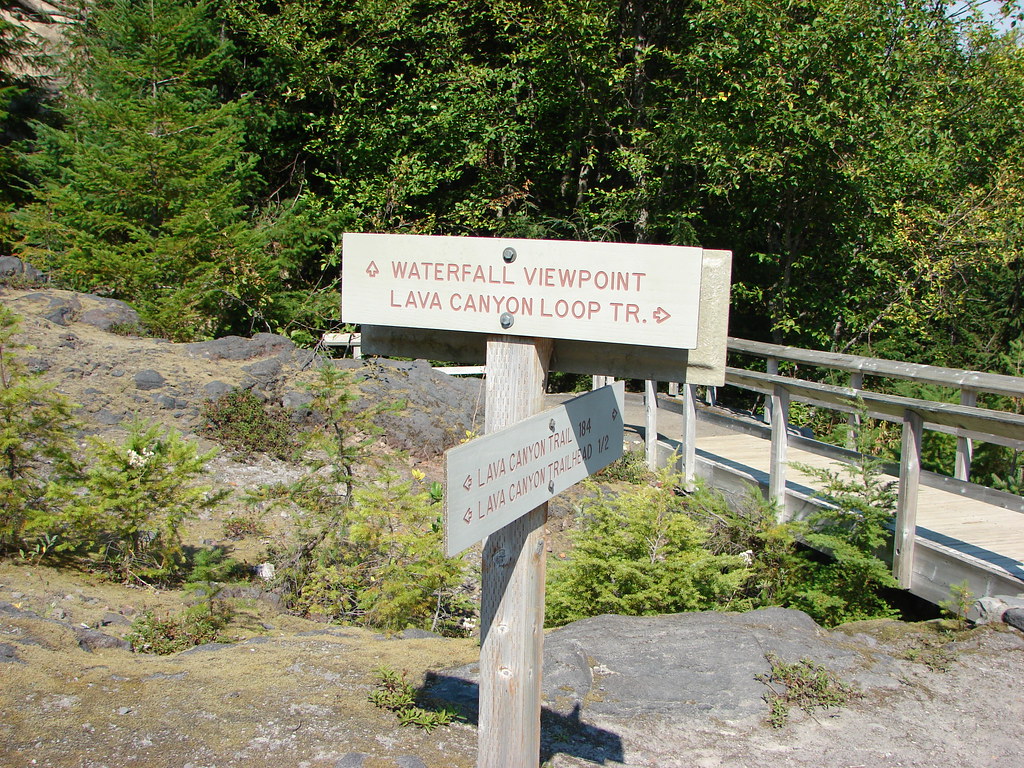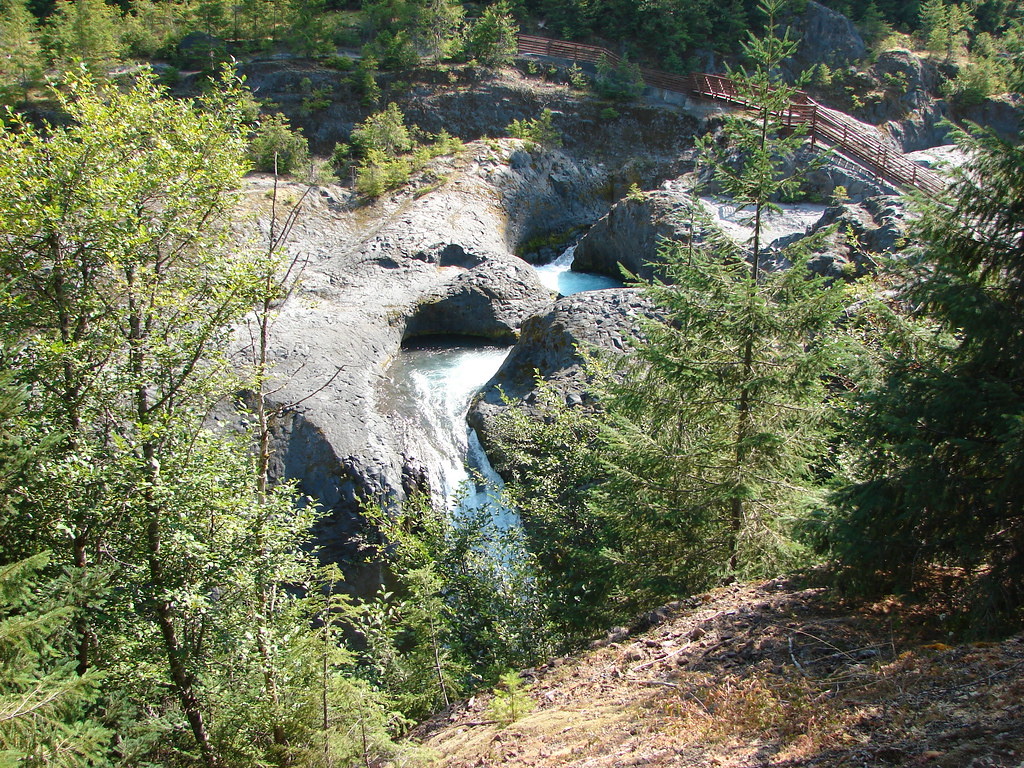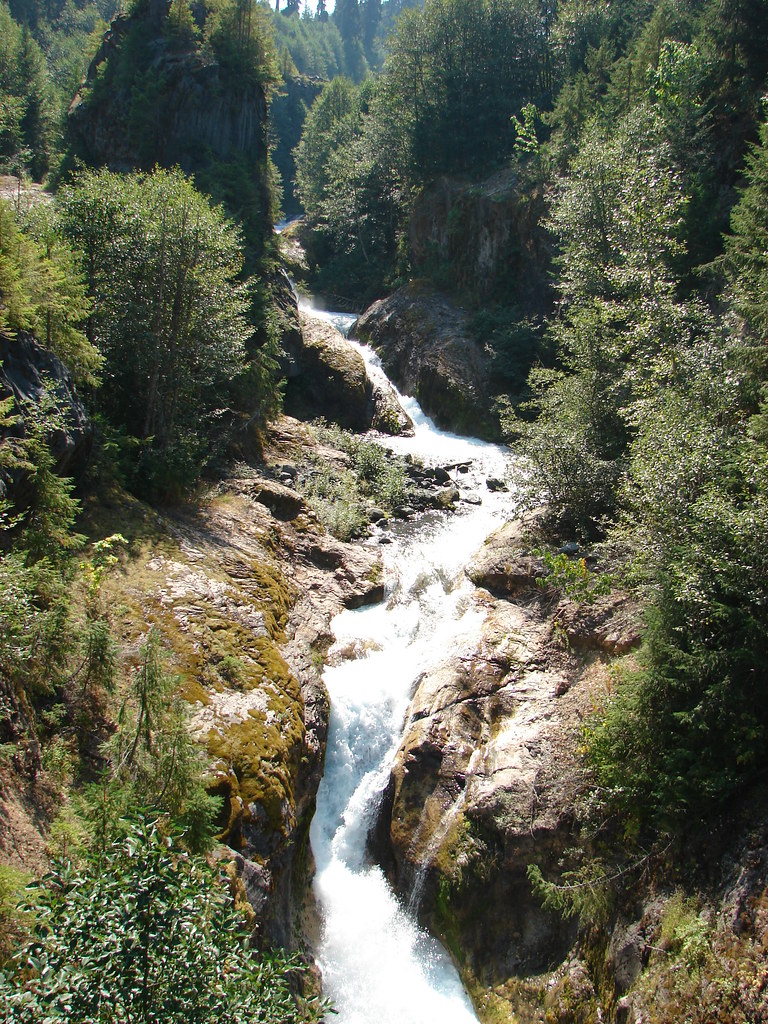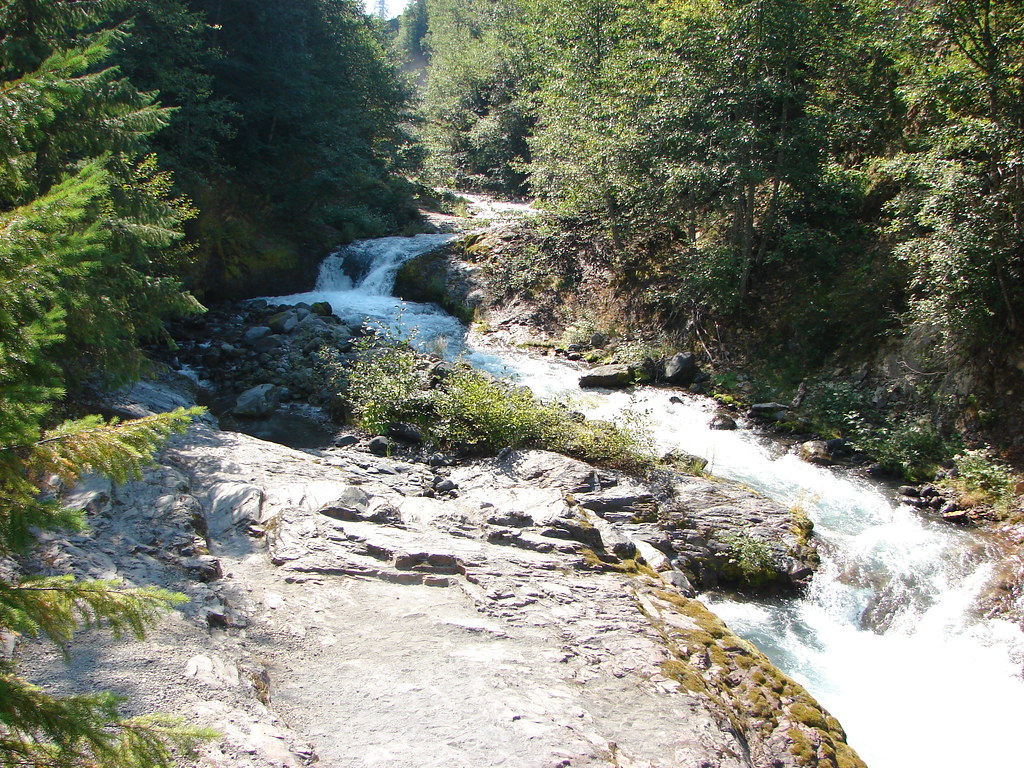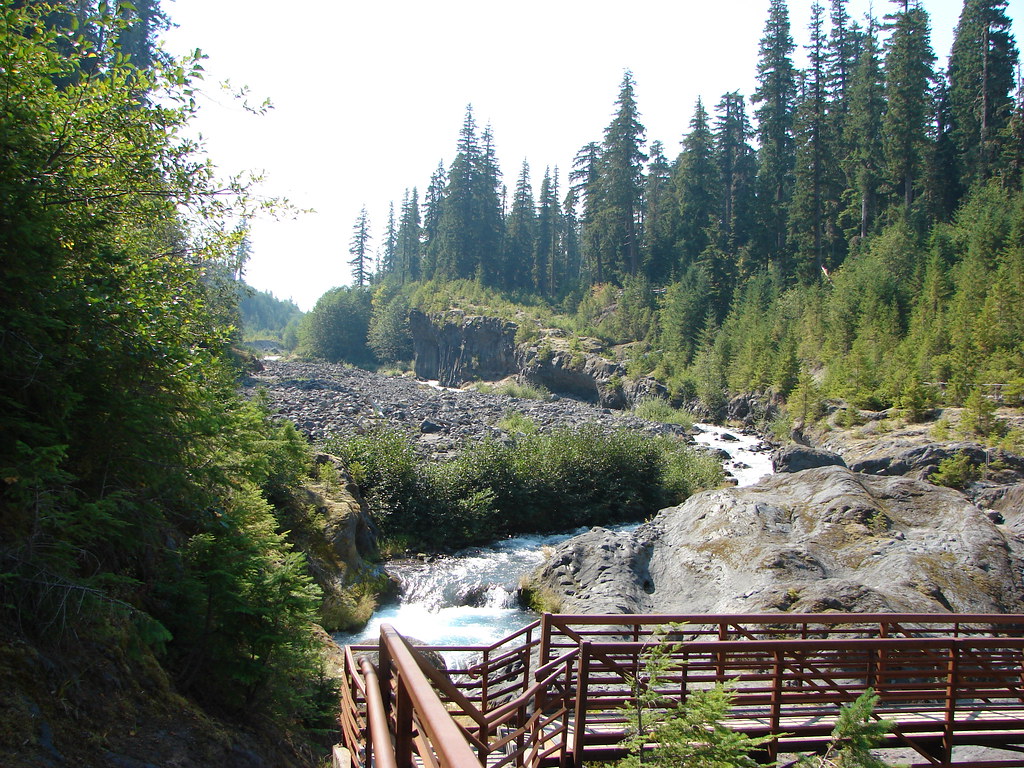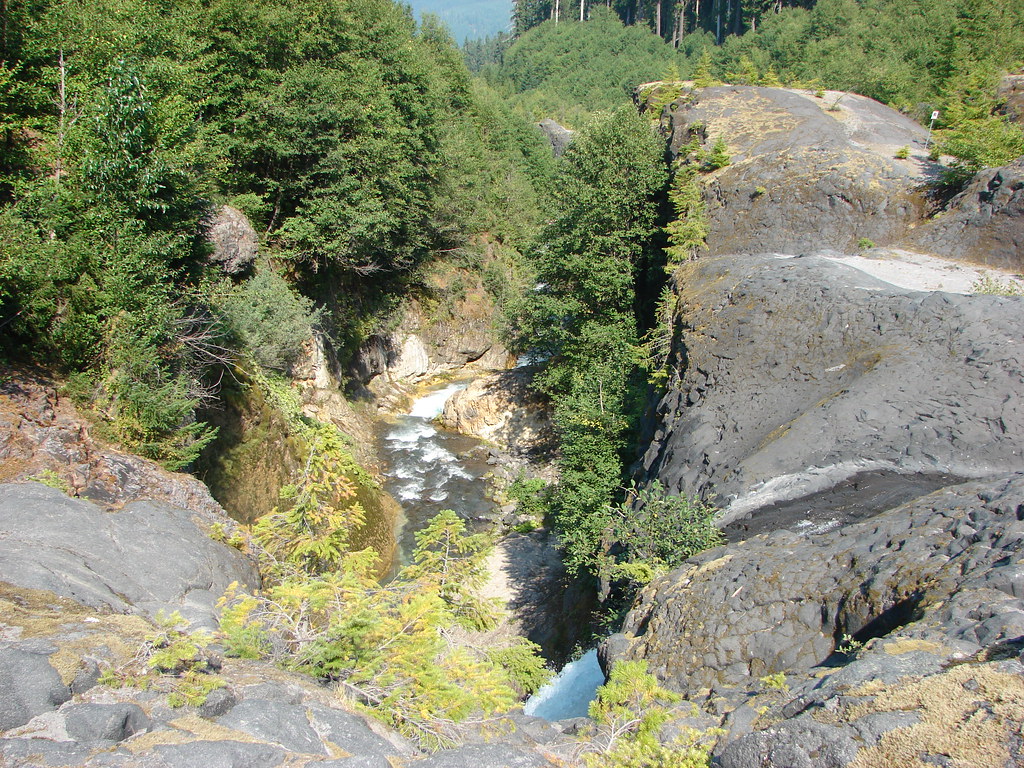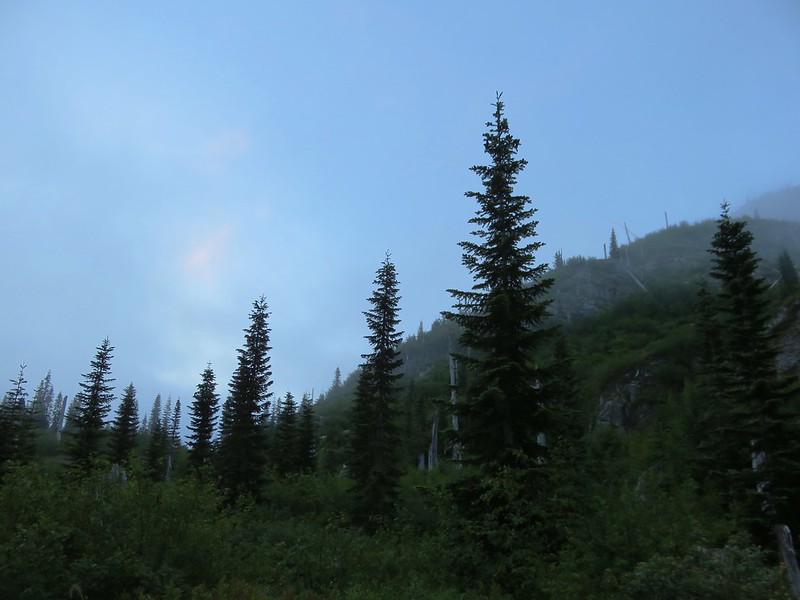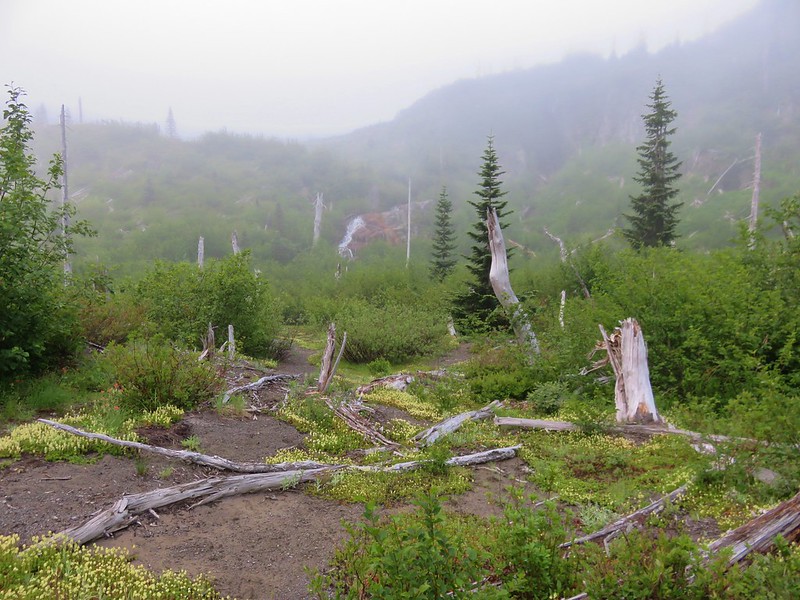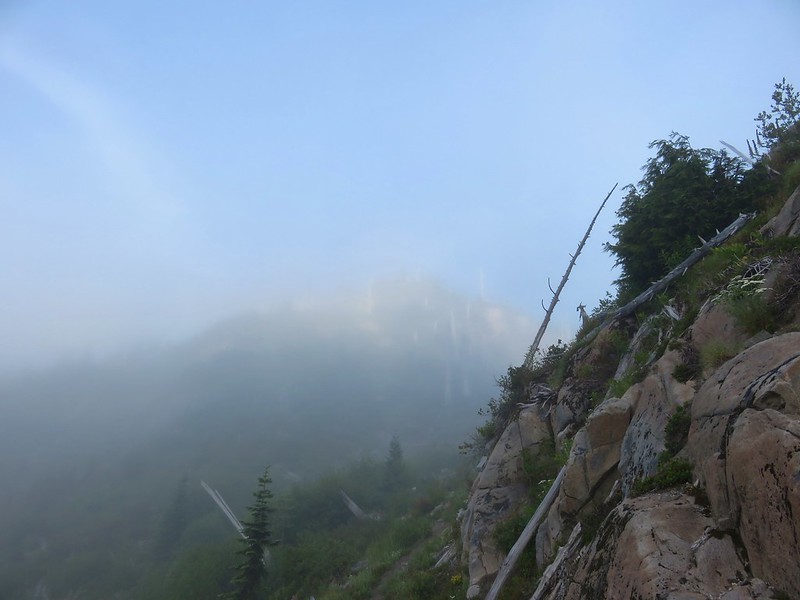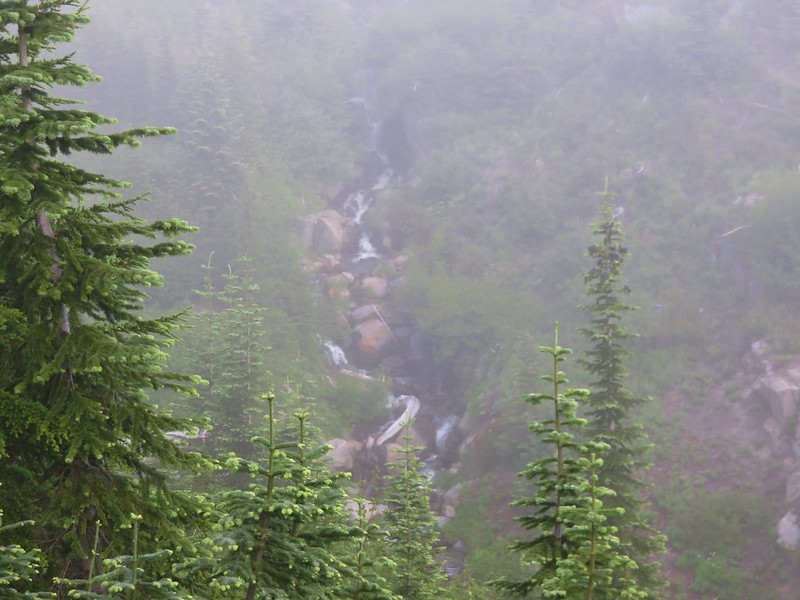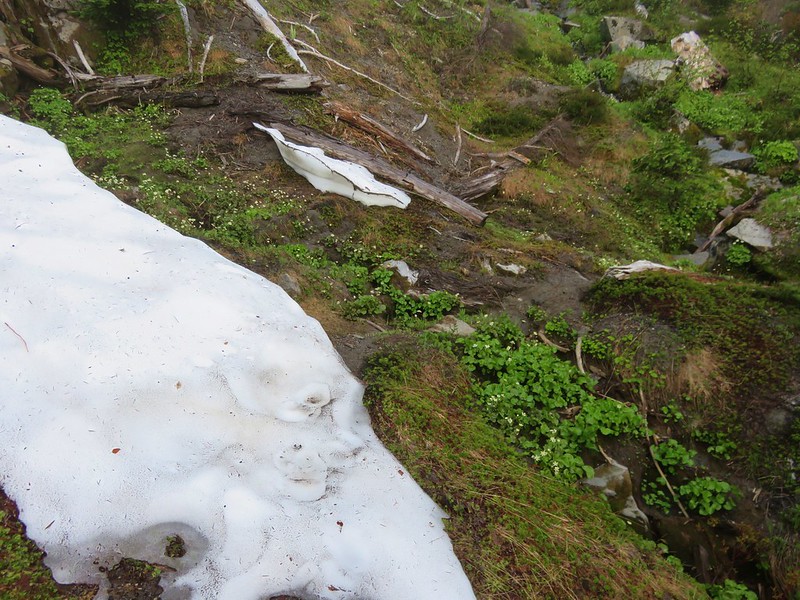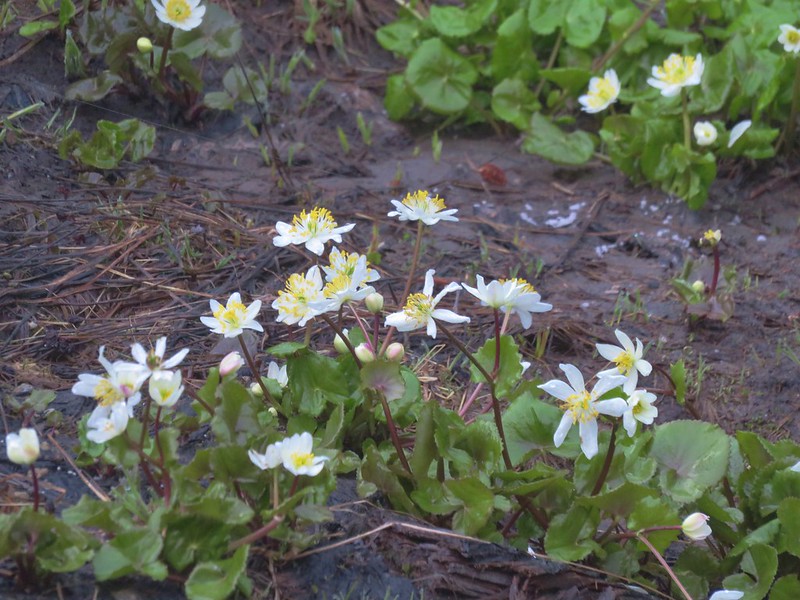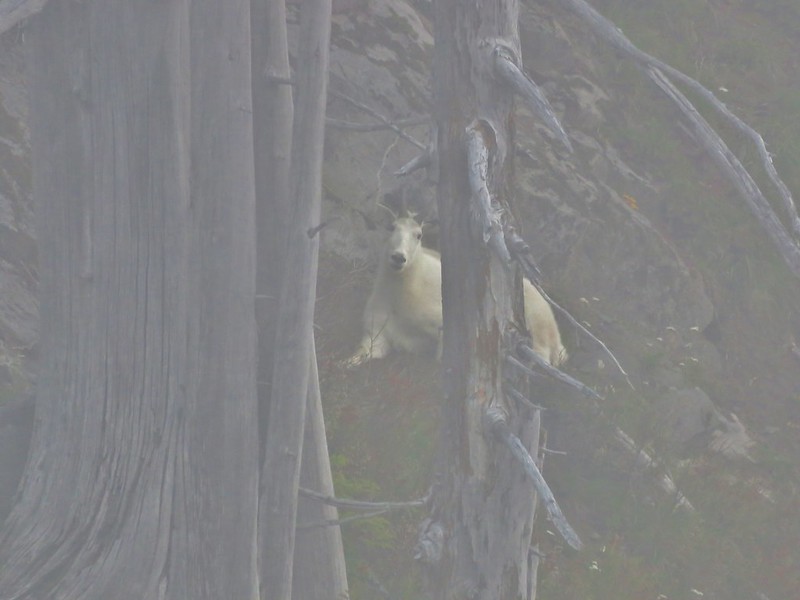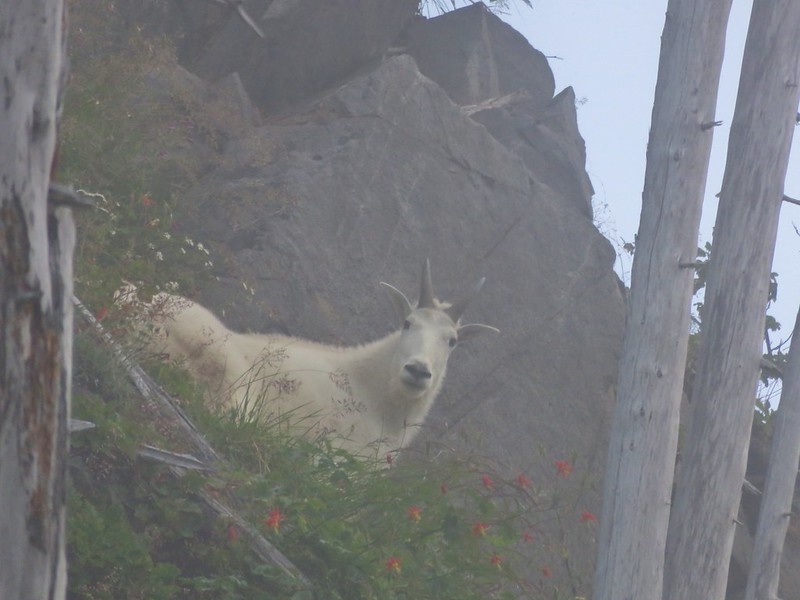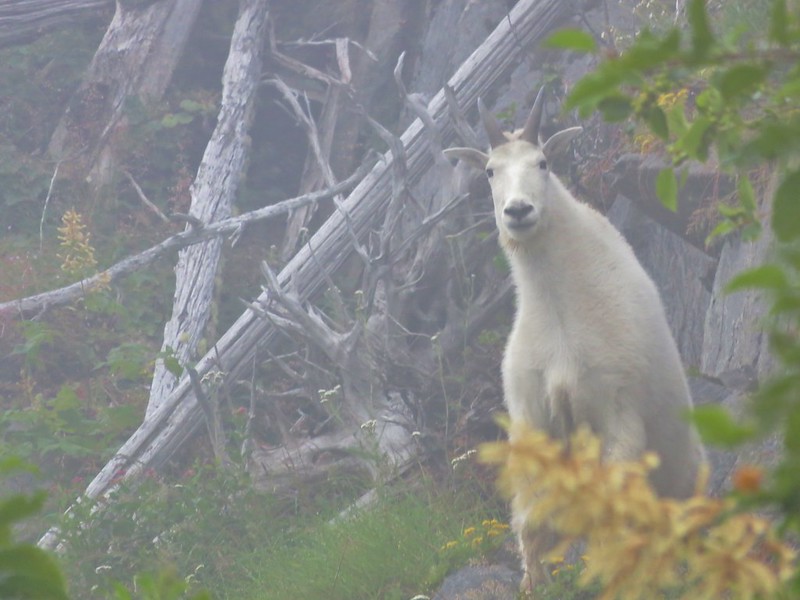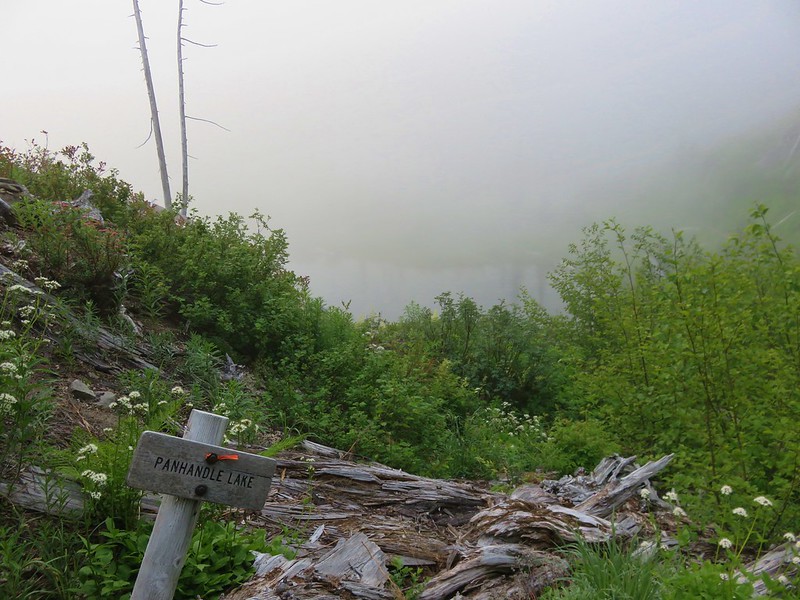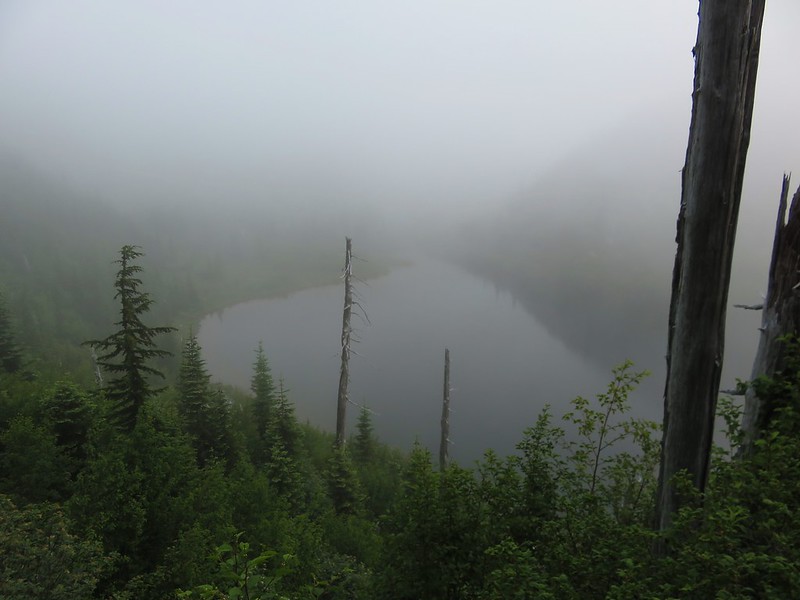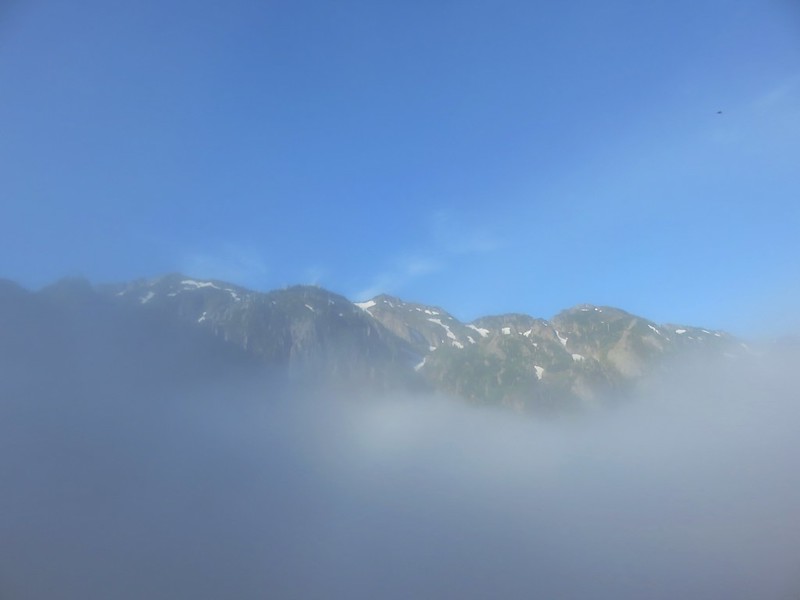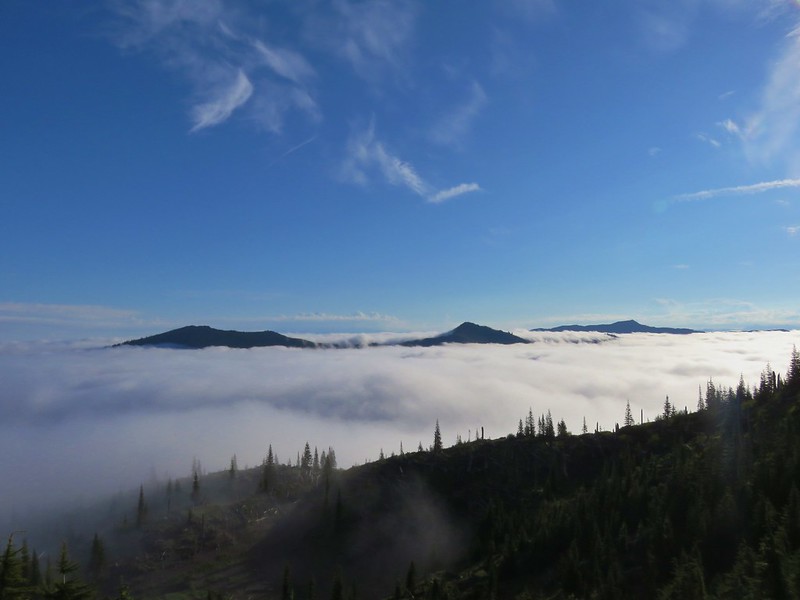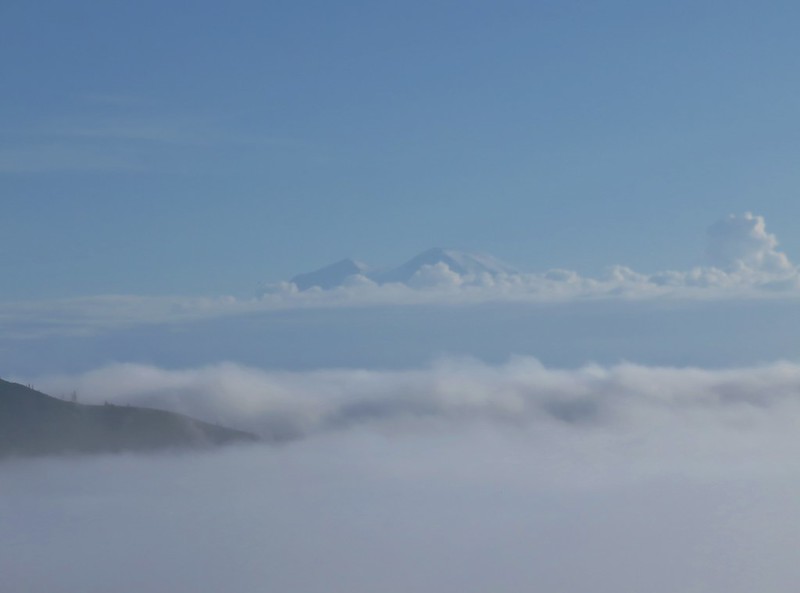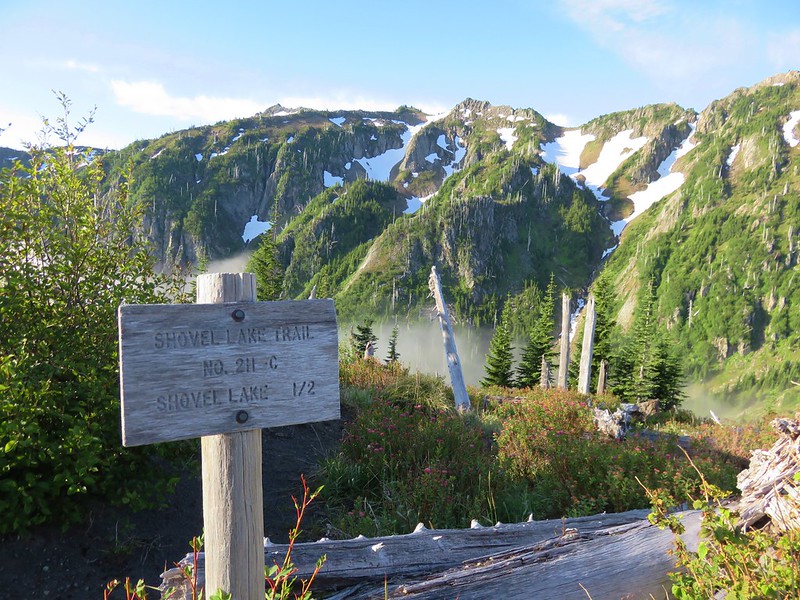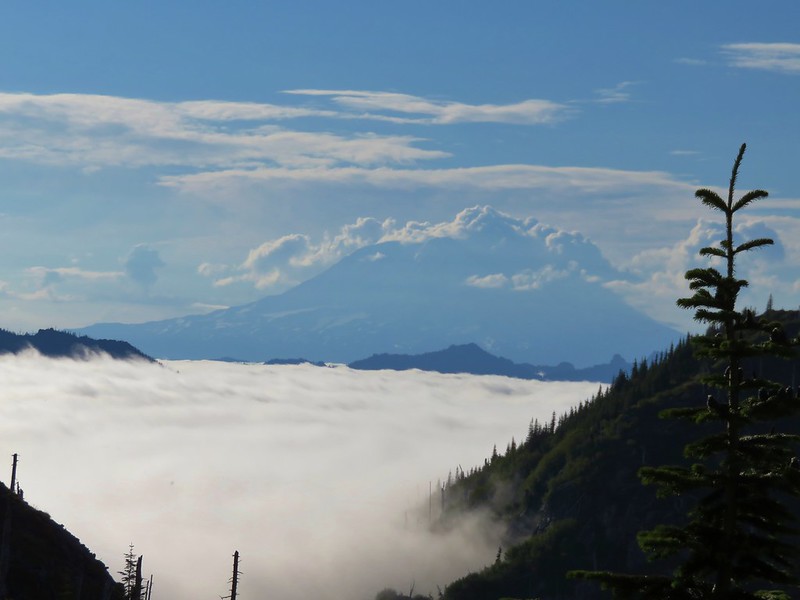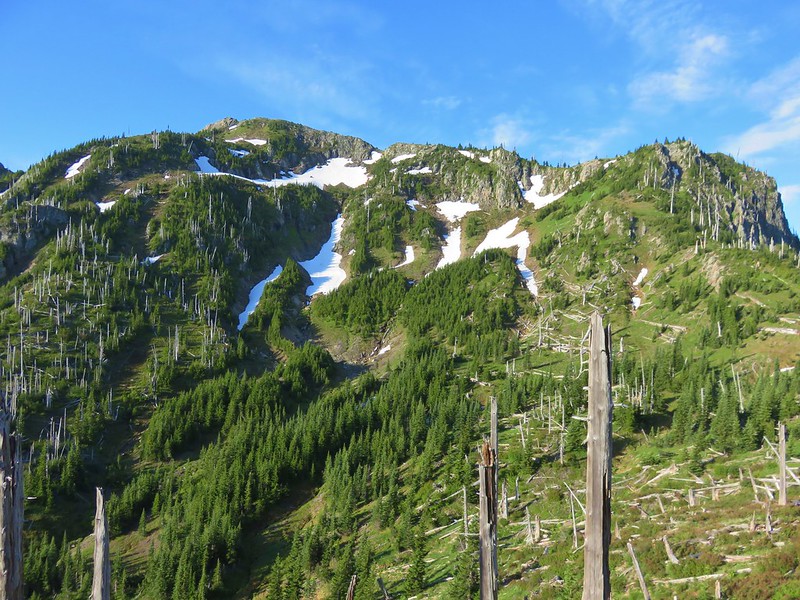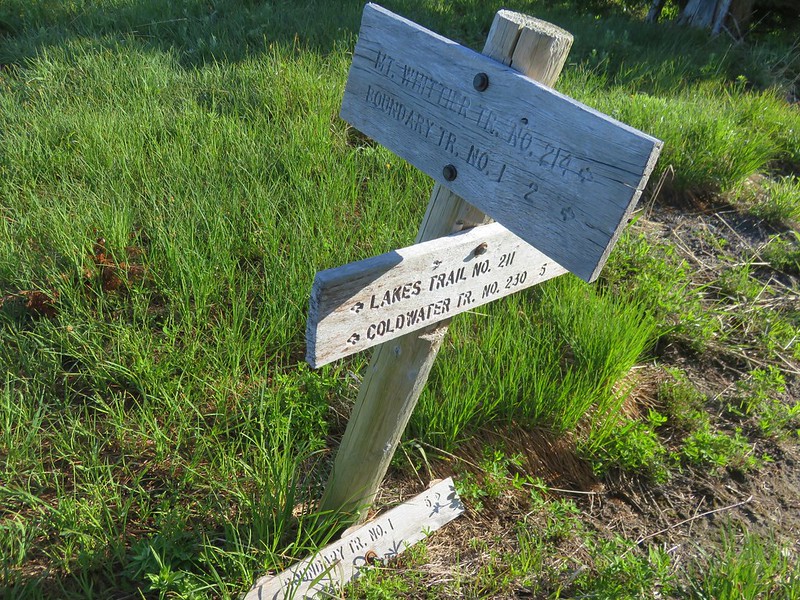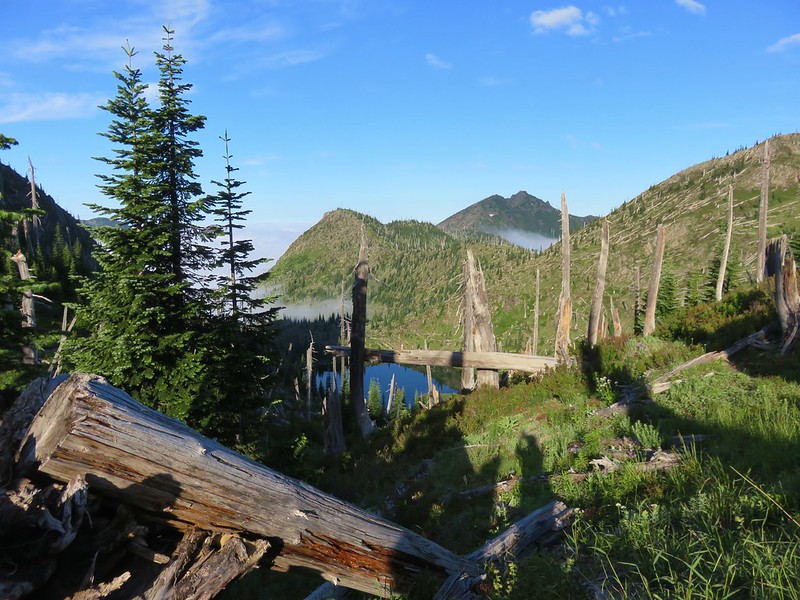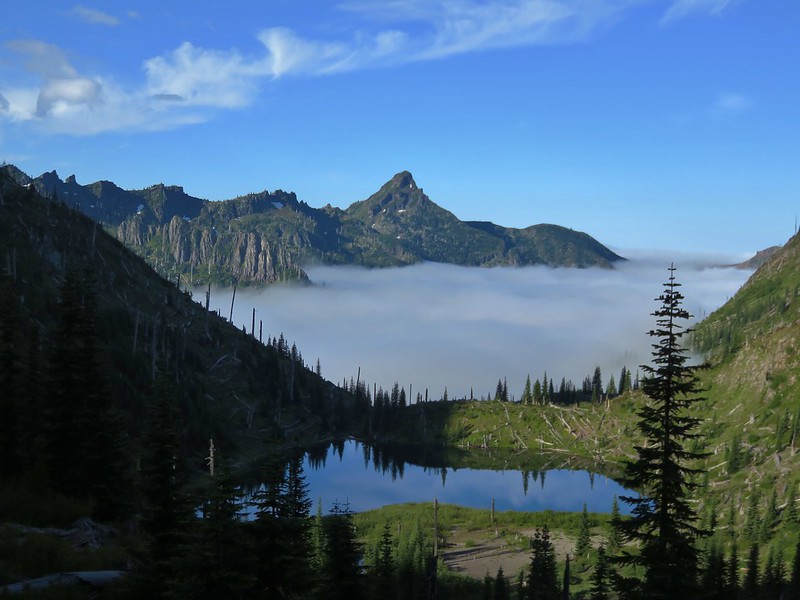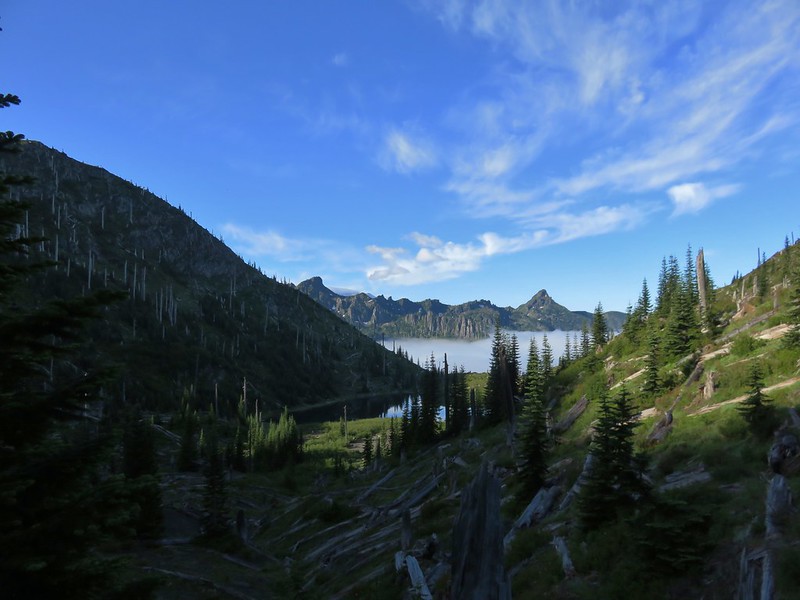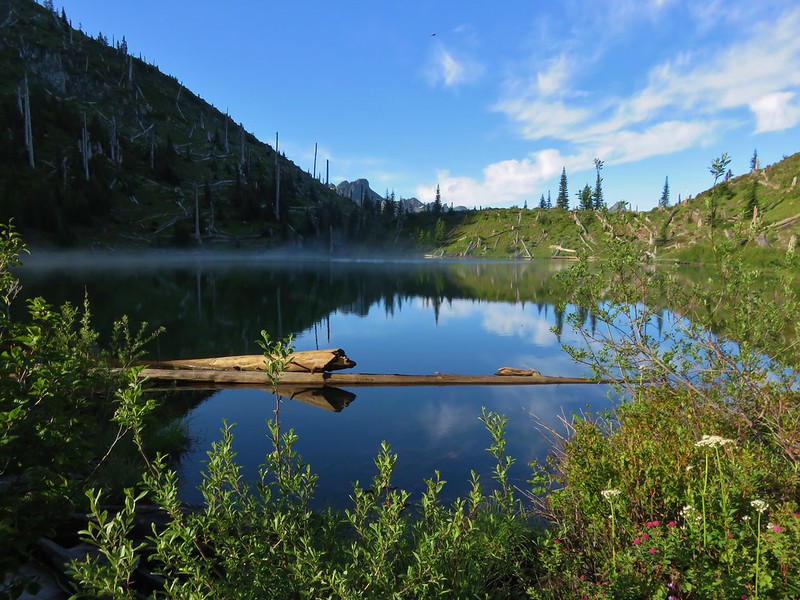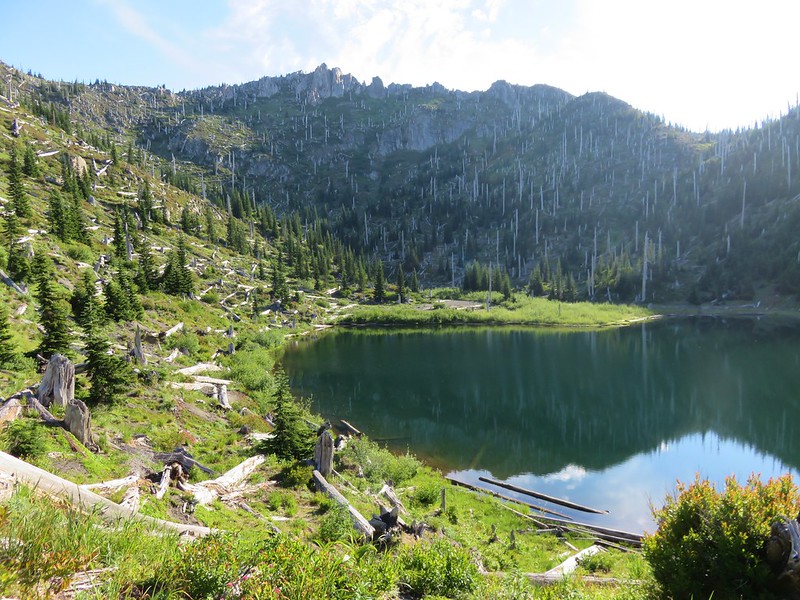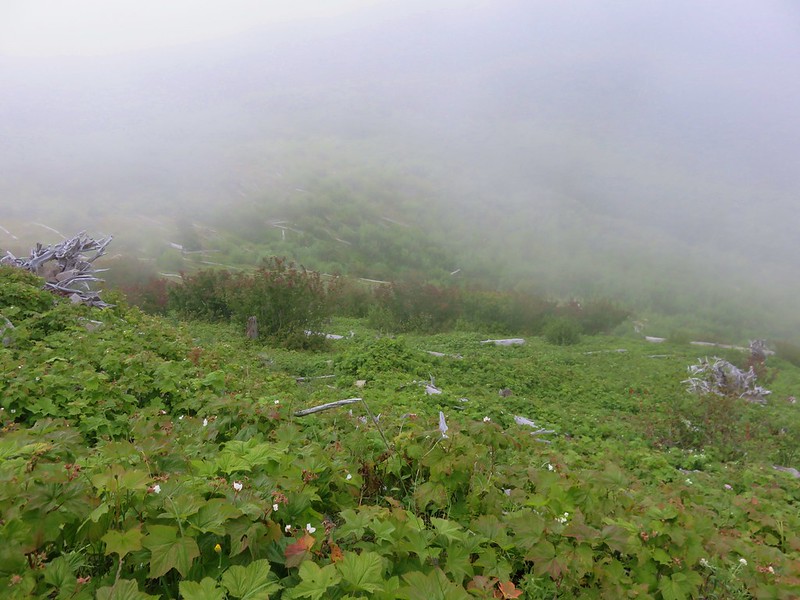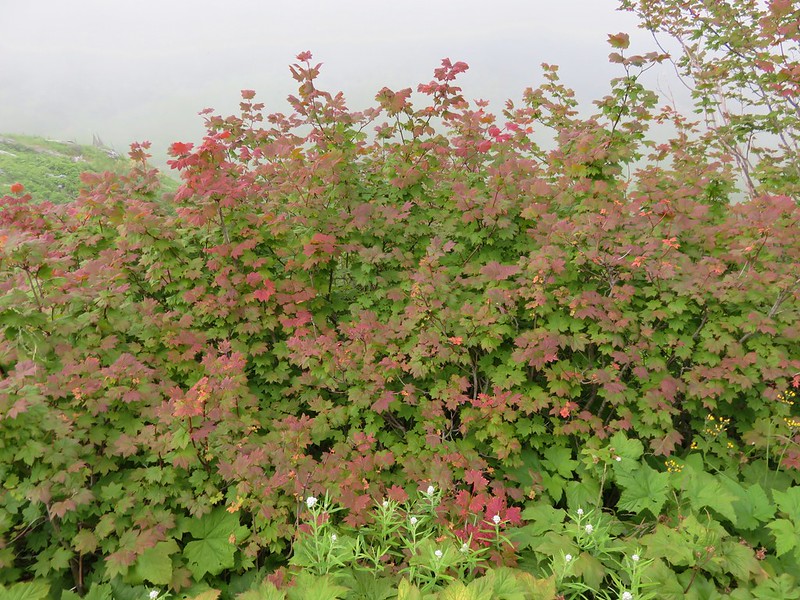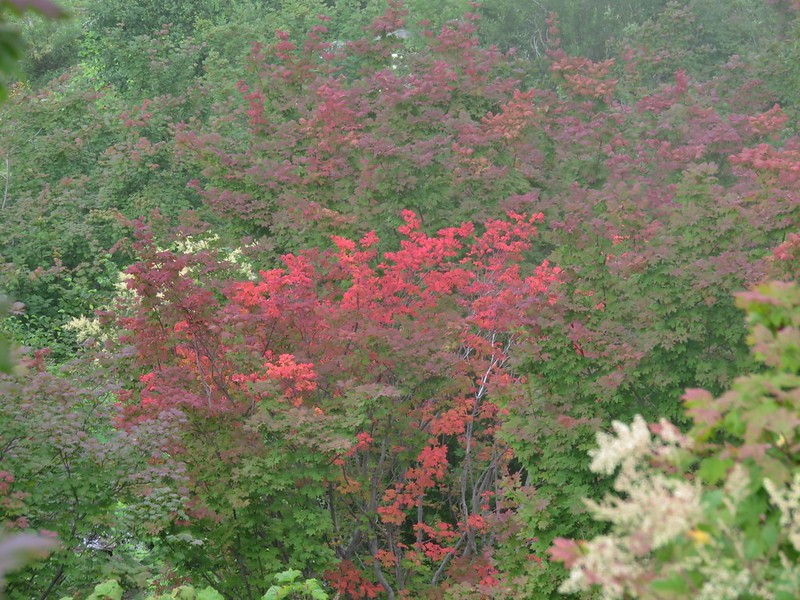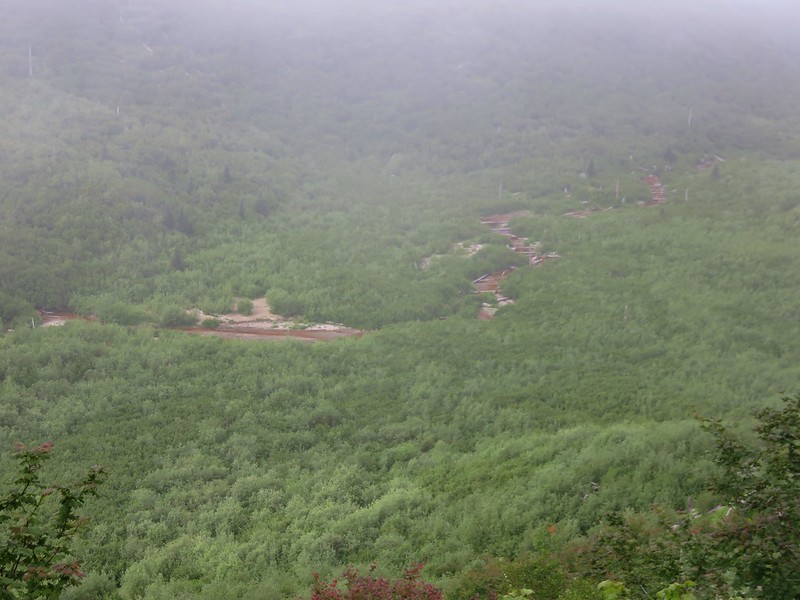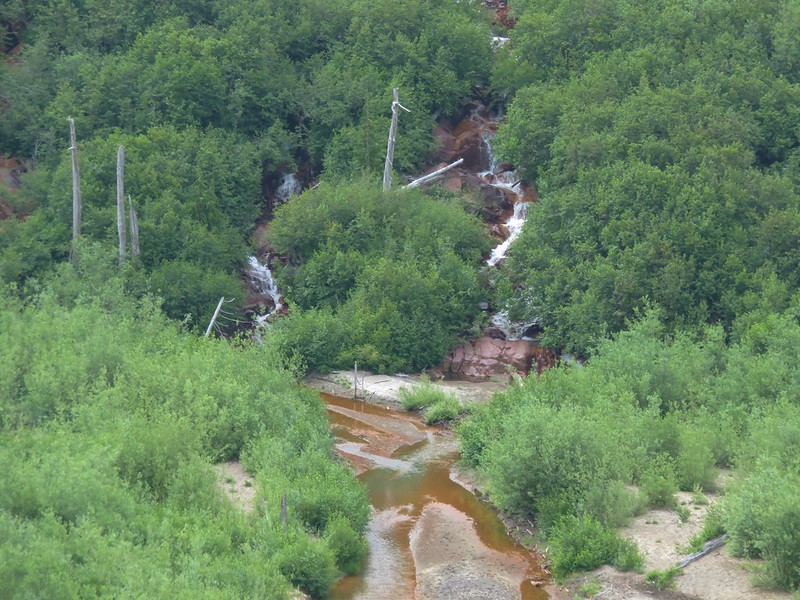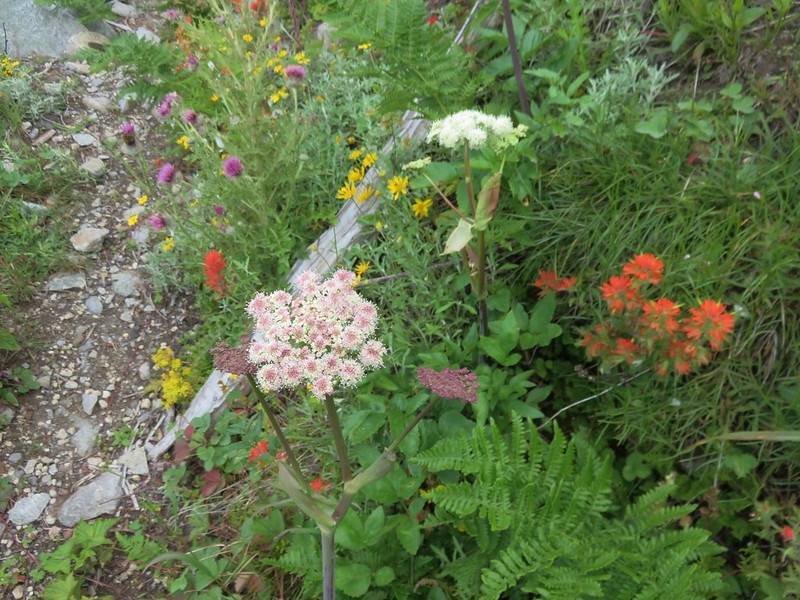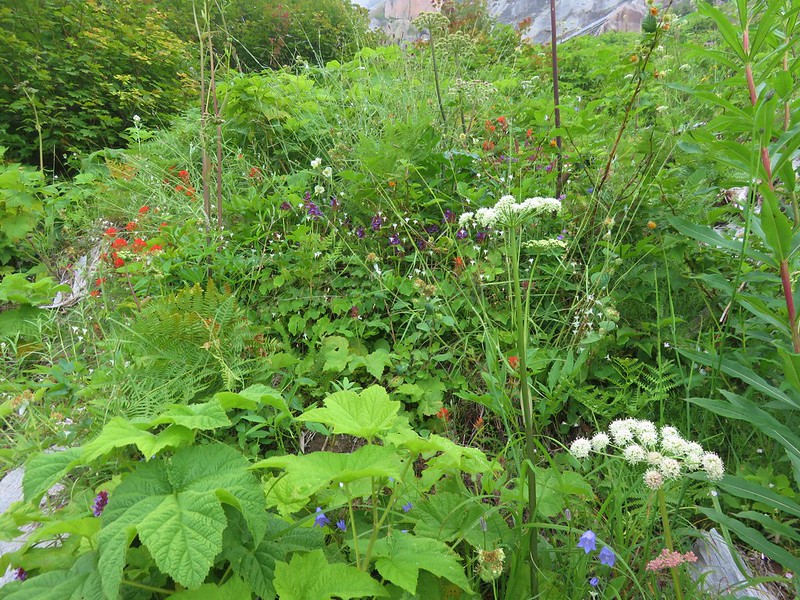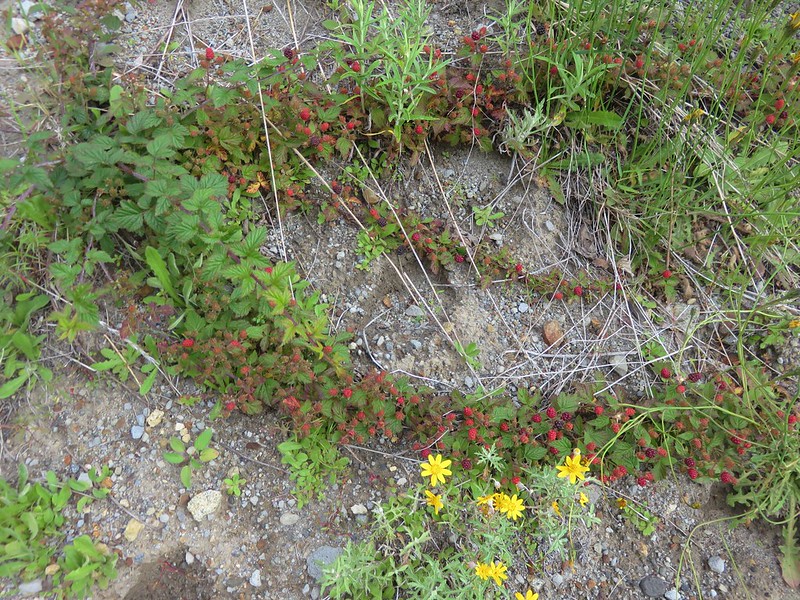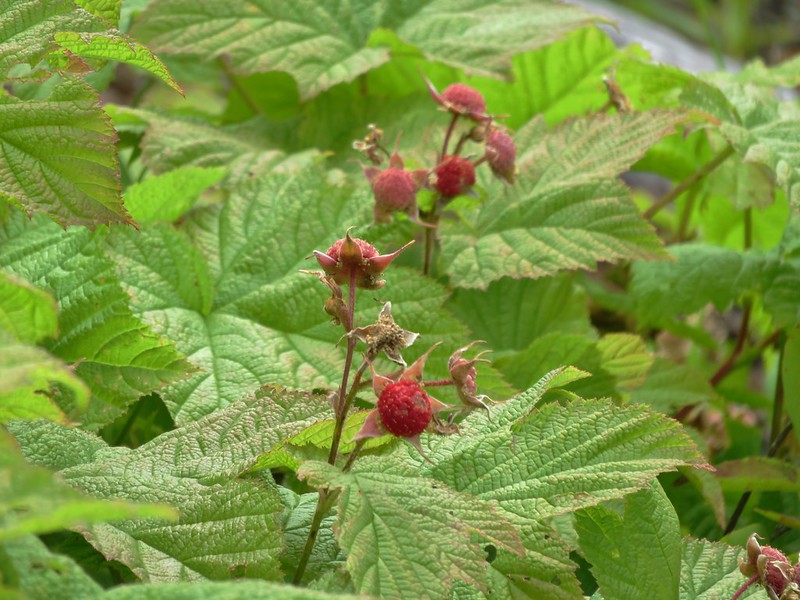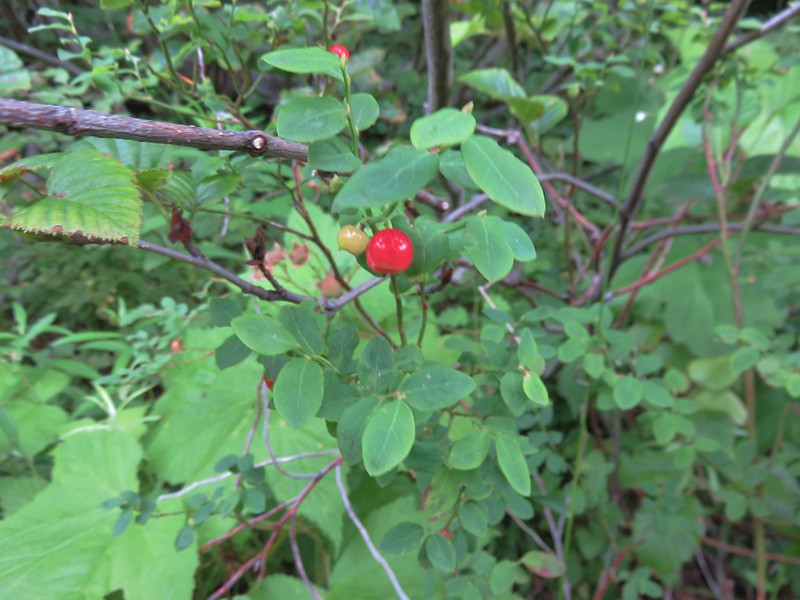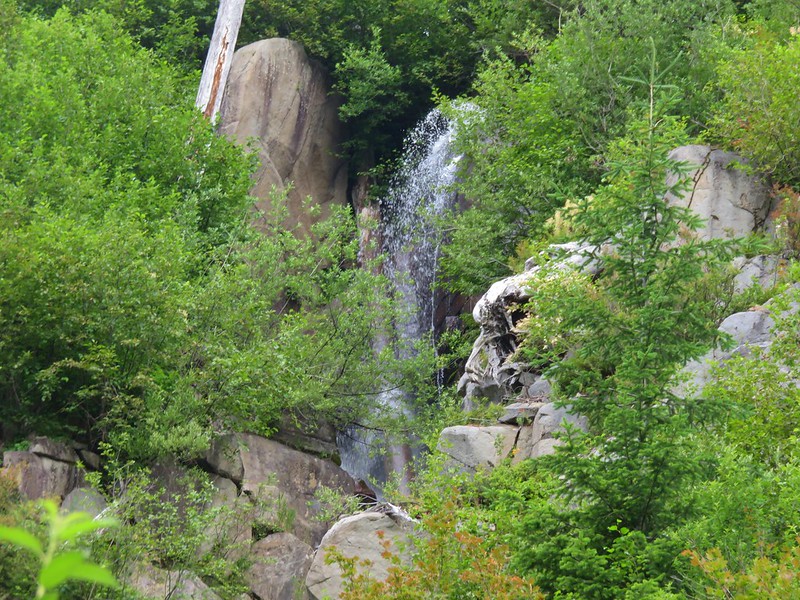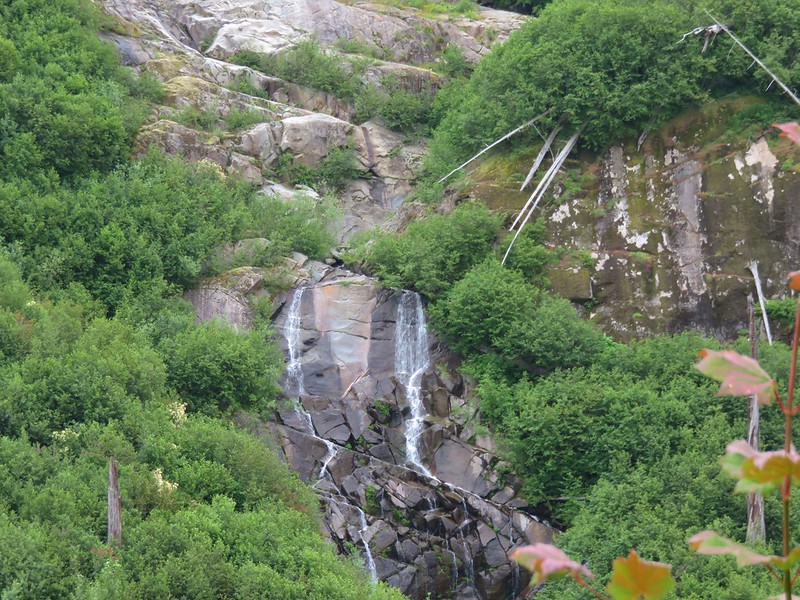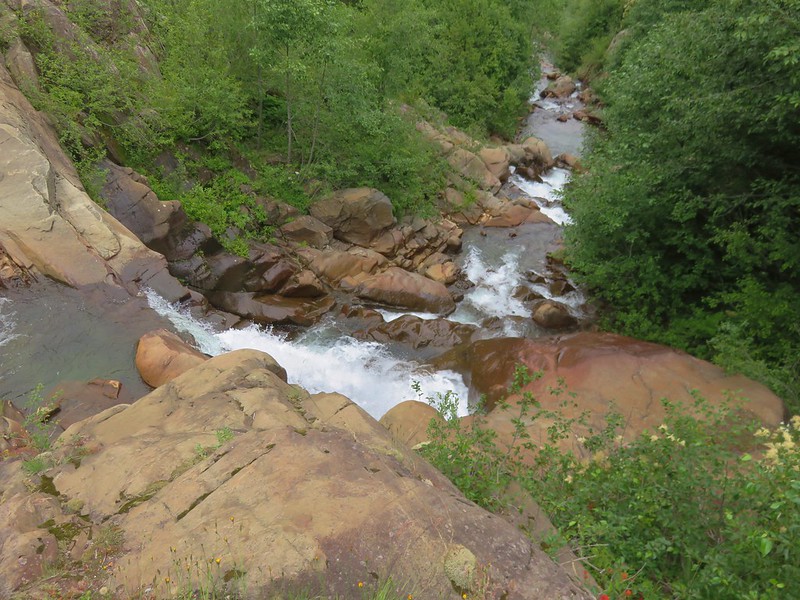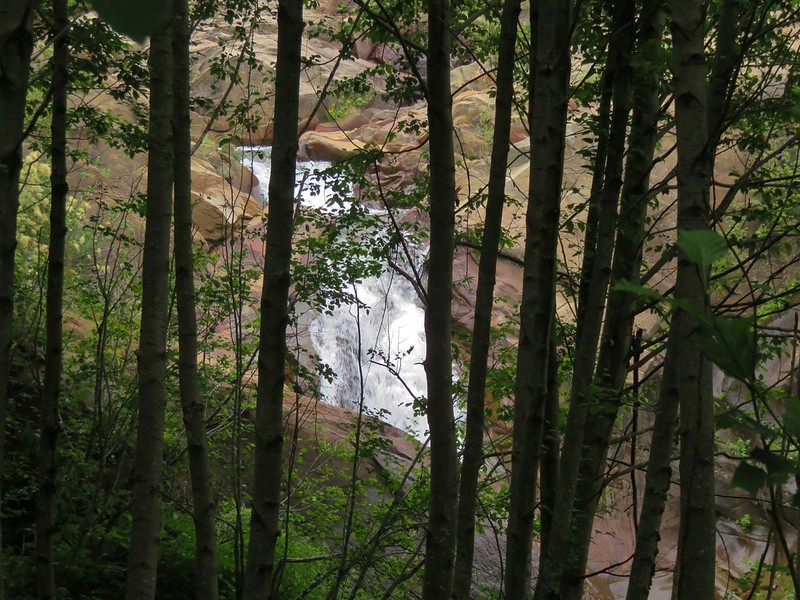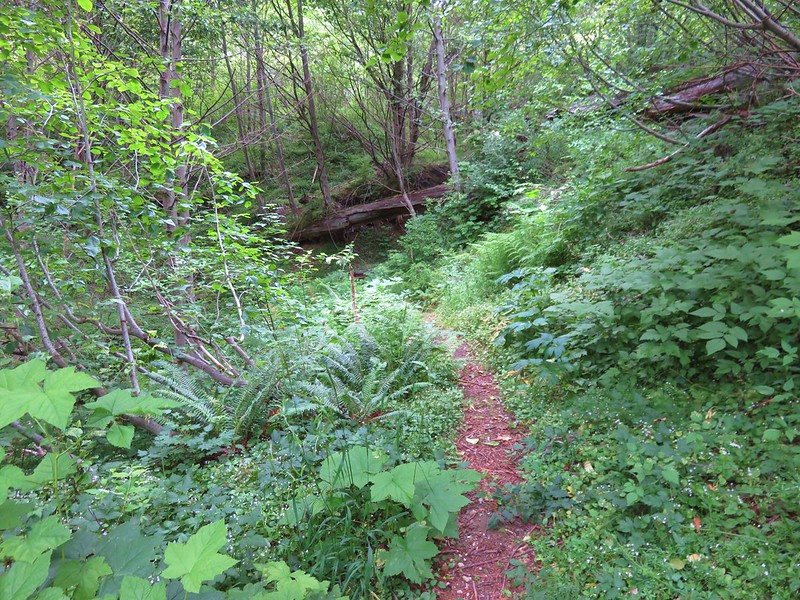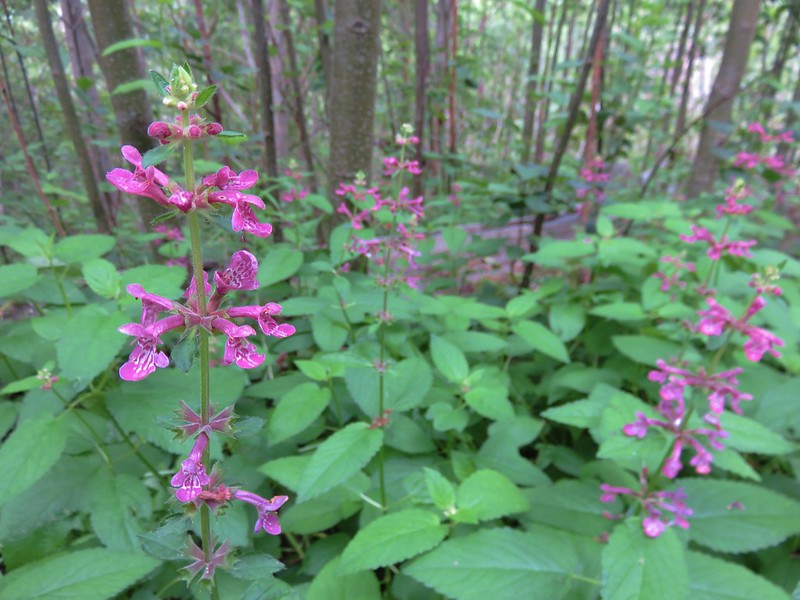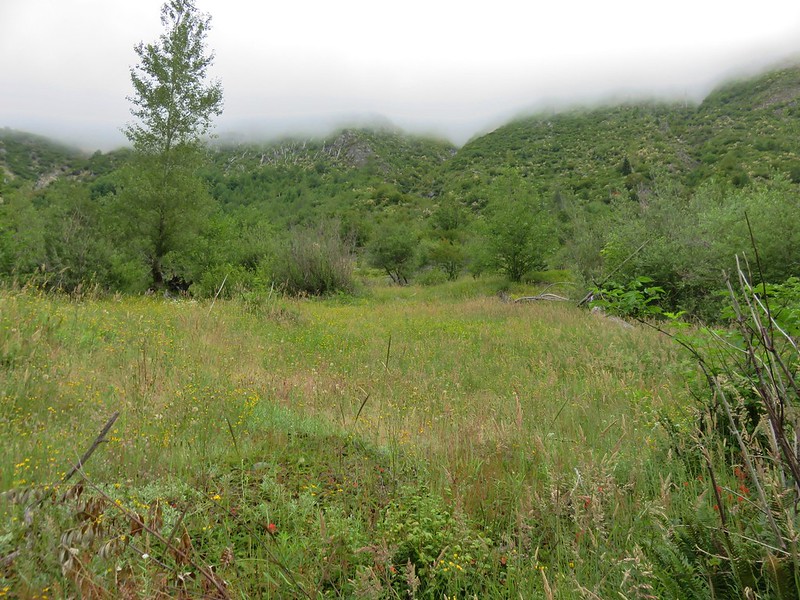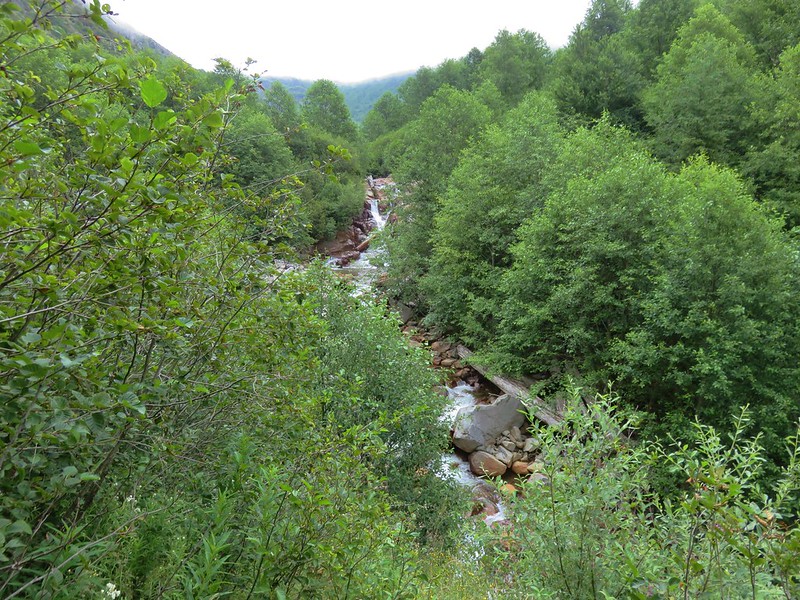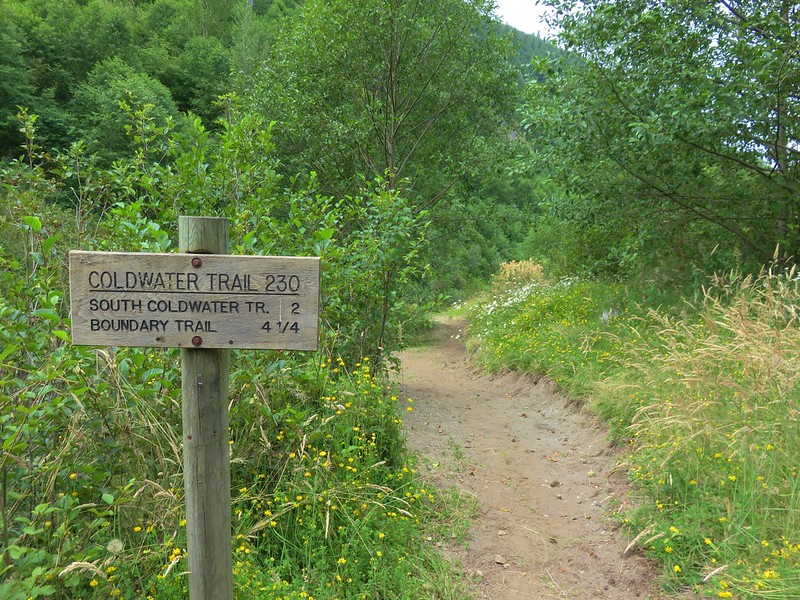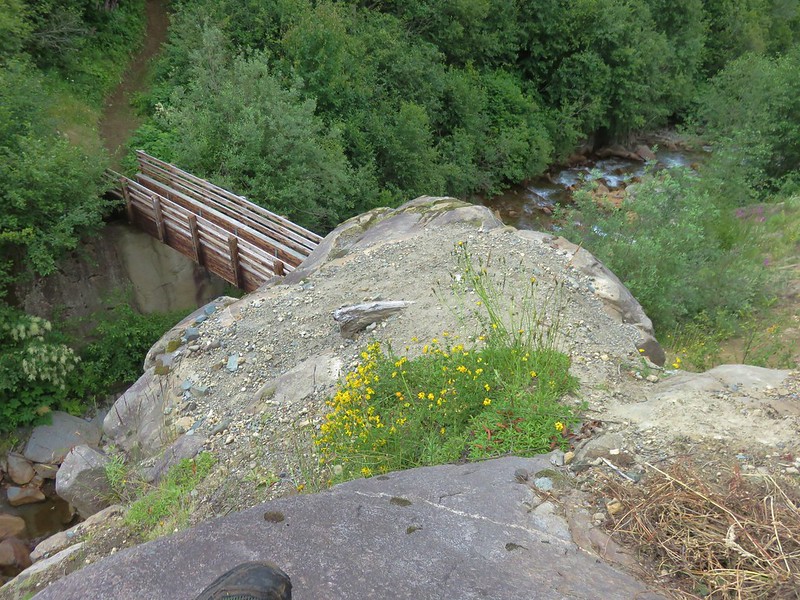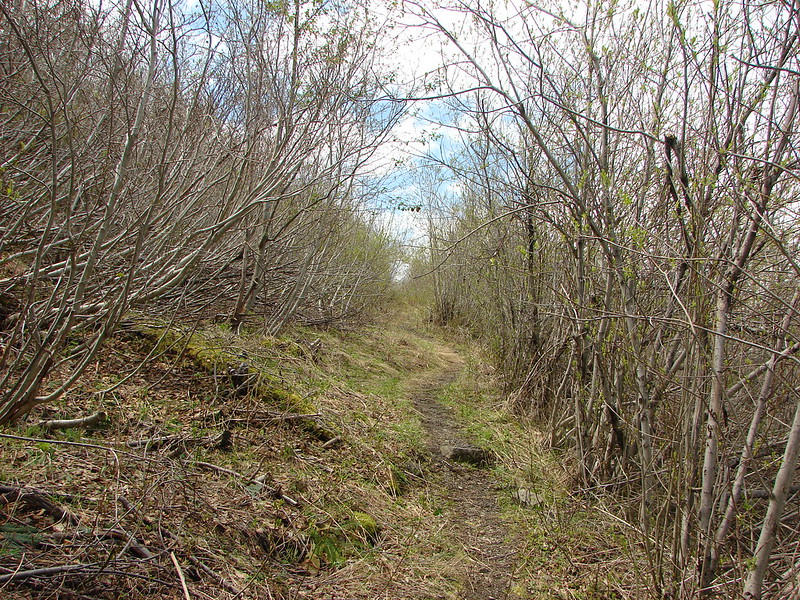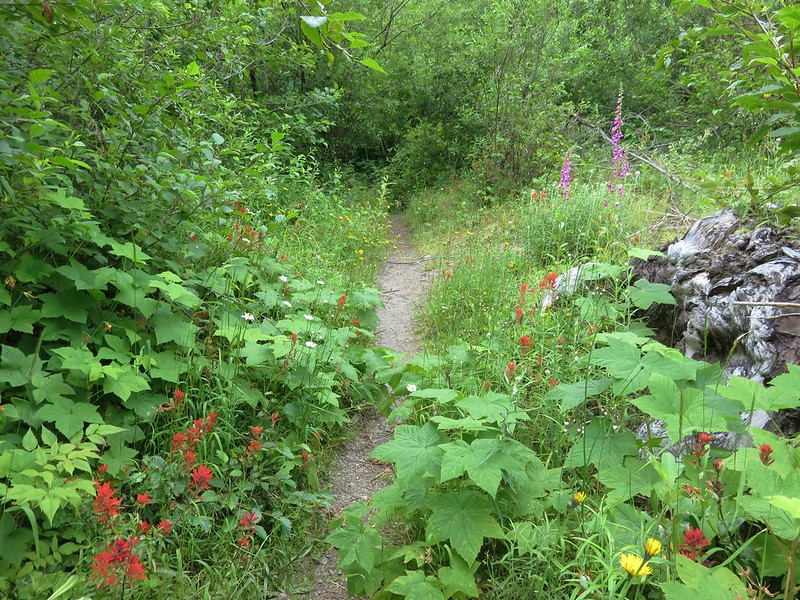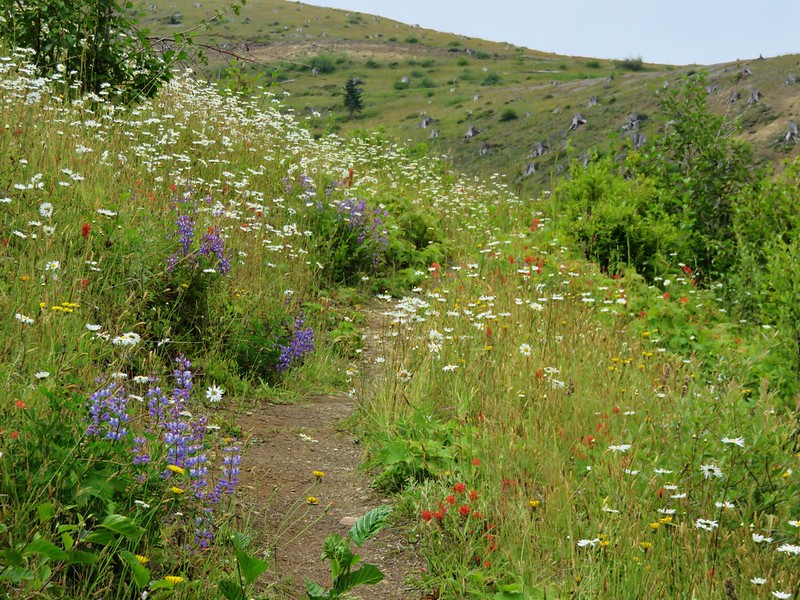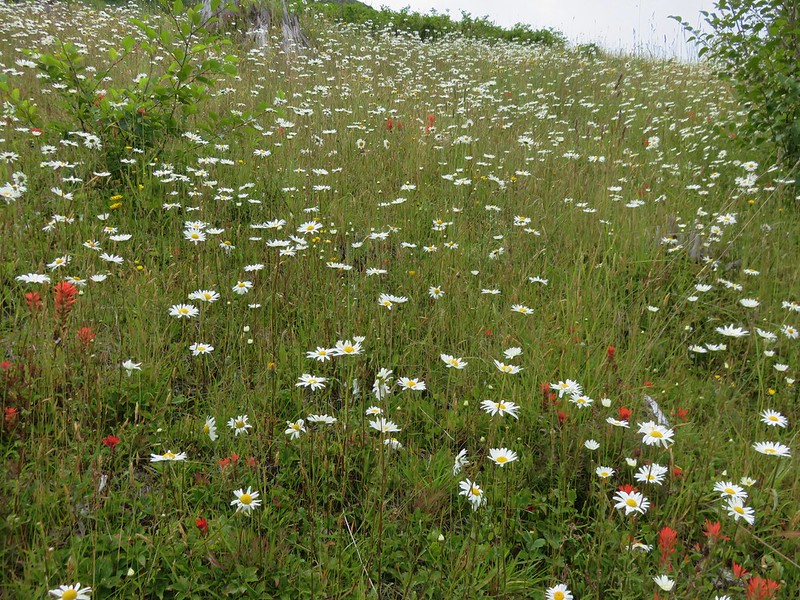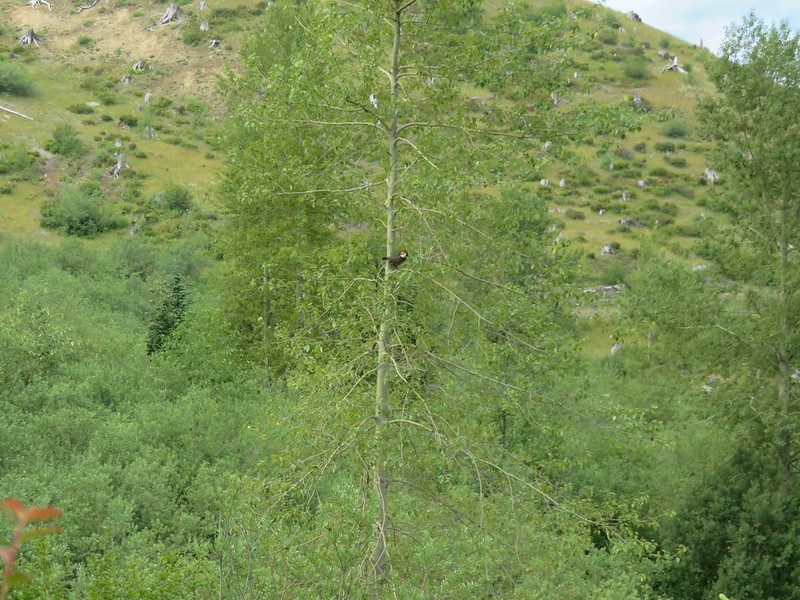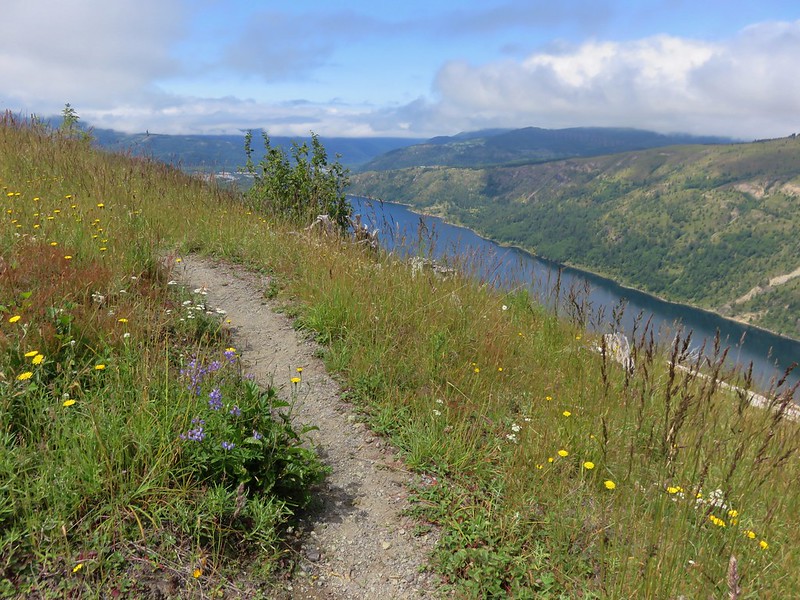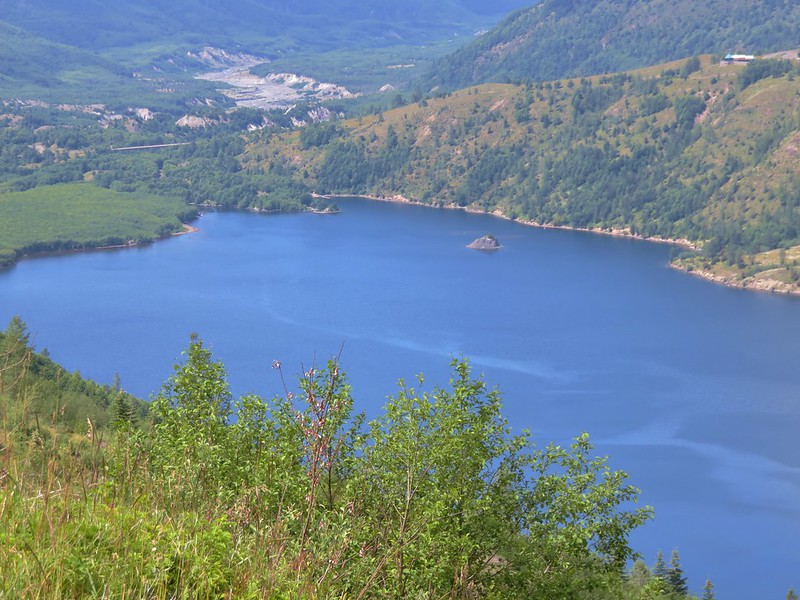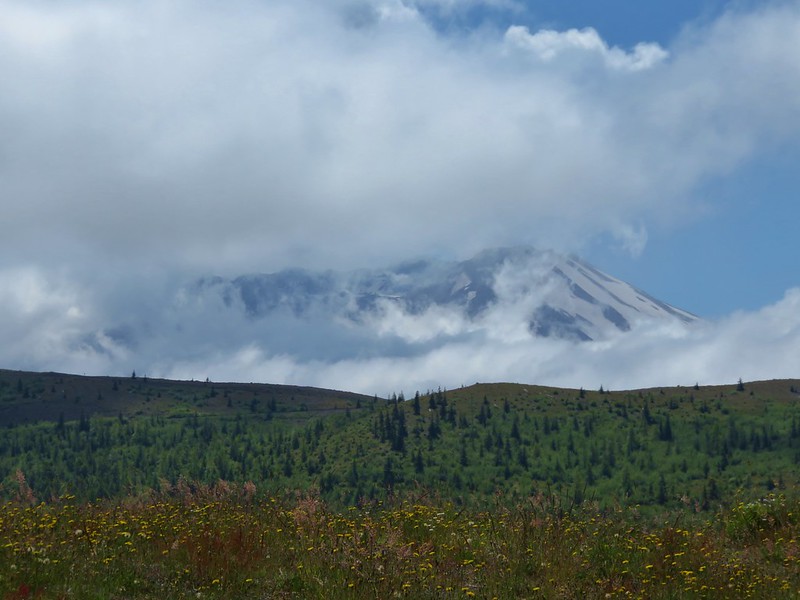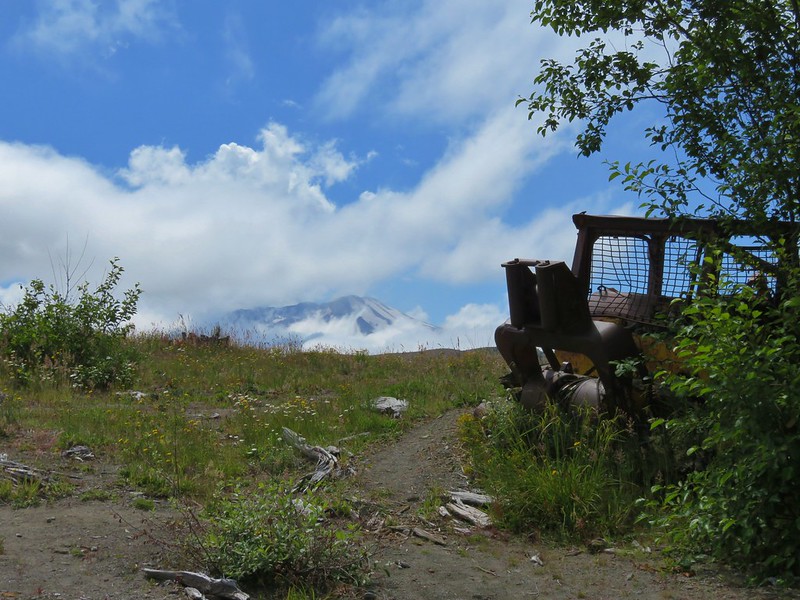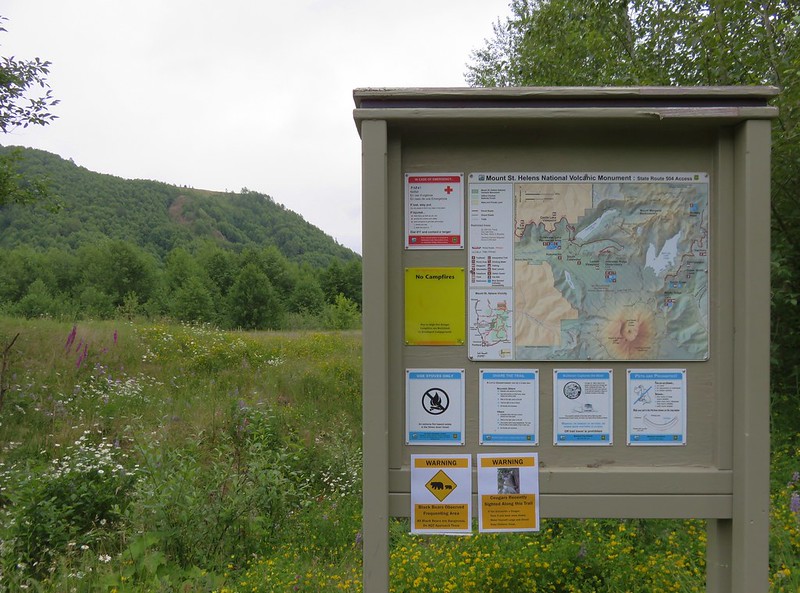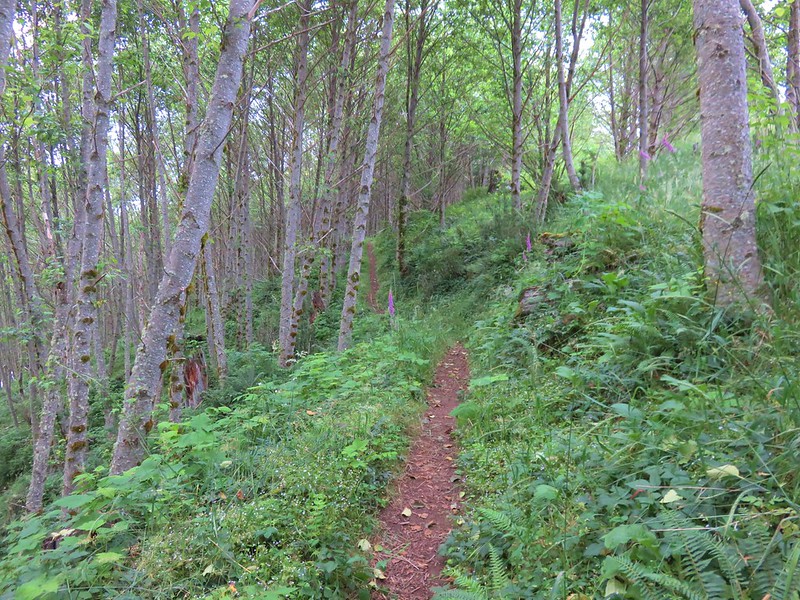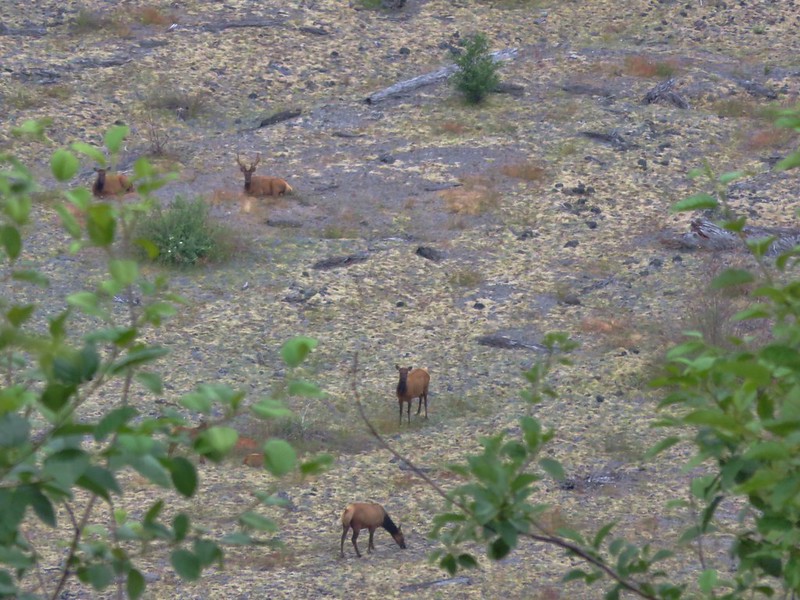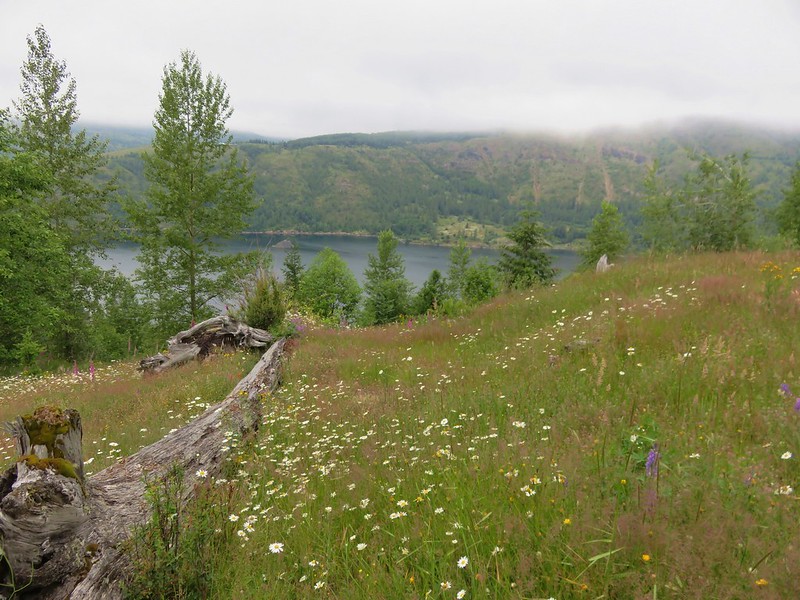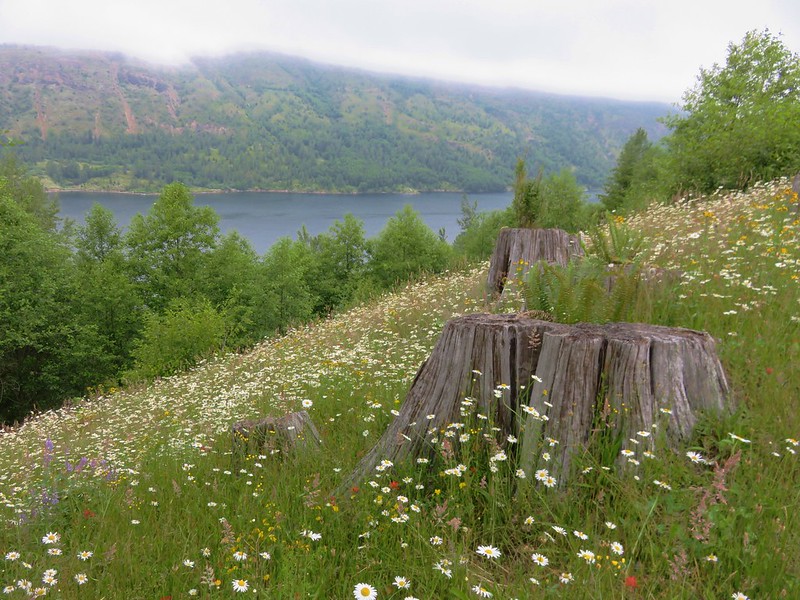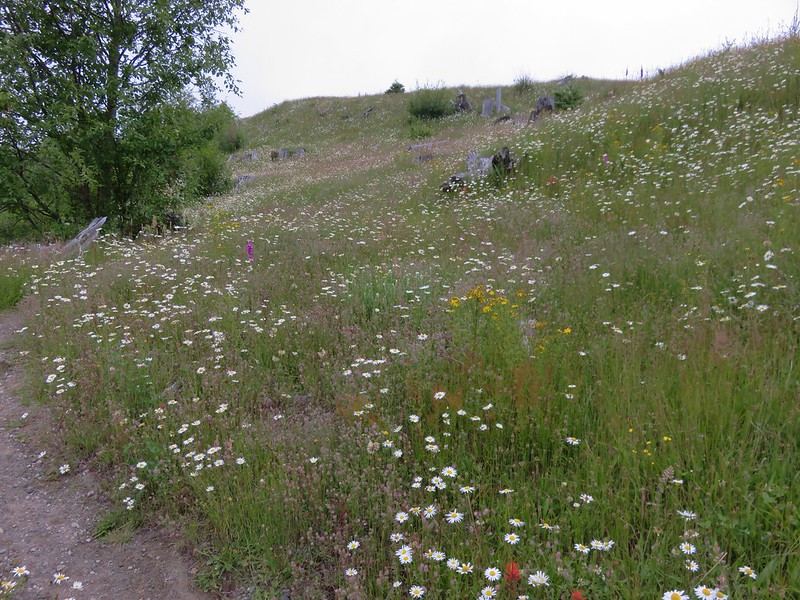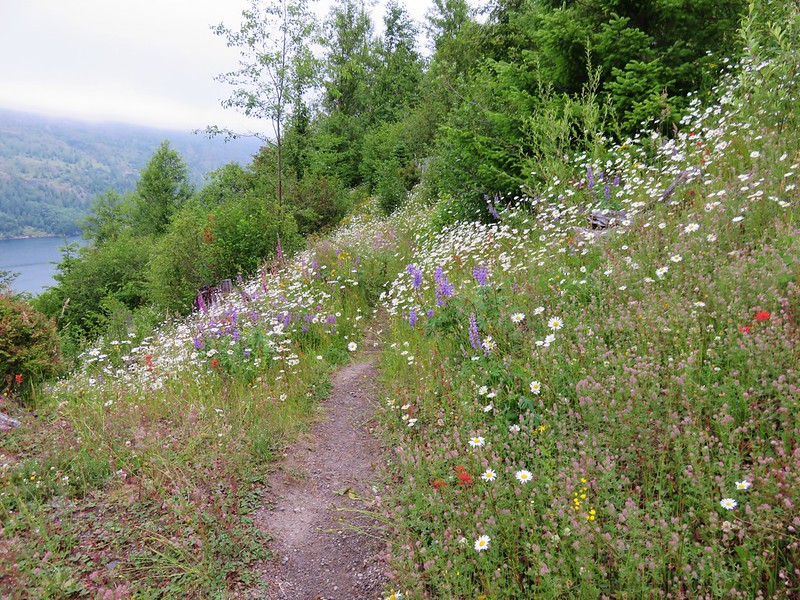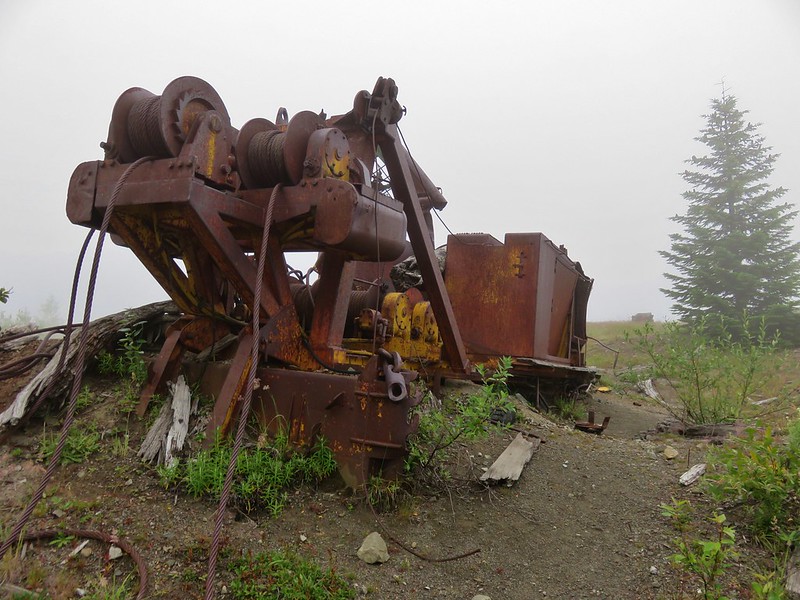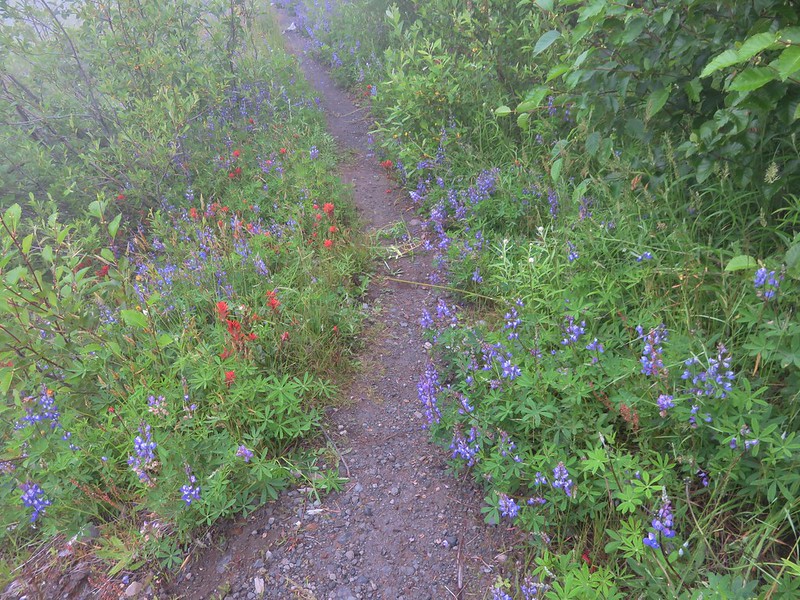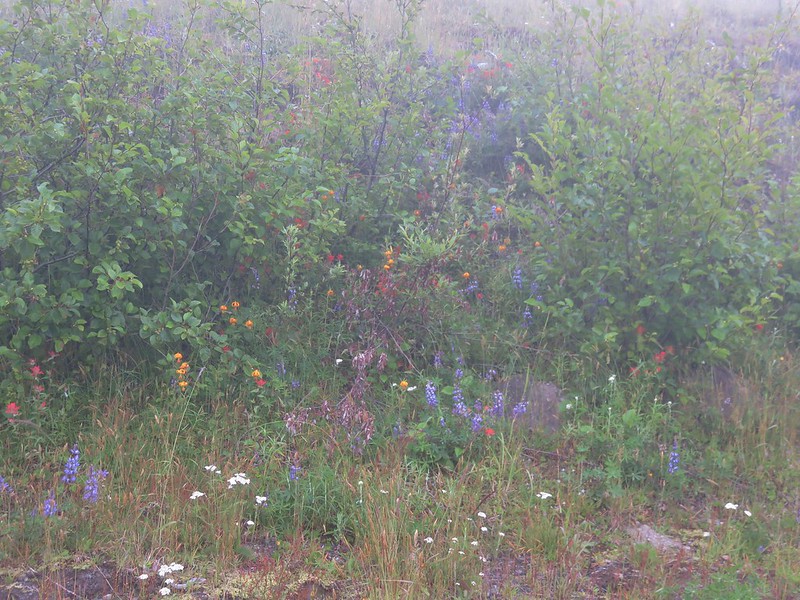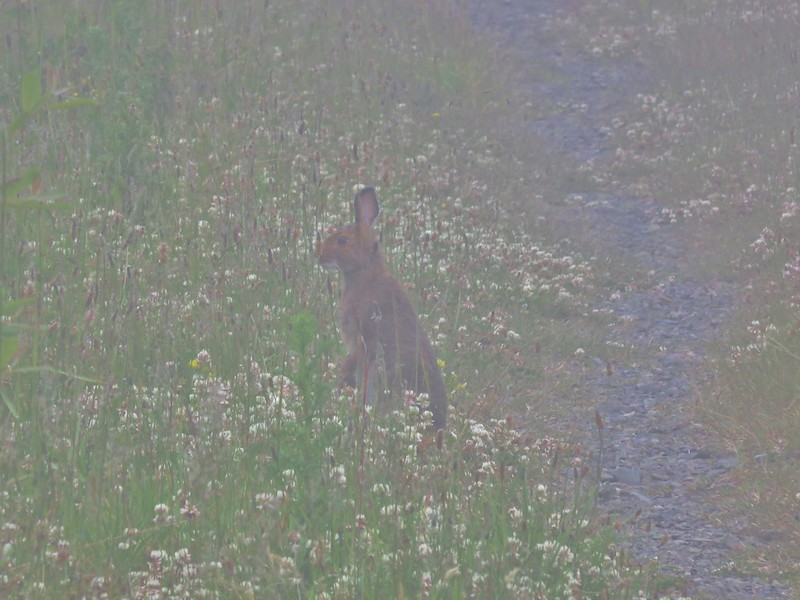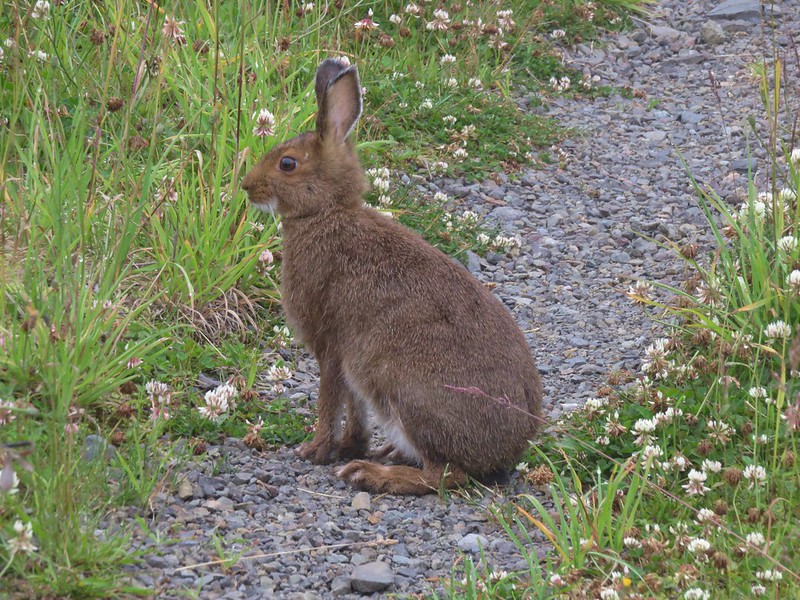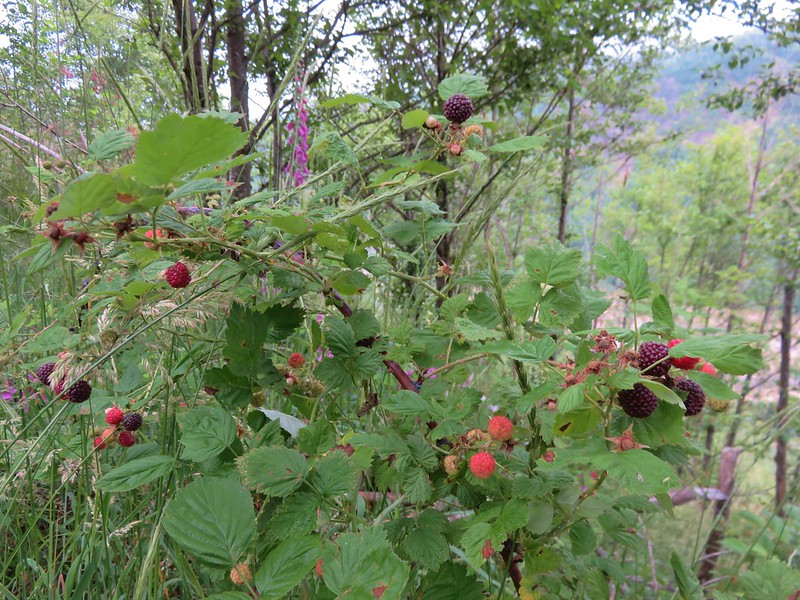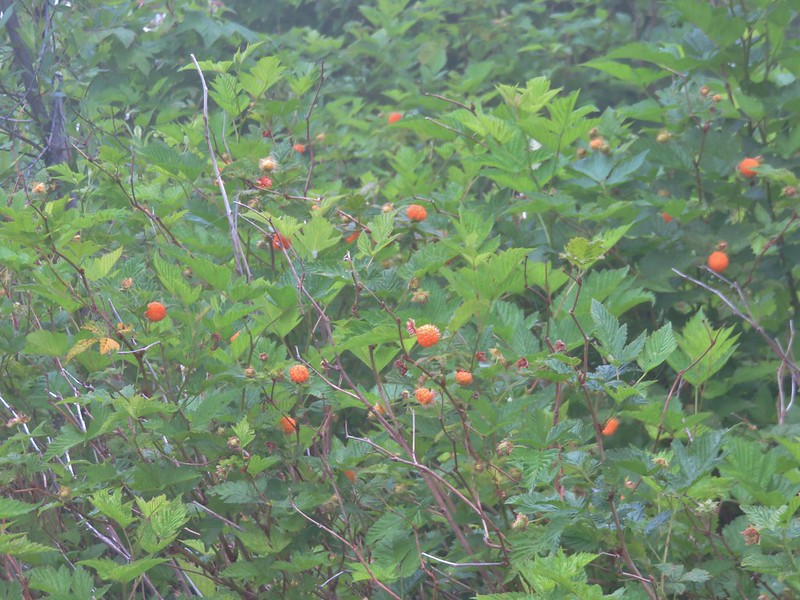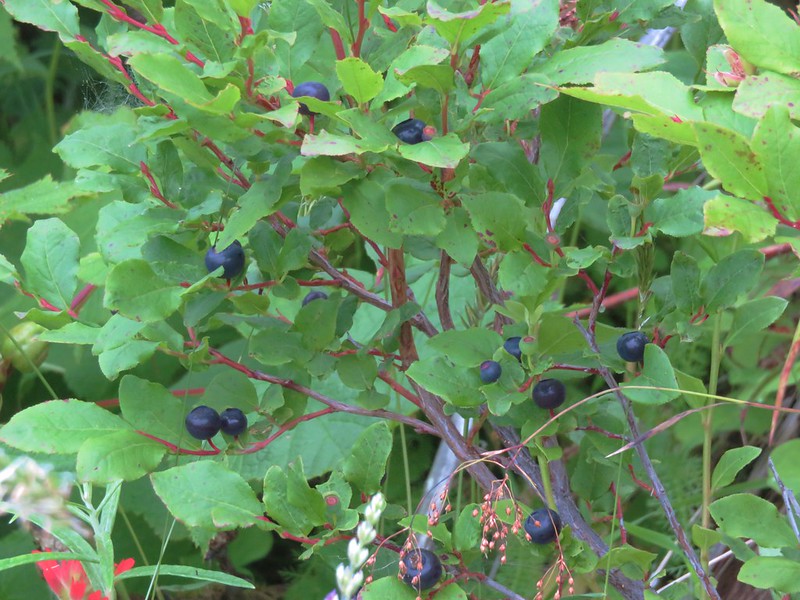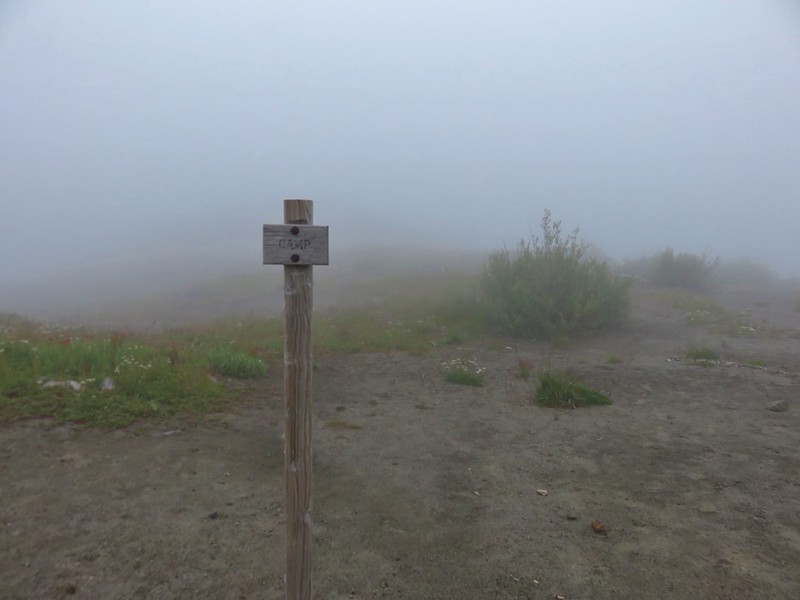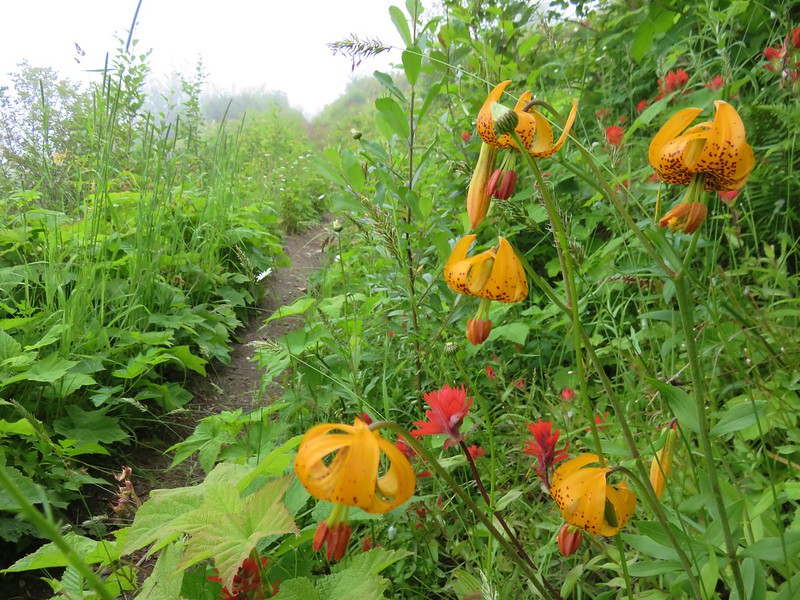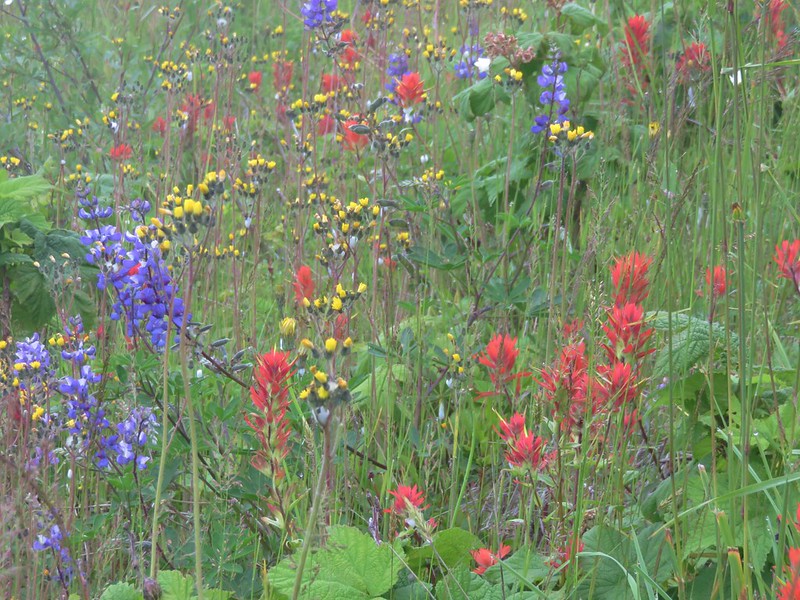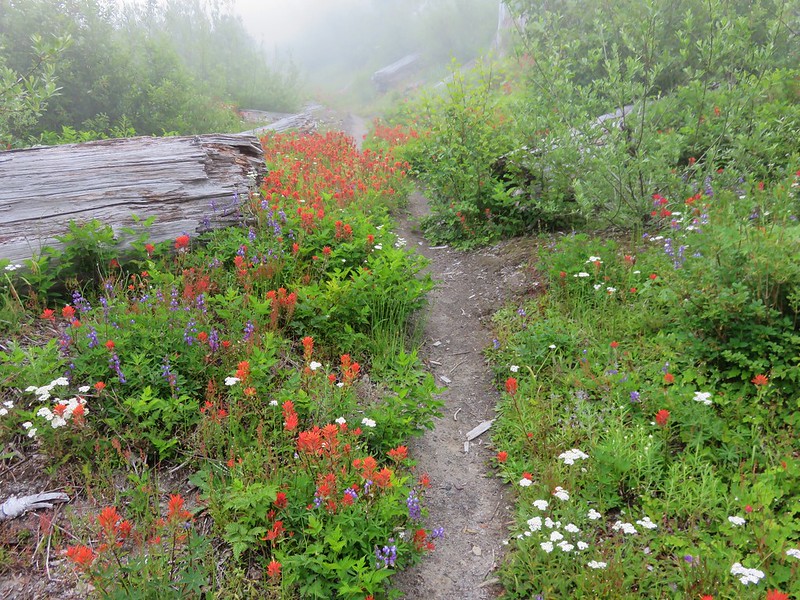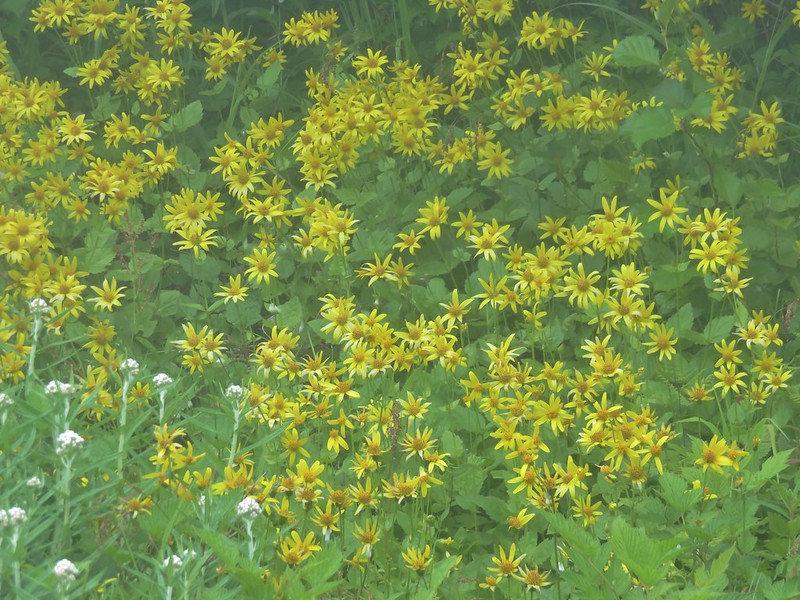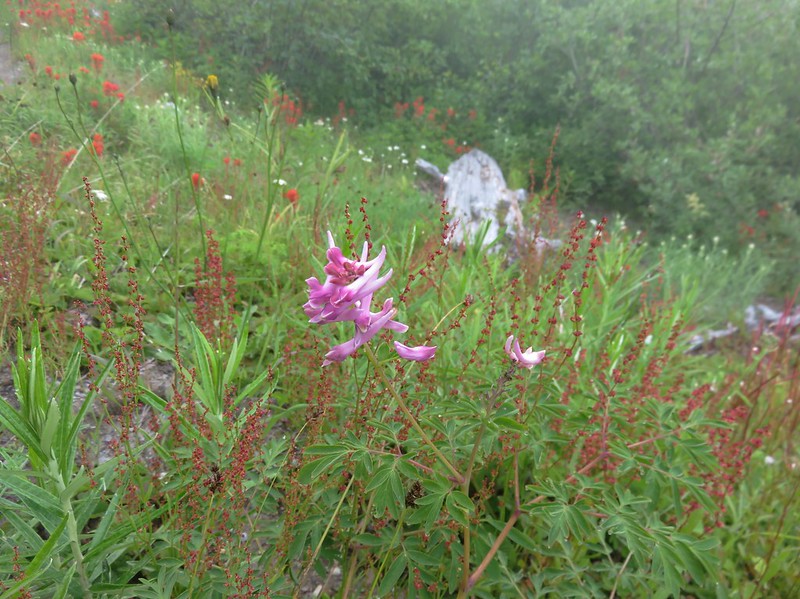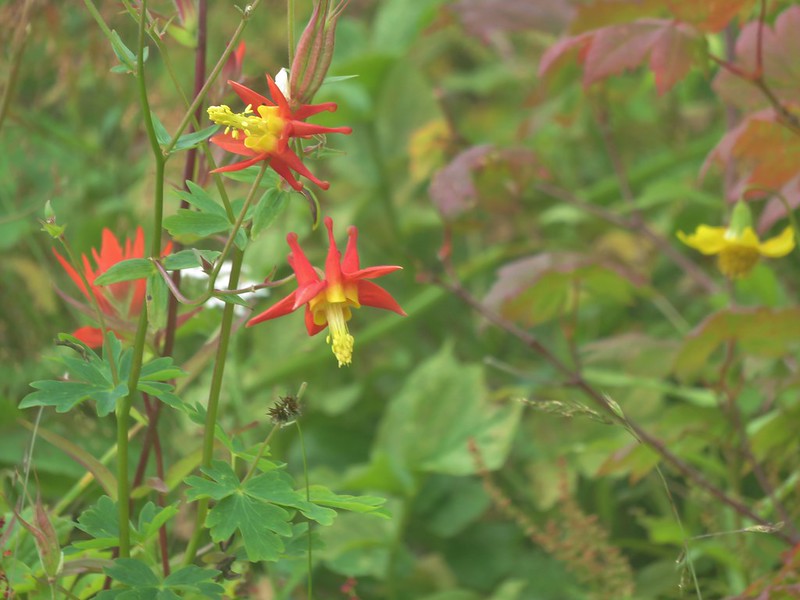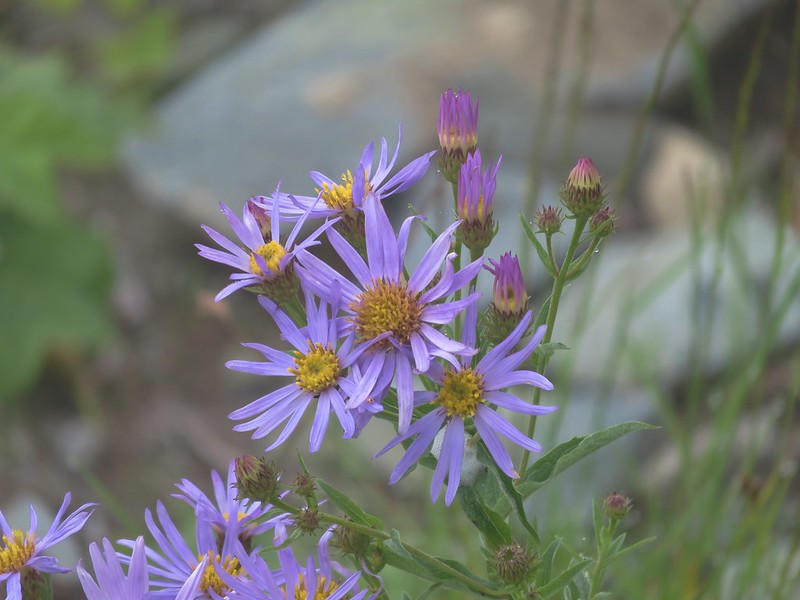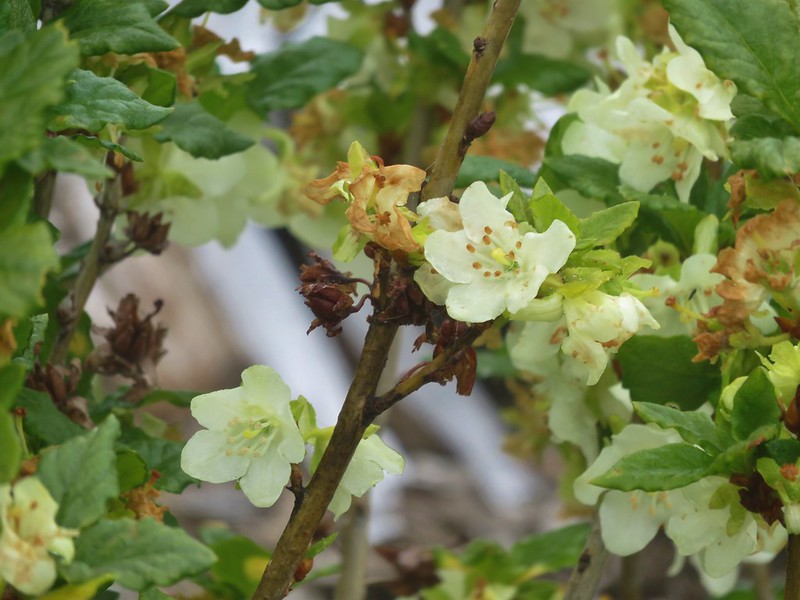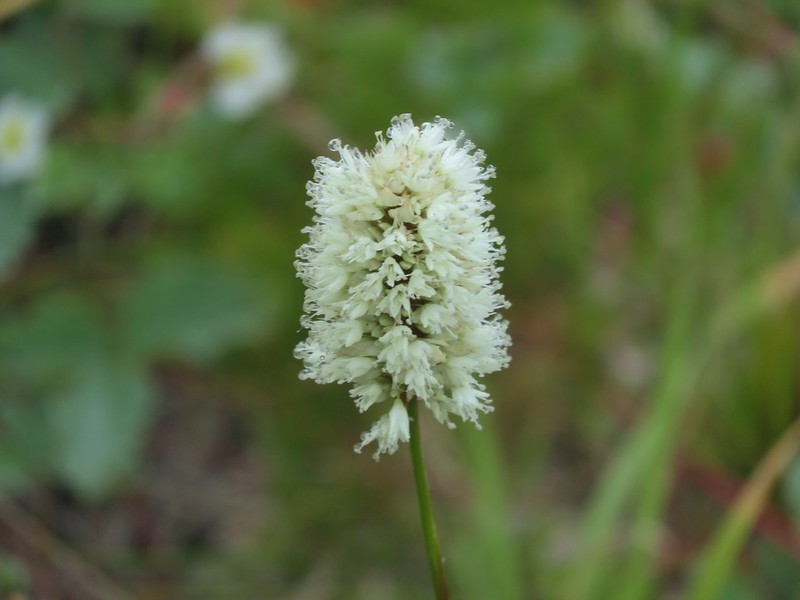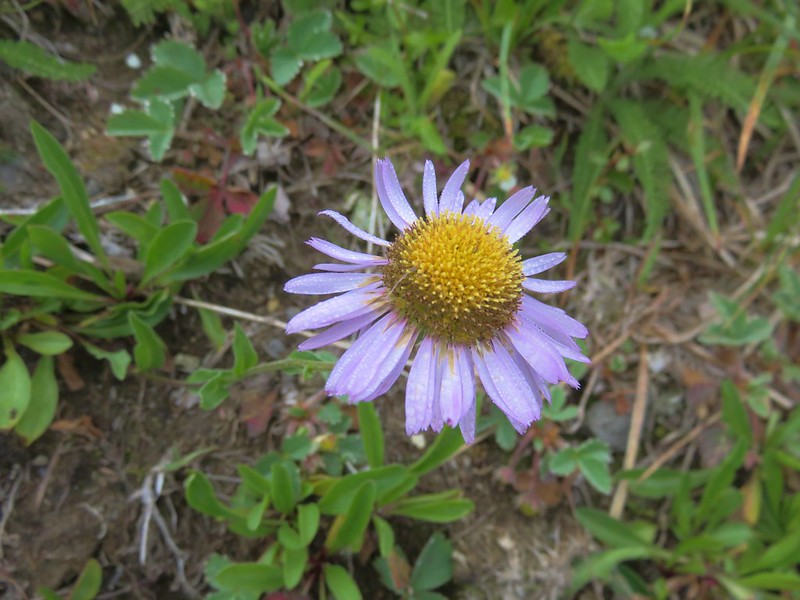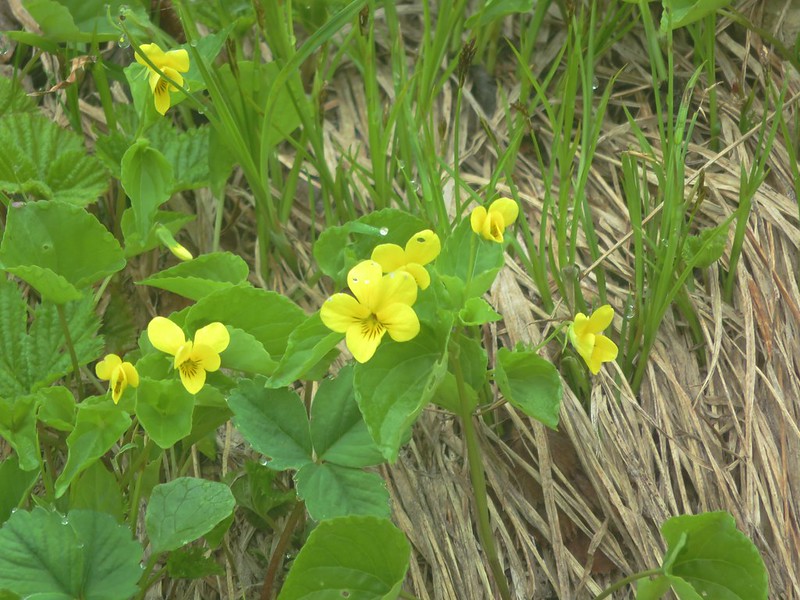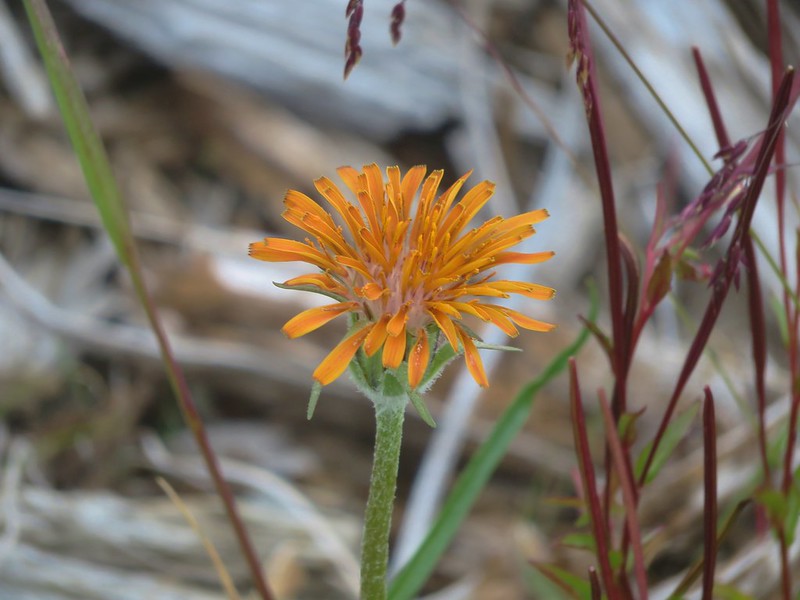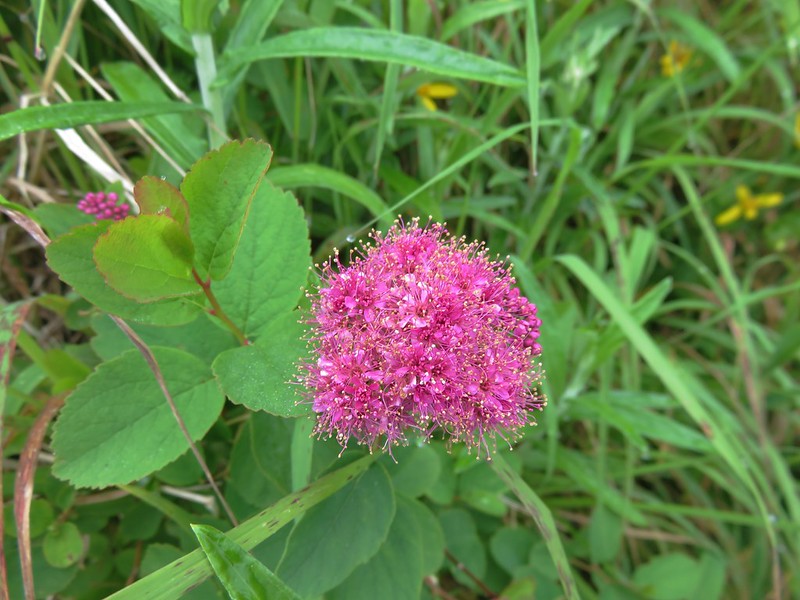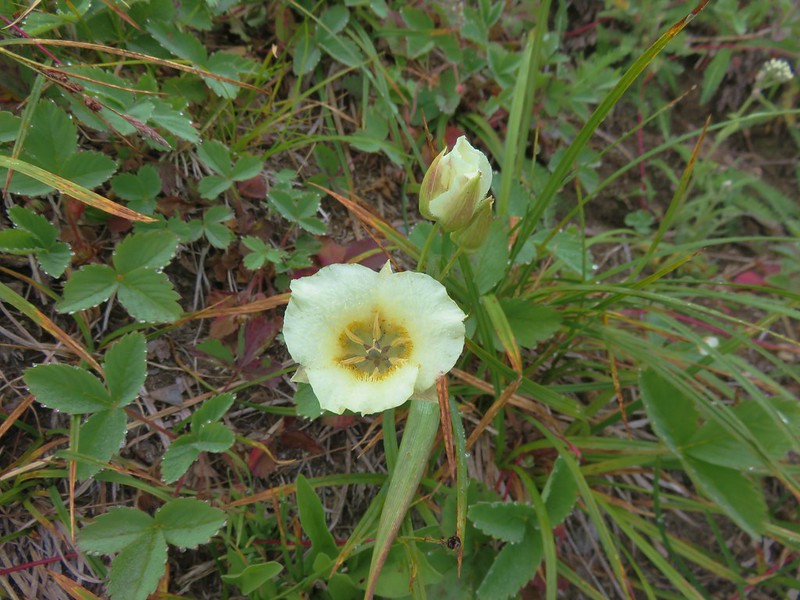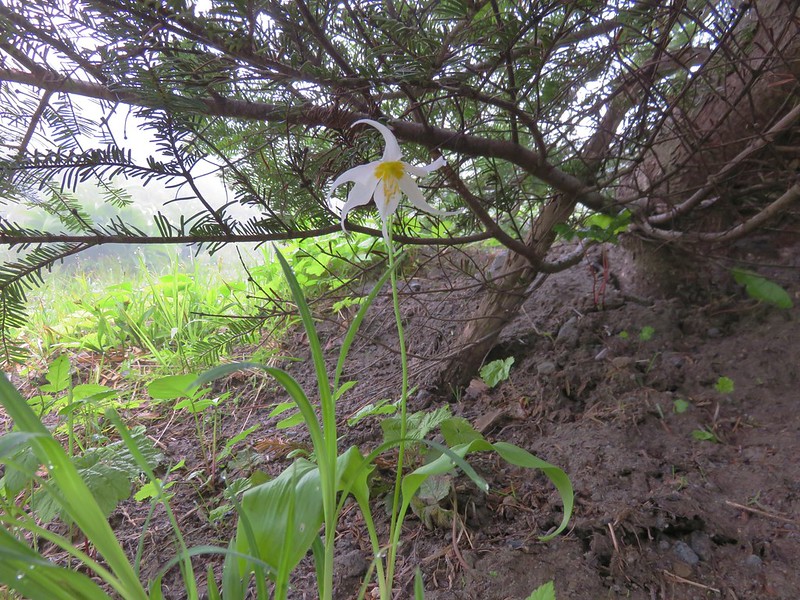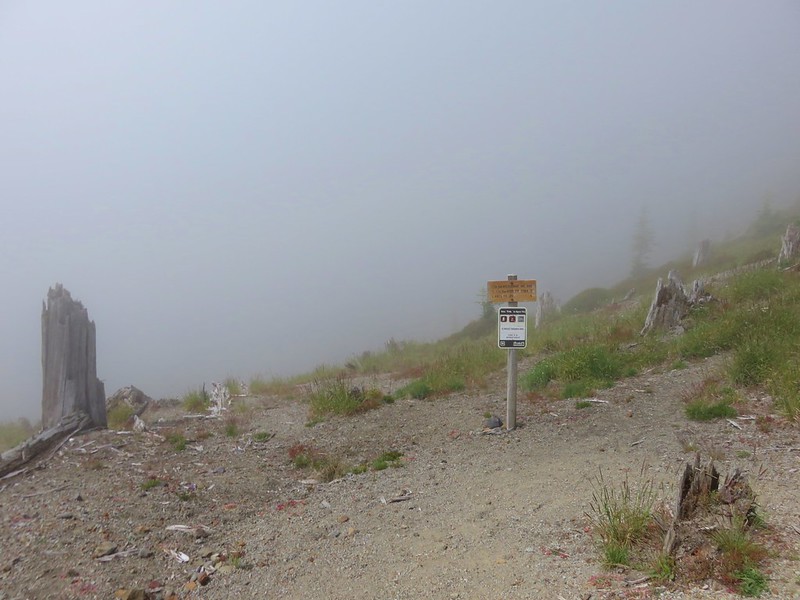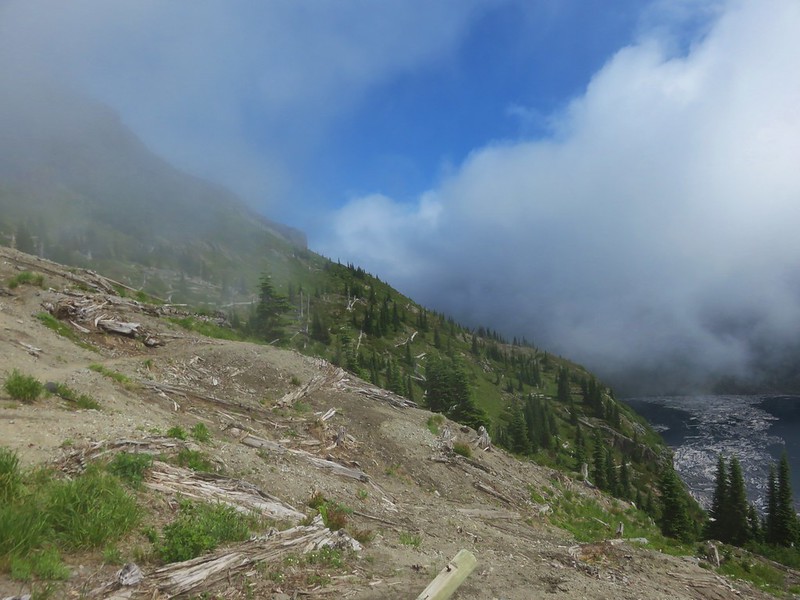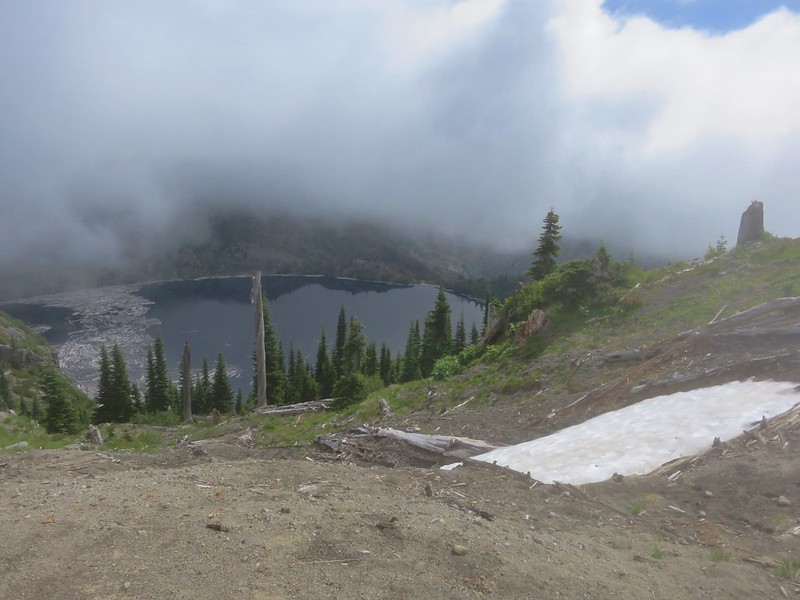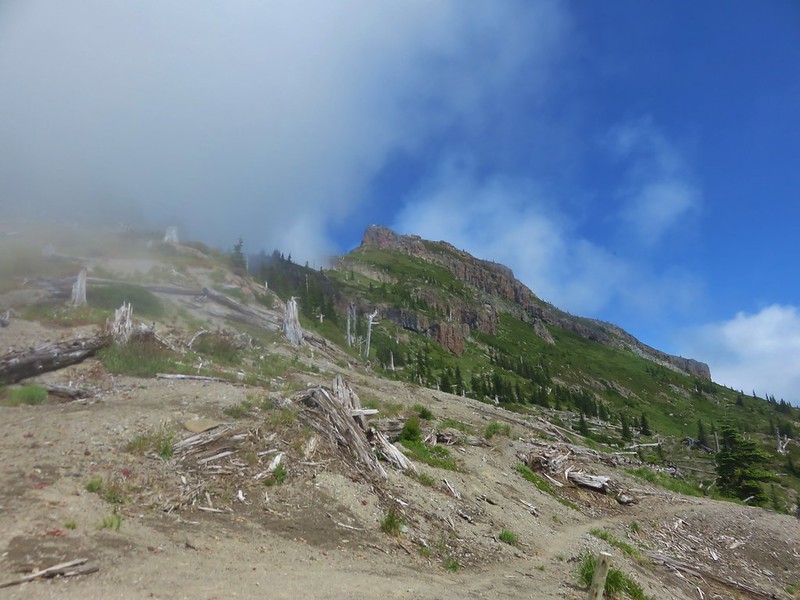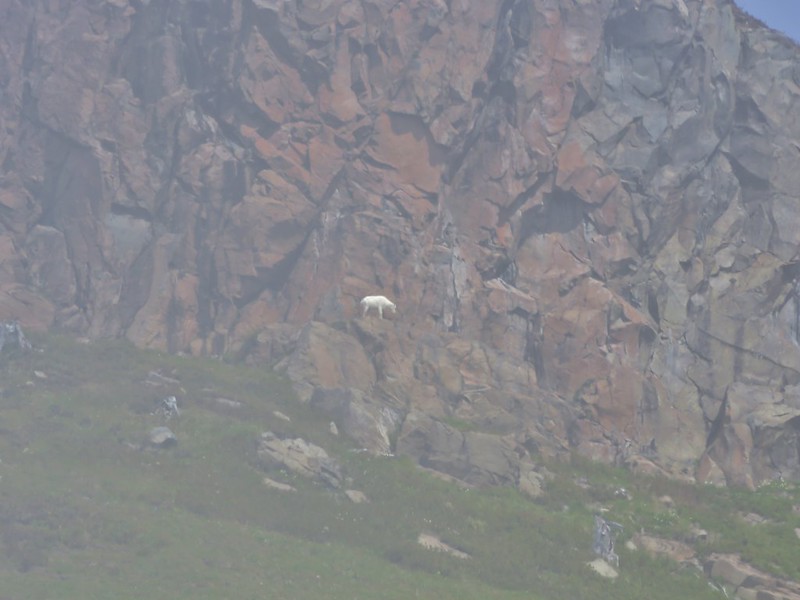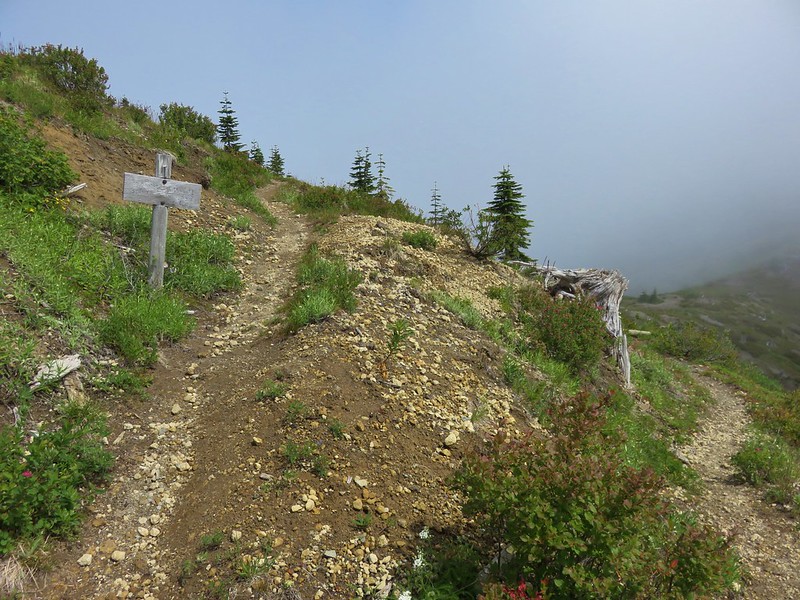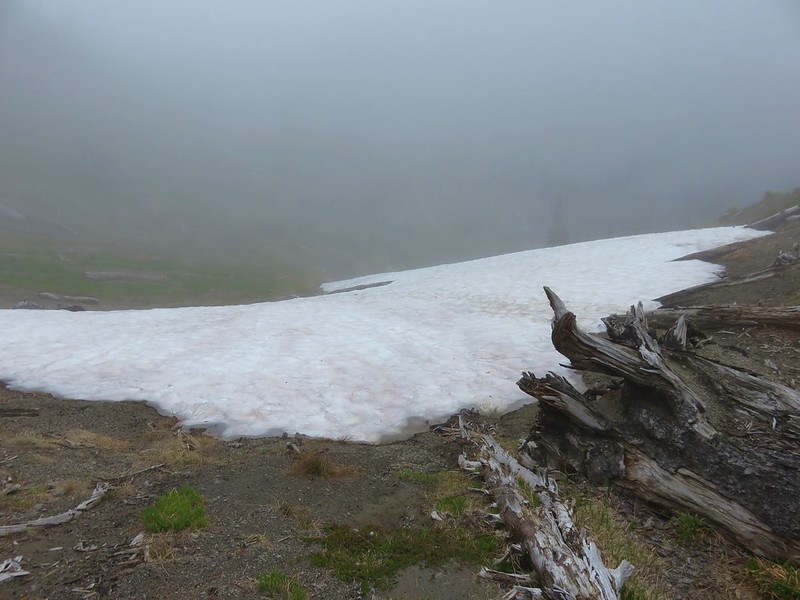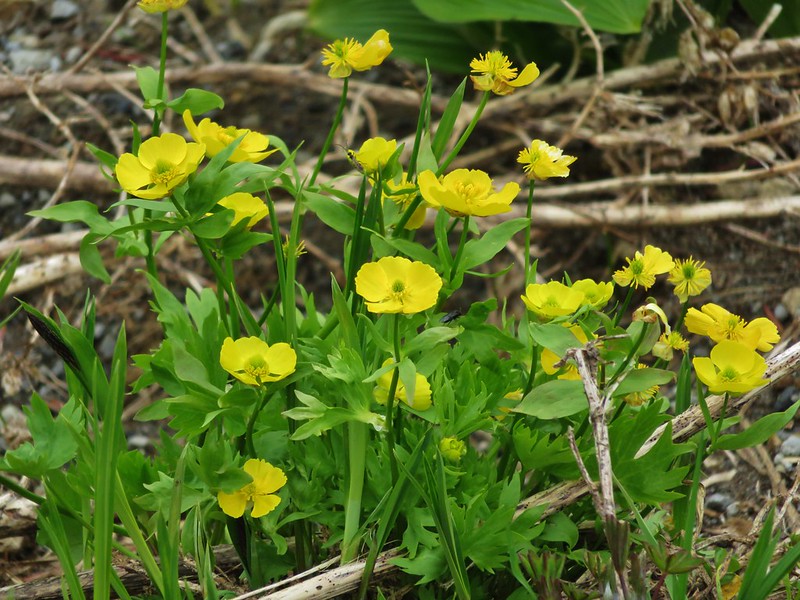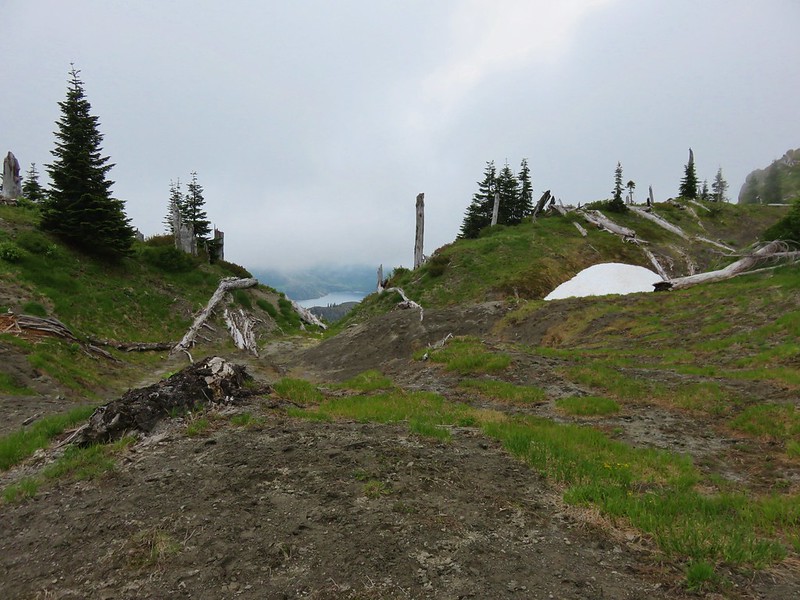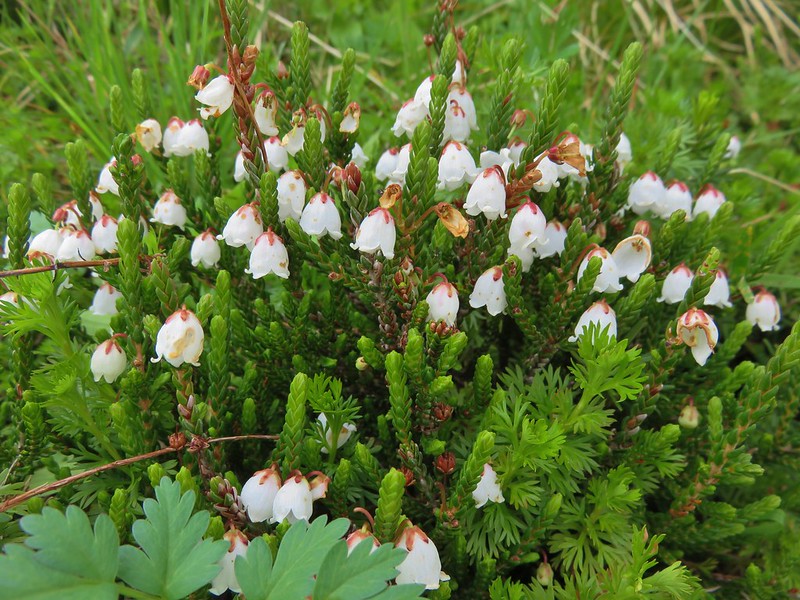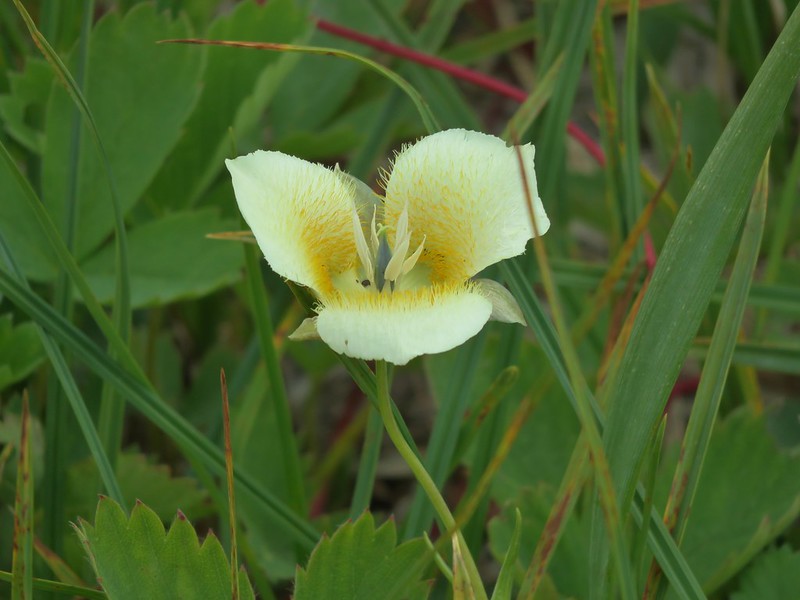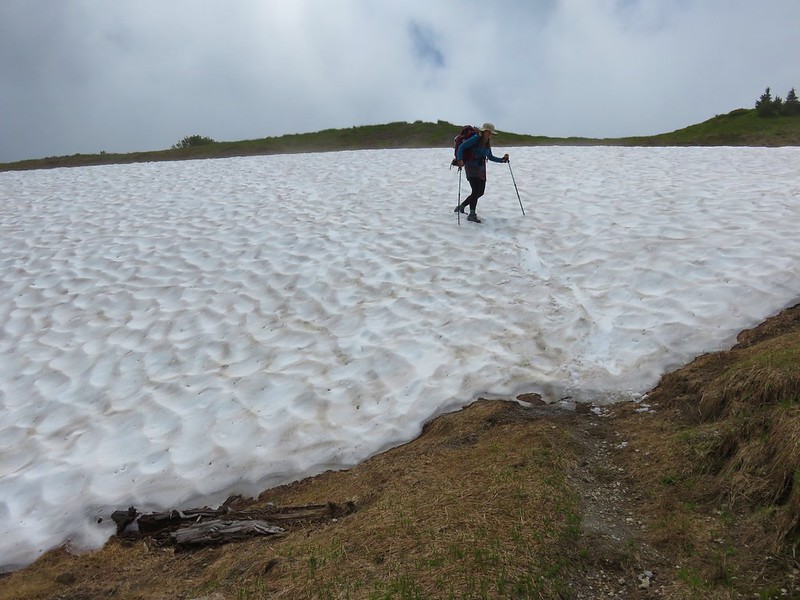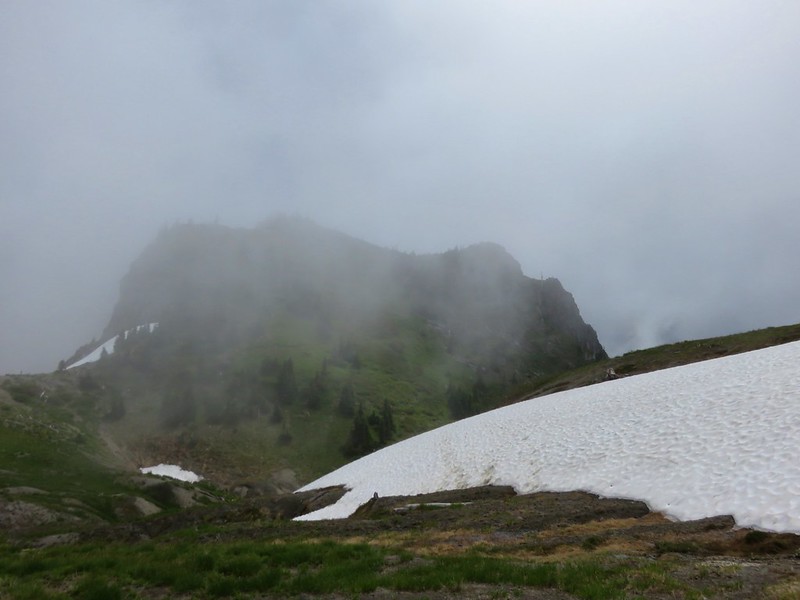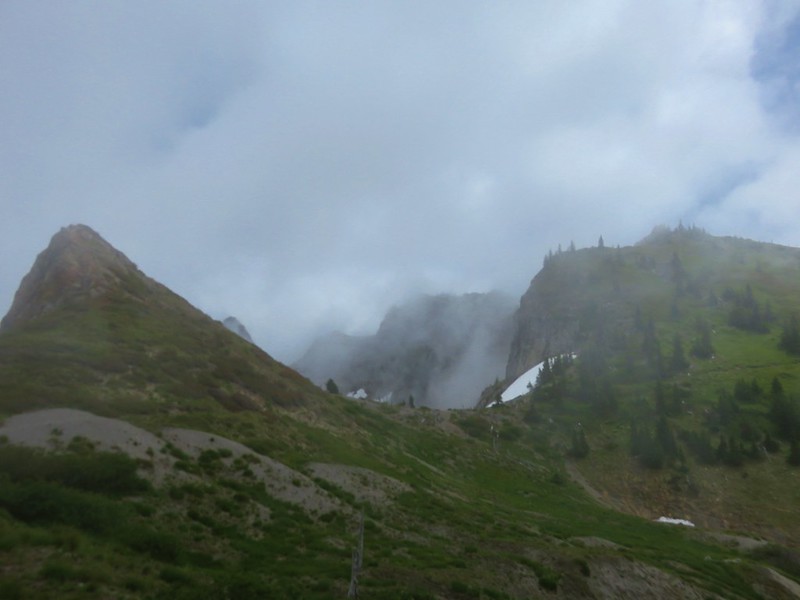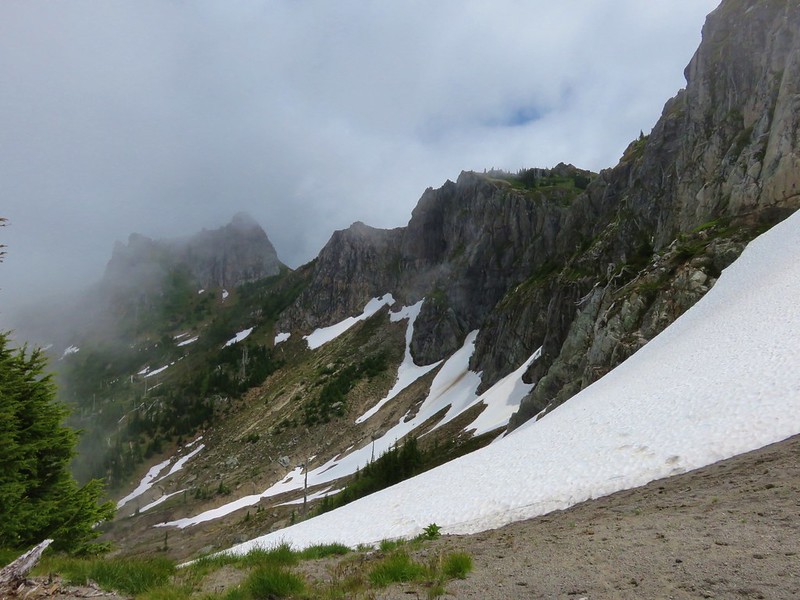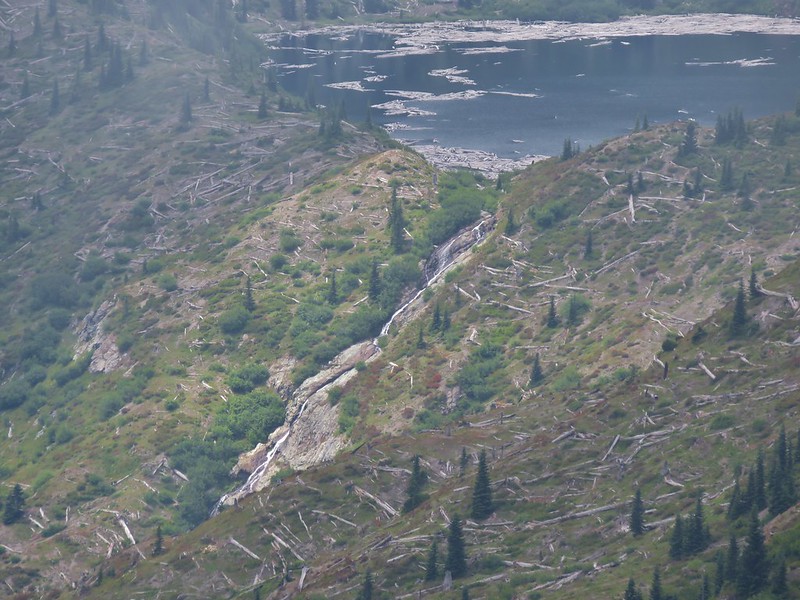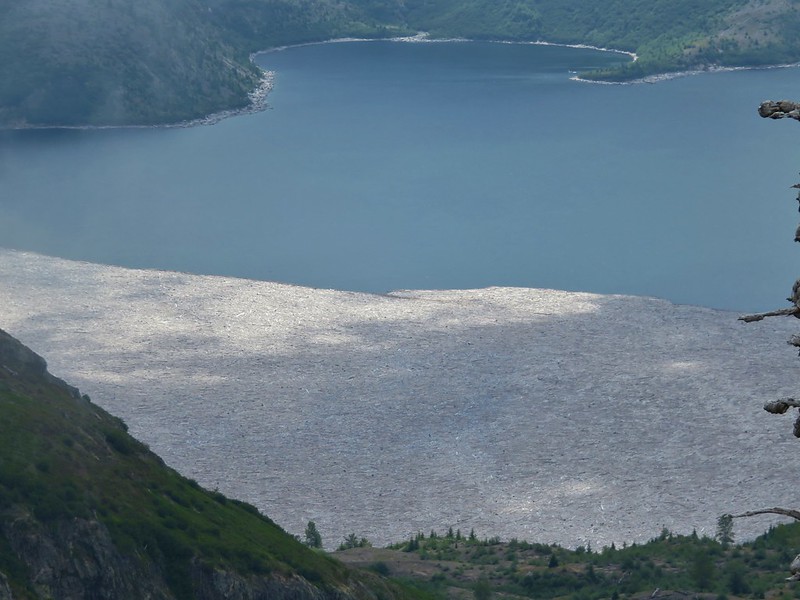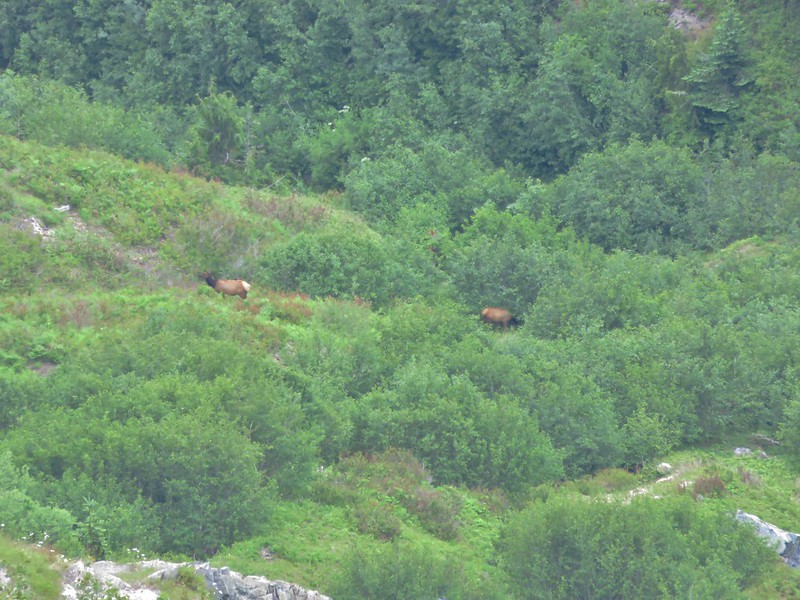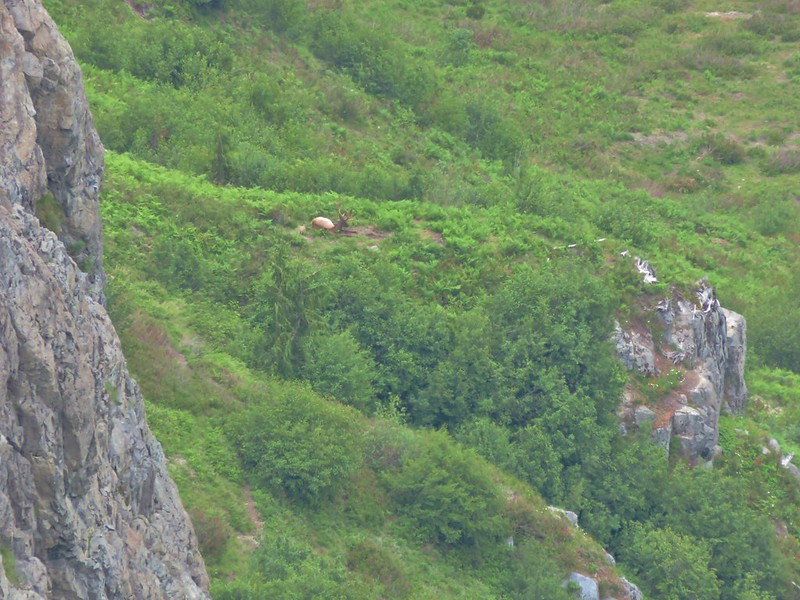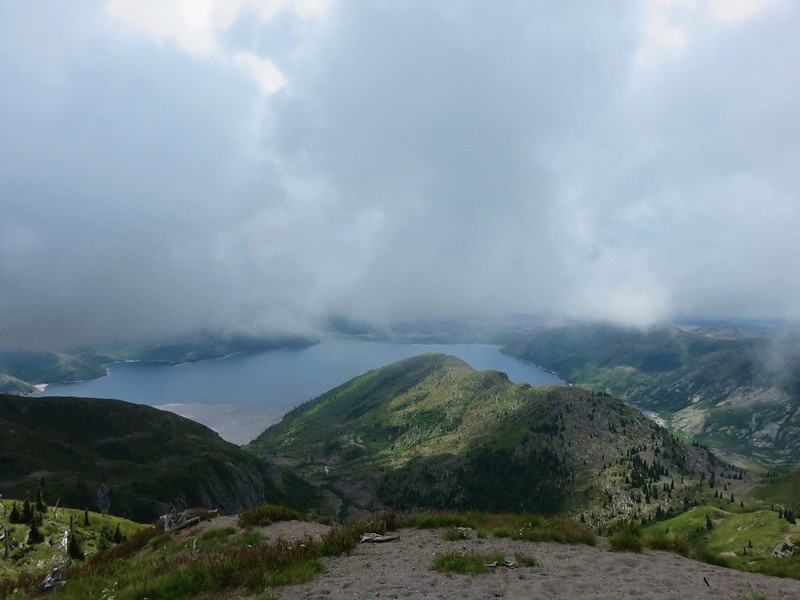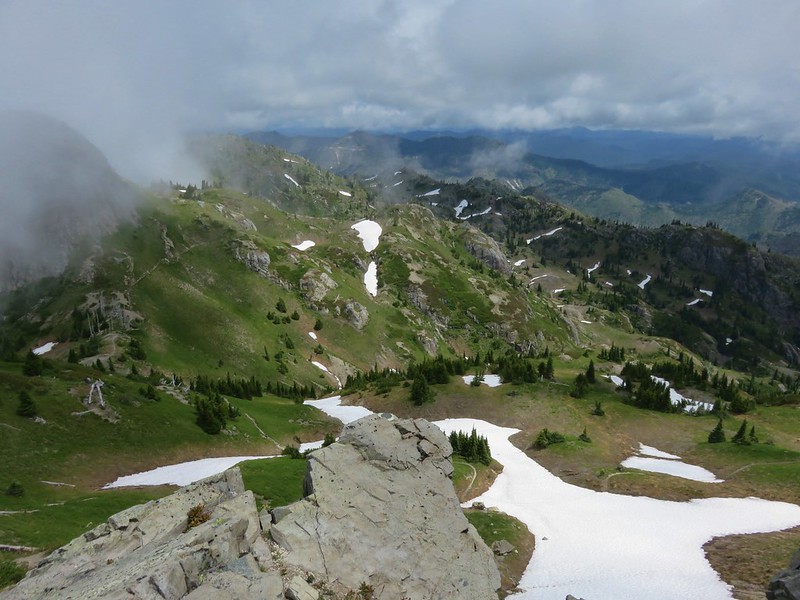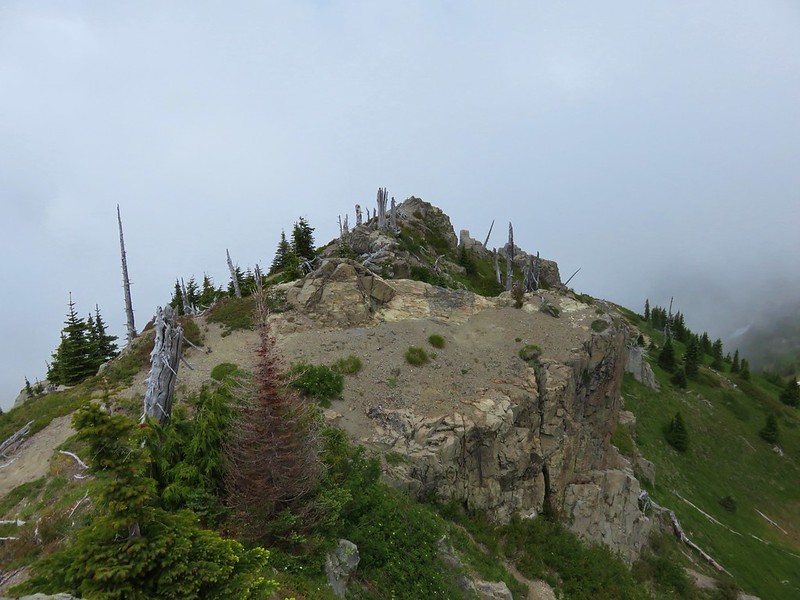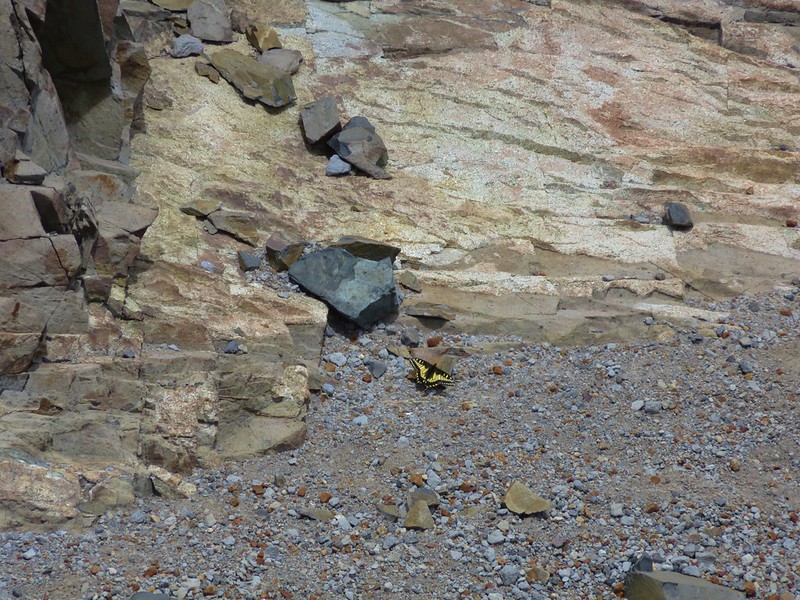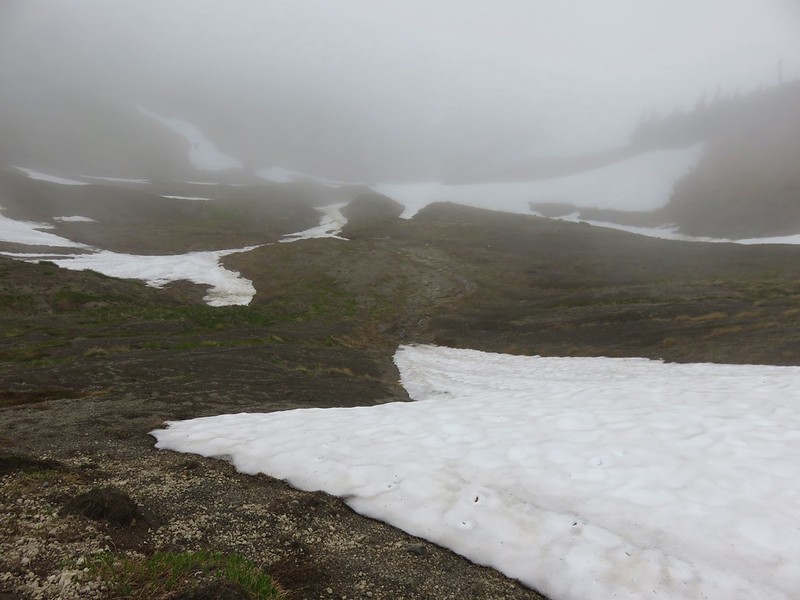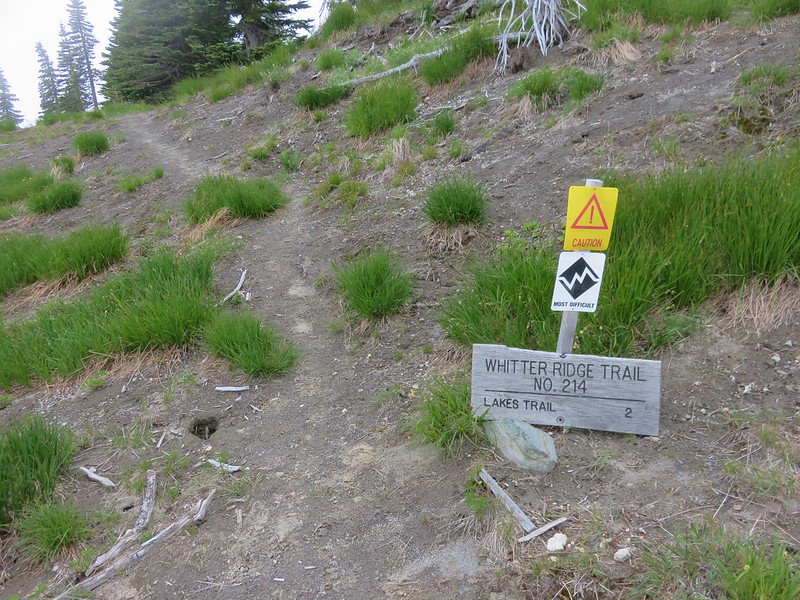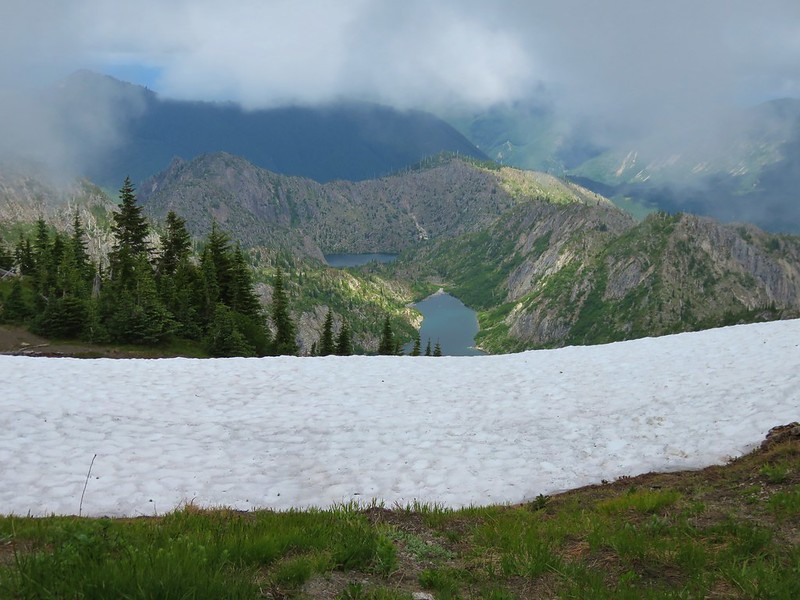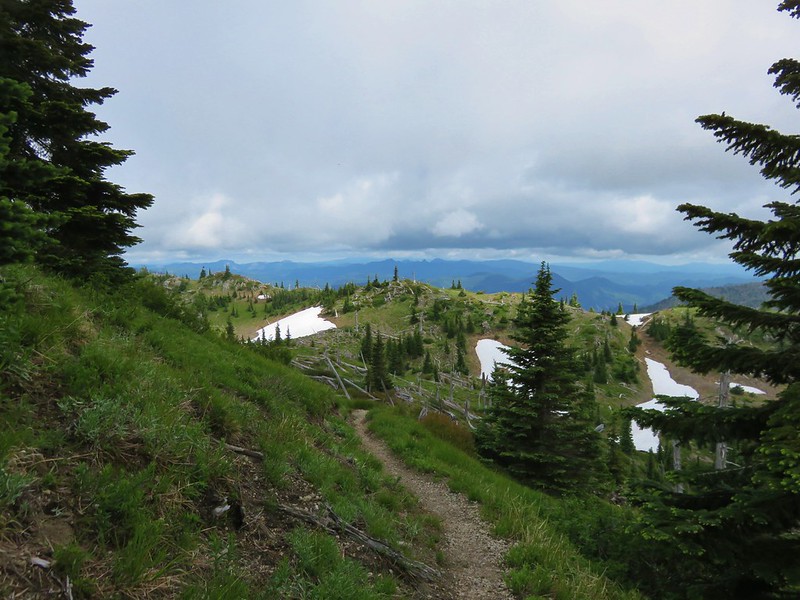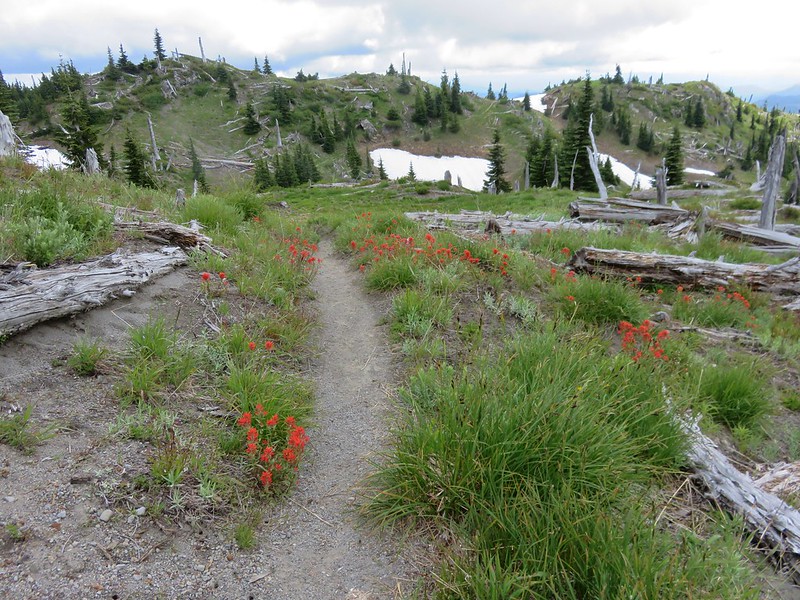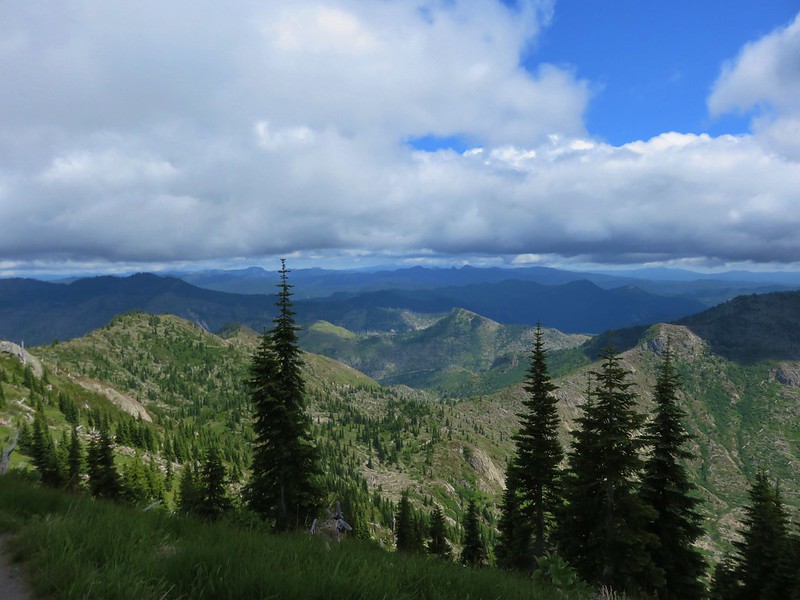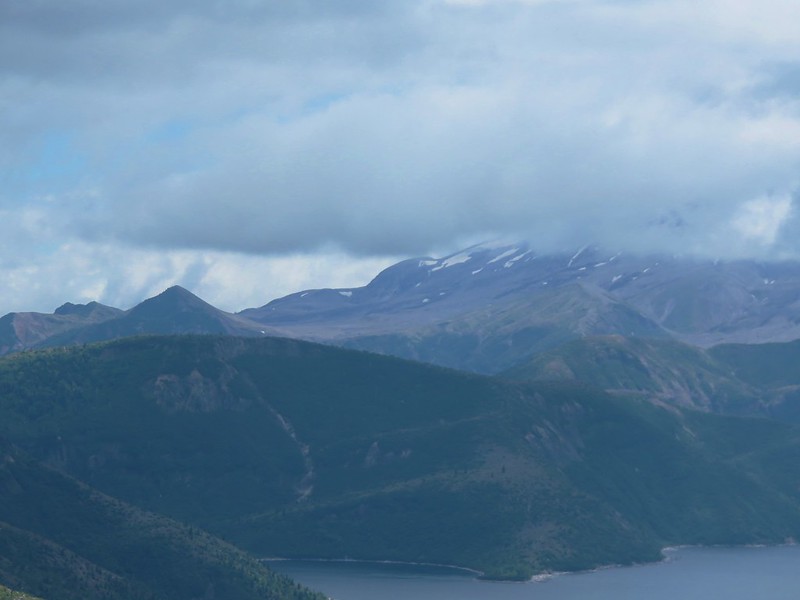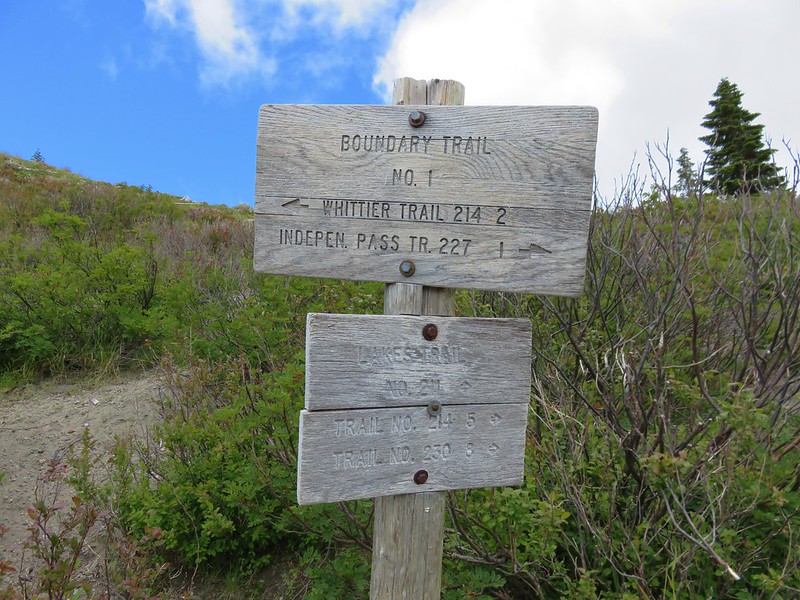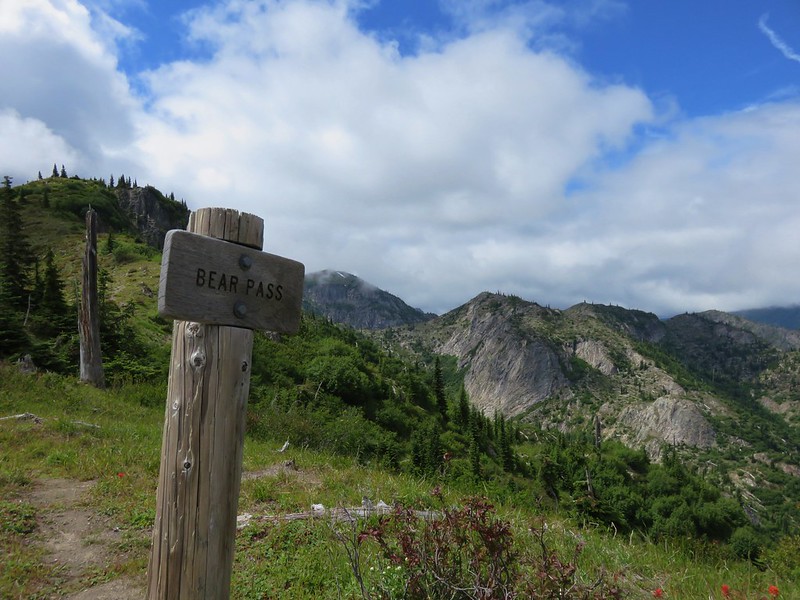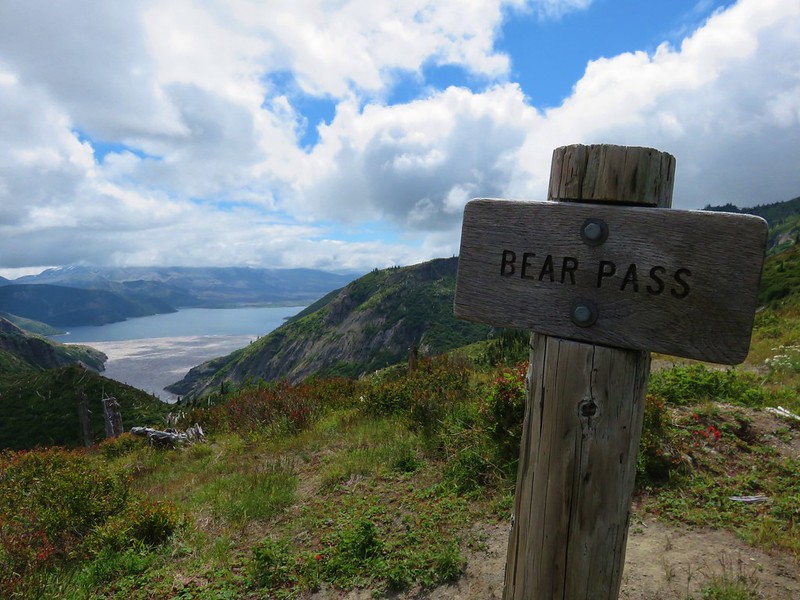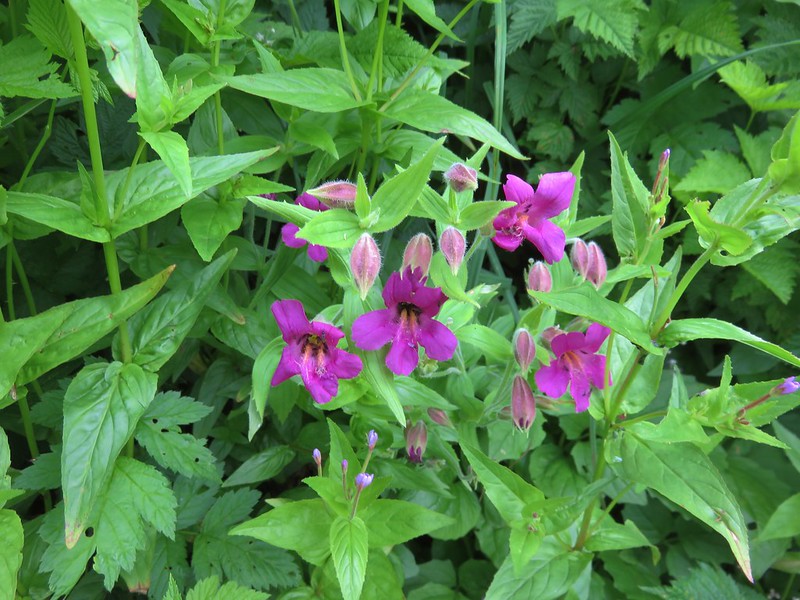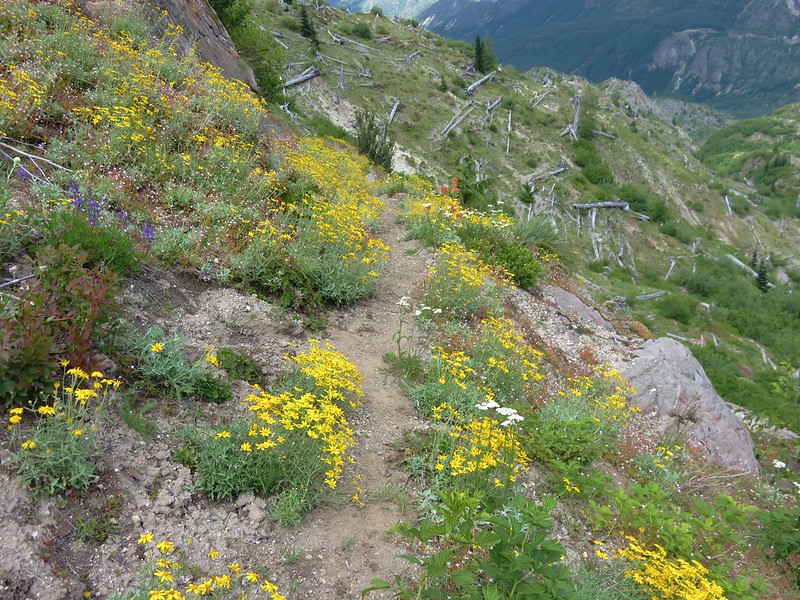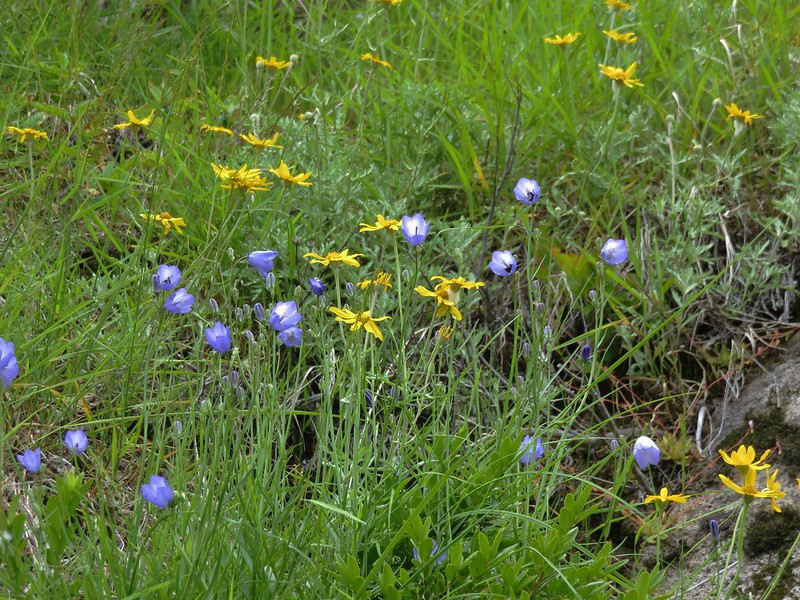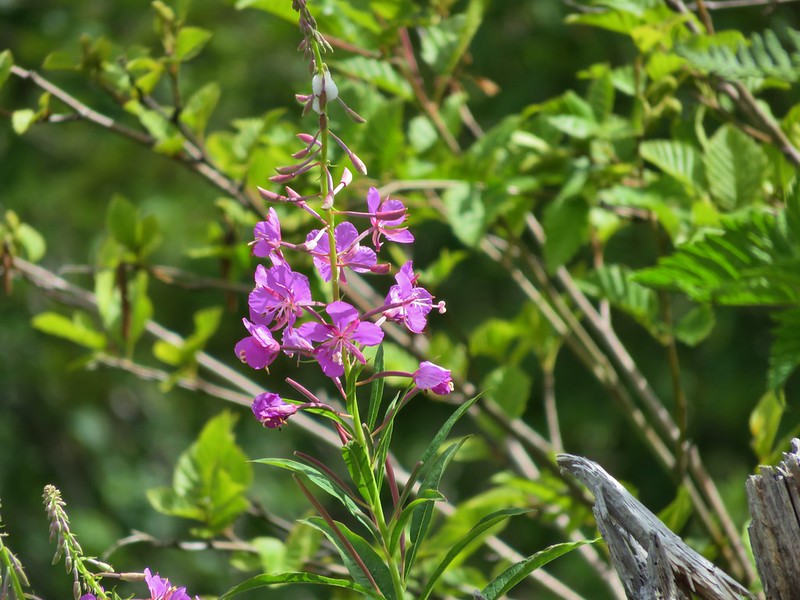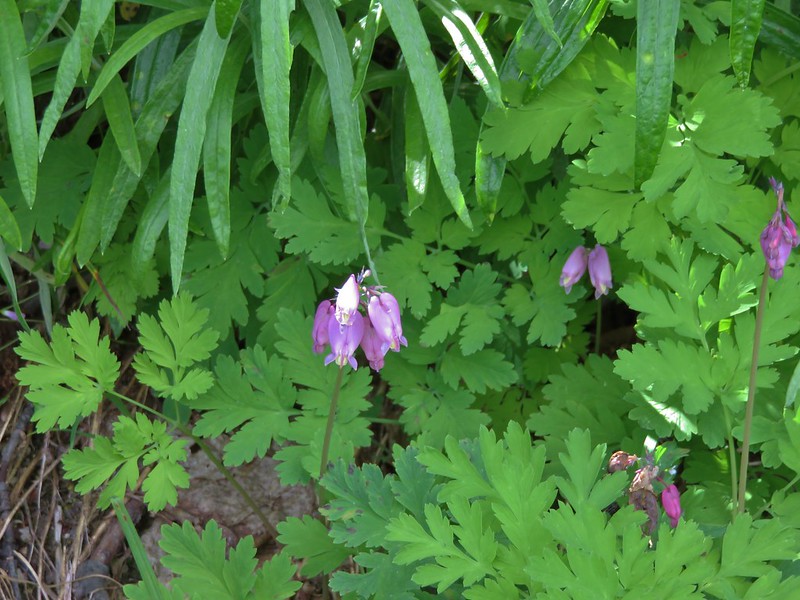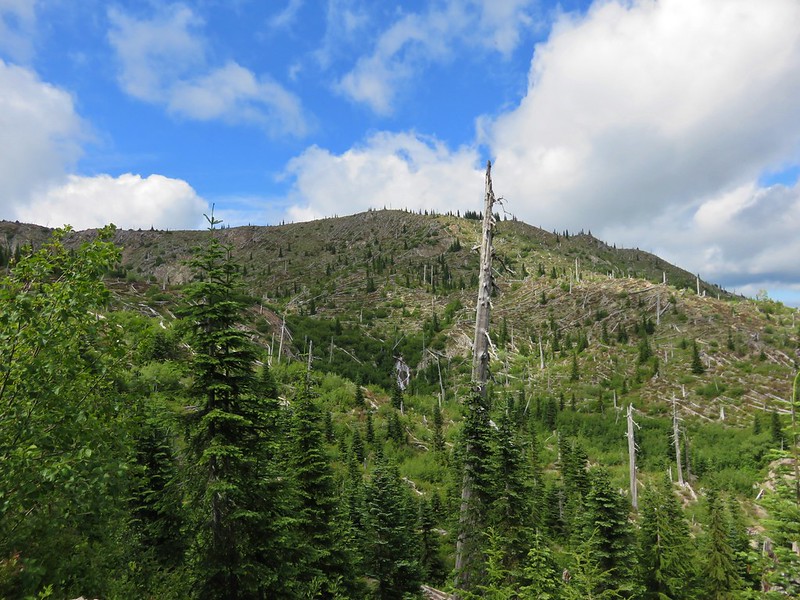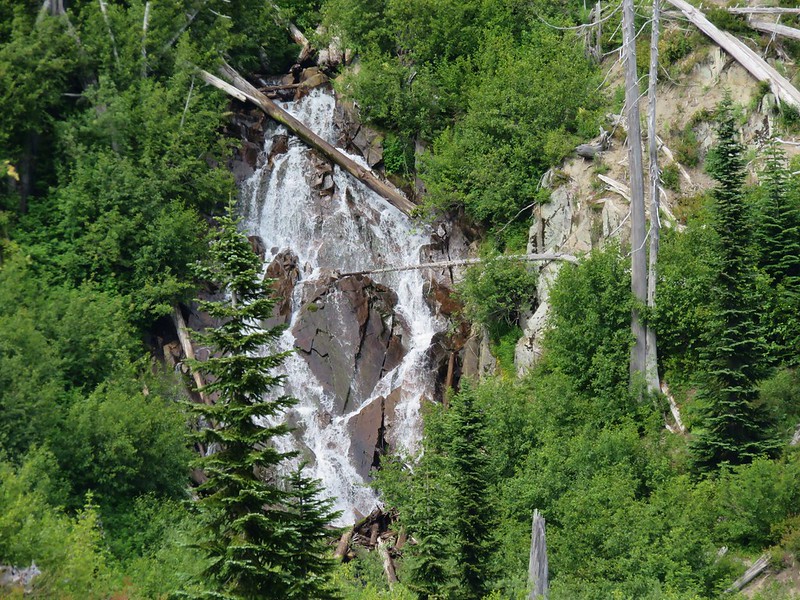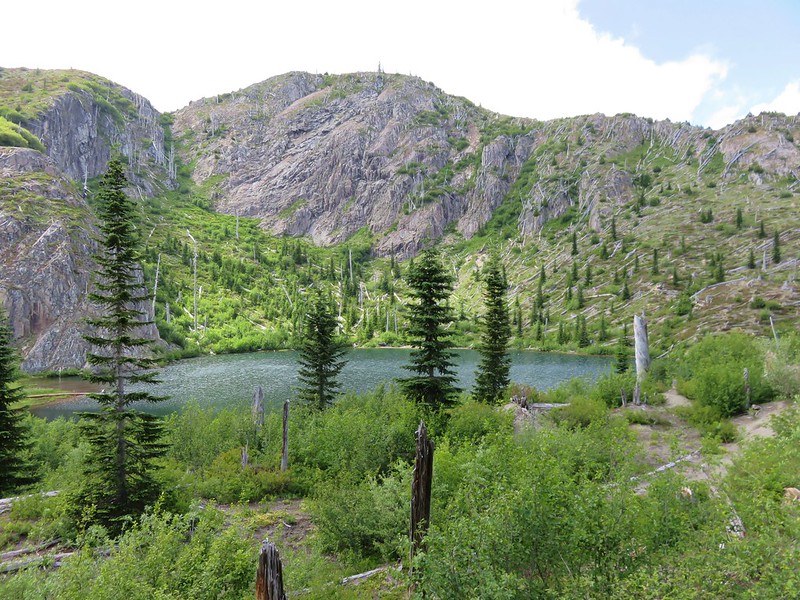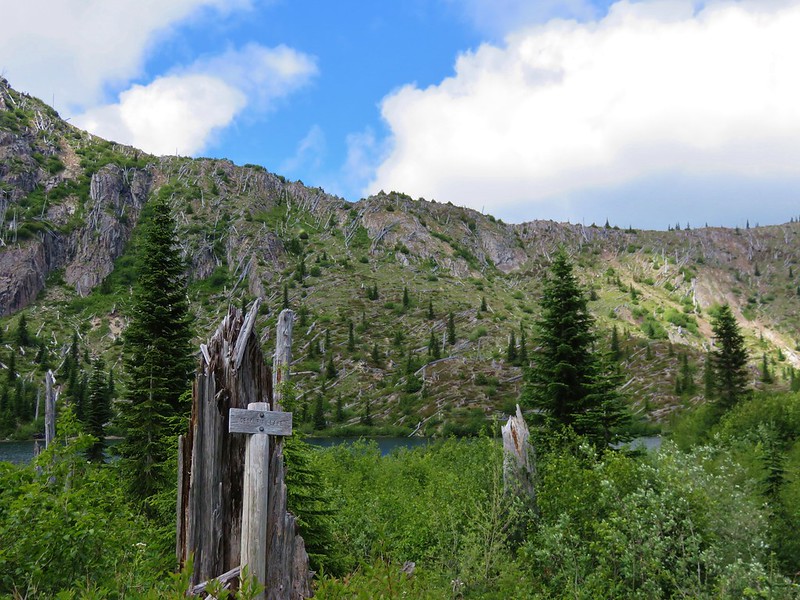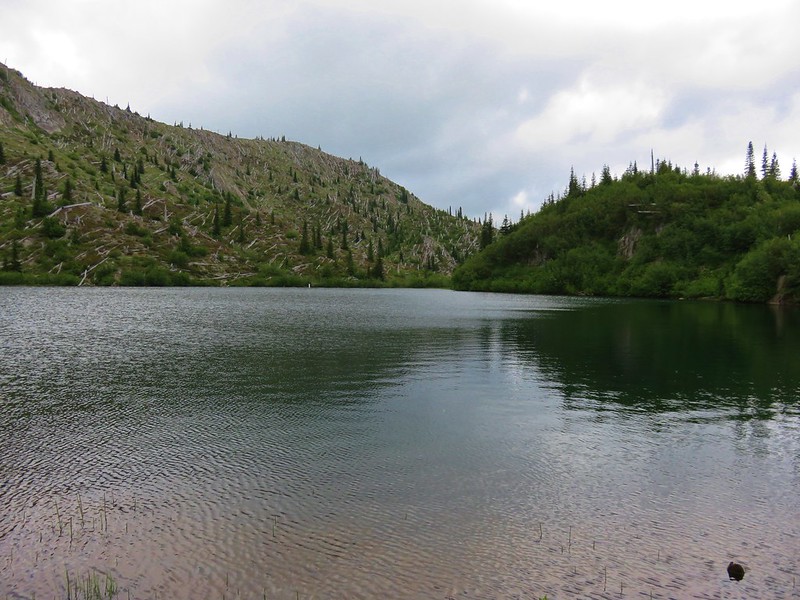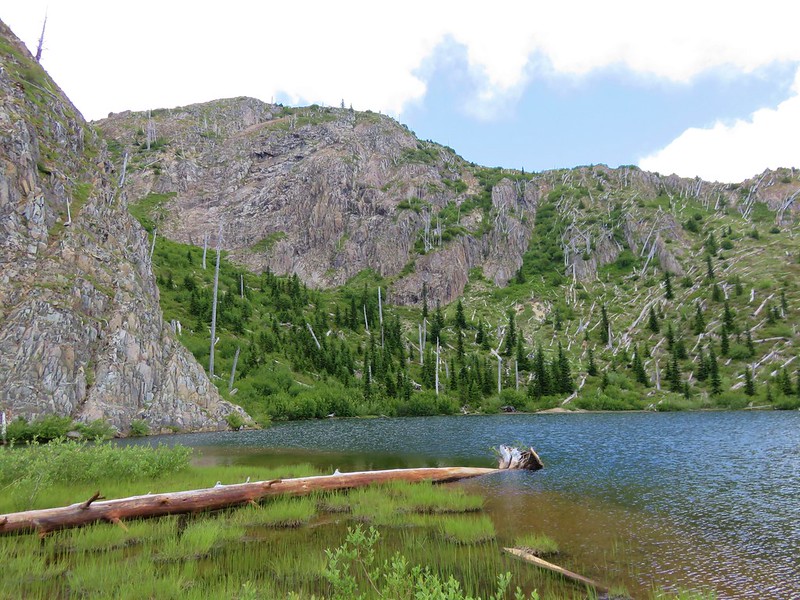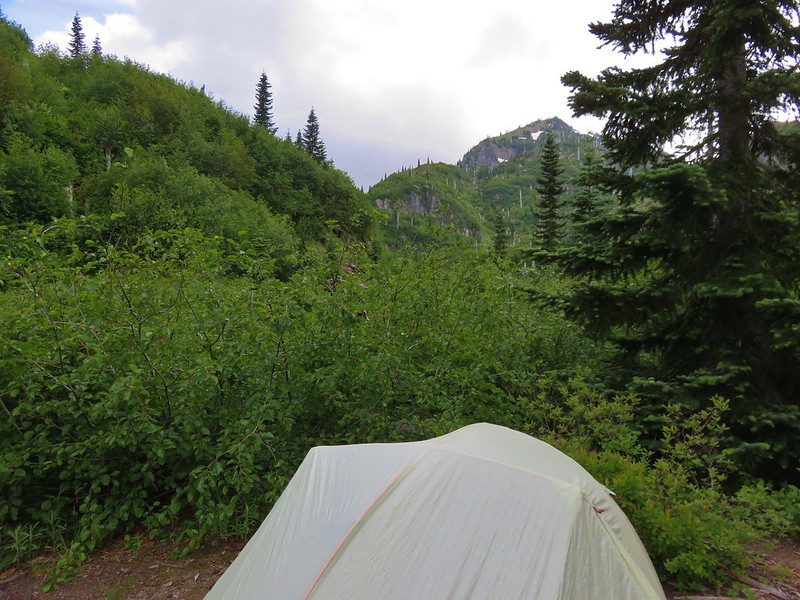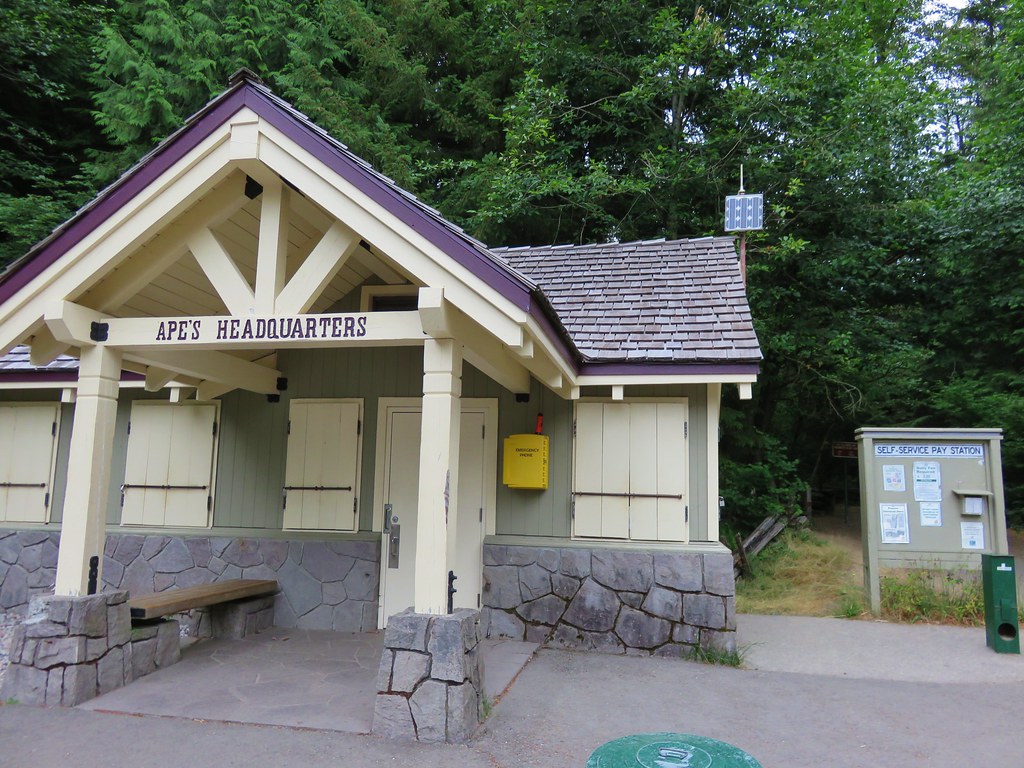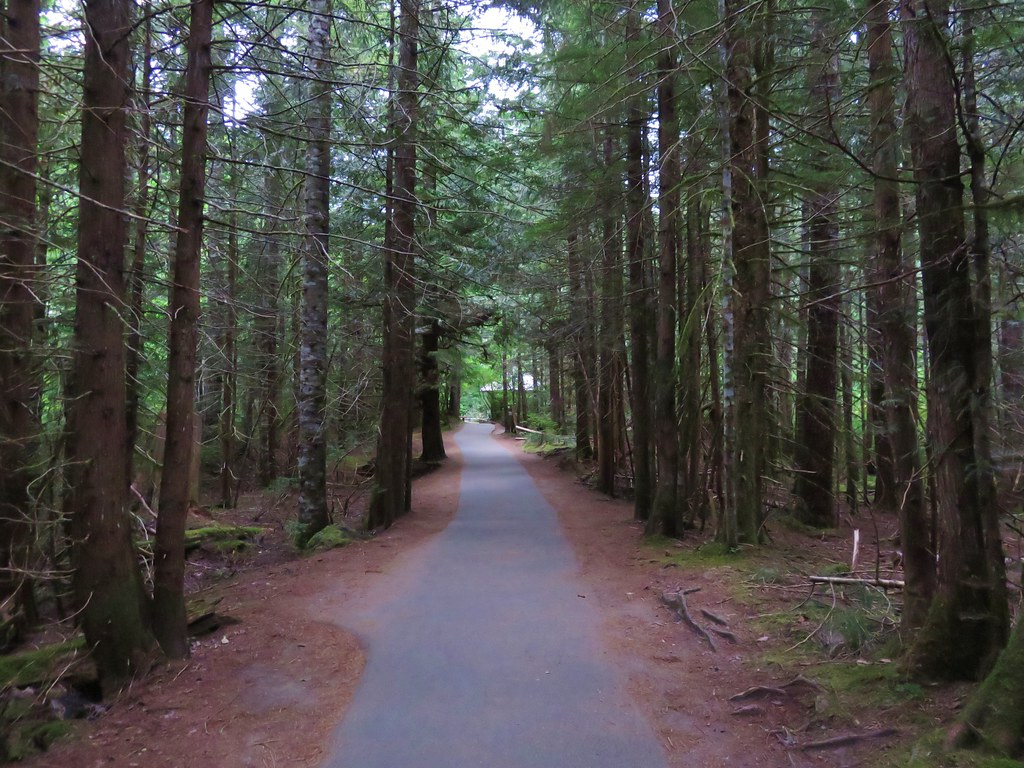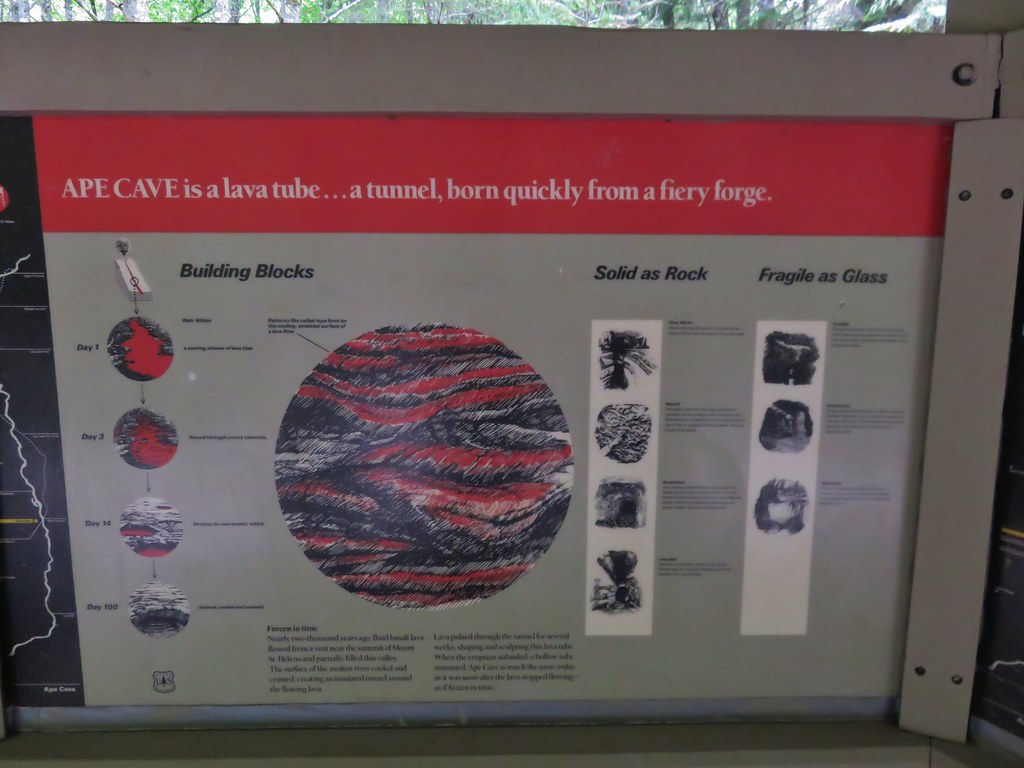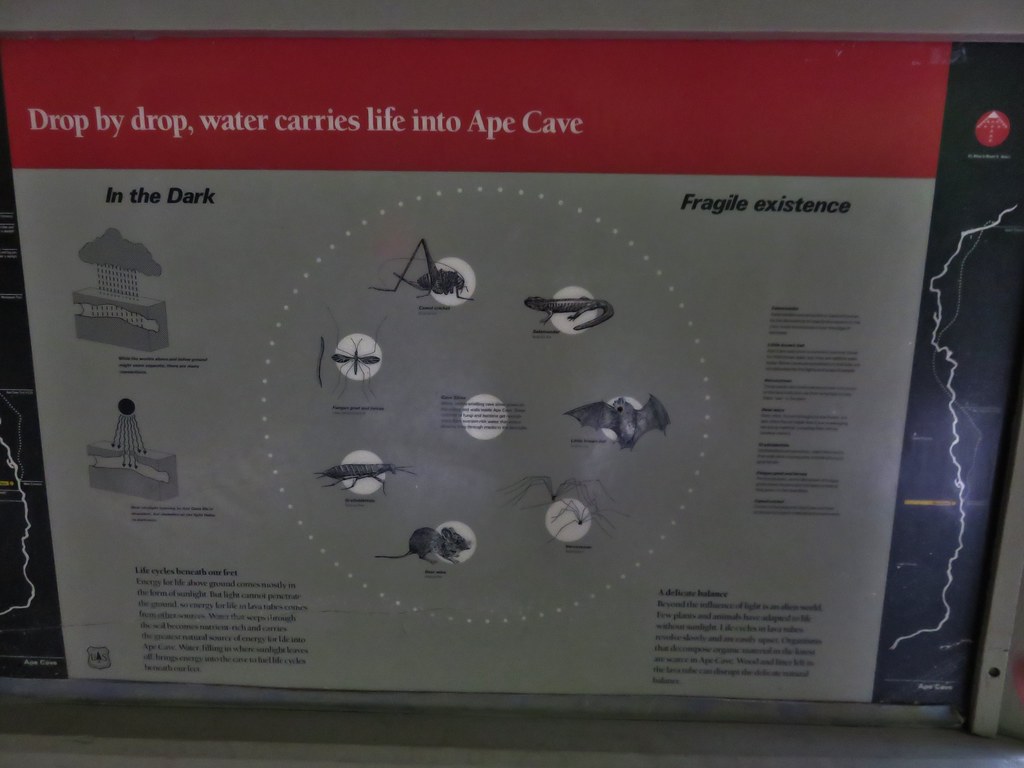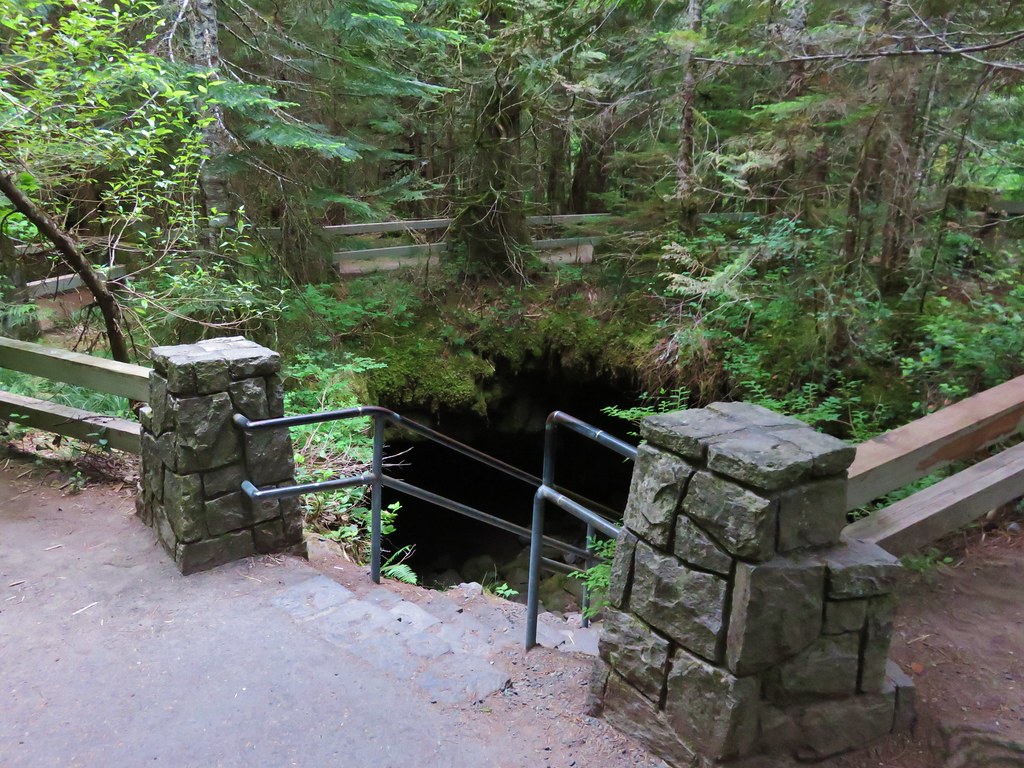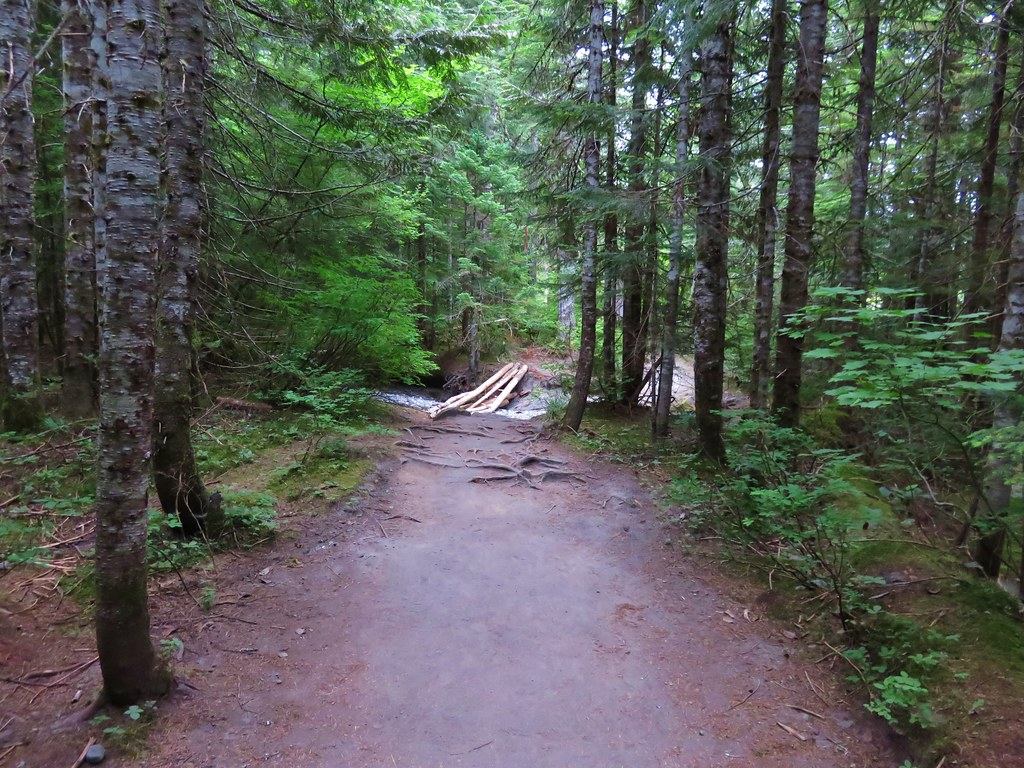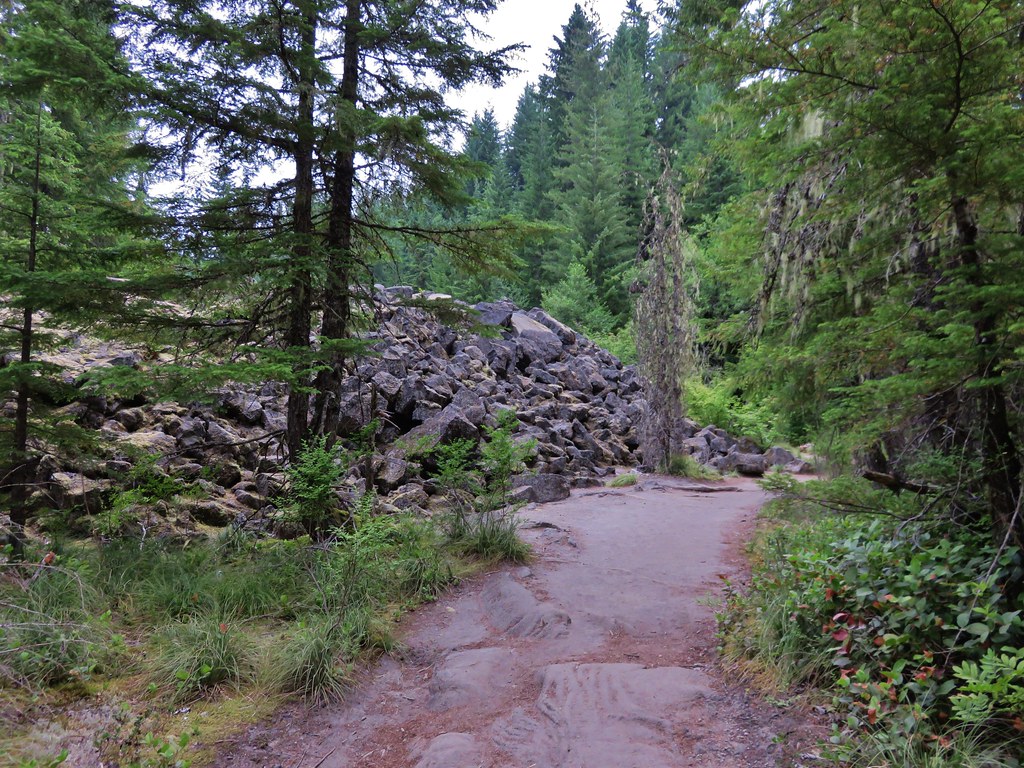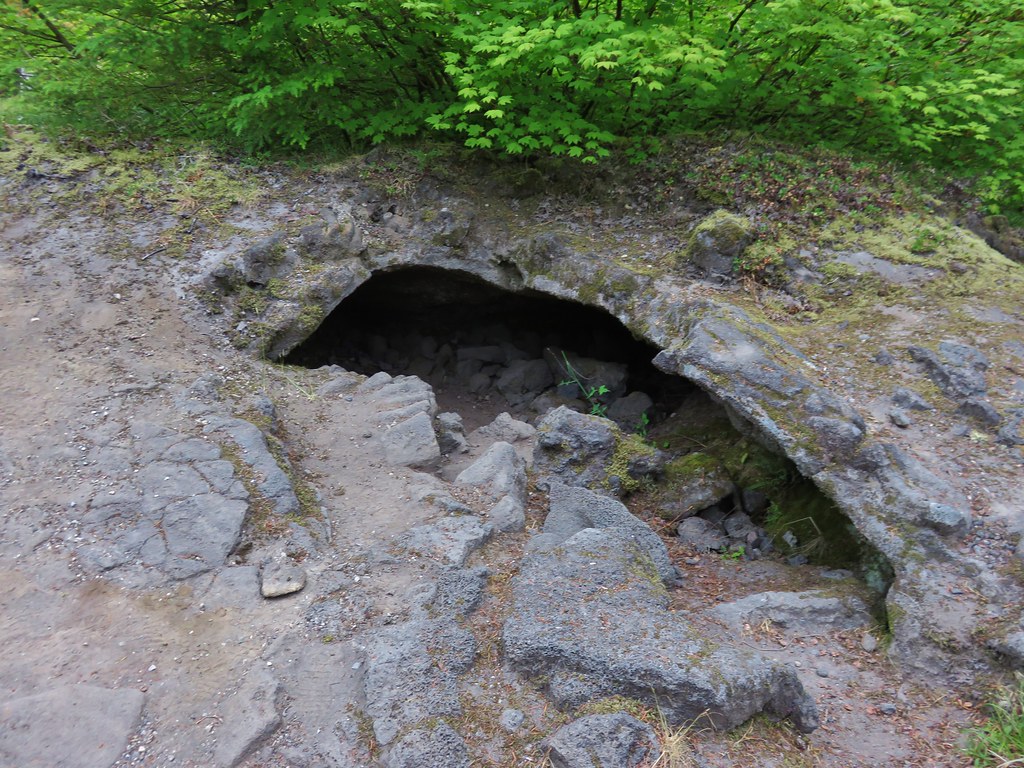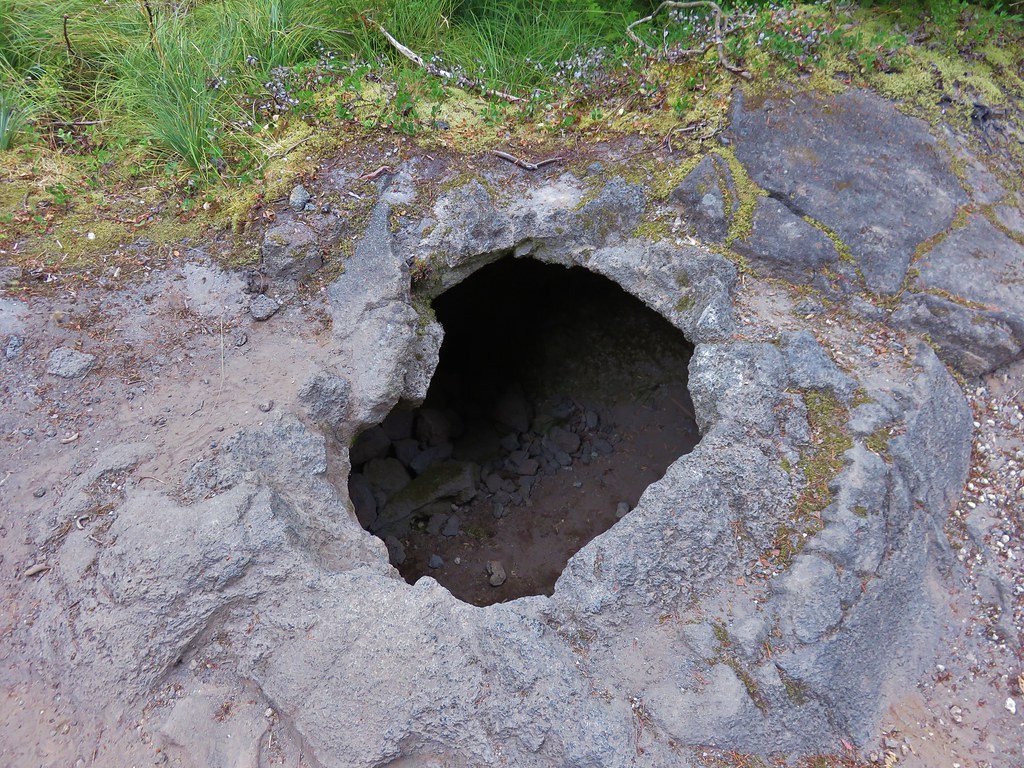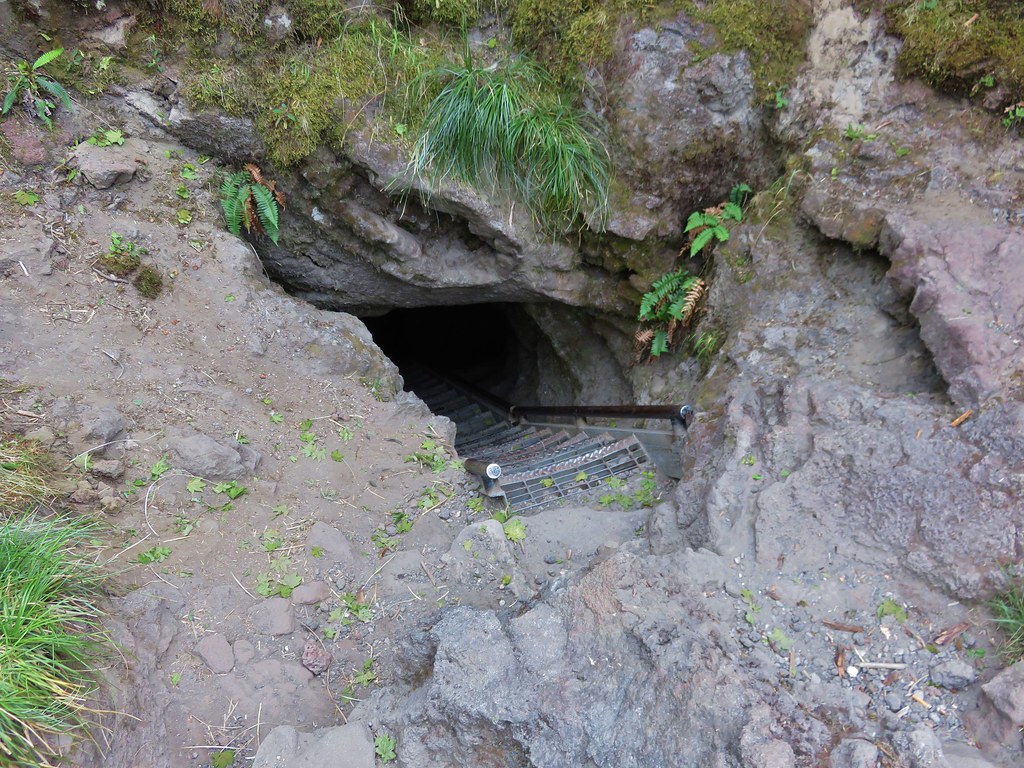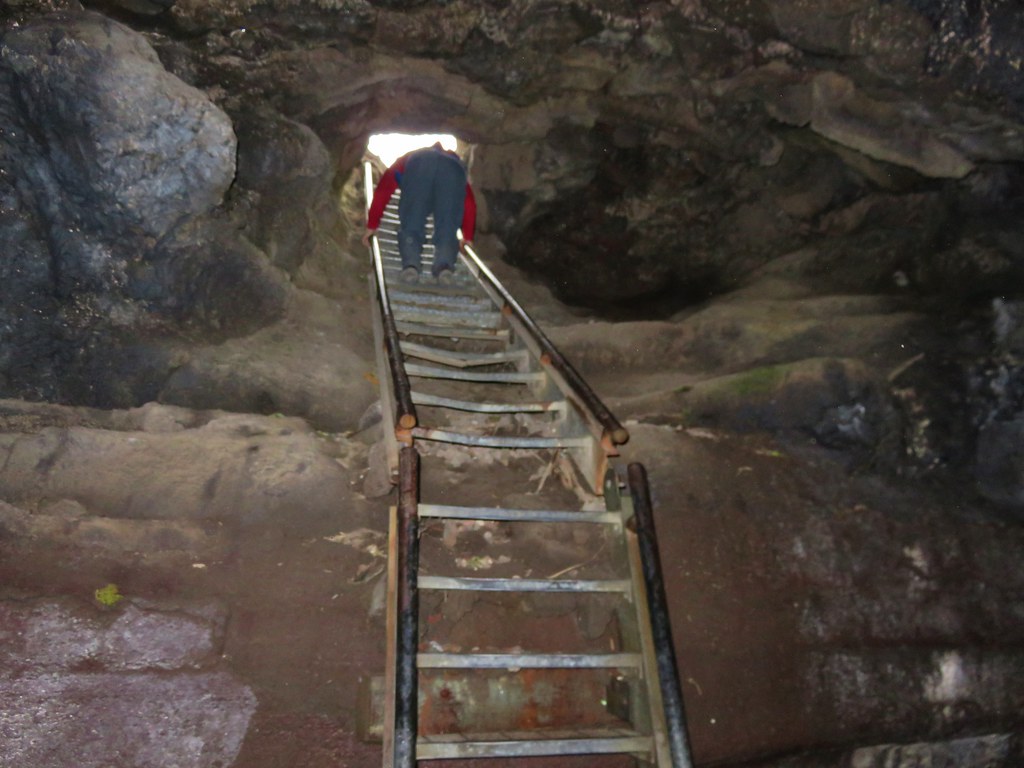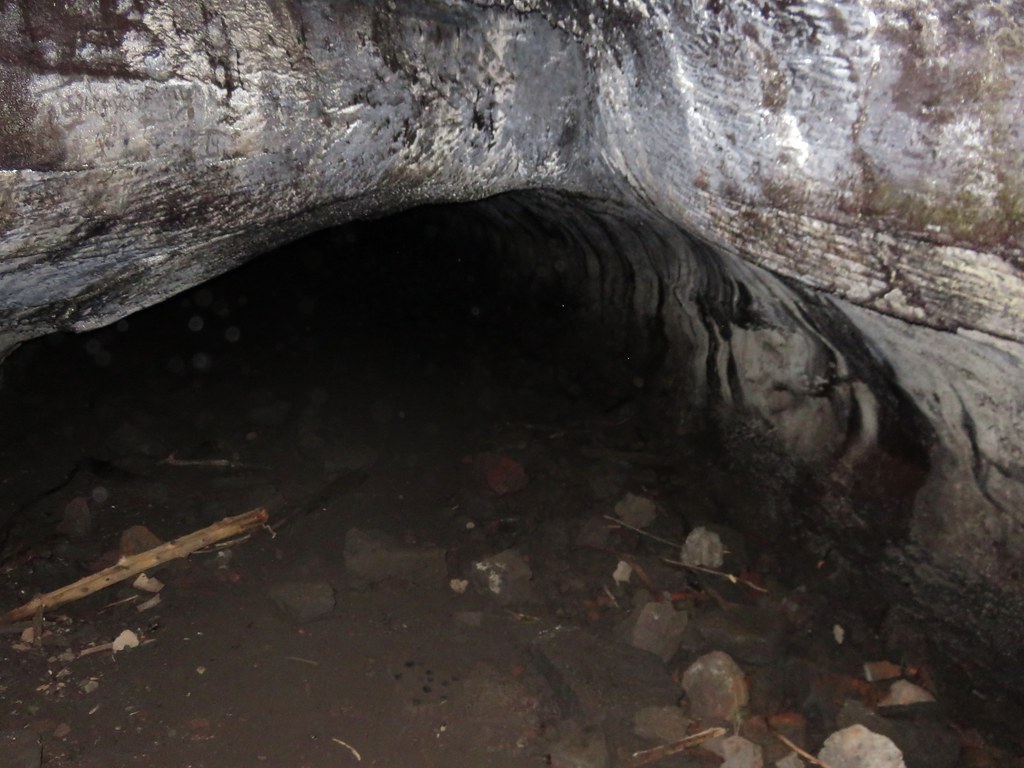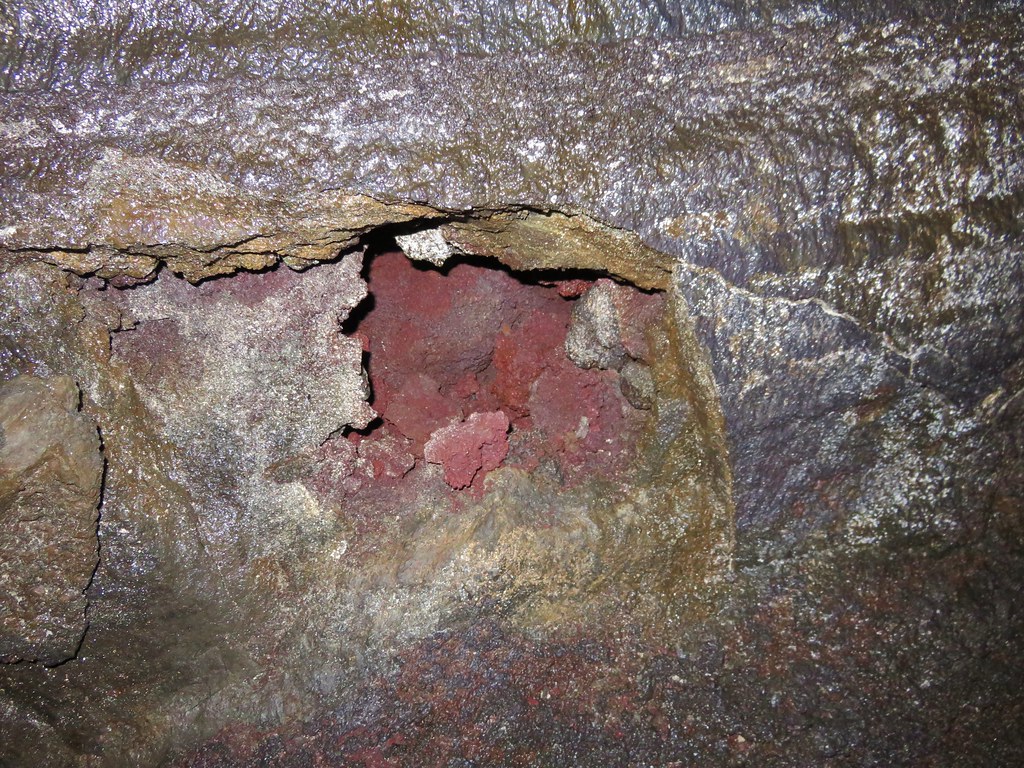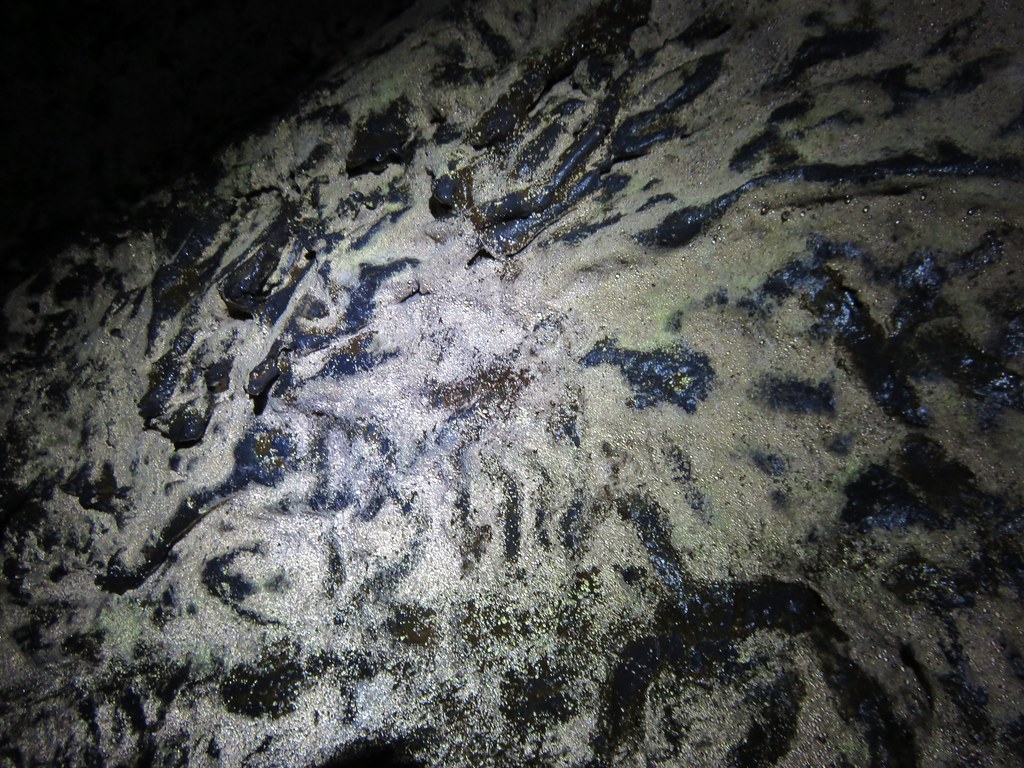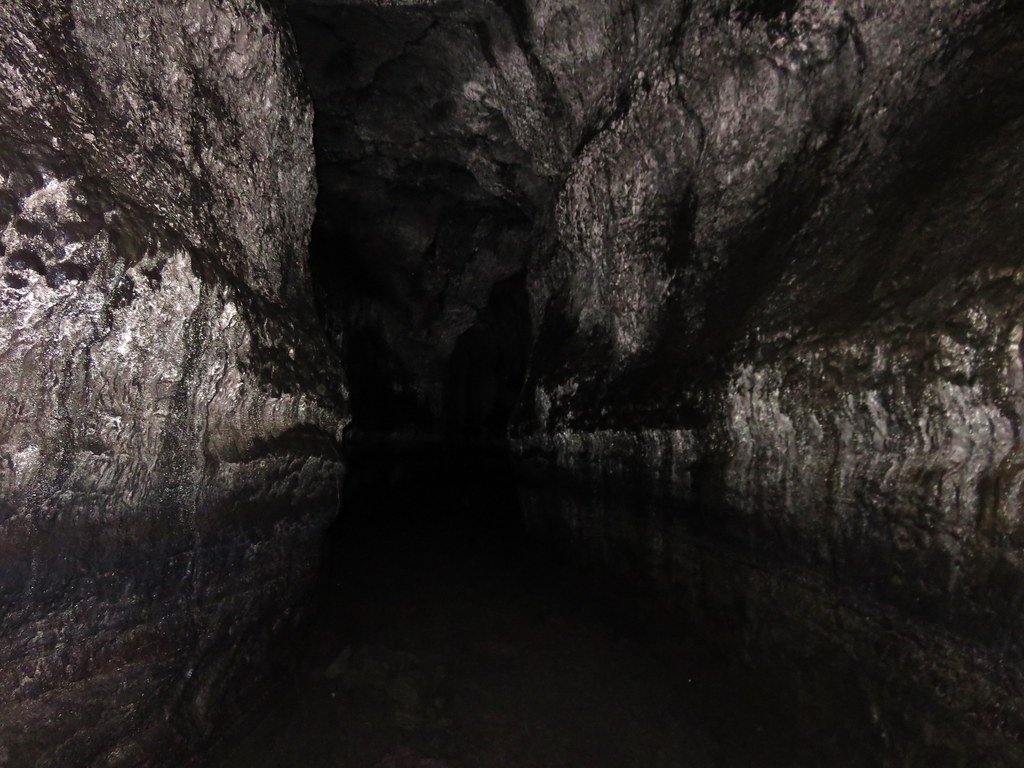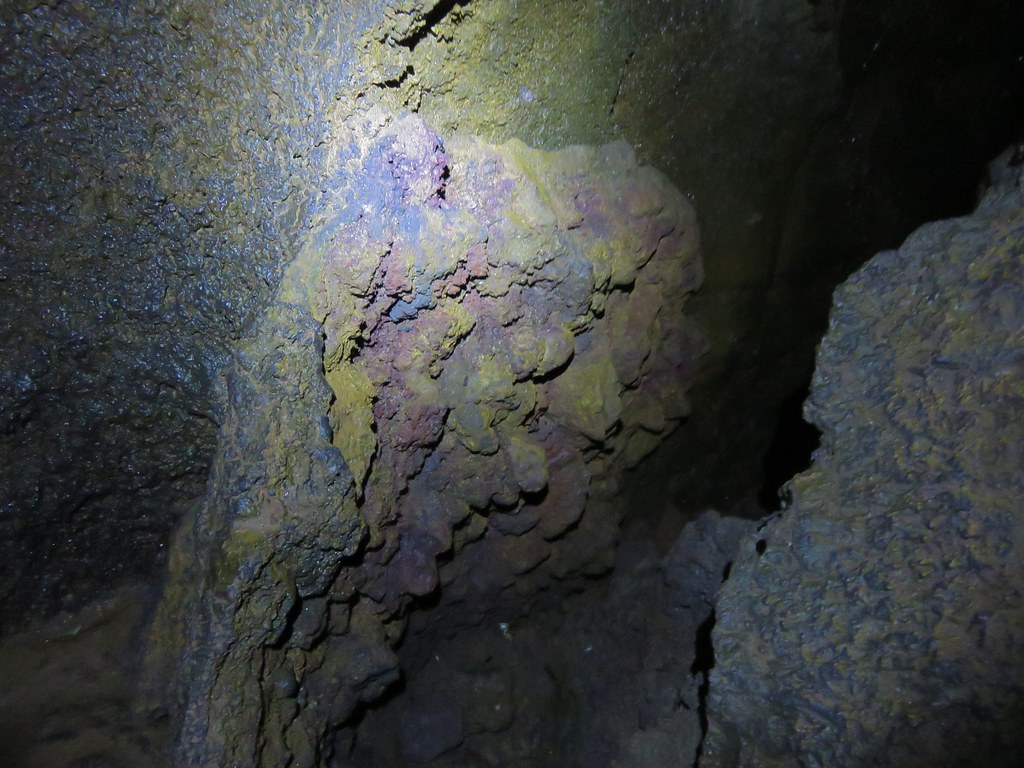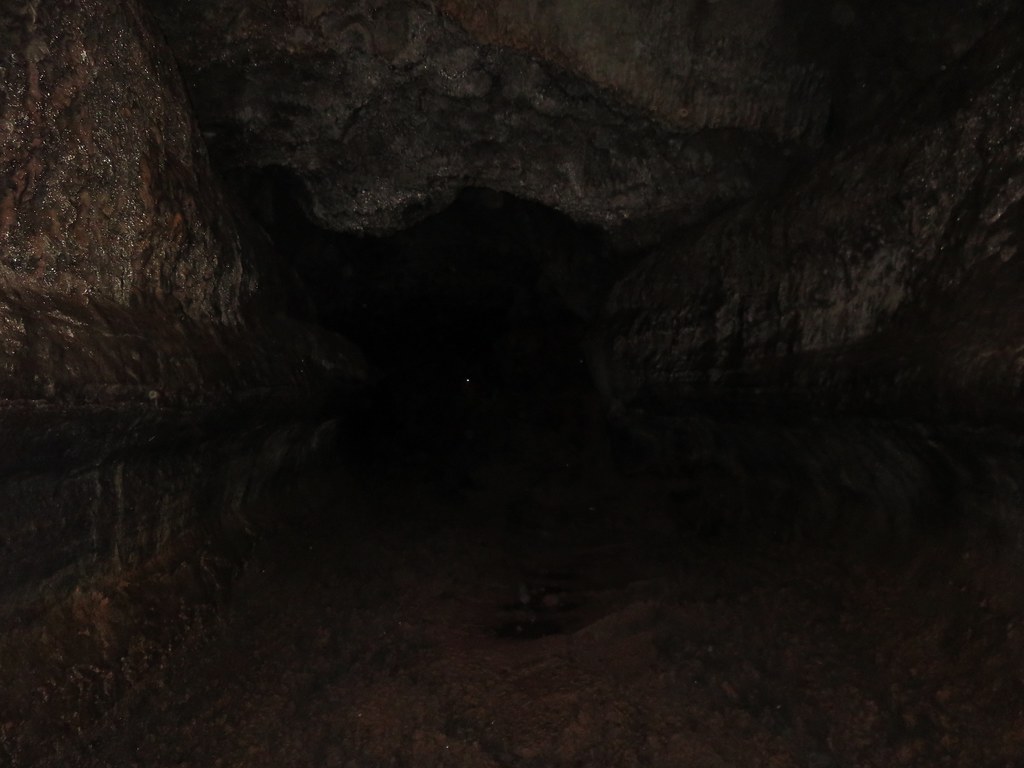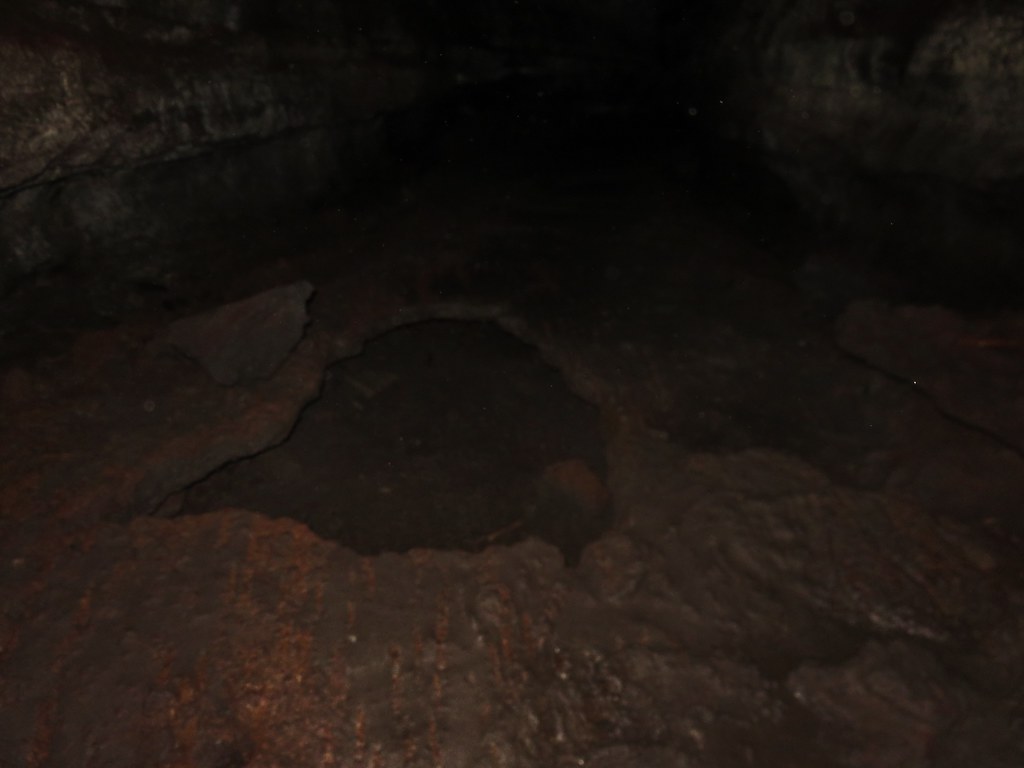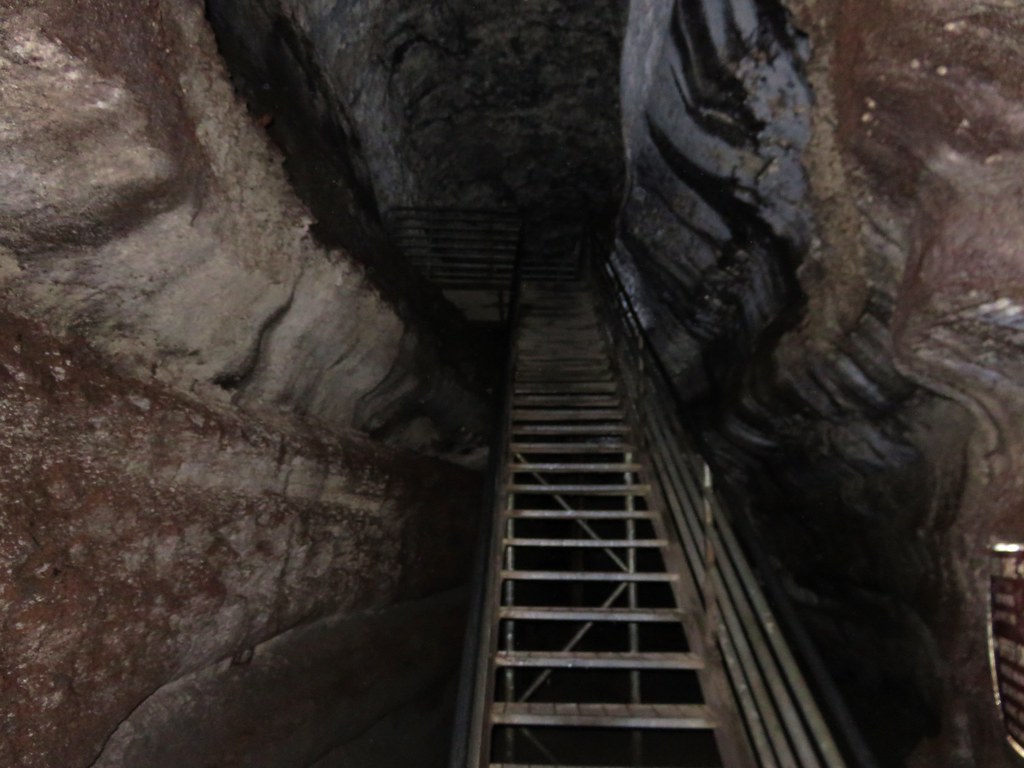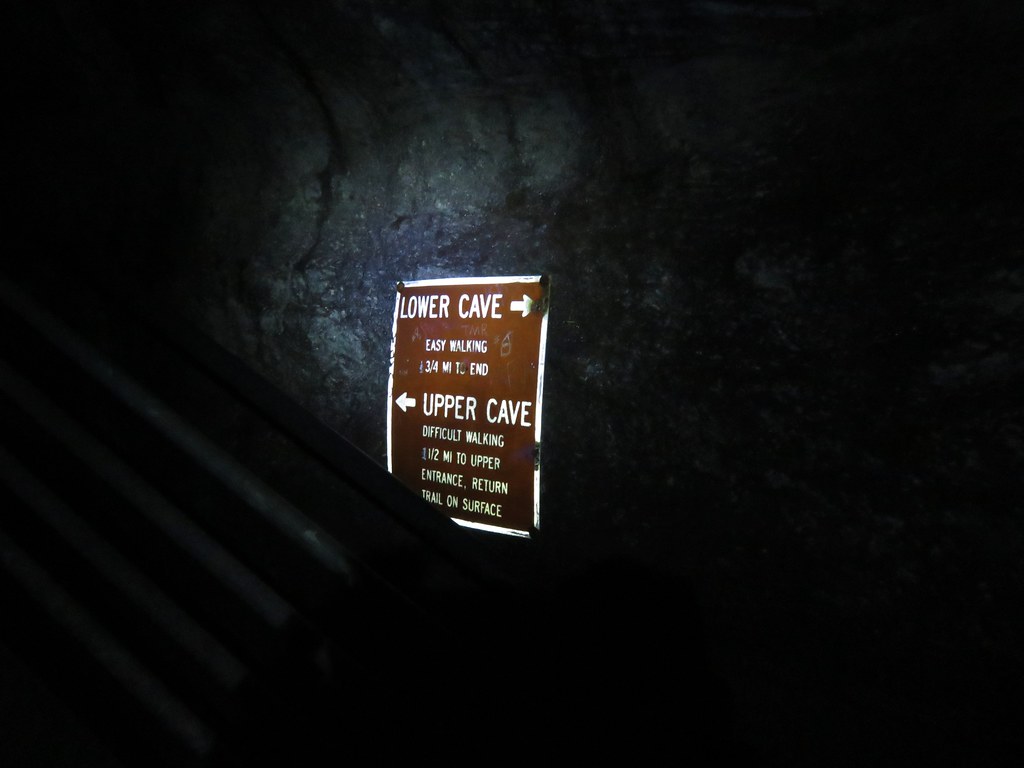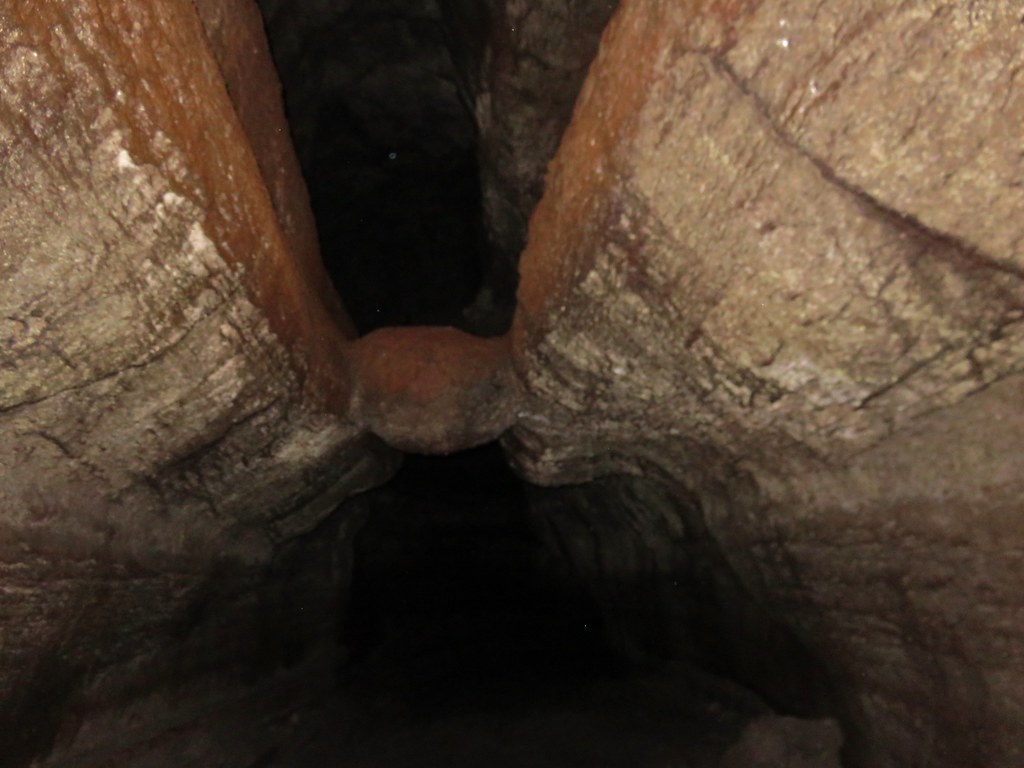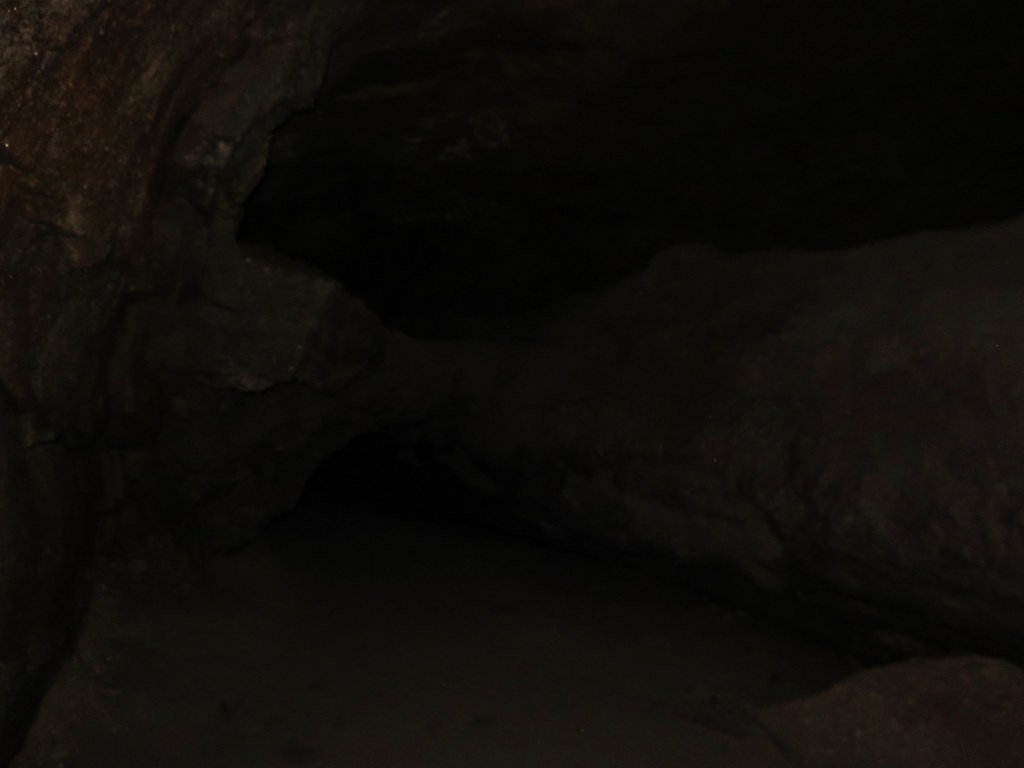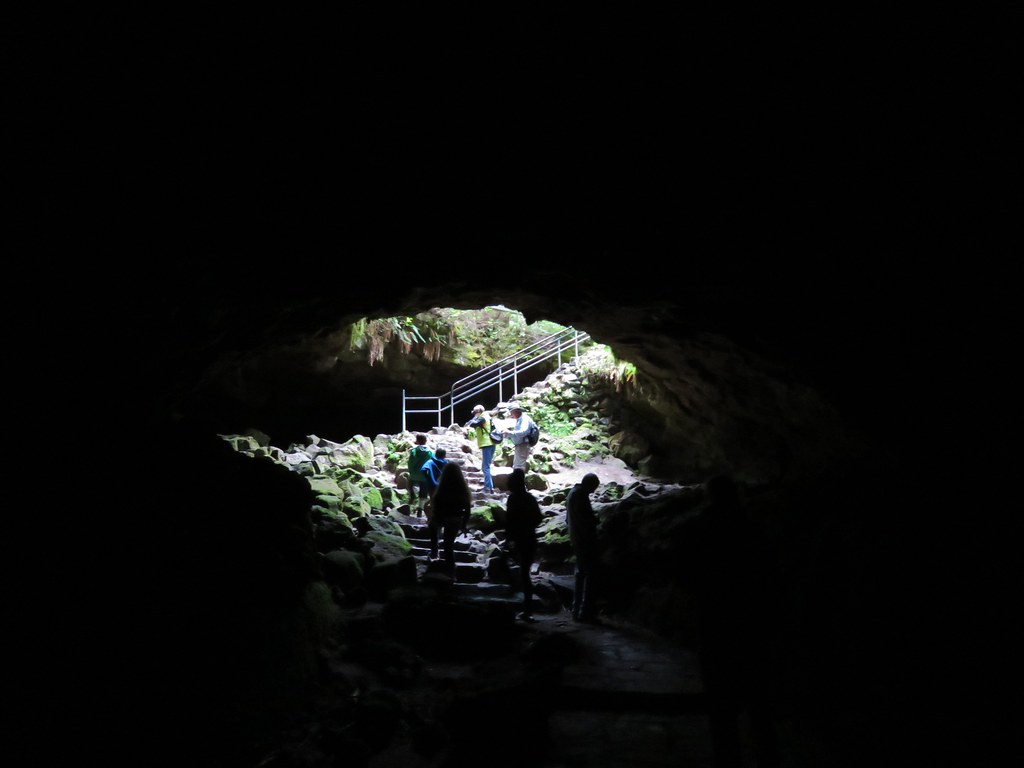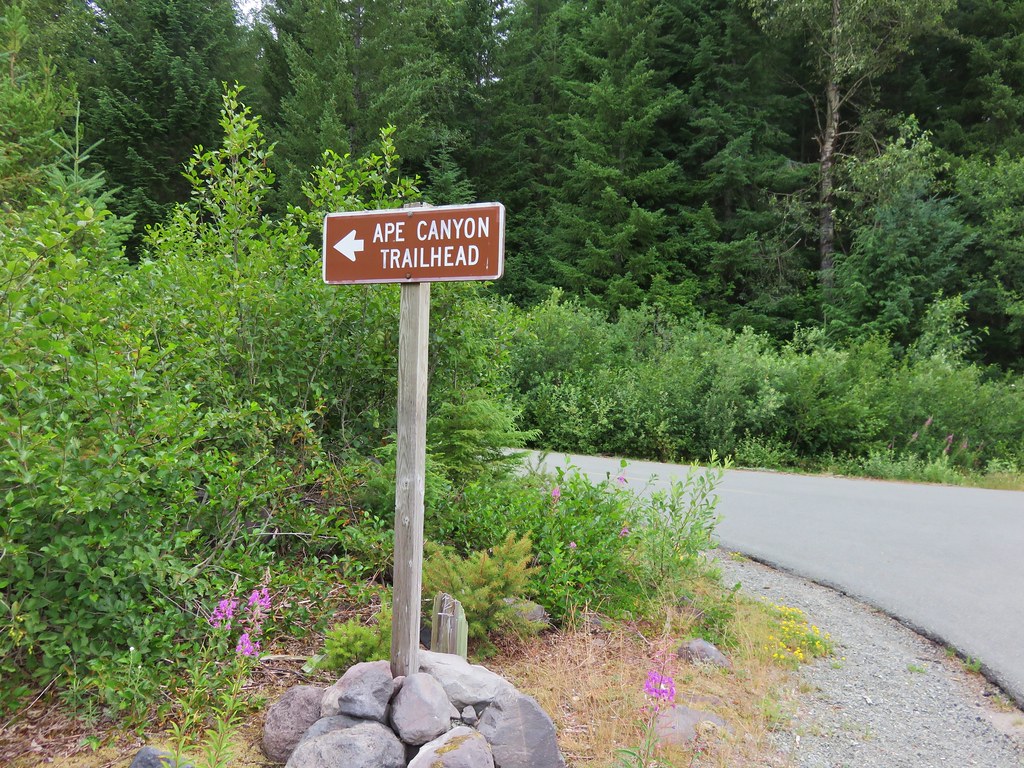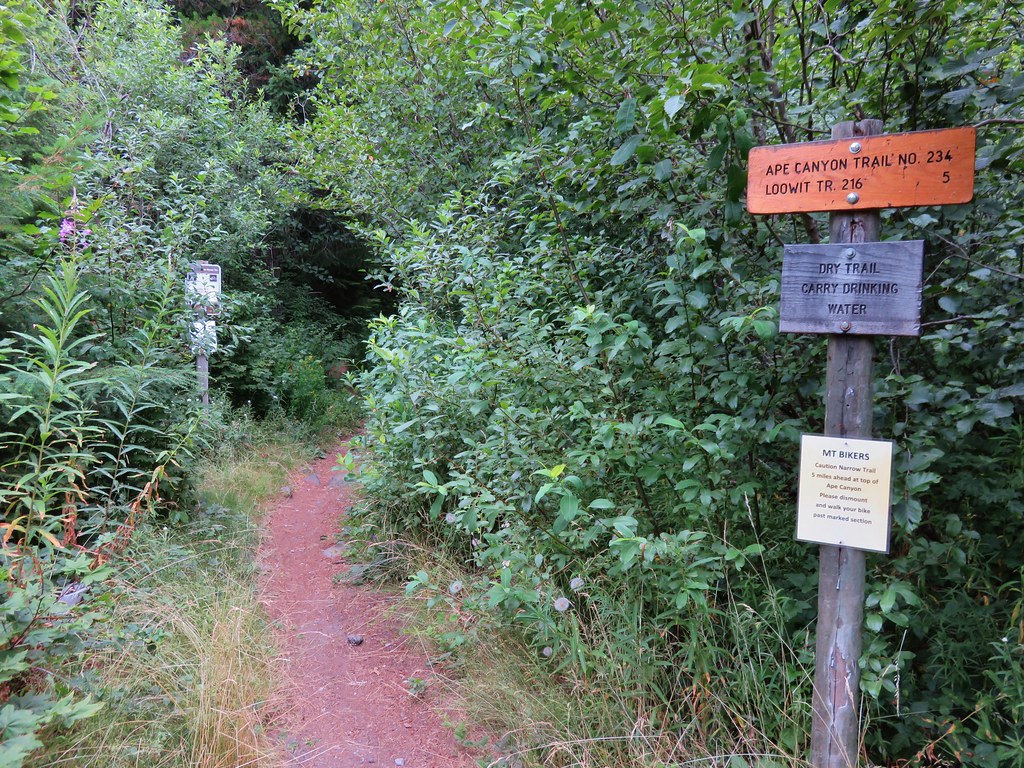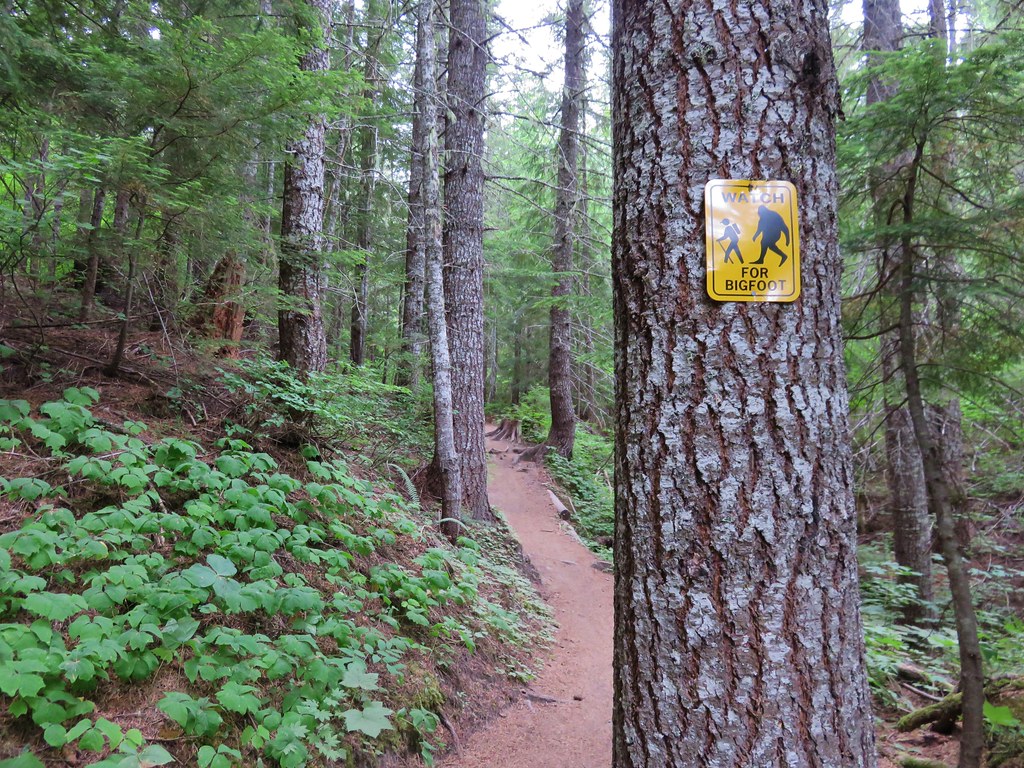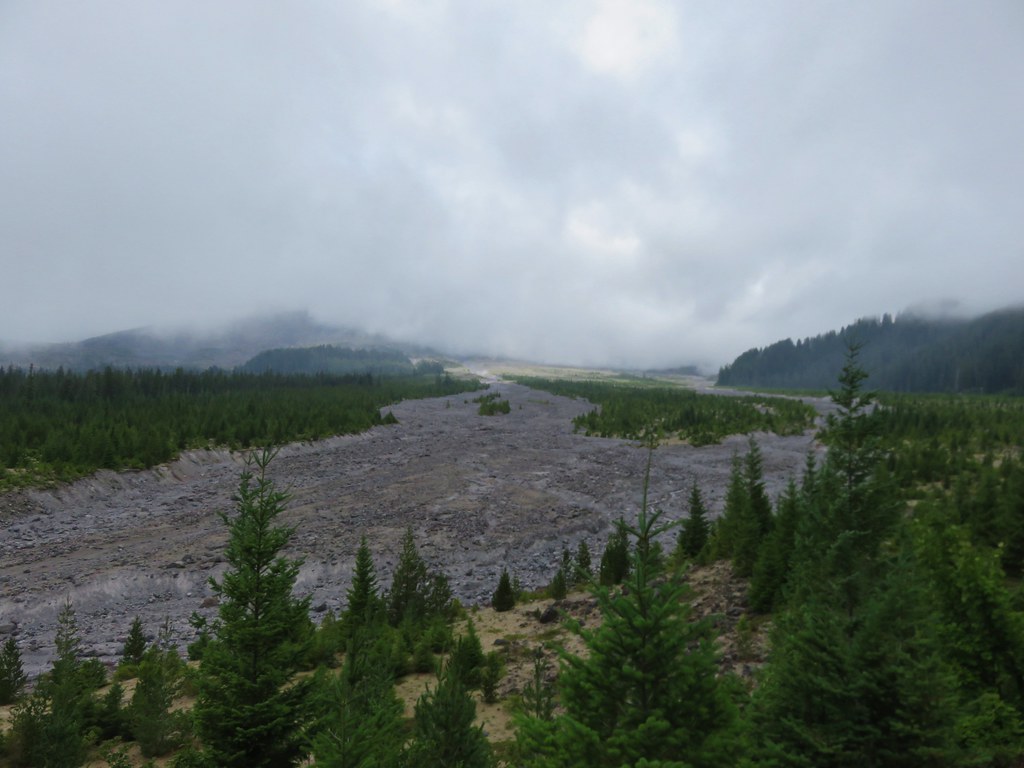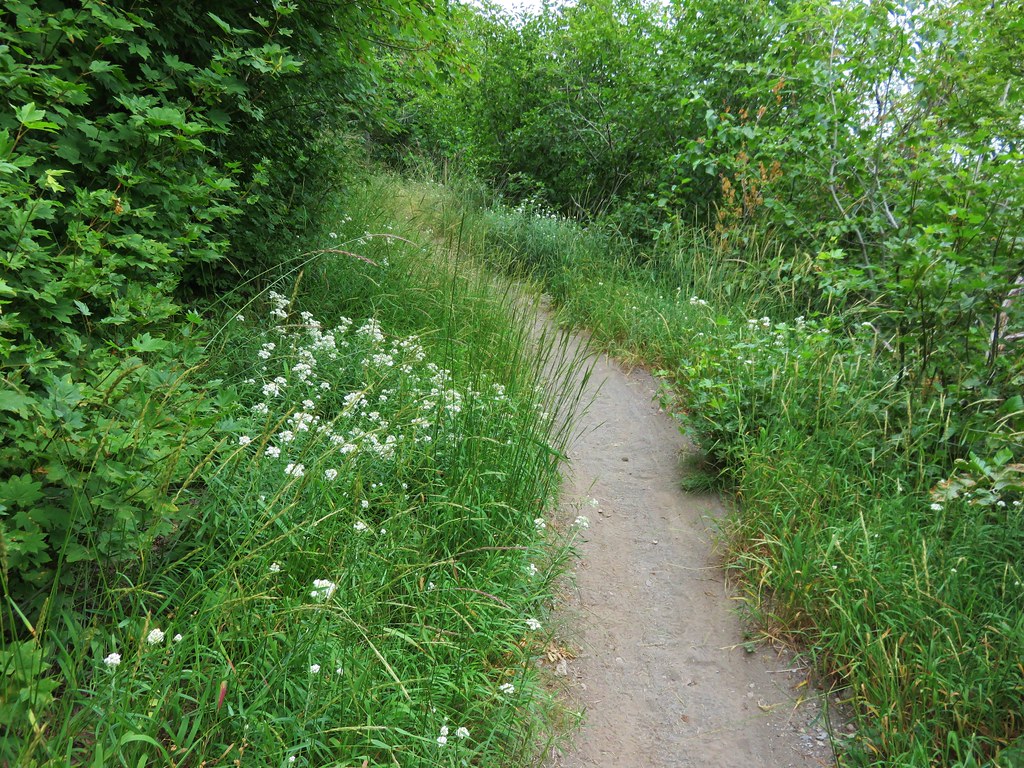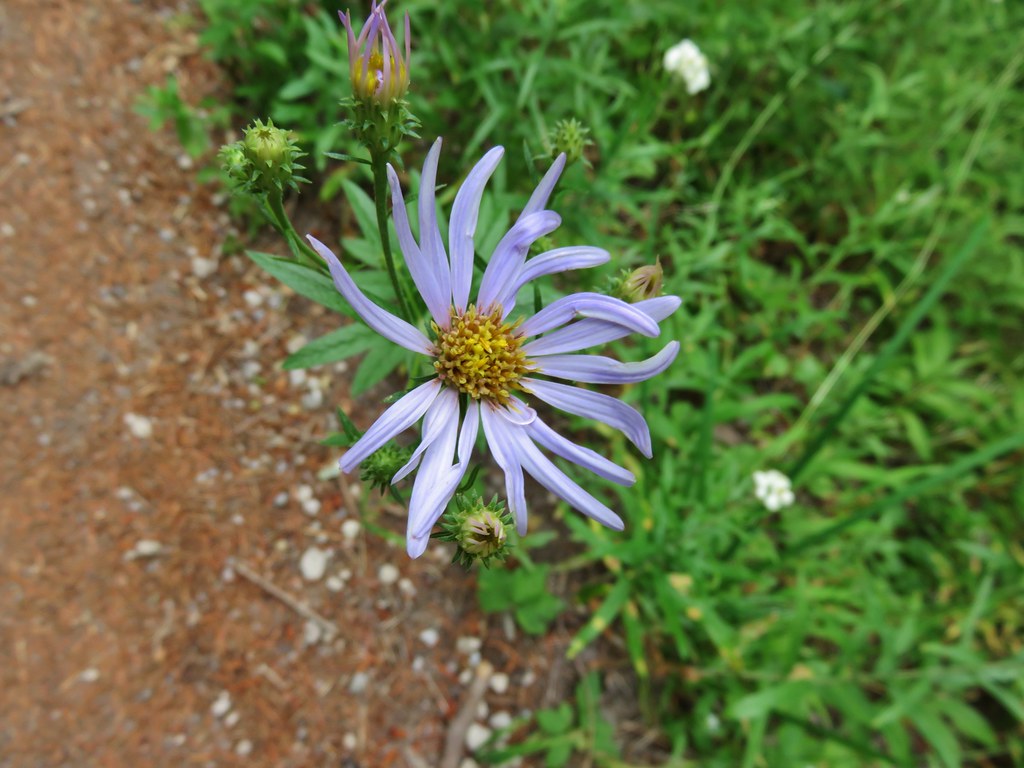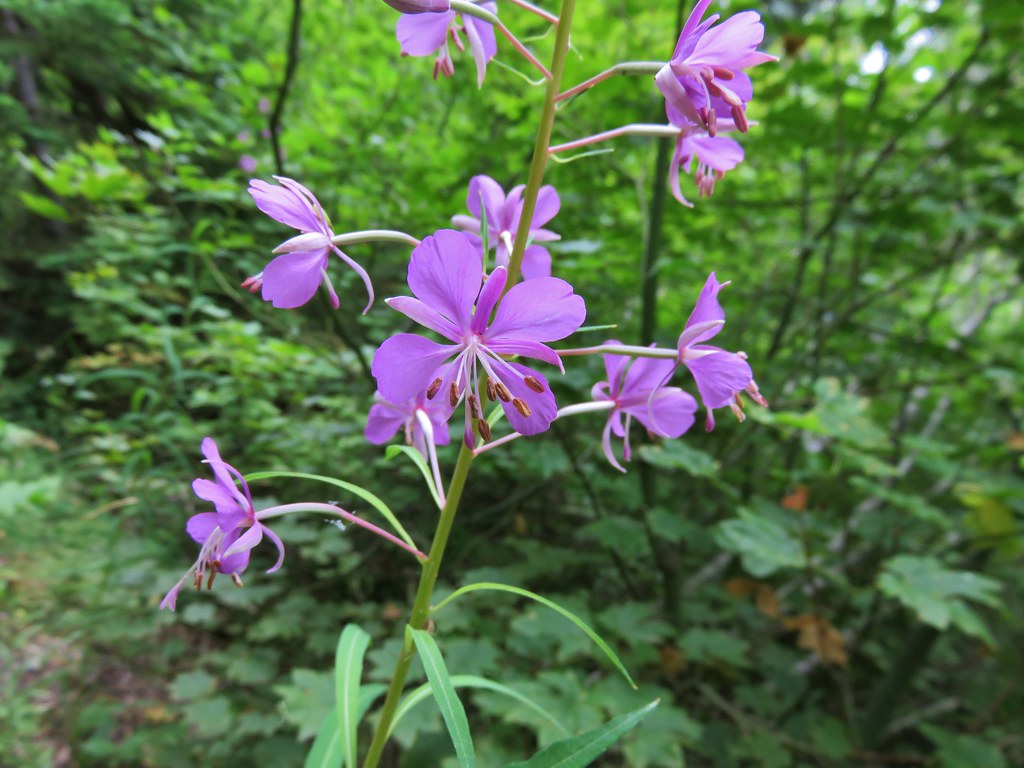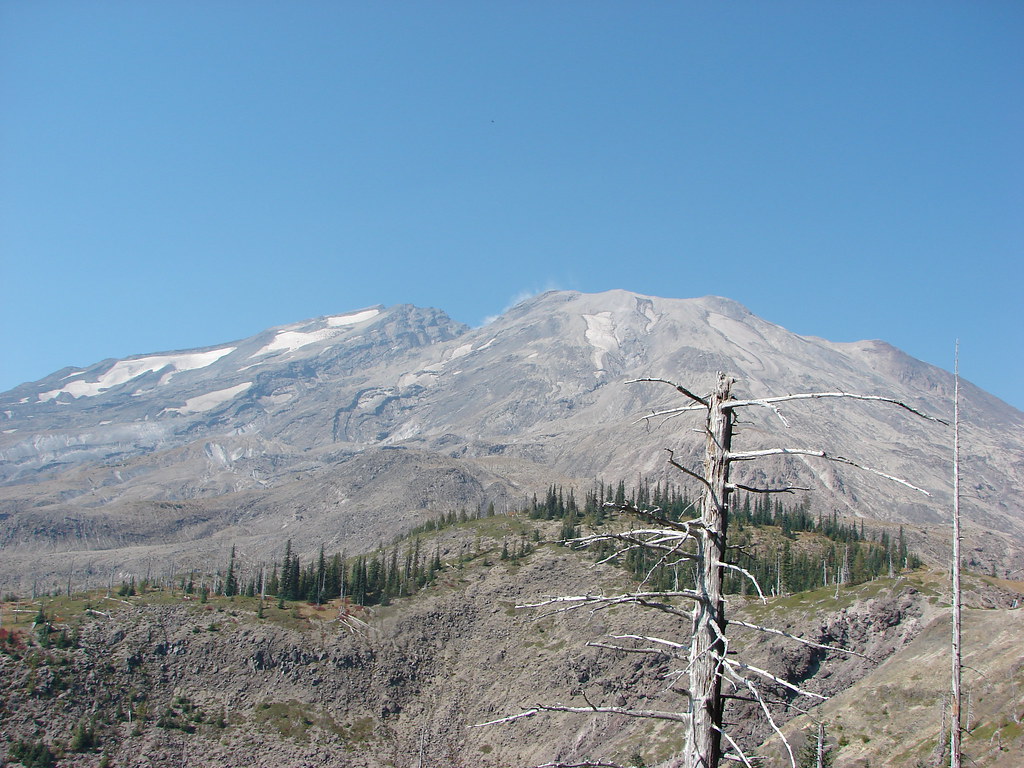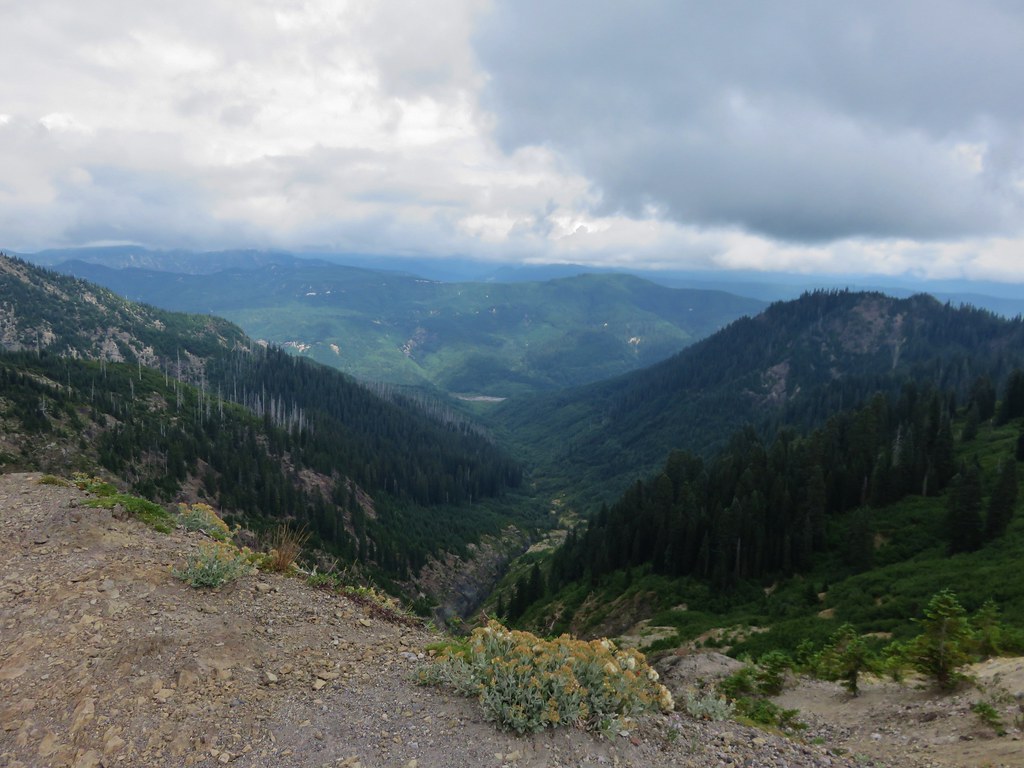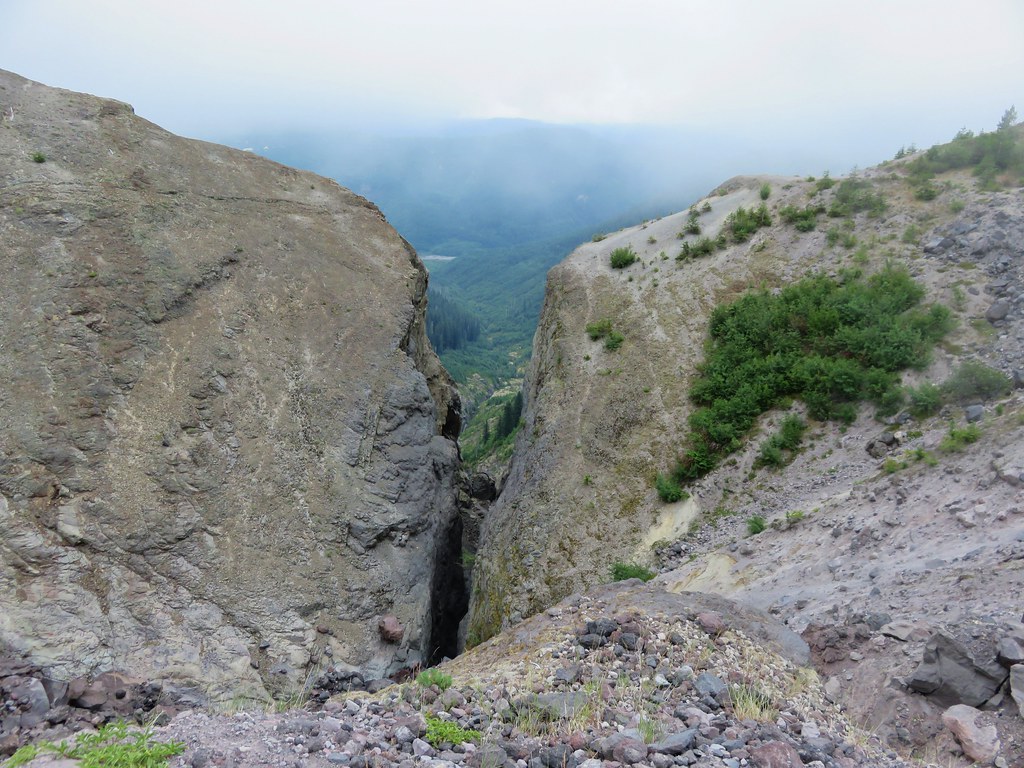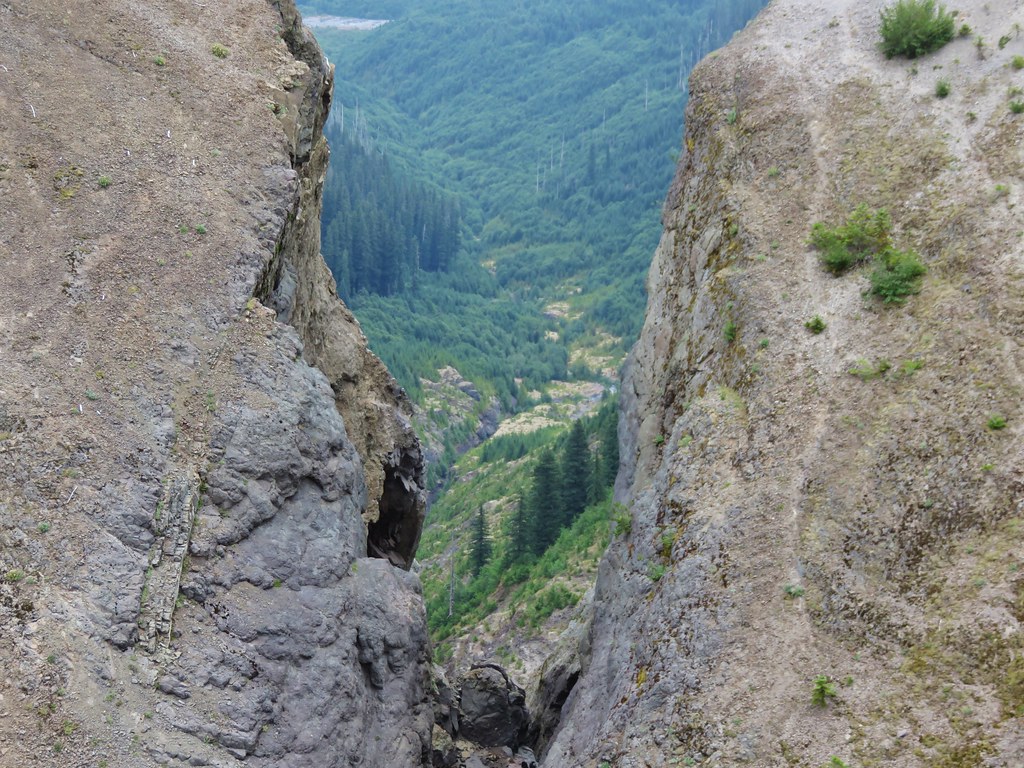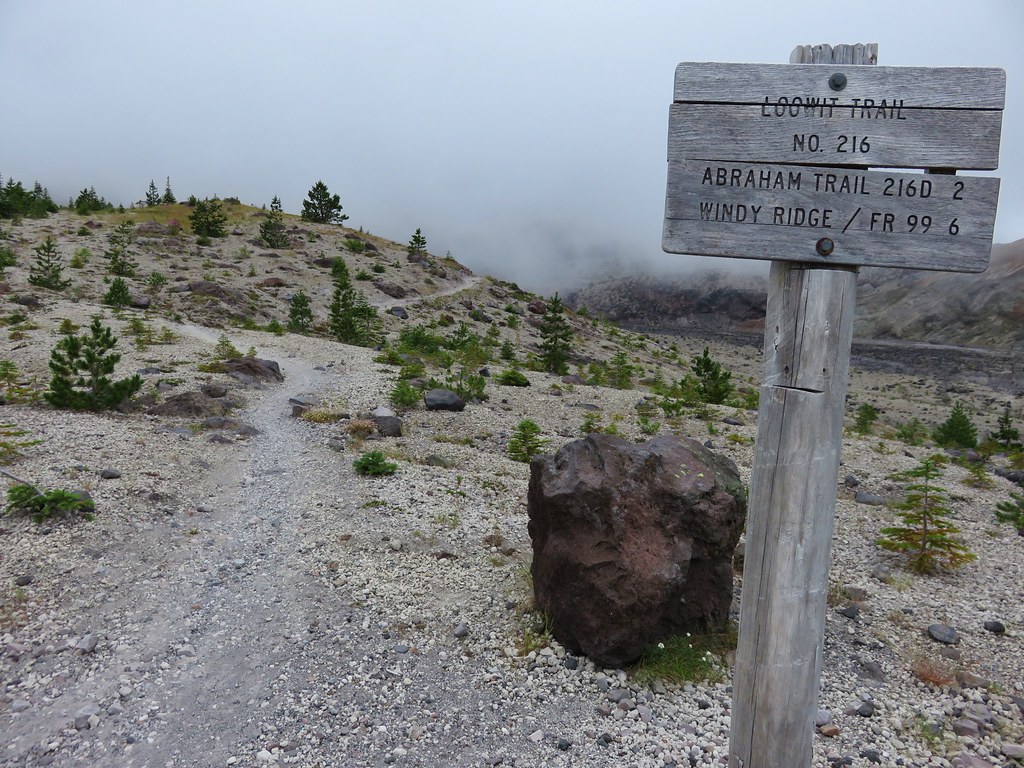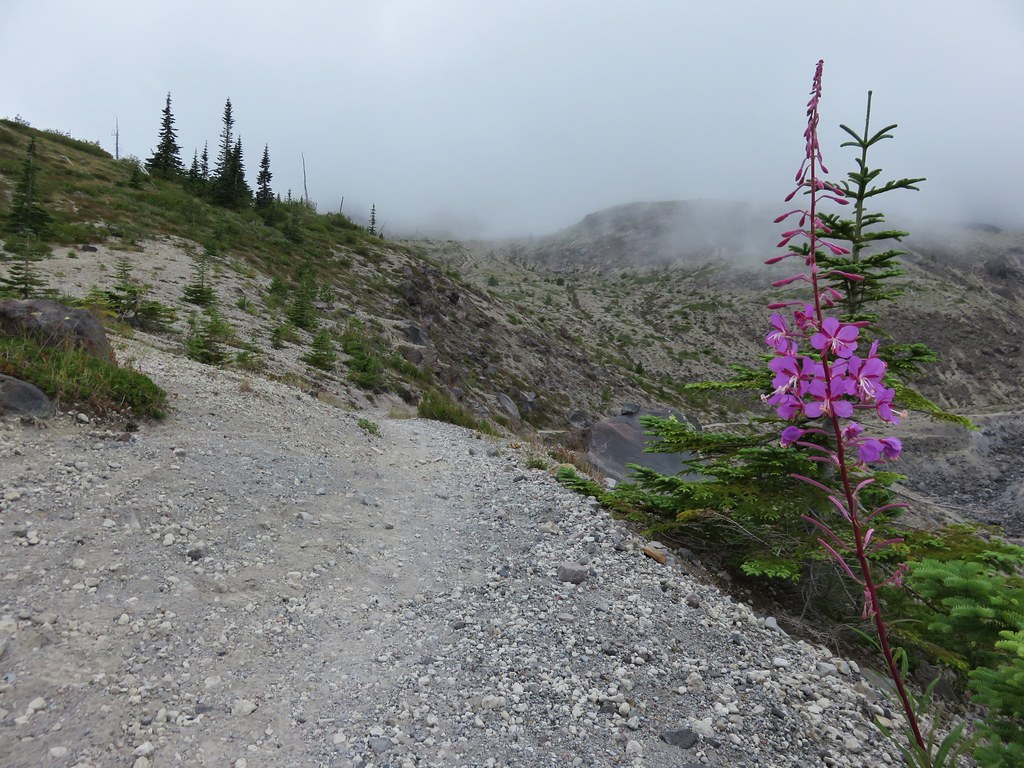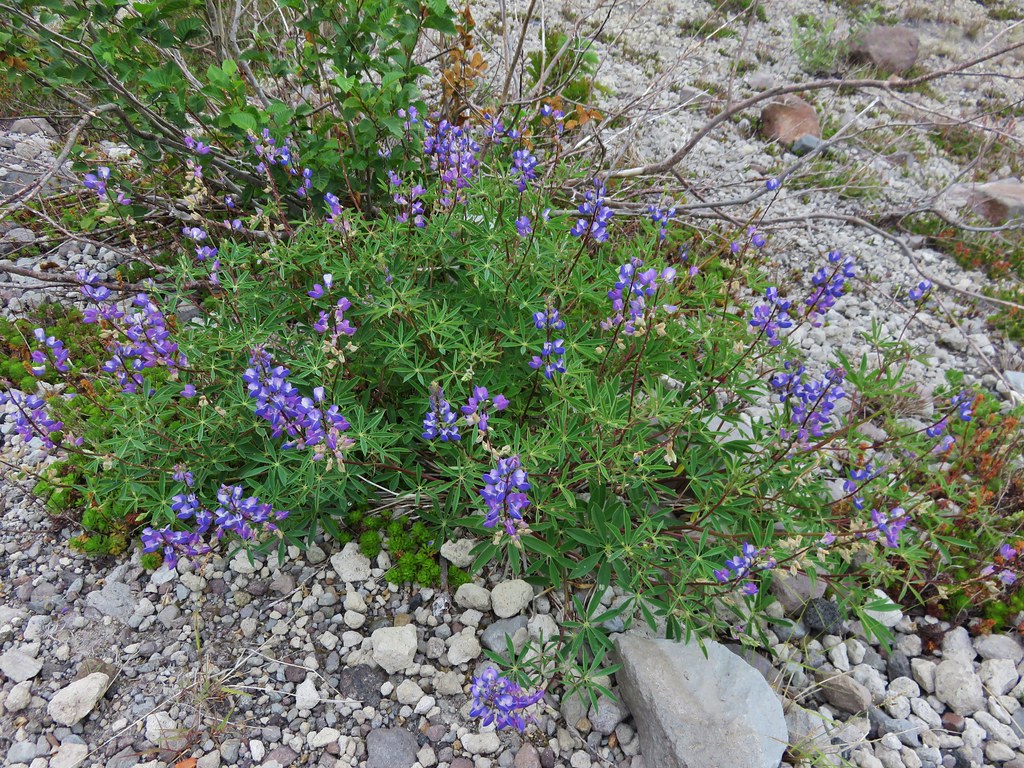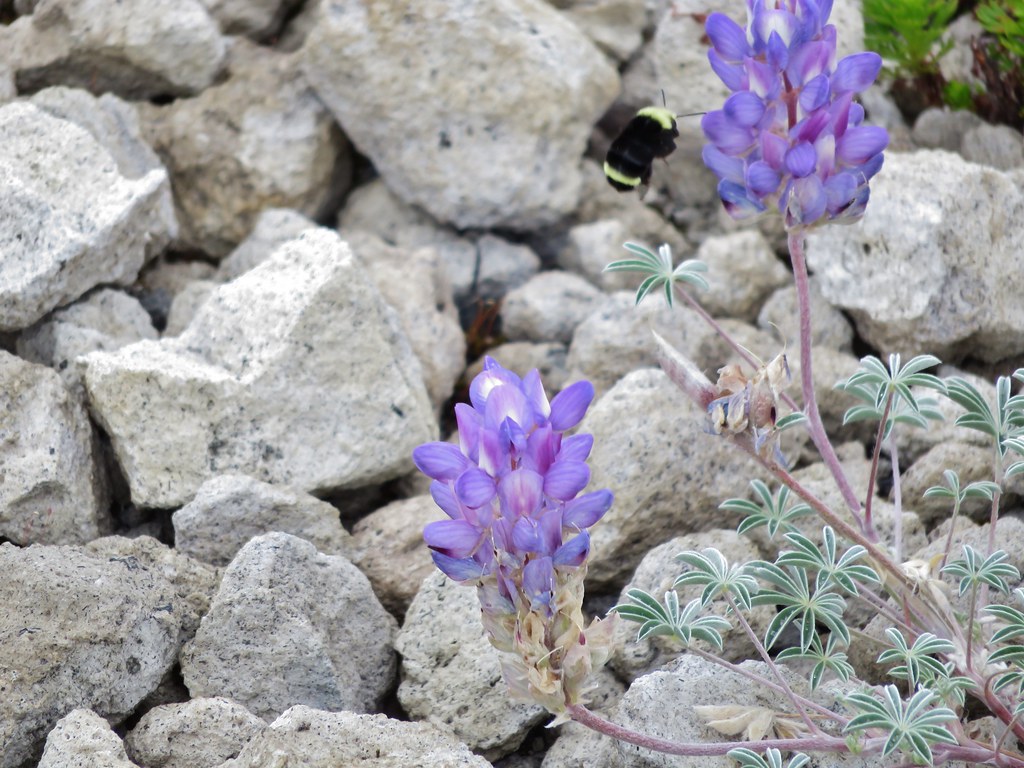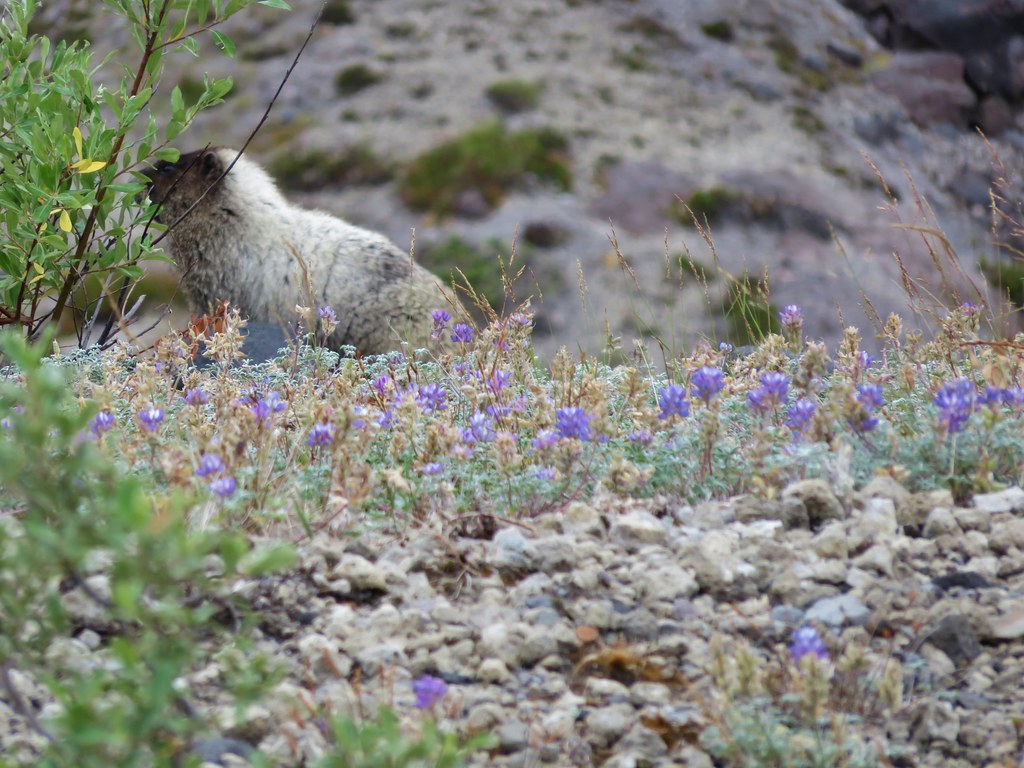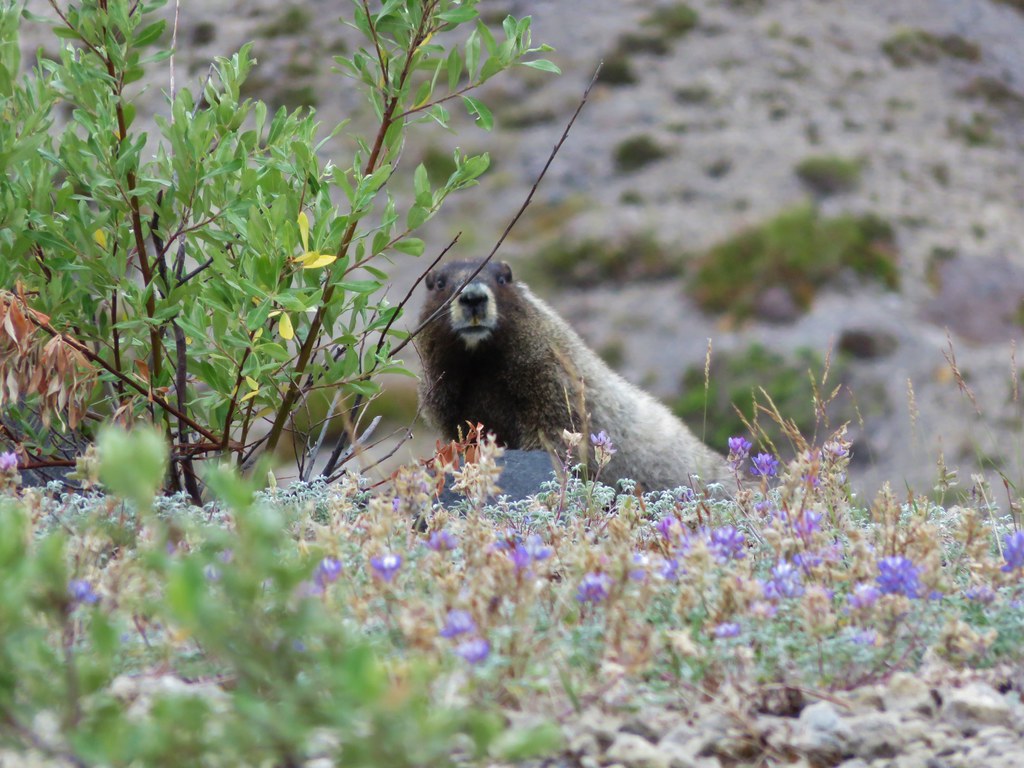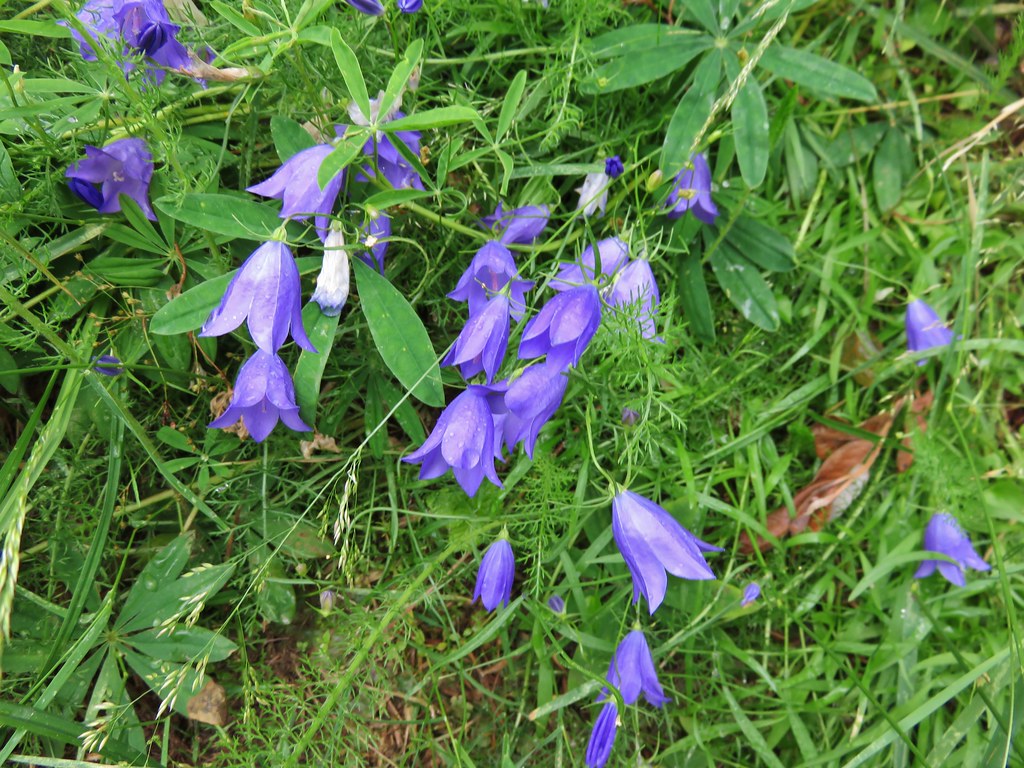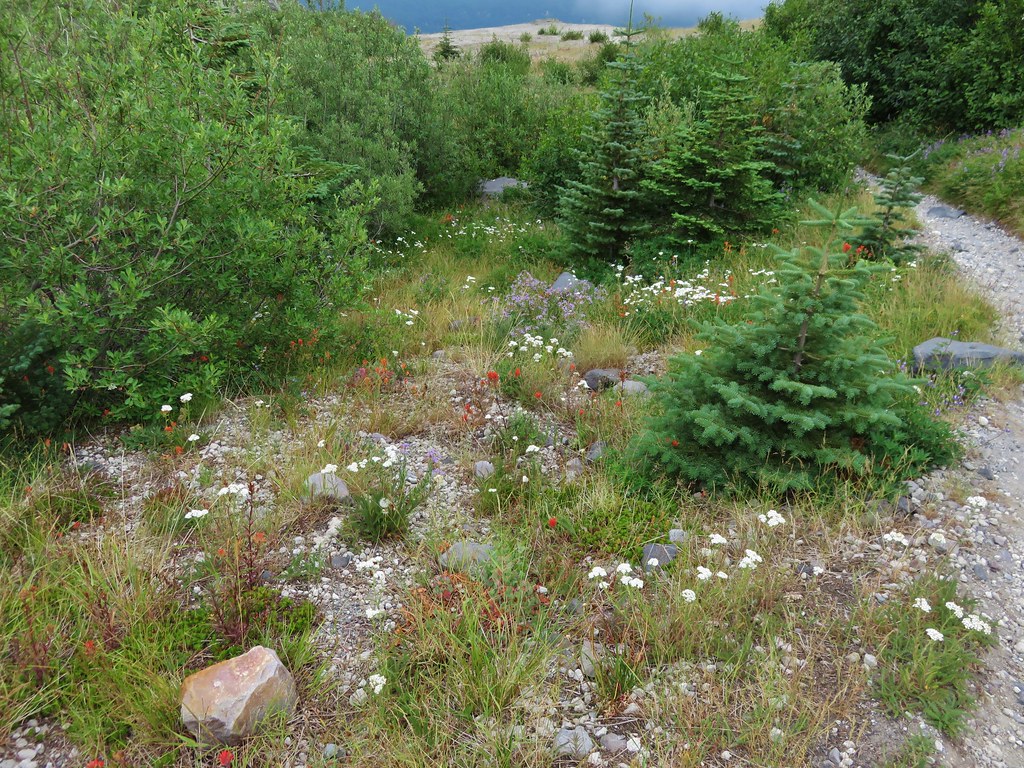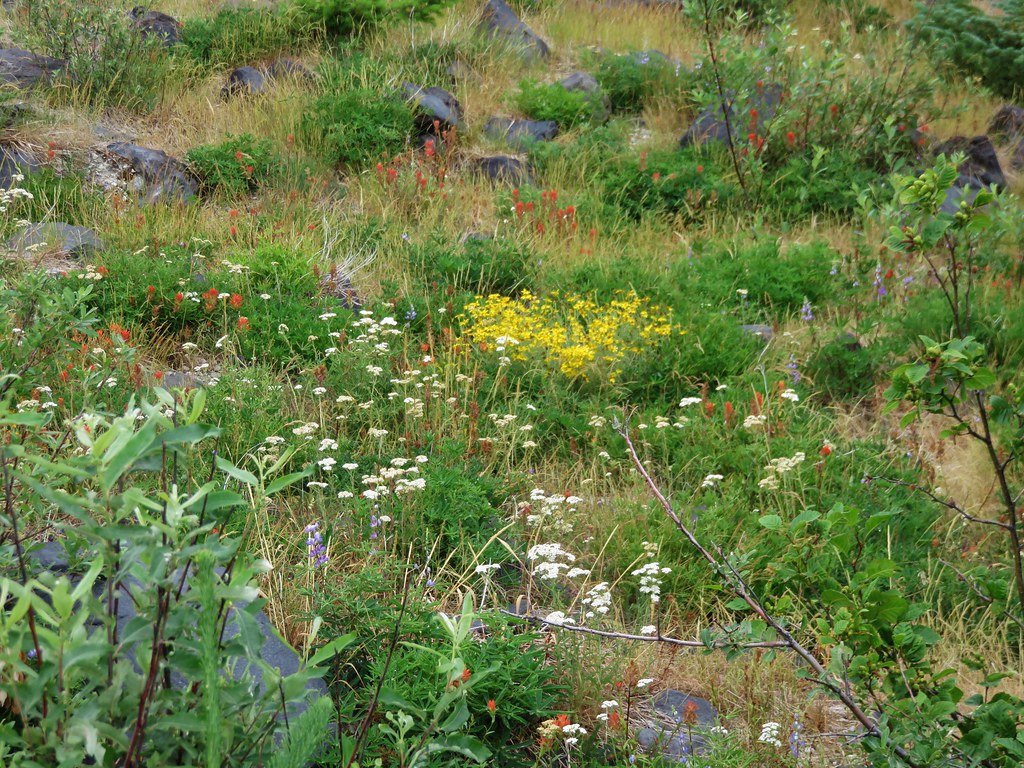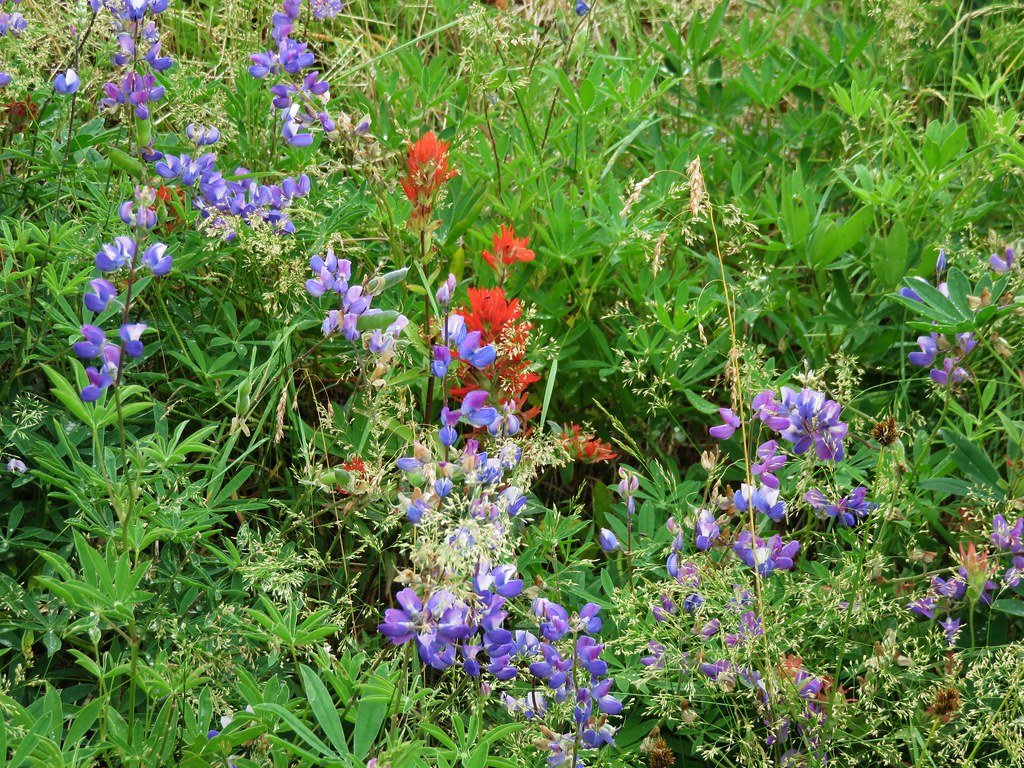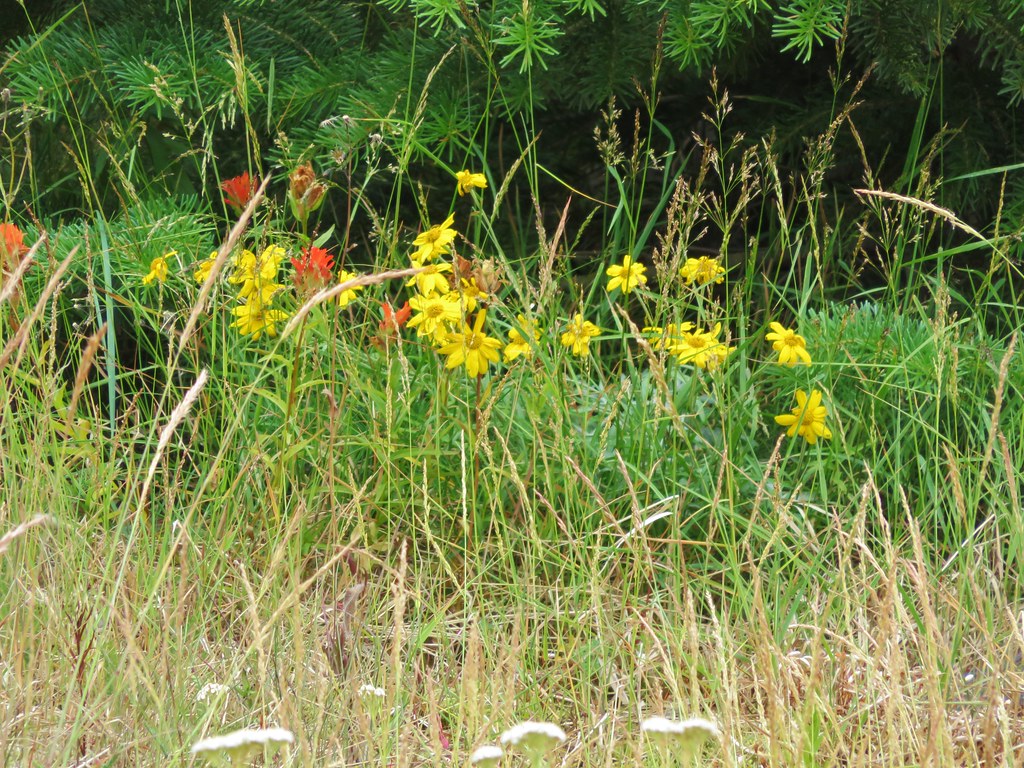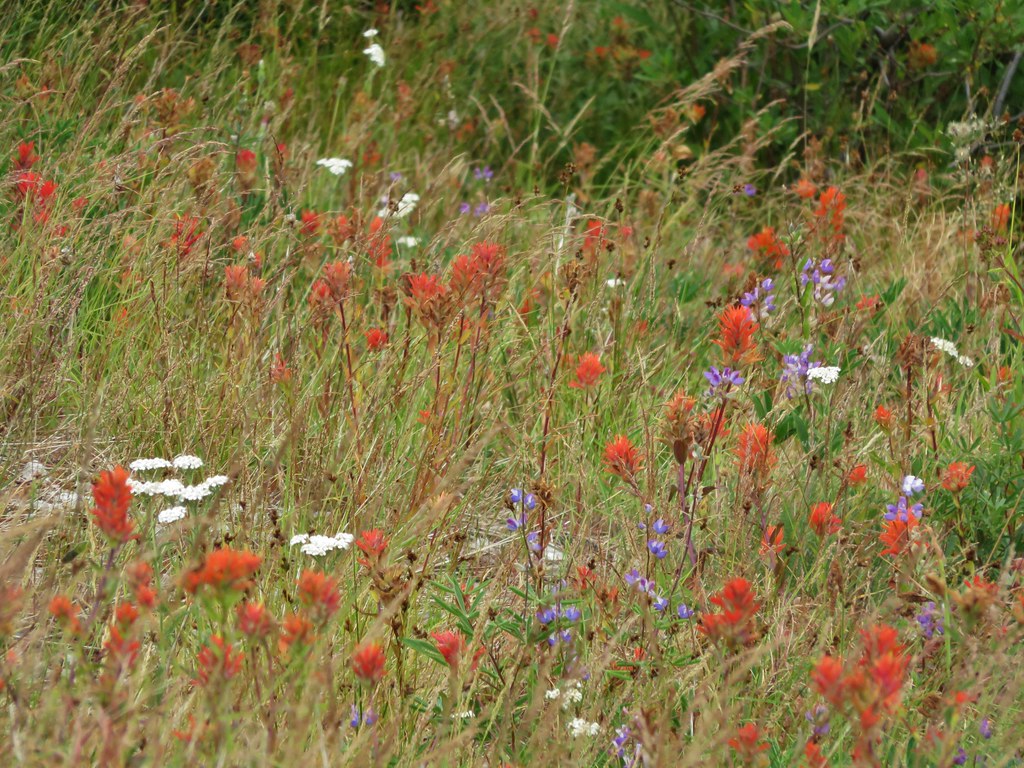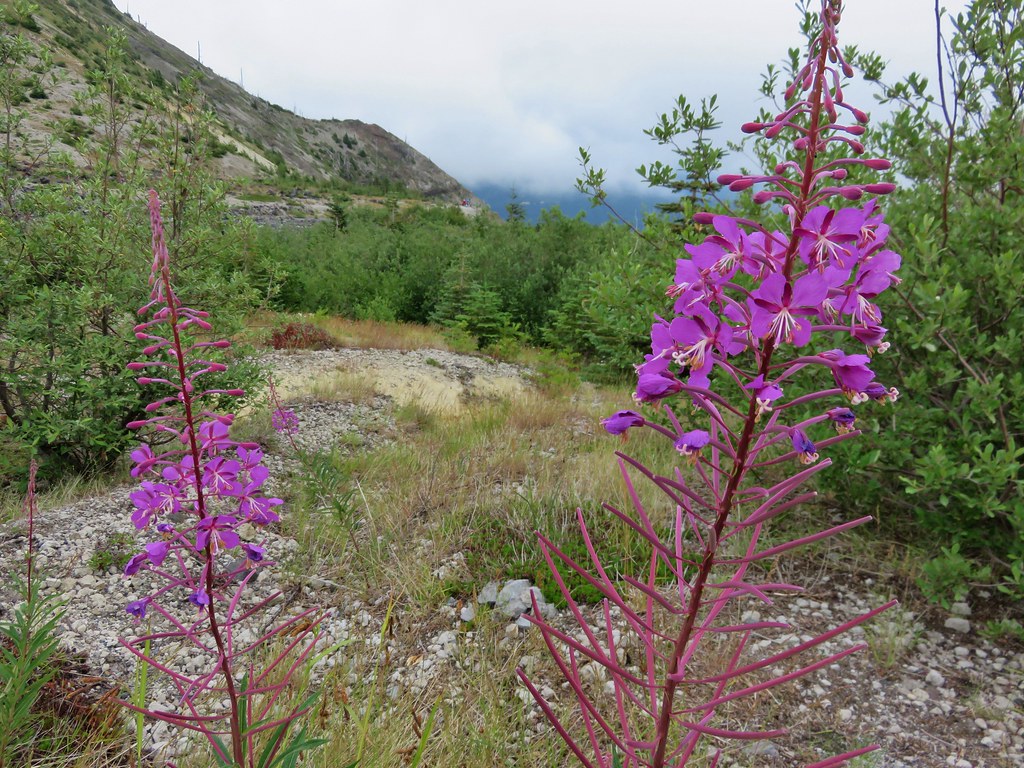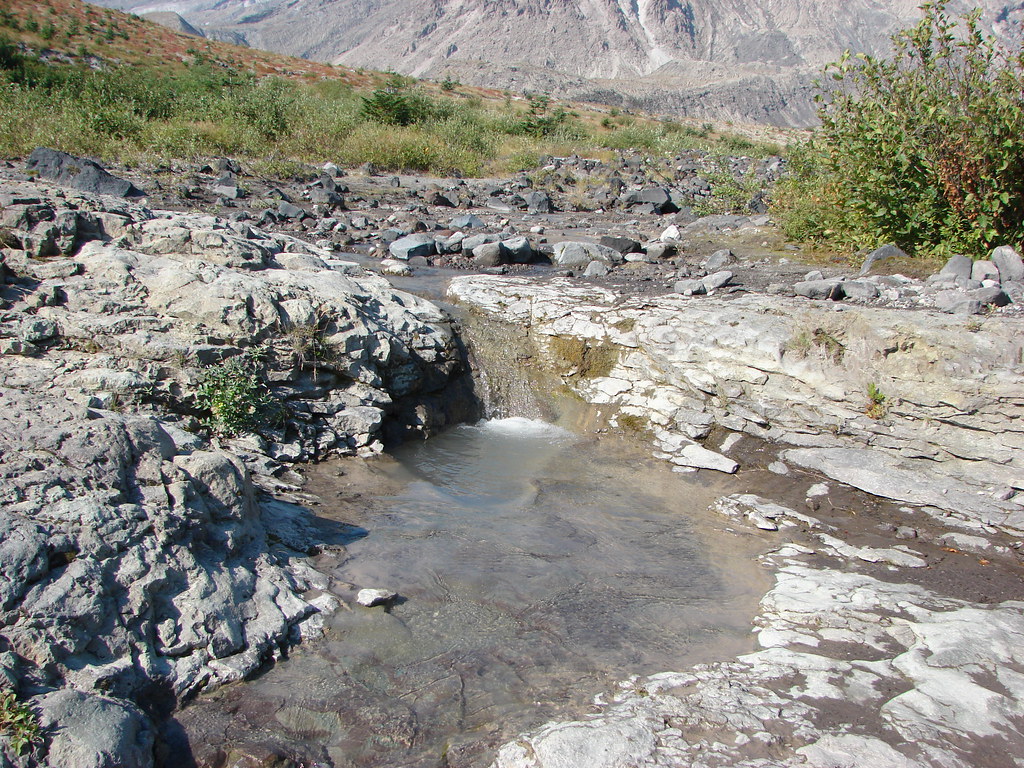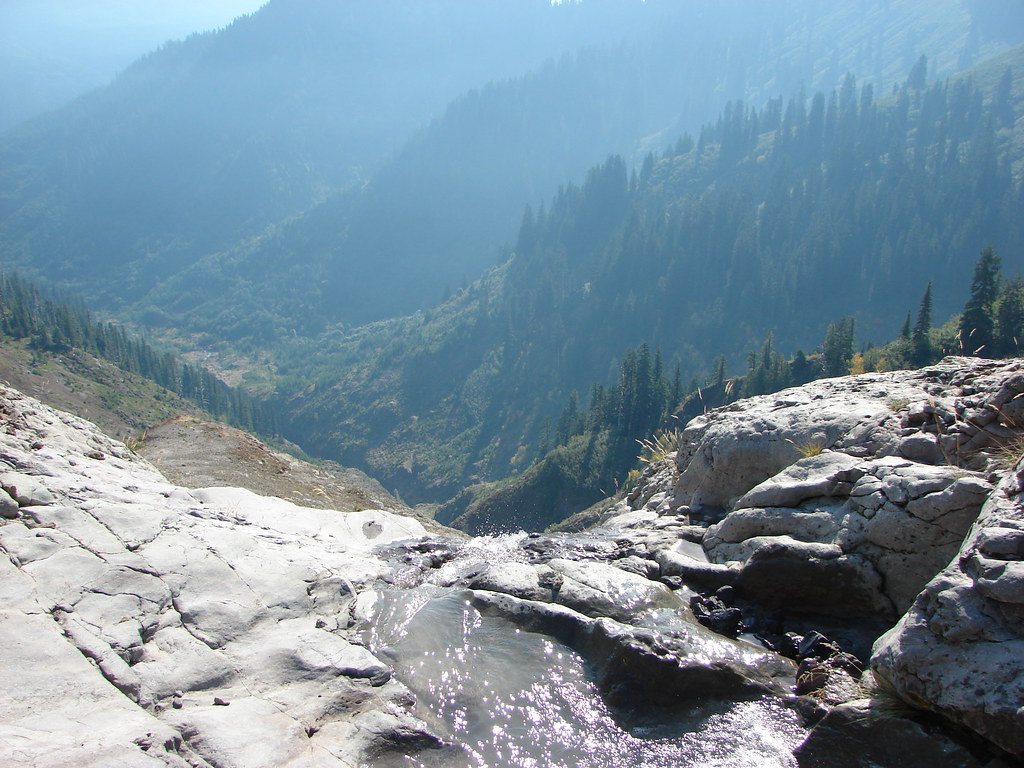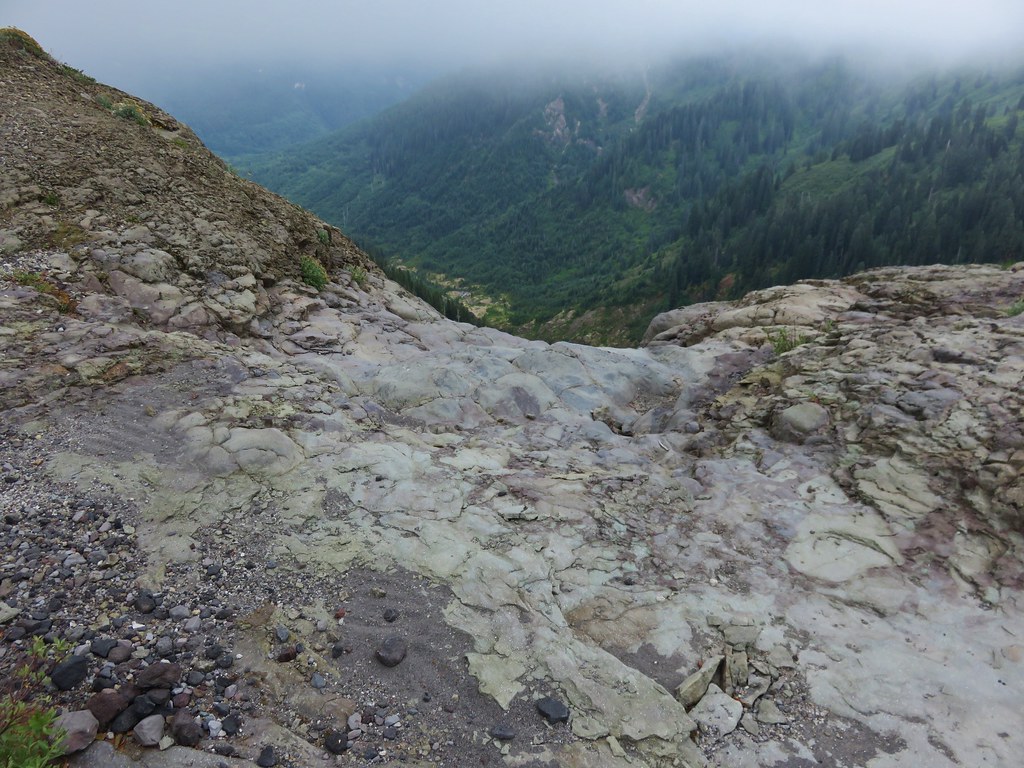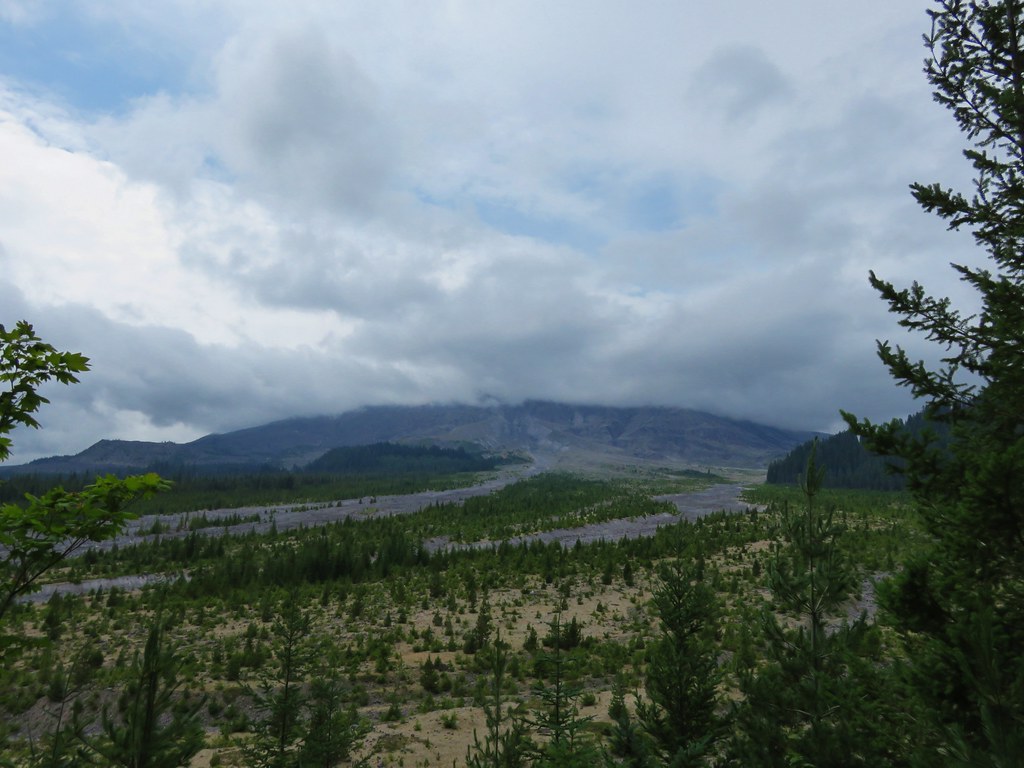On May 14, 2023 a washout along Washington’s SR504 below the Johnston Ridge Observatory closed vehicle access for the foreseeable future. We’d visited the observatory in August 2013 (post) and had planned on revisiting this July. While the washout made driving to the observatory impossible the trails in the area were not impacted. The shortest route was to start at the Hummocks Trailhead and take the Boundary Trail from its intersection with the Hummocks Trail to the observatory. We actually had this hike on our 2024 schedule for July so we swapped those (hoping that the road is repaired before then).
This would also be our second visit to The Hummocks having hiked the 2.5-mile loop in May of 2014 (post) before hiking a longer loop around Coldwater Lake. From the trailhead we set off on the left most trail (next to the large signboards).

 While the loop did come in at 2.5-miles it was a little over 3/4 of a mile to the Boundary Trail.
While the loop did come in at 2.5-miles it was a little over 3/4 of a mile to the Boundary Trail.
There were a lot more flowers (and green vegetation) along the trail than there had been during our May hike.
 Lupine
Lupine

 One of several ponds along the trail.
One of several ponds along the trail.
Interpretive signs, trail guide markers, and “Student Stops” are located throughout the loop.
 A “Student Stop” marker surrounded by dwarf lupine. We aren’t sure what the these meant or what program they are related to.
A “Student Stop” marker surrounded by dwarf lupine. We aren’t sure what the these meant or what program they are related to.
 An interpretive sign along the trail facing some of the hummocks.
An interpretive sign along the trail facing some of the hummocks.
 Penstemon
Penstemon
 Mt. St. Helens as we neared the Boundary Trail junction.
Mt. St. Helens as we neared the Boundary Trail junction.
 Trail guide marker #3 and an interpretive sign at the junction.
Trail guide marker #3 and an interpretive sign at the junction.
We turned left onto the Boundary Trail which began as a level path passing by more hummocks.
 The lower left map shows the current closure area and open trails. In a nutshell, all the trails are open but everything off-trail to the side facing SR504 is currently closed.
The lower left map shows the current closure area and open trails. In a nutshell, all the trails are open but everything off-trail to the side facing SR504 is currently closed.
 The views of Mt. St. Helens were great.
The views of Mt. St. Helens were great.
 The trail began to climb as it squeezed between a gap in the hillsides ahead.
The trail began to climb as it squeezed between a gap in the hillsides ahead.
 View back to the hummocks from the gap.
View back to the hummocks from the gap.
 Trees in the gap.
Trees in the gap.
 After exiting the gap we got another good view of the mountain before the trail veered left turning away from the mountain.
After exiting the gap we got another good view of the mountain before the trail veered left turning away from the mountain.
After another short level stretch the trail began to climb in earnest. While the climb never felt very steep the trail netted 1400′ of elevation gain over the next 3 miles to reach the parking lot at Johnston Ridge.
 Heading away from Mt. St. Helens to start the climb.
Heading away from Mt. St. Helens to start the climb.
 Dwarf lupine was profuse below the ridge.
Dwarf lupine was profuse below the ridge.
 Scouler’s bluebell
Scouler’s bluebell

 Thimbleberry blossoms
Thimbleberry blossoms
 Castle Peak above Castle Lake with Spud Mountain to the right and the North Fork Toutle River below.
Castle Peak above Castle Lake with Spud Mountain to the right and the North Fork Toutle River below.
 Horned lark
Horned lark
 Tiger lily
Tiger lily
 Savannah sparrow
Savannah sparrow
 Heading back toward Mt. St. Helens.
Heading back toward Mt. St. Helens.
 The North Fork Toutle River flowing between Spud Mountain (left) and Elk Rock (right).
The North Fork Toutle River flowing between Spud Mountain (left) and Elk Rock (right).
 Castle Peak and Castle Lake
Castle Peak and Castle Lake
 Elk Rock on the left and Coldwater Lake on the right.
Elk Rock on the left and Coldwater Lake on the right.
 Coldwater Lake
Coldwater Lake
 Mountain bluebird.
Mountain bluebird.

 At one point quite a bit of dust? kicked up from the South Fork Toutle River canyon.
At one point quite a bit of dust? kicked up from the South Fork Toutle River canyon.
The trail contoured along the hillside, occasionally entering a stand of trees or losing sight of the mountain behind a ridge.

 Cardwell’s penstemon
Cardwell’s penstemon


A little over 2 3/4-miles from the Hummocks-Boundary Trail junction we came to a viewpoint at a ridge end where we could see Coldwater Peak and the top of Mt. Adams.
 Coldwater Peak with Mt. Adams to the far right of the photo. The hiker ahead to the left of Coldwater Peak was from Belgium. He was here on work but using the weekends to explore the area. We would see him two more times, once from the observatory as he continued on the Boundary Trail and then as we were exiting the trailhead. He had done a loop using the Coldwater Trail (post) which by our calculations would have been at least 16-miles and that is assuming he didn’t detour to Coldwater Peak.
Coldwater Peak with Mt. Adams to the far right of the photo. The hiker ahead to the left of Coldwater Peak was from Belgium. He was here on work but using the weekends to explore the area. We would see him two more times, once from the observatory as he continued on the Boundary Trail and then as we were exiting the trailhead. He had done a loop using the Coldwater Trail (post) which by our calculations would have been at least 16-miles and that is assuming he didn’t detour to Coldwater Peak.
 Mt. Adams from the viewpoint on our way back. The angle of the Sun earlier caused the mountain to look pretty washed out.
Mt. Adams from the viewpoint on our way back. The angle of the Sun earlier caused the mountain to look pretty washed out.
 Mt. St. Helens from the viewpoint.
Mt. St. Helens from the viewpoint.
 Variable-leaf collomia
Variable-leaf collomia
 The Loowit Viewpoint on the ridge ahead.
The Loowit Viewpoint on the ridge ahead.
 Paintbrush covered hillside.
Paintbrush covered hillside.
The Loowit Viewpoint is located along SR504. The Boundary Trail passes by the viewpoint 3/4 of a mile from the Johnston Ridge Observatory.
 Mt. St. Helens from the Loowit Viewpoint.
Mt. St. Helens from the Loowit Viewpoint.
 Mt. St. Helens crater.
Mt. St. Helens crater.
As we continued on from the viewpoint we were under the watchful eye of some nosey locals.

 Golden mantled-ground squirrel. These brazen con-artists often convince visitors they would starve without humans help. While this is definitely not the case and wildlife really shouldn’t be fed it happens all too frequently. (They are awfully cute though.)
Golden mantled-ground squirrel. These brazen con-artists often convince visitors they would starve without humans help. While this is definitely not the case and wildlife really shouldn’t be fed it happens all too frequently. (They are awfully cute though.)
The closer we came to the observatory the more paintbrush we began seeing.
 A single plant.
A single plant.
 A lot of paintbrush.
A lot of paintbrush.


 Daisies and paintbrush
Daisies and paintbrush
 Penstemon, yarrow, and Scouler’s woolyweed along with the paintbrush.
Penstemon, yarrow, and Scouler’s woolyweed along with the paintbrush.
 Paintbrush and penstemon along the trail.
Paintbrush and penstemon along the trail.
The Boundary Trail turns to a paved path across from the parking lot for the observatory following the parking entrance road for approximately 450′.


 Passing by the Johnston Ridge Observatory.
Passing by the Johnston Ridge Observatory.

 Before and after photos of the 1980 eruption.
Before and after photos of the 1980 eruption.
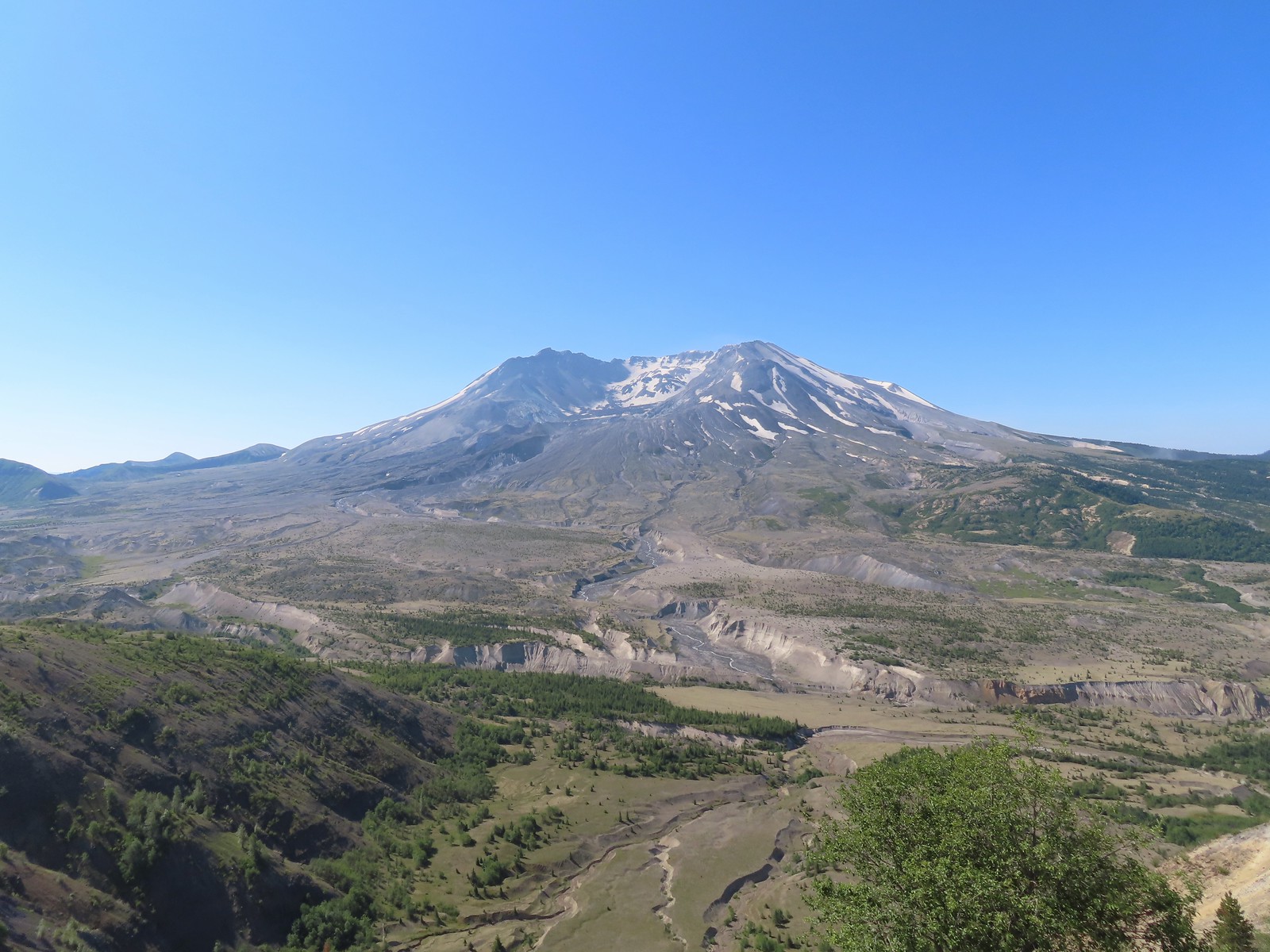
We followed the Eruption Trail uphill to a mountain identifier then down the other side to rejoin the Boundary Trail.

 Mt. Adams peaking over the ridges with Spirit Lake also visible (center).
Mt. Adams peaking over the ridges with Spirit Lake also visible (center).
 Spirit Lake
Spirit Lake
 The mountain identifier ahead on the left.
The mountain identifier ahead on the left.

 We could see where the repair work was happening on SR504 from this trail.
We could see where the repair work was happening on SR504 from this trail.
 The rounded peak to the right is Goat Mountain (post).
The rounded peak to the right is Goat Mountain (post).
 Goat Mountain with a few patches of snow still showing up.
Goat Mountain with a few patches of snow still showing up.
 Rock Arch near Coldwater Peak.
Rock Arch near Coldwater Peak.
 Memorial for the lives lost in the 1980 eruption.
Memorial for the lives lost in the 1980 eruption.
 Junction with the Boundary Trail.
Junction with the Boundary Trail.
The views and flowers were so nice that we decided to continue on the Boundary Trail for a bit. The trail had been slowly losing elevation and after a little over a half mile neared a saddle where more elevation would have been lost. We decided to turn around there since shortly after climbing up from the saddle on the far side the trail would lose sight of Mt. St. Helens as it passed behind the ridge for a bit.

 Pussypaws
Pussypaws




 Another view of the washout.
Another view of the washout.


 Our turn around spot. You can see the trail on far side of the saddle veering left behind the ridge.
Our turn around spot. You can see the trail on far side of the saddle veering left behind the ridge.
 Coldwater Peak from our turnaround spot.
Coldwater Peak from our turnaround spot.
We headed back to the Hummocks Trail, sticking to the Boundary Trail the entire way.
 The Johnston Ridge Observatory from the trail. We hadn’t realized how much elevation we’d lost until we turned around.
The Johnston Ridge Observatory from the trail. We hadn’t realized how much elevation we’d lost until we turned around.
 Castle Peak and Spud Mountain on the left and the observatory above some colorful cliffs.
Castle Peak and Spud Mountain on the left and the observatory above some colorful cliffs.

 Penstemon
Penstemon
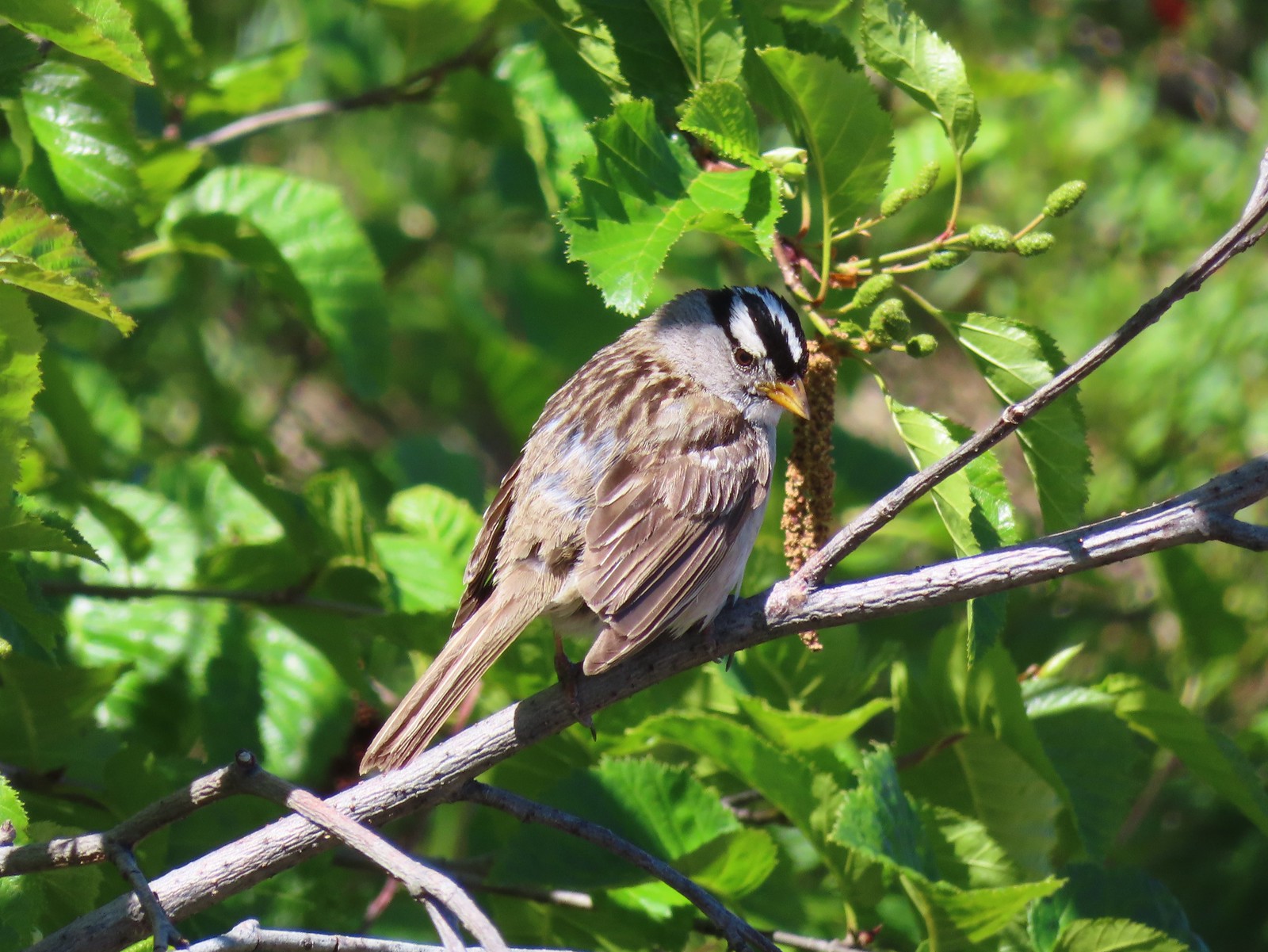 White crowned sparrow
White crowned sparrow
 Boundary Trail leaving the Loowit Viewpoint.
Boundary Trail leaving the Loowit Viewpoint.
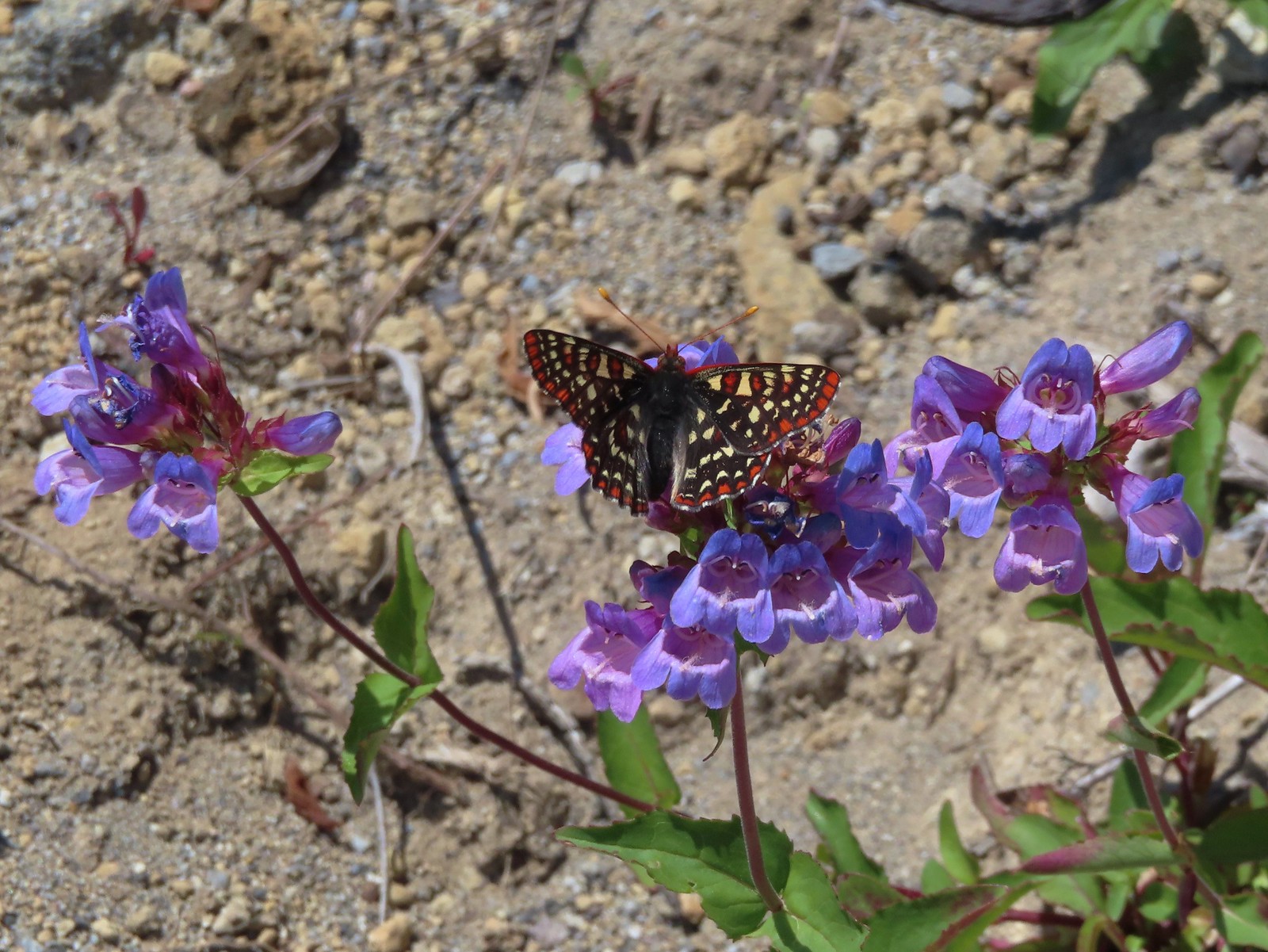 Snowberry checkerspot on penstemon.
Snowberry checkerspot on penstemon.

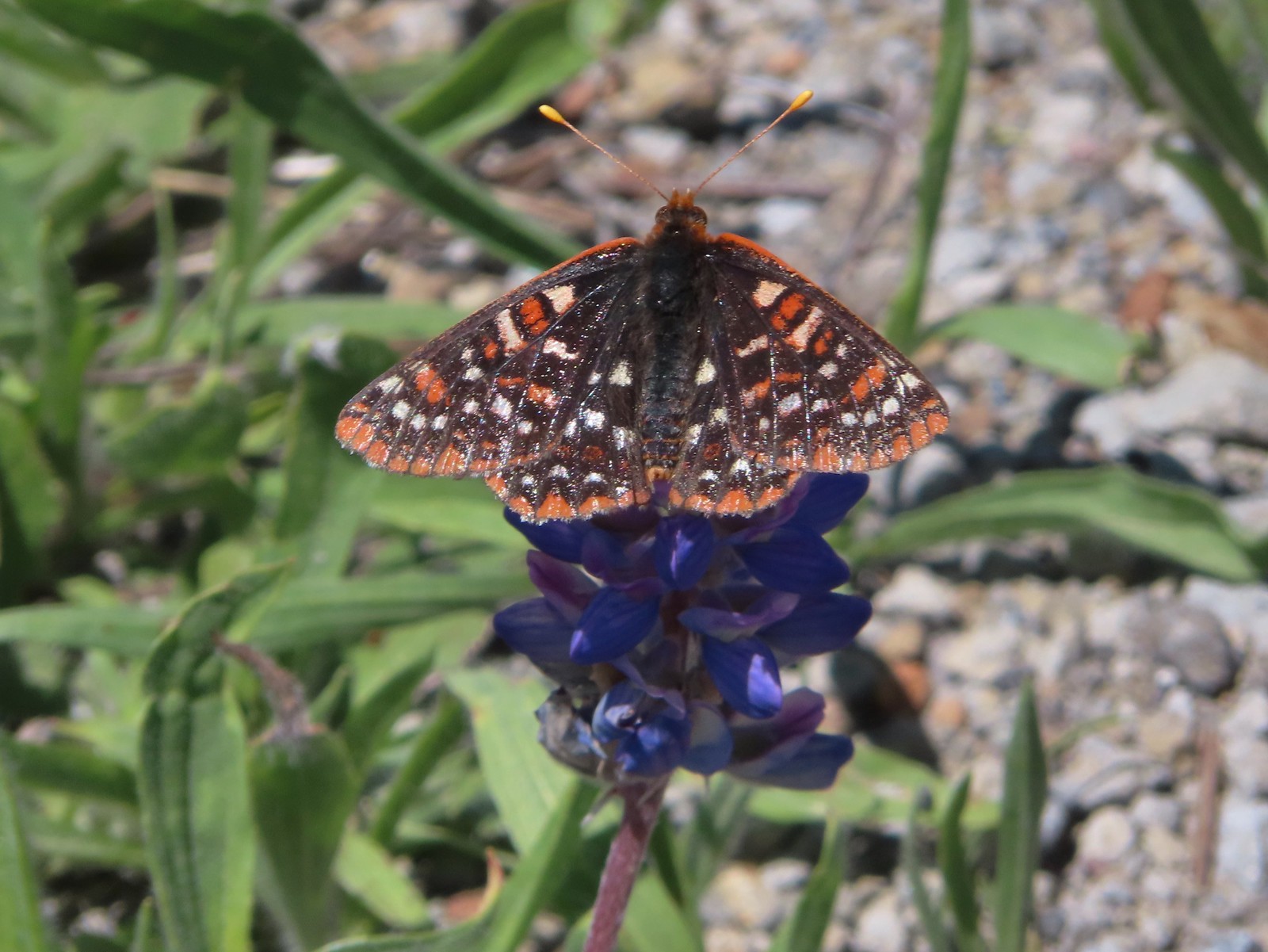 Another checkerspot, this time on lupine.
Another checkerspot, this time on lupine.

 Cedar waxwings
Cedar waxwings
When we arrived back at the Hummocks Trail we turned left to finish that loop.



 Mt. St. Helens and the North Fork Toutle River.
Mt. St. Helens and the North Fork Toutle River.
Between it having been 9 years since we’d hiked this trail and the difference in the time of year the scenery was very different.

 The same view in May 2014.
The same view in May 2014.

 Same spot, different angle 2014.
Same spot, different angle 2014.
 Monkeyflower
Monkeyflower
 Maybe a yellow-rumped warbler.
Maybe a yellow-rumped warbler.
 Caterpillar
Caterpillar

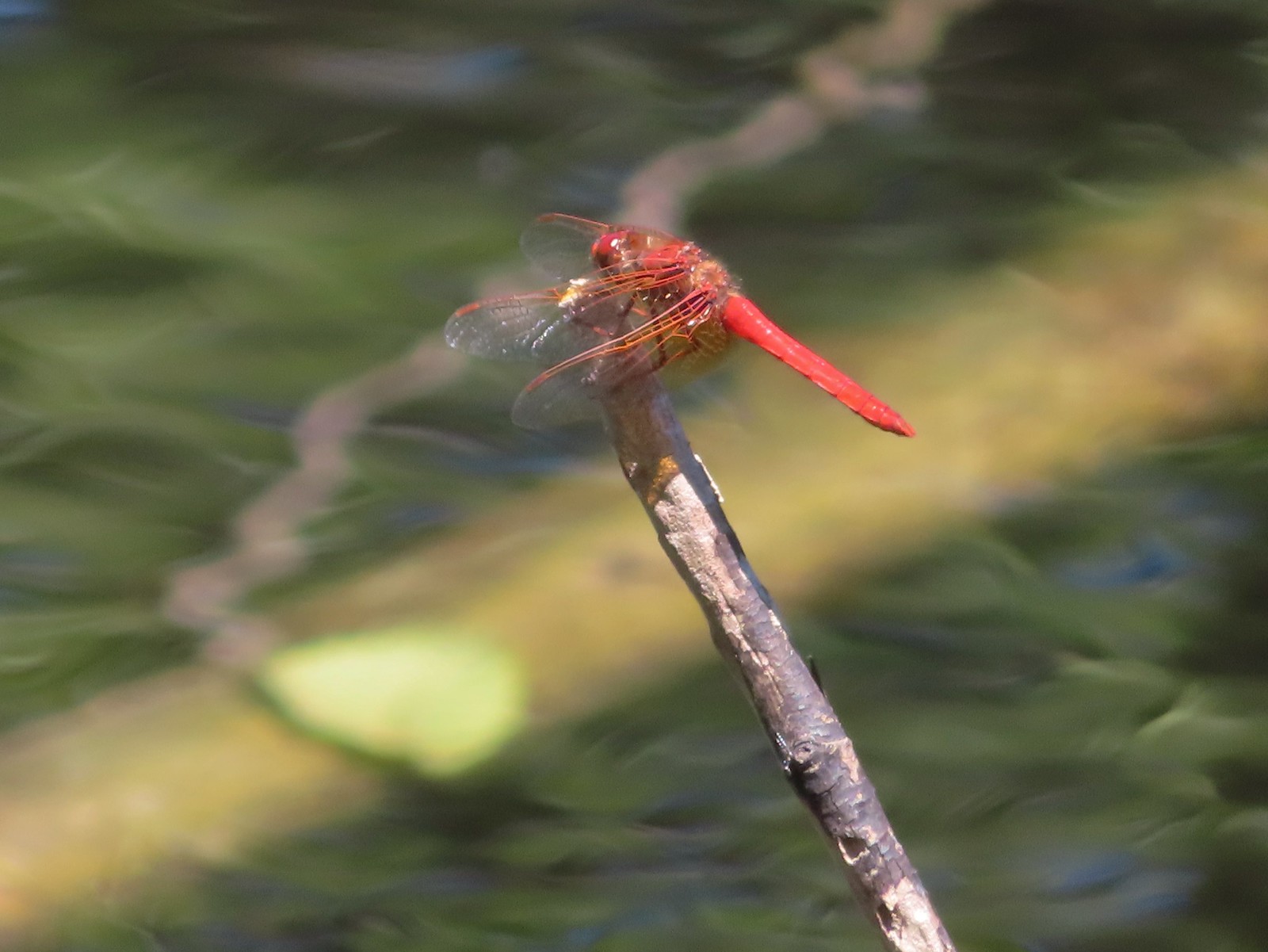 Dragonfly
Dragonfly
 Pearly everlasting
Pearly everlasting
 Arriving back at the Hummocks Trailhead.
Arriving back at the Hummocks Trailhead.
The hike came in at 12.5 miles with just under 2000′ of cumulative elevation gain.

This turned out to be the perfect day for this hike. The weather was pleasant, the views and flowers great, and the road closure provided solitude at the observatory. In addition to the Belgian hiker we passed a couple near the small viewpoint on the way to the observatory. We passed a few more people on the way back but nearly half of those were volunteers with the Mt. St. Helens Institute. The only thing that the hike lacked was any larger wildlife. It was one of the only hikes we could recall at the mountain where we didn’t see at least one deer, elk or mountain goat. Maybe next time. Until then Happy Trails!


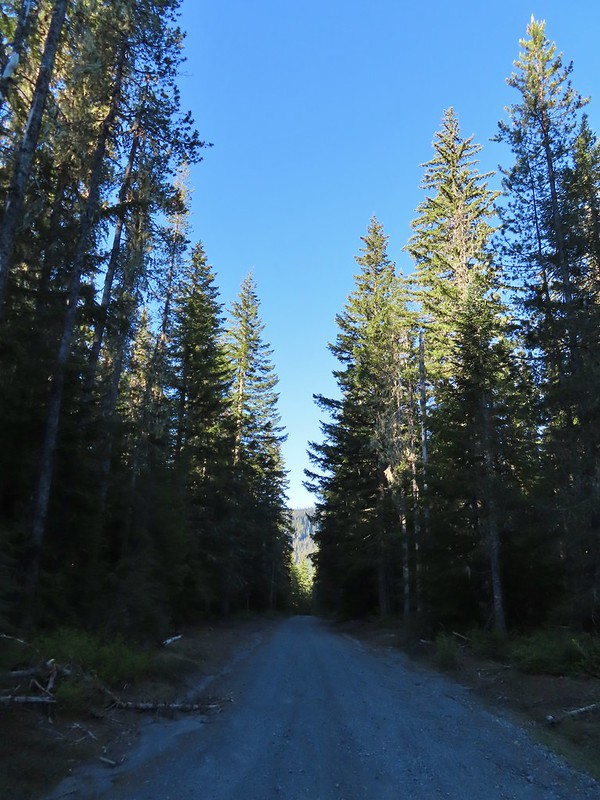 FR 8123
FR 8123

 It appeared the trail had been rerouted at least a couple of times to cross this dry creek bed.
It appeared the trail had been rerouted at least a couple of times to cross this dry creek bed.


 Fence at the boundary for the Research Area.
Fence at the boundary for the Research Area.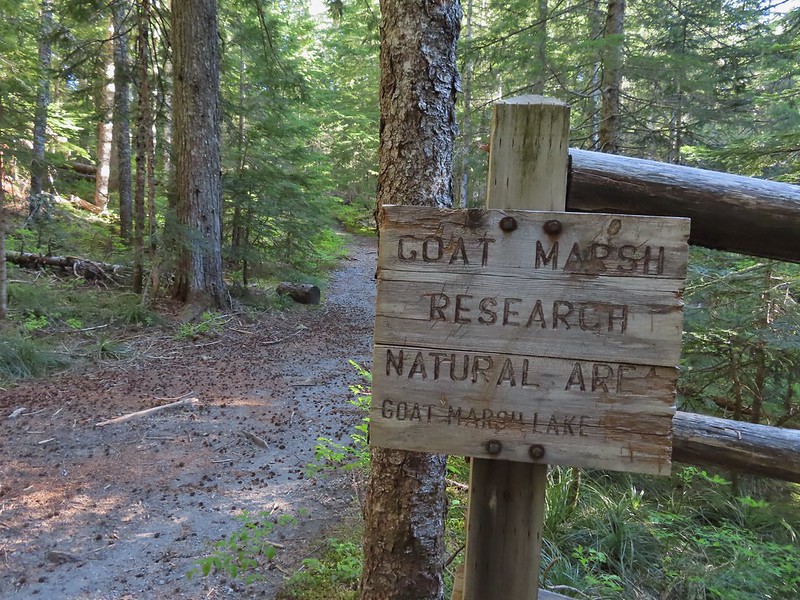
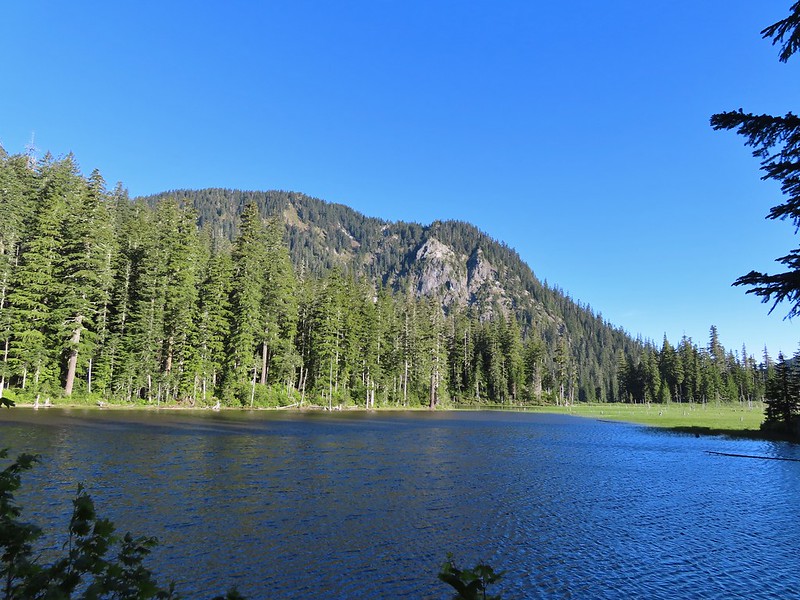 Goat Mountain and Goat Marsh Lake.
Goat Mountain and Goat Marsh Lake.
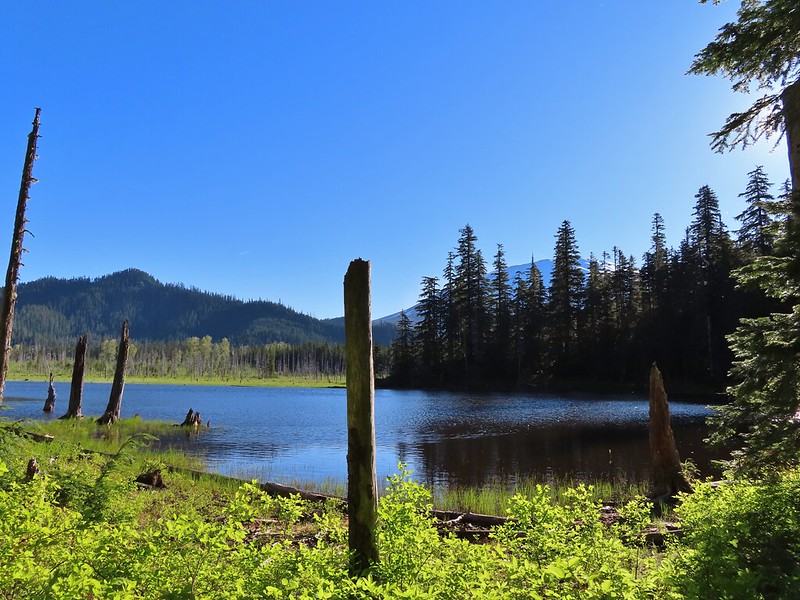 Mt. St. Helens
Mt. St. Helens Trillium
Trillium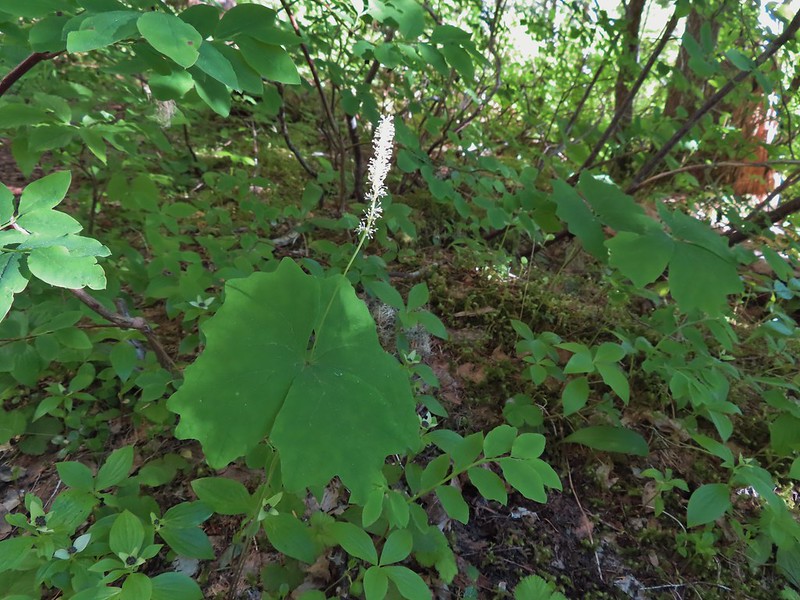 Vanilla leaf
Vanilla leaf

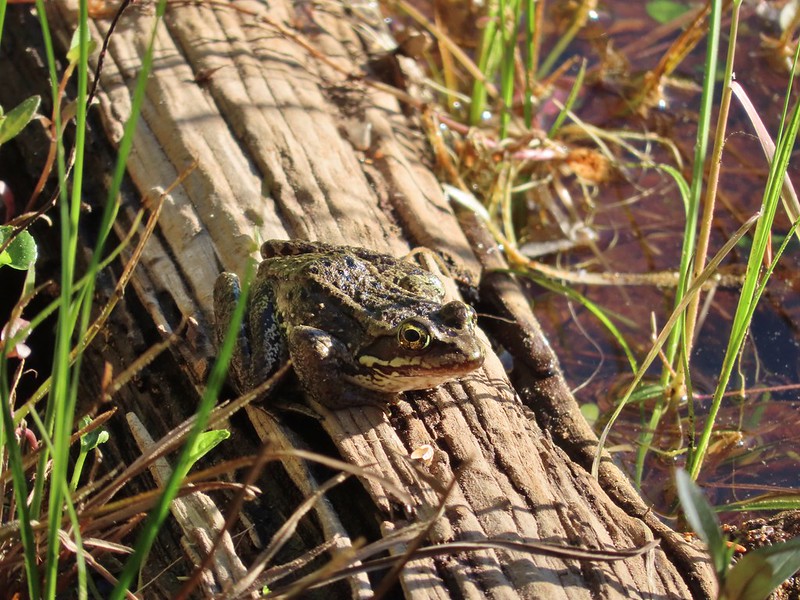 Frog on a log.
Frog on a log.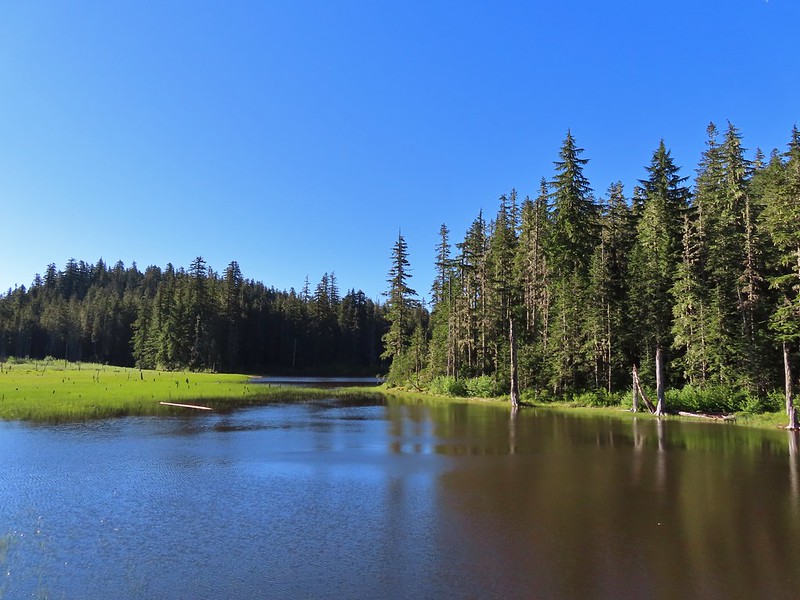
 The two cow elk in the middle of the grassy area.
The two cow elk in the middle of the grassy area.

 Calves lined up, this one is a bit blurry due to them moving and the amount of zoom used.
Calves lined up, this one is a bit blurry due to them moving and the amount of zoom used.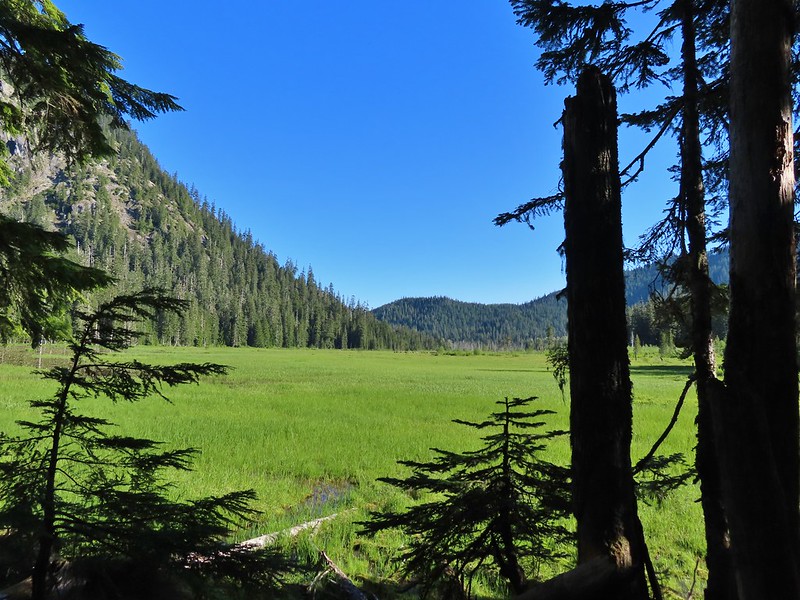 The elk herd not zoomed in.
The elk herd not zoomed in. Zoomed
Zoomed Coralroot
Coralroot Goat Mountain
Goat Mountain Avalanche lilies
Avalanche lilies Mt. St. Helens
Mt. St. Helens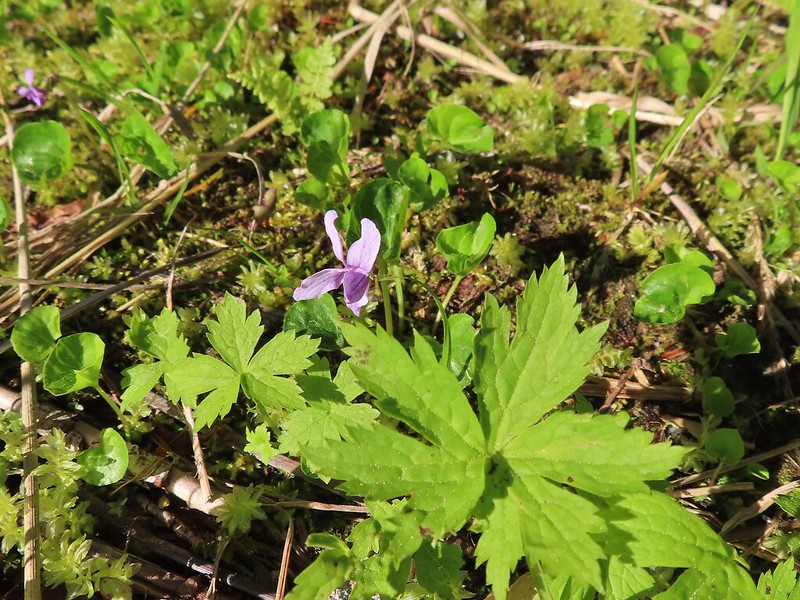 Marsh violet
Marsh violet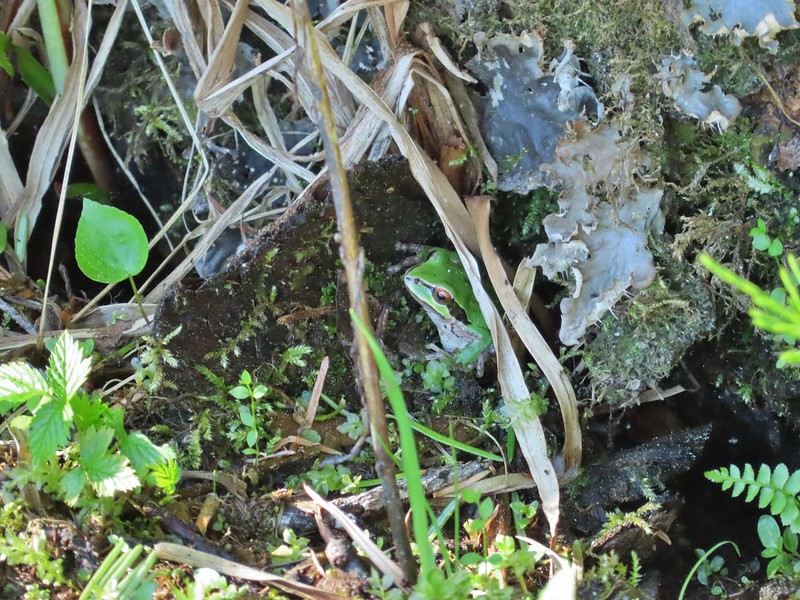 Frog under a log.
Frog under a log. Salmonberry
Salmonberry Sign near the end of the trail.
Sign near the end of the trail.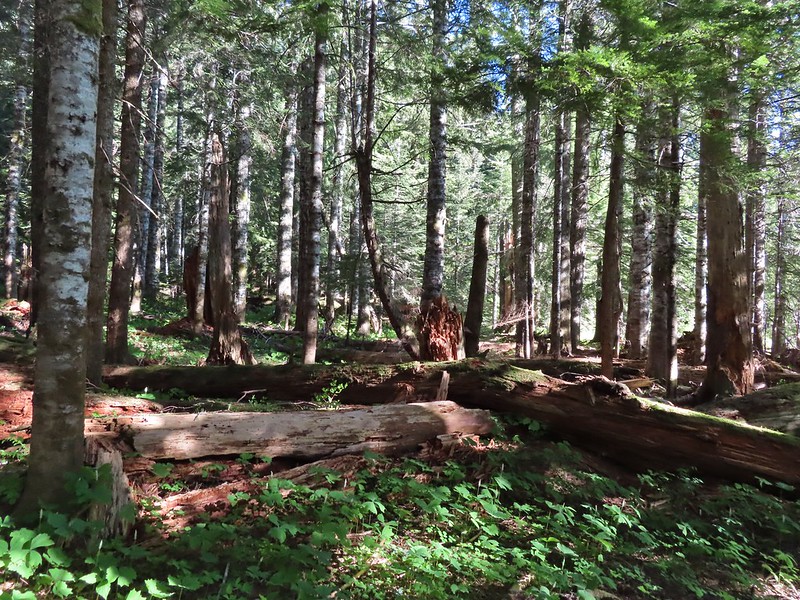 At the end of the trail.
At the end of the trail.
 Beaver lodge
Beaver lodge Duck and ducklings
Duck and ducklings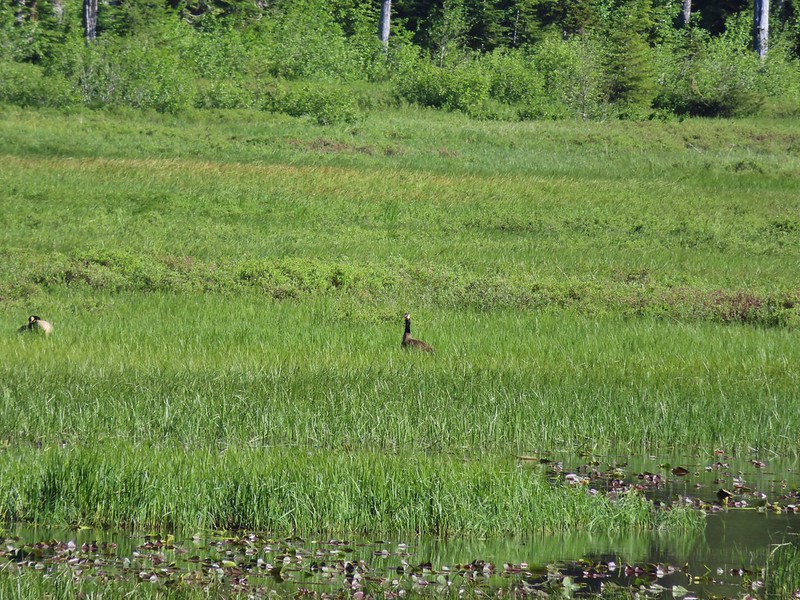 Geese out in the grass.
Geese out in the grass.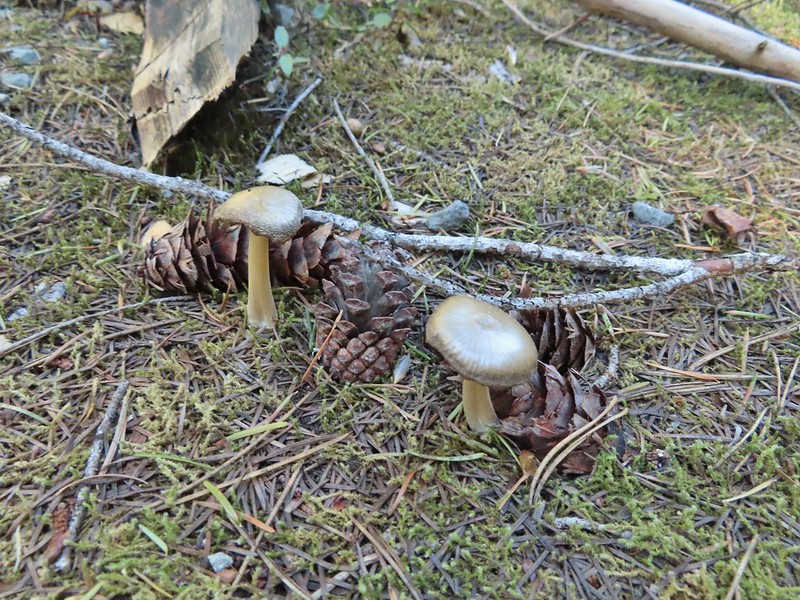

 The road crossing.
The road crossing. In the campsite trying to decide which way to go.
In the campsite trying to decide which way to go.
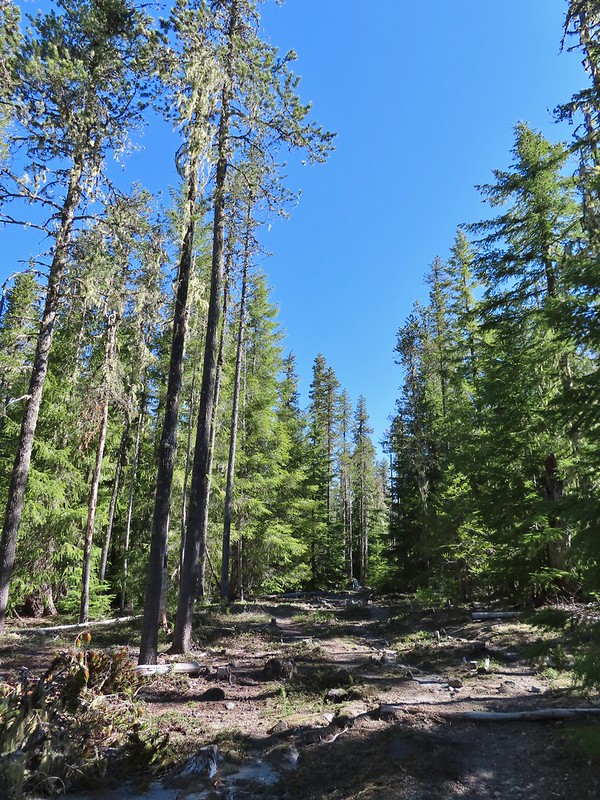 Once we found it the trail was pretty obvious, at least for a while.
Once we found it the trail was pretty obvious, at least for a while.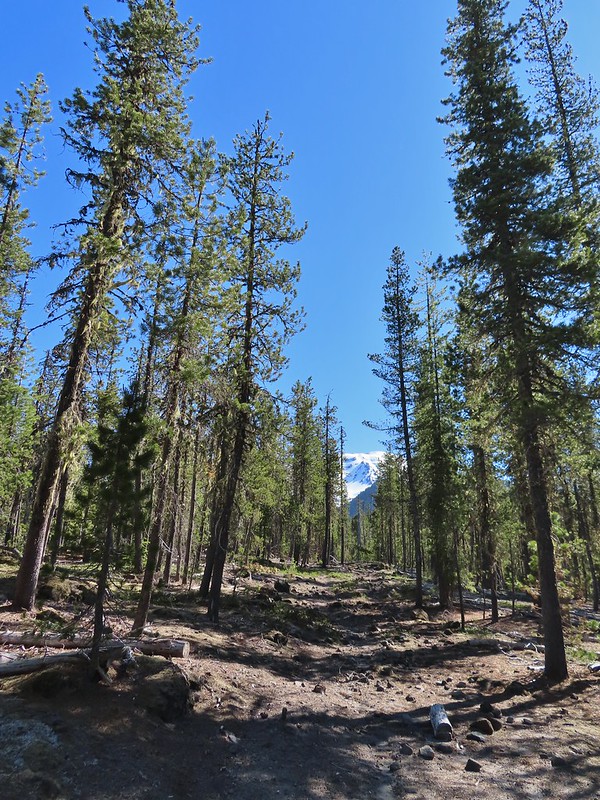


 Gray jay with a snack.
Gray jay with a snack. Western tanager. Right after this photo he flew straight at us snatching an insect out of mid-air.
Western tanager. Right after this photo he flew straight at us snatching an insect out of mid-air.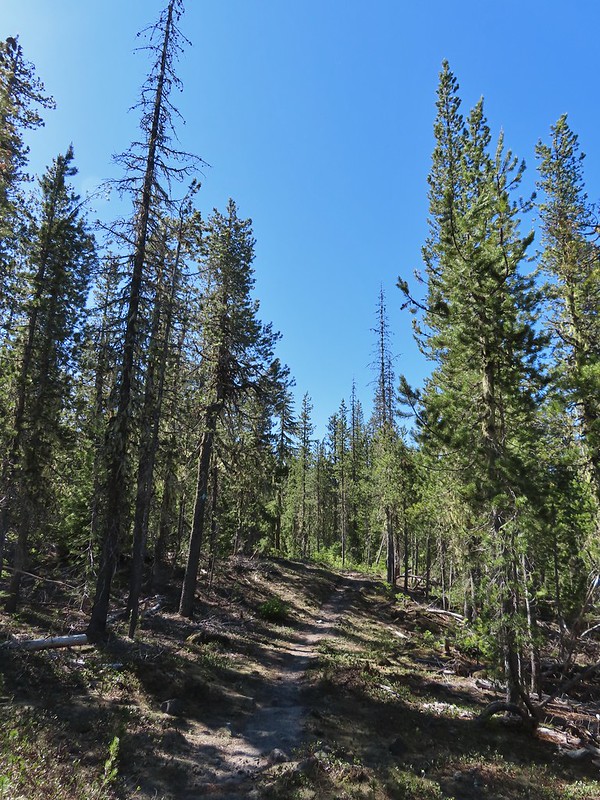

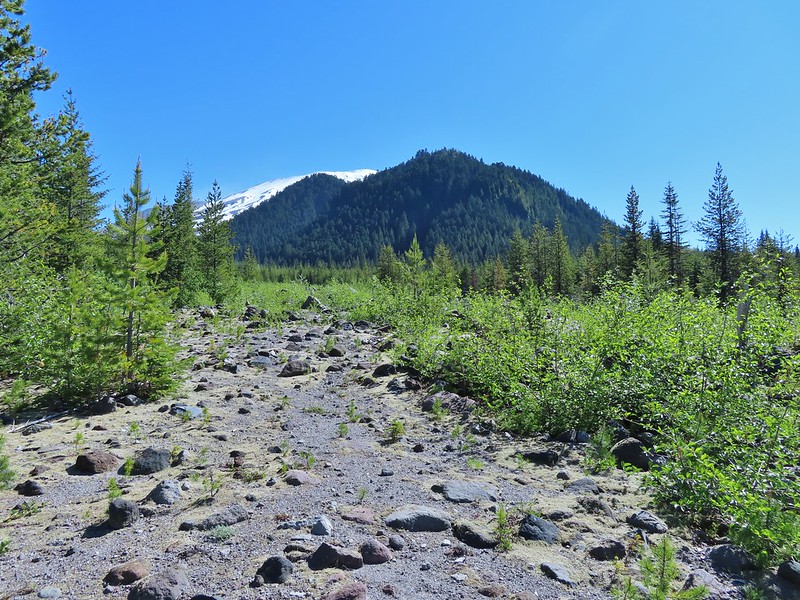 Butte Camp Dome in front of Mt. St. Helens.
Butte Camp Dome in front of Mt. St. Helens.
 Crossing another dry bed.
Crossing another dry bed. Where is the trail?
Where is the trail? In one of the creek beds. We were using the GPS along with looking for cairns and/or flagging.
In one of the creek beds. We were using the GPS along with looking for cairns and/or flagging. Goat Mountain
Goat Mountain You can’t really make them out in the photo but there is a pink flag and a blue diamond (on a downed tree) near the edge of the green trees.
You can’t really make them out in the photo but there is a pink flag and a blue diamond (on a downed tree) near the edge of the green trees.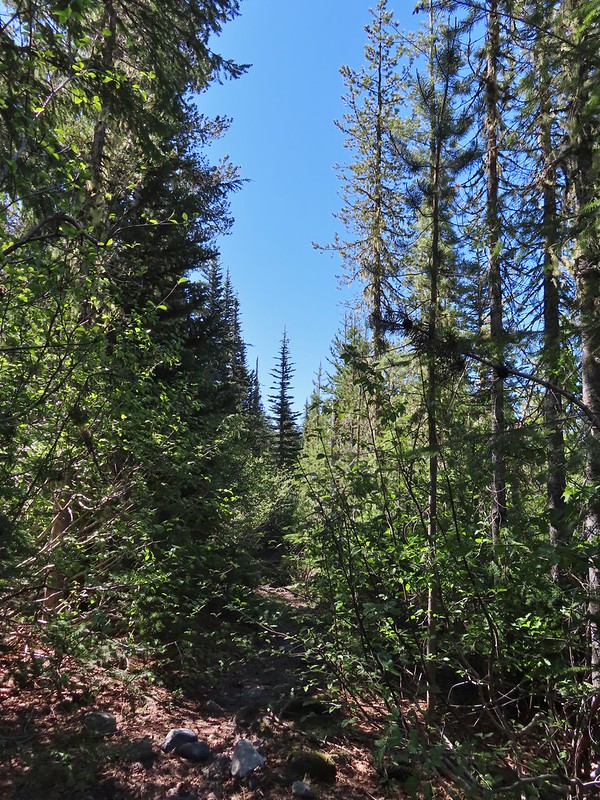 There was another short brushy section before the forest opened up.
There was another short brushy section before the forest opened up.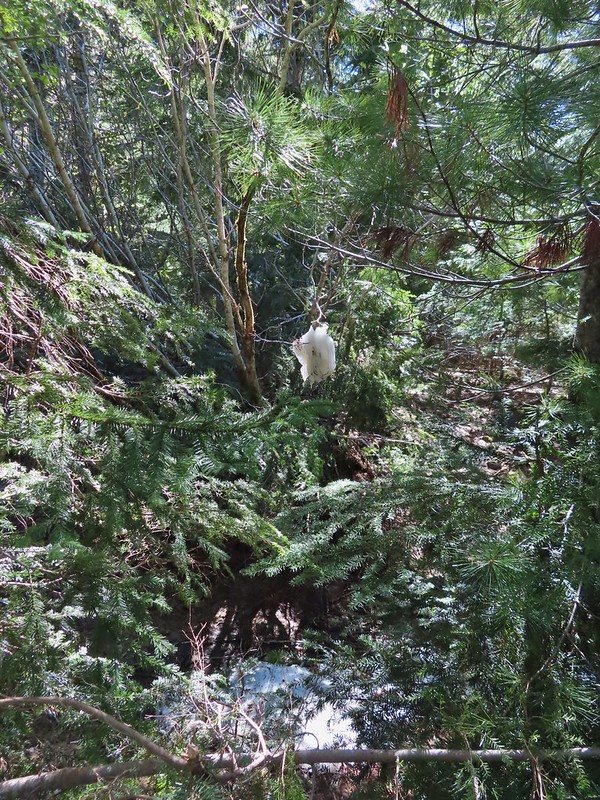 One of the strangest snow sightings we’ve come across.
One of the strangest snow sightings we’ve come across. My theory was bigfoot hung this.
My theory was bigfoot hung this.

 The NOHRSC estimated 2″-3.9″ of snow and that seemed to be about right.
The NOHRSC estimated 2″-3.9″ of snow and that seemed to be about right.

 Looking back at the junction from the Toutle Trail. The post with no sign is the continuation of the Toutle while the trail on the left is the ski trail.
Looking back at the junction from the Toutle Trail. The post with no sign is the continuation of the Toutle while the trail on the left is the ski trail.

 Last years beargrass.
Last years beargrass.
 Strawberry
Strawberry Phlox
Phlox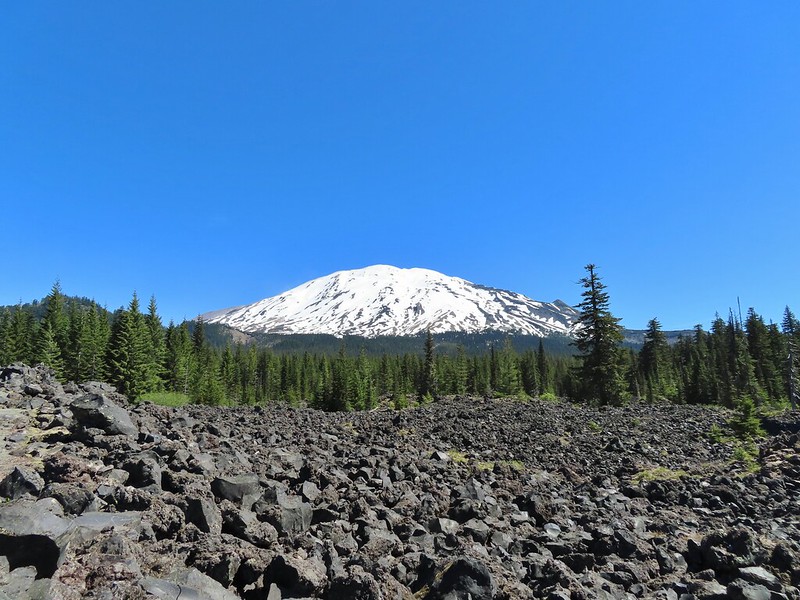
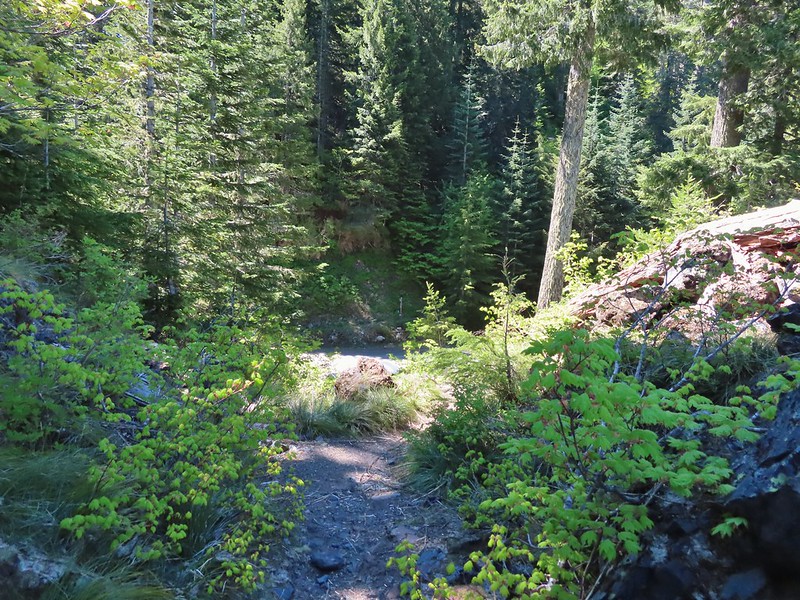 FR 81 below the trail.
FR 81 below the trail. Trail sign at the trailhead.
Trail sign at the trailhead.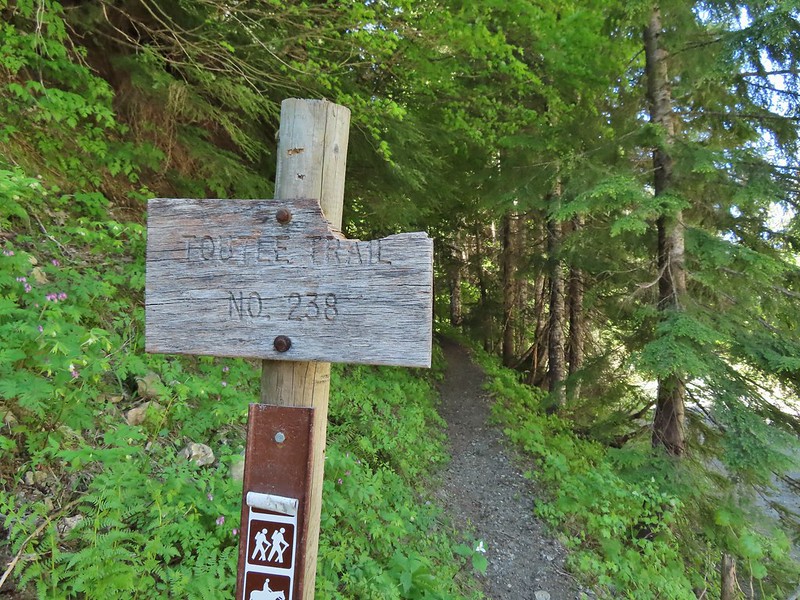
 Raven flyover
Raven flyover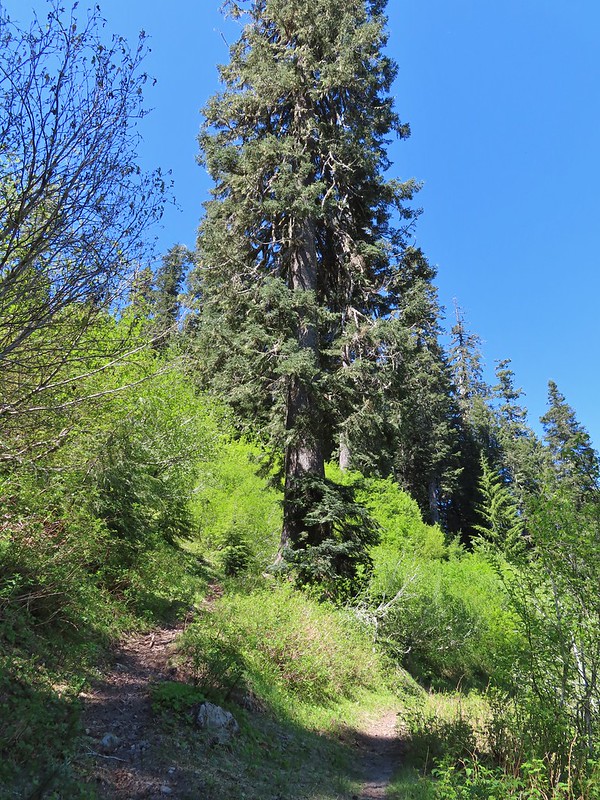 The fork.
The fork.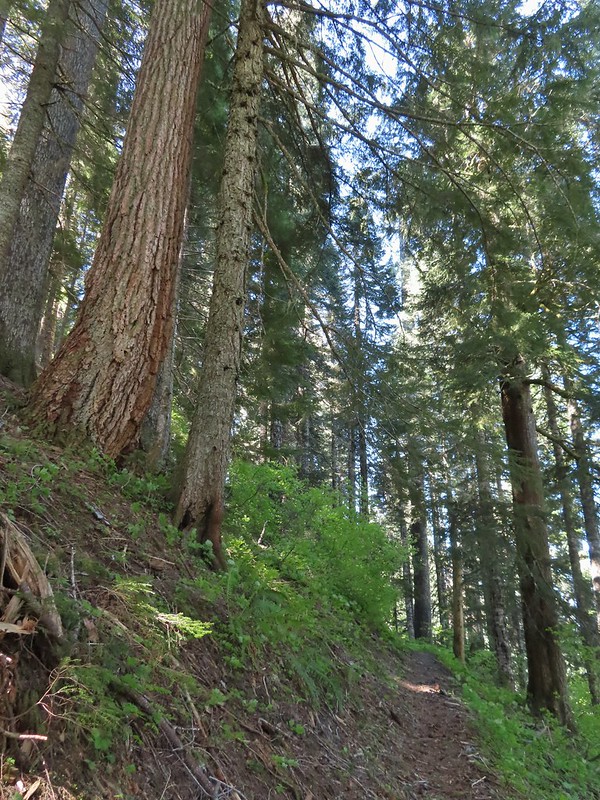
 One of several side creeks we crossed.
One of several side creeks we crossed.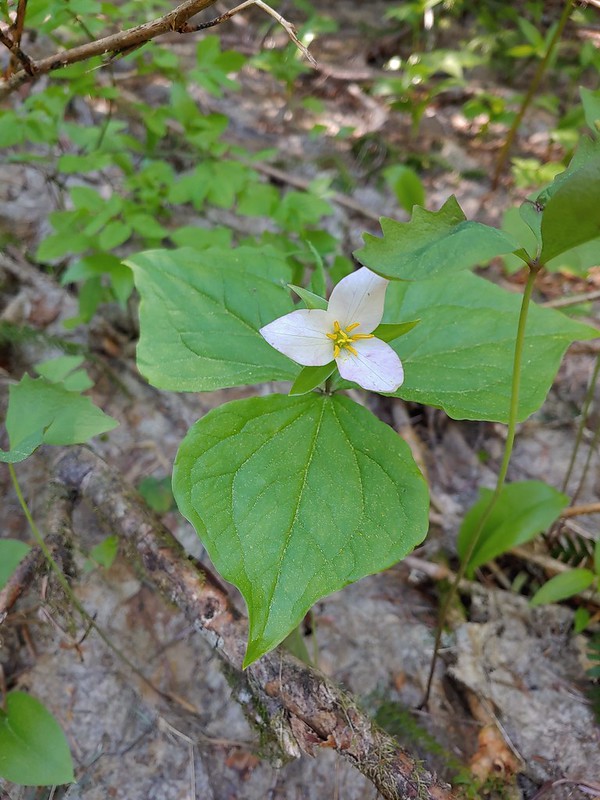 Trillium
Trillium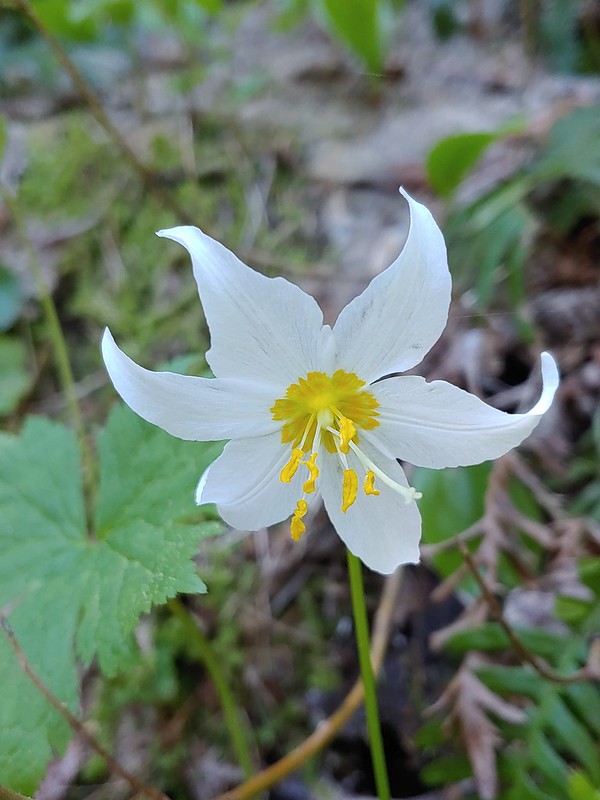 Avalanche lily
Avalanche lily Violet
Violet
 Goat Mountain beyond McBride Lake.
Goat Mountain beyond McBride Lake.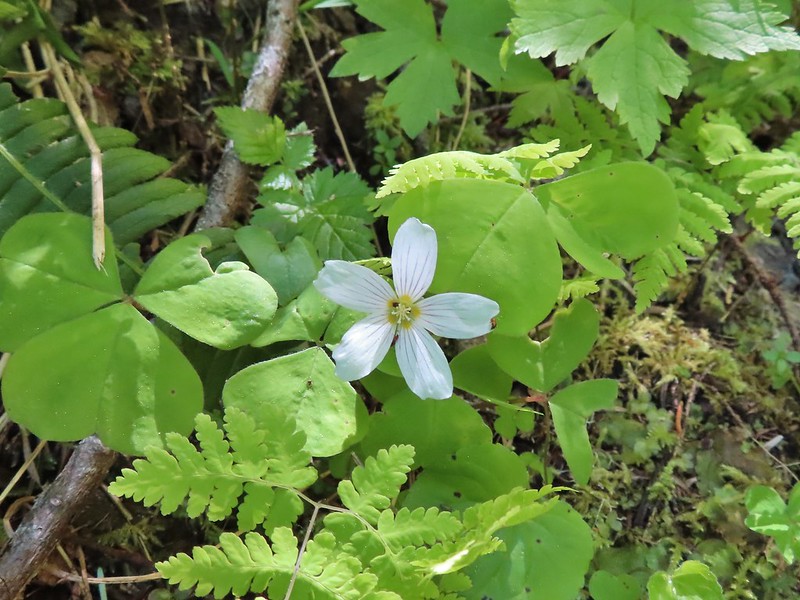 Sourgrass
Sourgrass Valerian
Valerian
 Solomonseal
Solomonseal Saxifrage
Saxifrage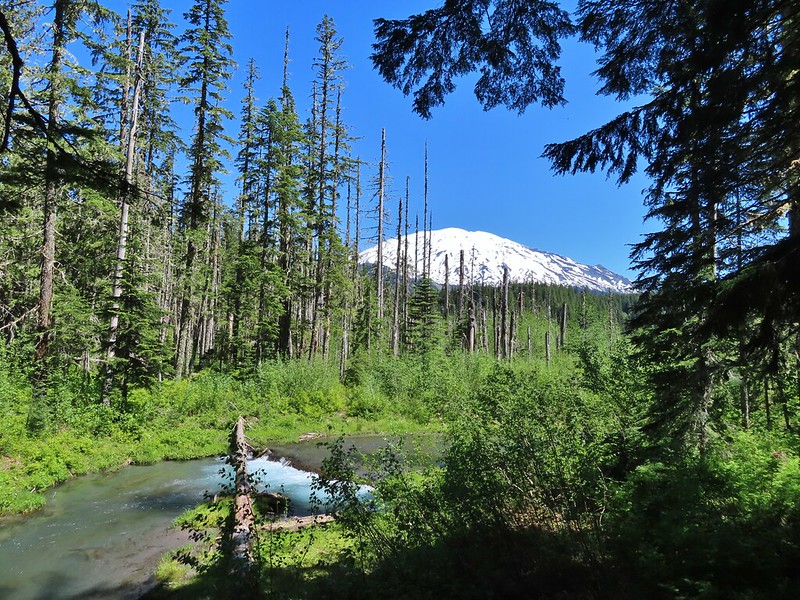


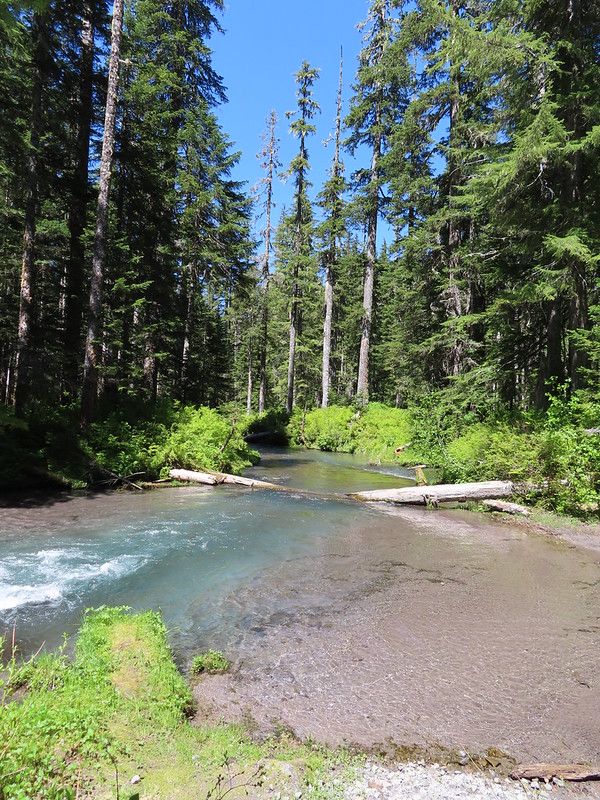 Kalama River from the road bed.
Kalama River from the road bed.
 The Blue Lake Horse Trail on the far side of FR 81.
The Blue Lake Horse Trail on the far side of FR 81.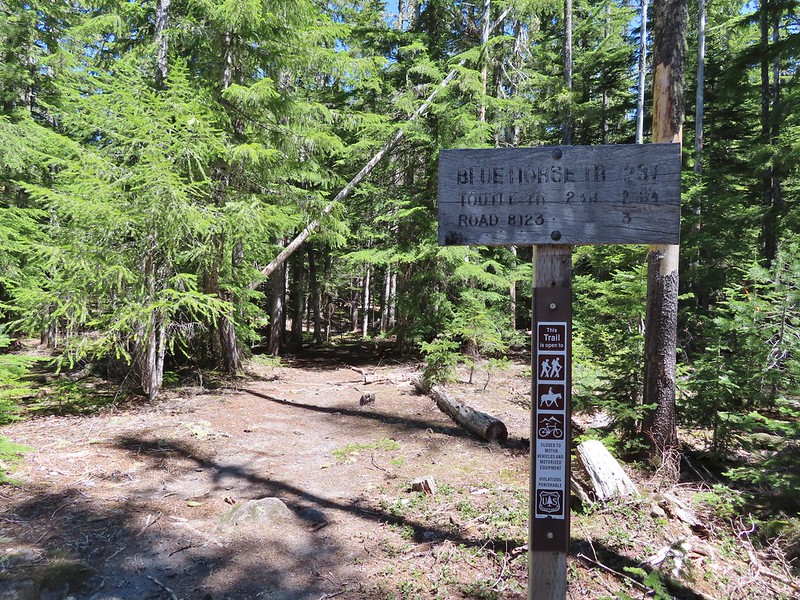 The sign did show FR 8123 which was the road the trailhead was on so that fed into us not realizing our mistake at first.
The sign did show FR 8123 which was the road the trailhead was on so that fed into us not realizing our mistake at first. An orange diamond on a tree ahead.
An orange diamond on a tree ahead. Where we left the horse trail.
Where we left the horse trail.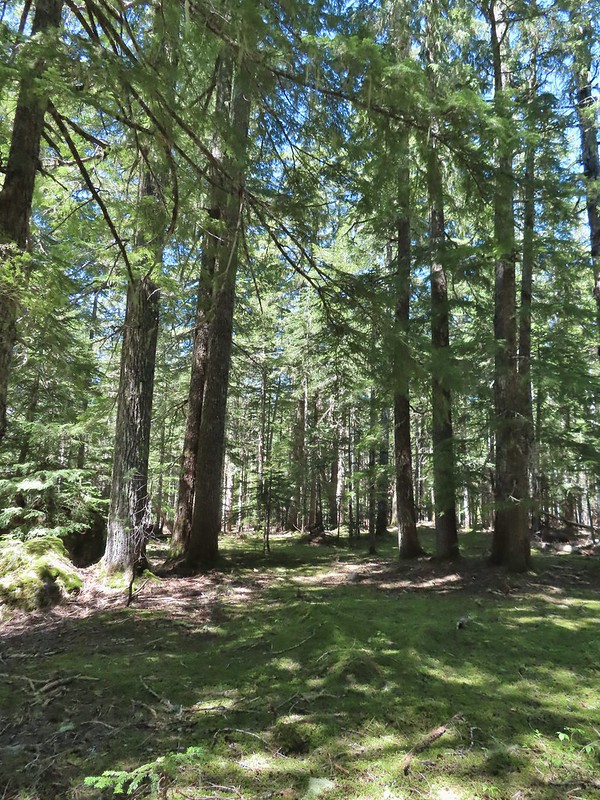 Typical terrain for the cross-country walk.
Typical terrain for the cross-country walk. It seems like every time we go off-trail we come across a mylar balloon. We’ve really come to despise those things. We packed it and the ribbon out.
It seems like every time we go off-trail we come across a mylar balloon. We’ve really come to despise those things. We packed it and the ribbon out. The trickiest part was crossing this dry stream bed but we fortunately came to it at a spot that was perfect for crossing.
The trickiest part was crossing this dry stream bed but we fortunately came to it at a spot that was perfect for crossing.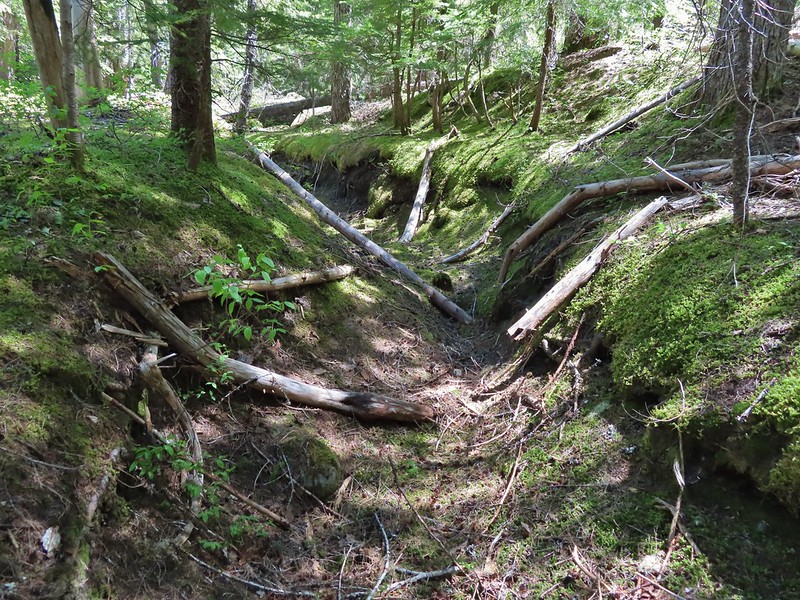
 FR 8123
FR 8123 Coming up to the Goat Marsh Lake Trailhead (and our car) on FR 8123.
Coming up to the Goat Marsh Lake Trailhead (and our car) on FR 8123.

 The view from the trees surrounding our campsite as we prepared to leave.
The view from the trees surrounding our campsite as we prepared to leave.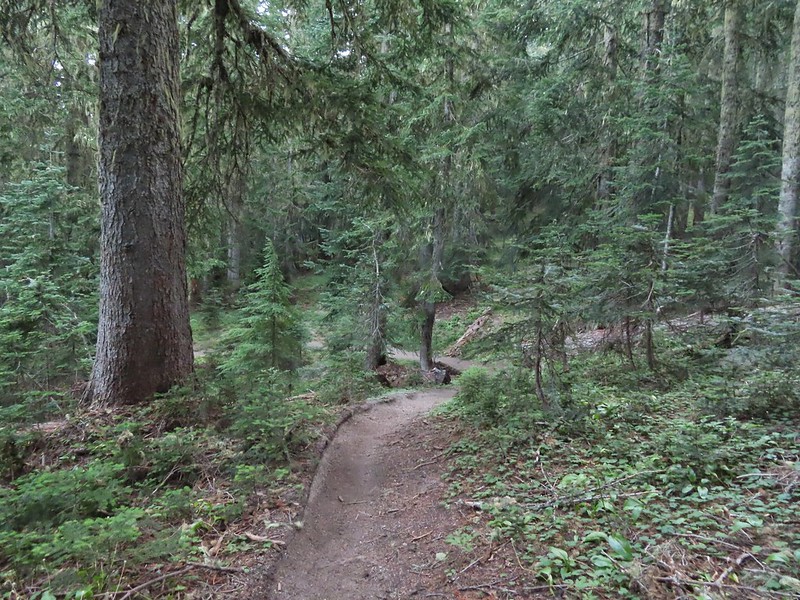
 Mt. St. Helens catching some morning light.
Mt. St. Helens catching some morning light.
 Mt. Rainier without a whole bunch of smoke.
Mt. Rainier without a whole bunch of smoke.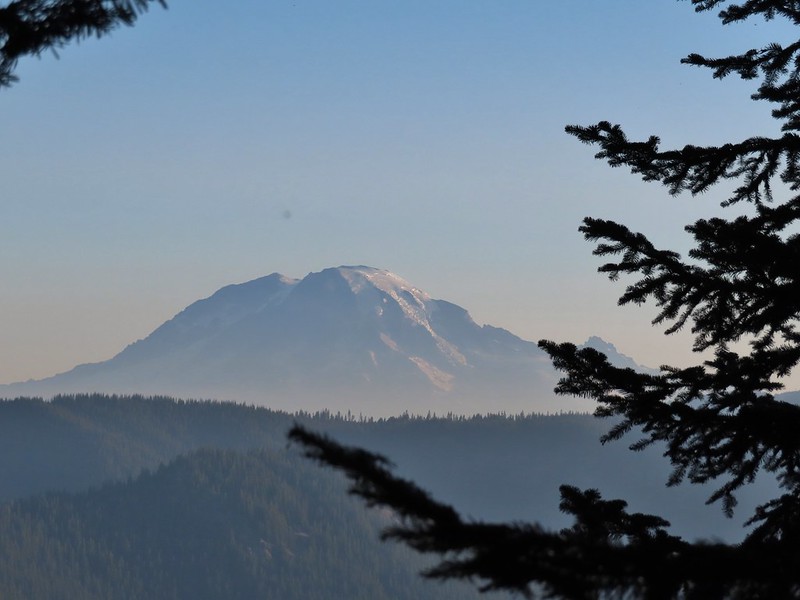
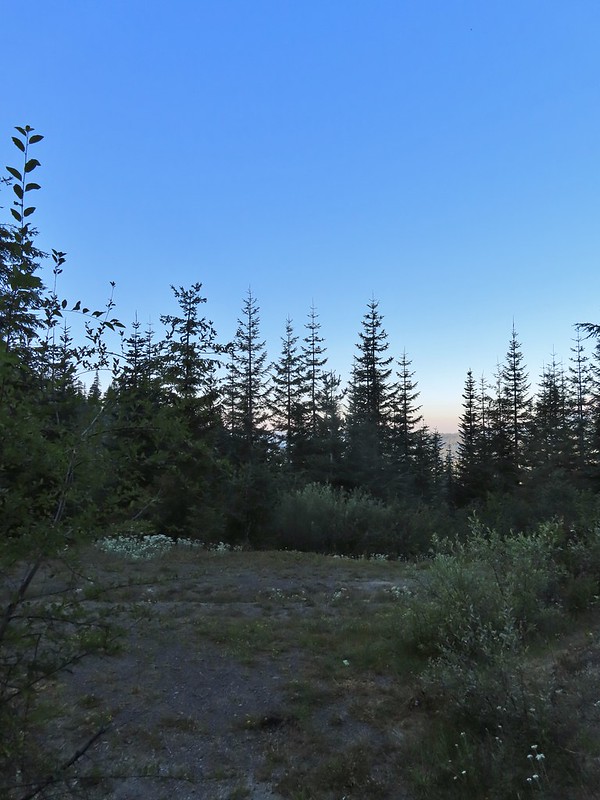
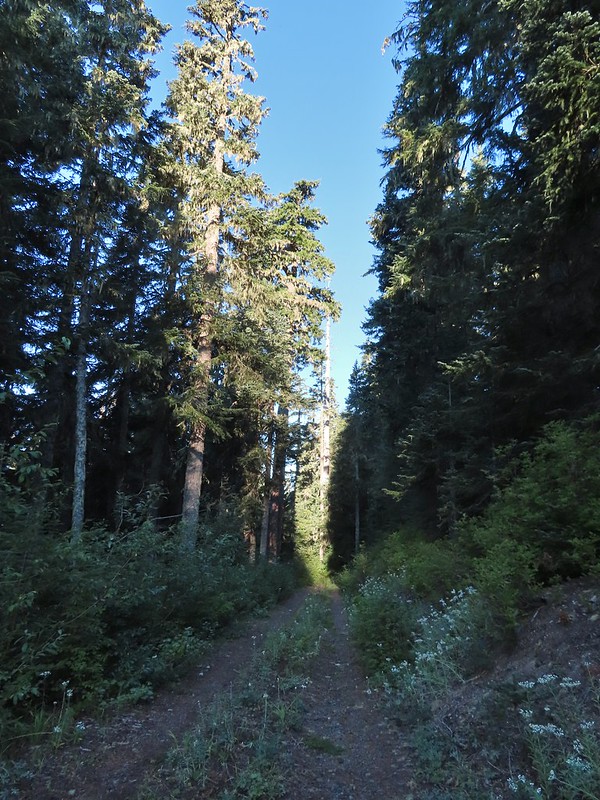
 We snagged a few black caps along the road to as a post breakfast snack.
We snagged a few black caps along the road to as a post breakfast snack. FR 2551
FR 2551 The very top of Mt. St. Helens from FR 2551.
The very top of Mt. St. Helens from FR 2551. Sullivan had labeled this stretch with the word slide which had caused a little apprehension in deciding to try this return route but despite the obvious slide(s) that had occurred here the road was in decent shape.
Sullivan had labeled this stretch with the word slide which had caused a little apprehension in deciding to try this return route but despite the obvious slide(s) that had occurred here the road was in decent shape.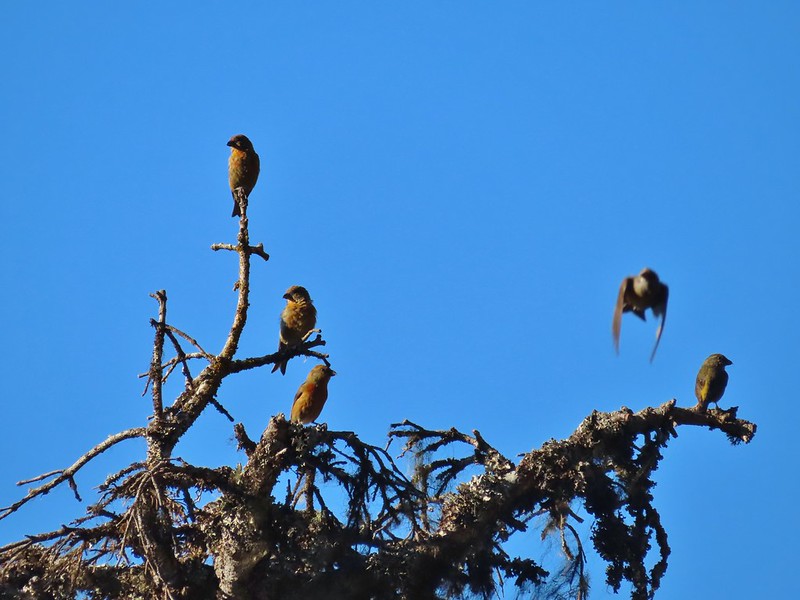 Not sure what kinds of birds were in this tree but there were a lot of them.
Not sure what kinds of birds were in this tree but there were a lot of them. FR 25 at the end of a long straight away.
FR 25 at the end of a long straight away. The Boundary Trail crosses FR 25 near the road sign ahead. The picture was taken from FR 2551 at FR 25.
The Boundary Trail crosses FR 25 near the road sign ahead. The picture was taken from FR 2551 at FR 25.
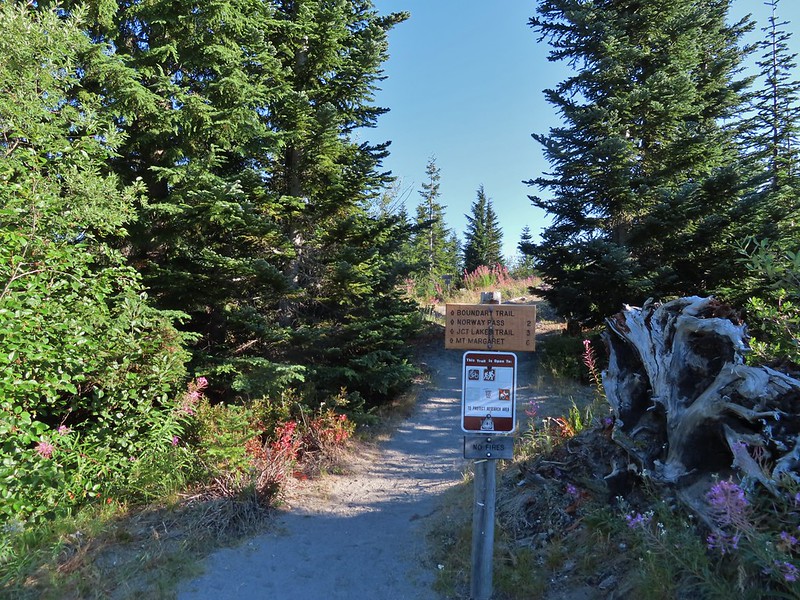
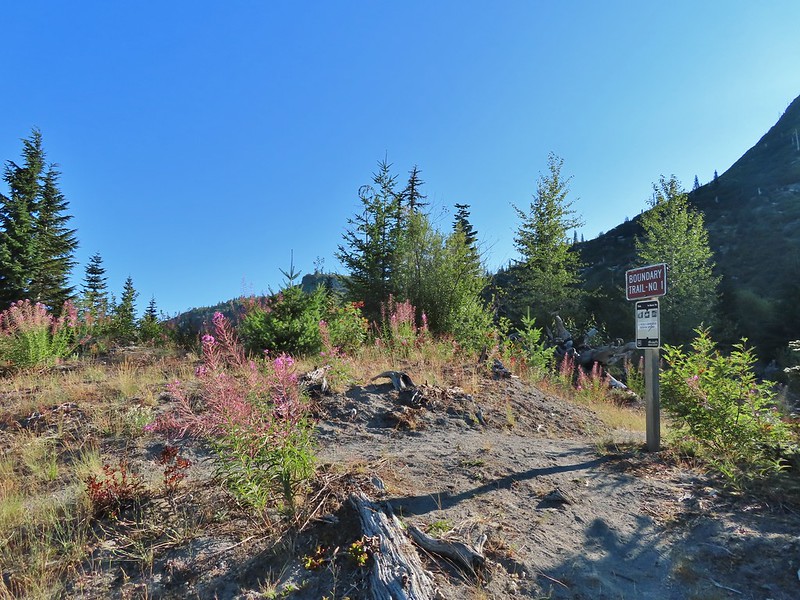
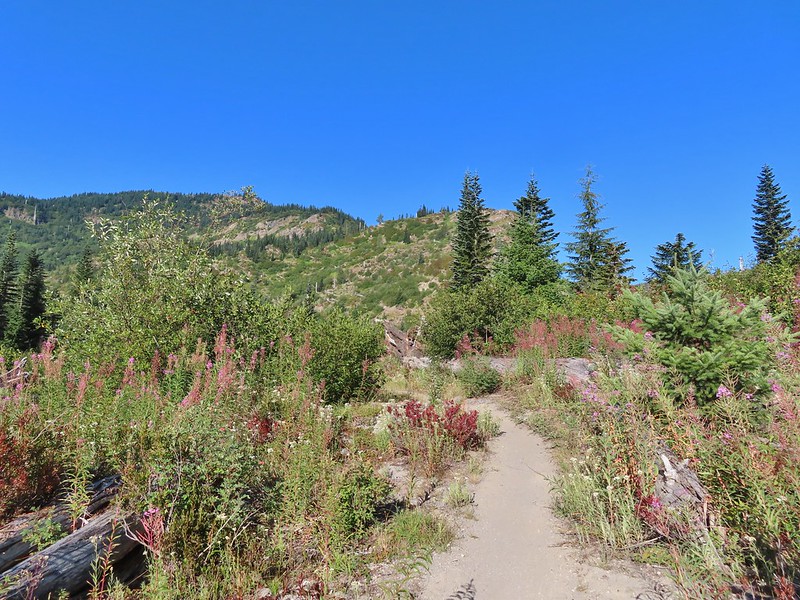

 Paintbrush
Paintbrush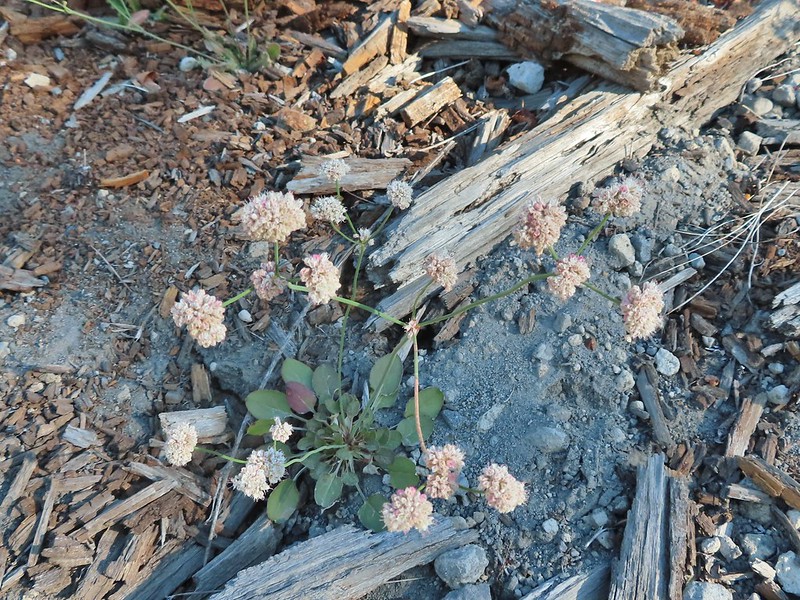 Buckwheat
Buckwheat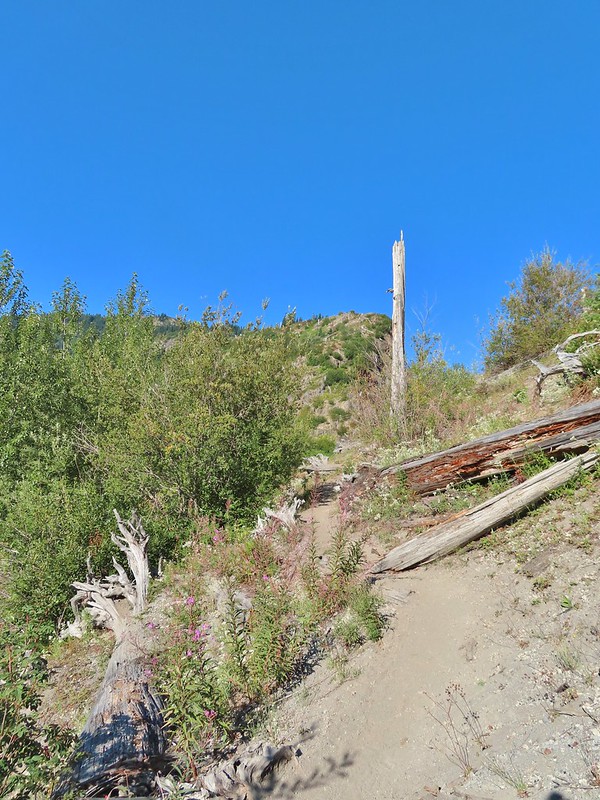

 We could hear a waterfall in the valley below.
We could hear a waterfall in the valley below. The top of the waterfall.
The top of the waterfall. Penstemon and pearly everlasting.
Penstemon and pearly everlasting. Looking back over our shoulders to Meta Lake.
Looking back over our shoulders to Meta Lake. Mt. Adams also from over our shoulders.
Mt. Adams also from over our shoulders. Aster
Aster
 Switchback at the Independence Ridge Trail junction.
Switchback at the Independence Ridge Trail junction.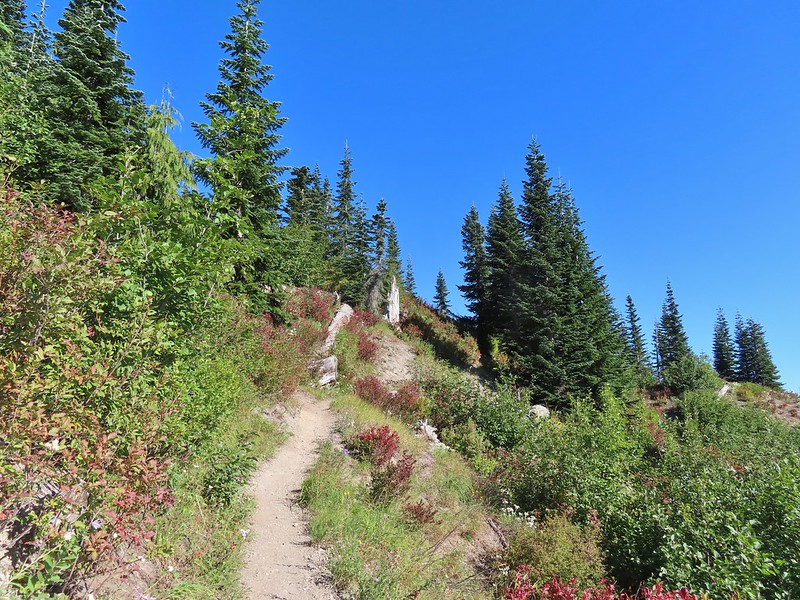
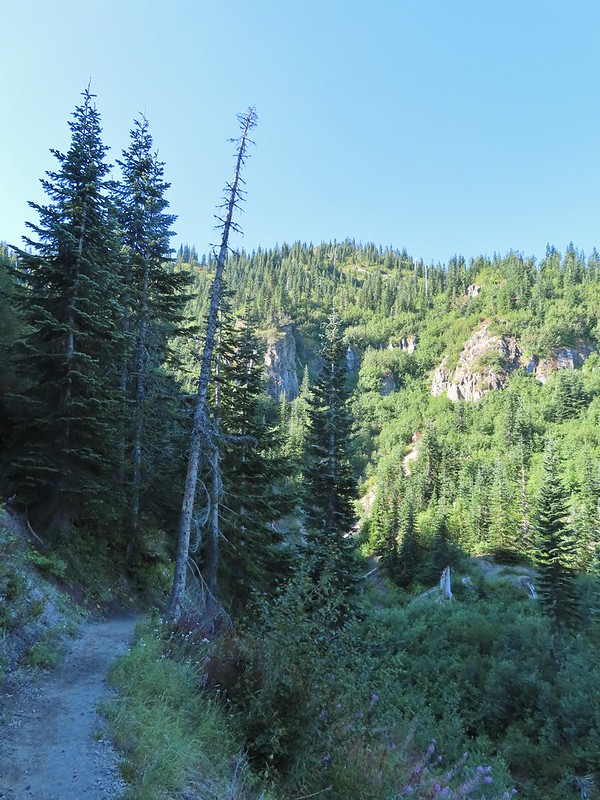 Heading down to the stream bed.
Heading down to the stream bed.
 Penstemon
Penstemon Monkeyflower
Monkeyflower

 Norway Pass (the low saddle to the right) from the trail.
Norway Pass (the low saddle to the right) from the trail. Orange agoseris
Orange agoseris Approaching the pass.
Approaching the pass.




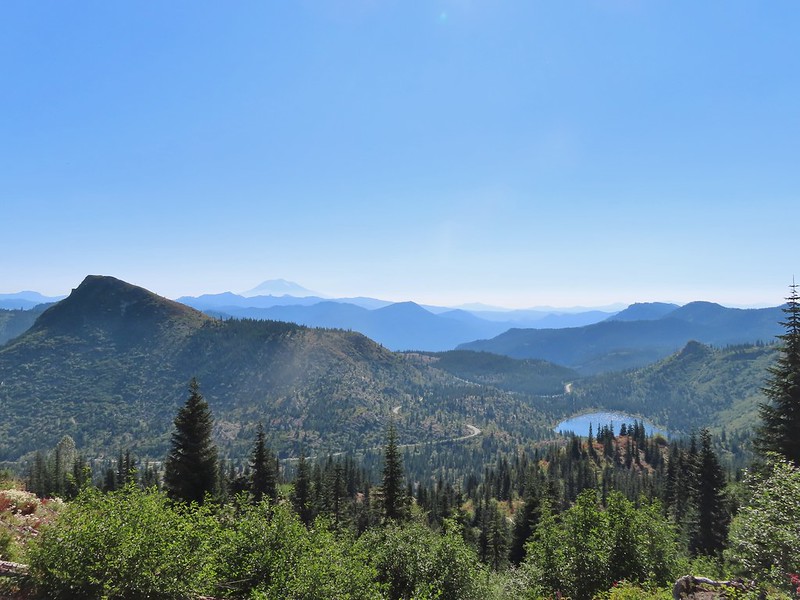 Mt. Adams and Meta Lake from the trail.
Mt. Adams and Meta Lake from the trail.

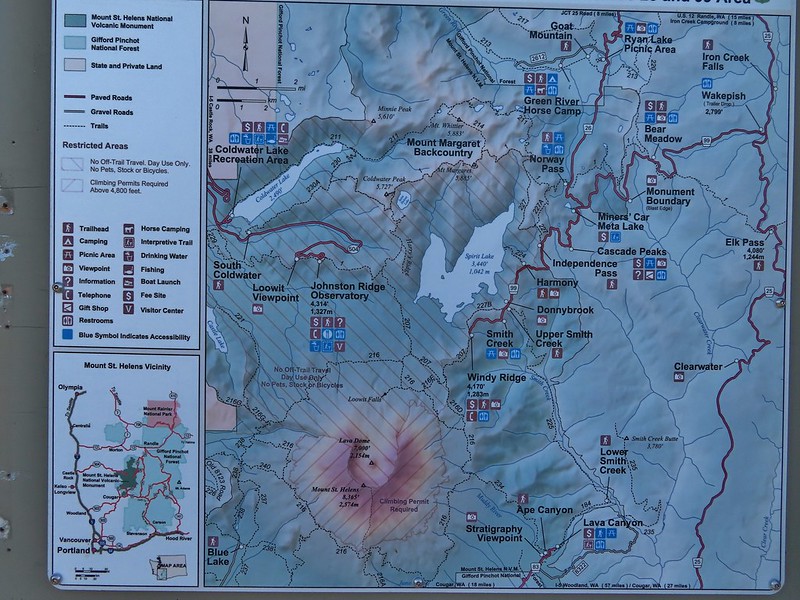

 Mt. St. Helens from the viewpoint.
Mt. St. Helens from the viewpoint.
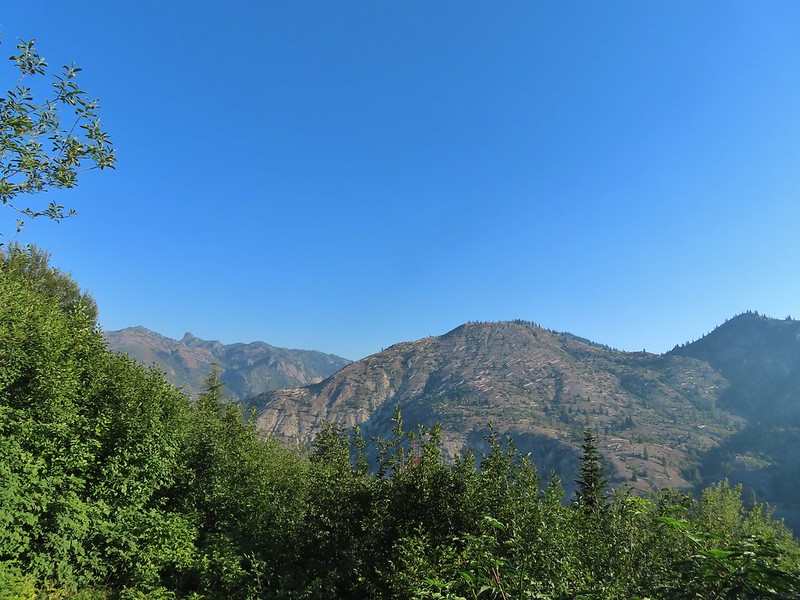

 Pearly everlasting
Pearly everlasting Penstemon
Penstemon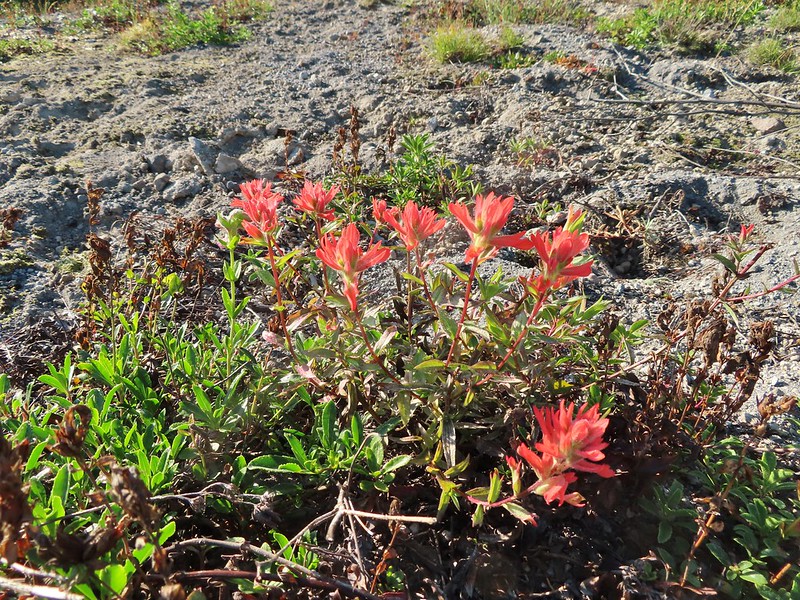 Paintbrush
Paintbrush Mt. St. Helens
Mt. St. Helens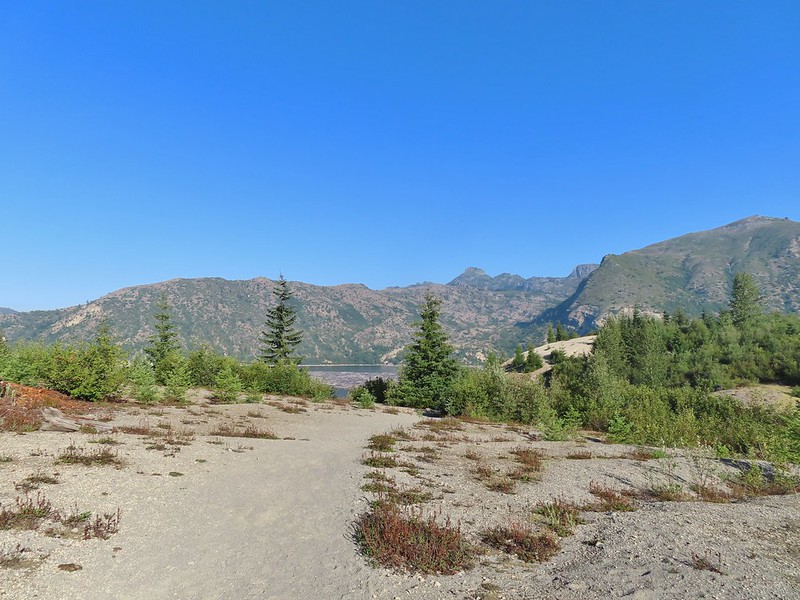


 Mt. St. Helens and Spirit Lake from the end of the trail.
Mt. St. Helens and Spirit Lake from the end of the trail. Coldwater Peak (
Coldwater Peak ( The Dome
The Dome Mt. Margaret
Mt. Margaret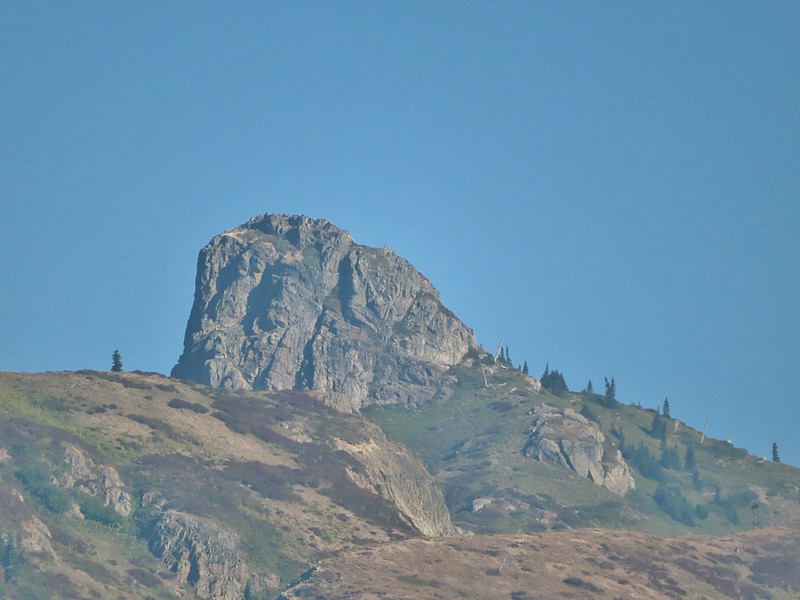 Mount Teragram
Mount Teragram
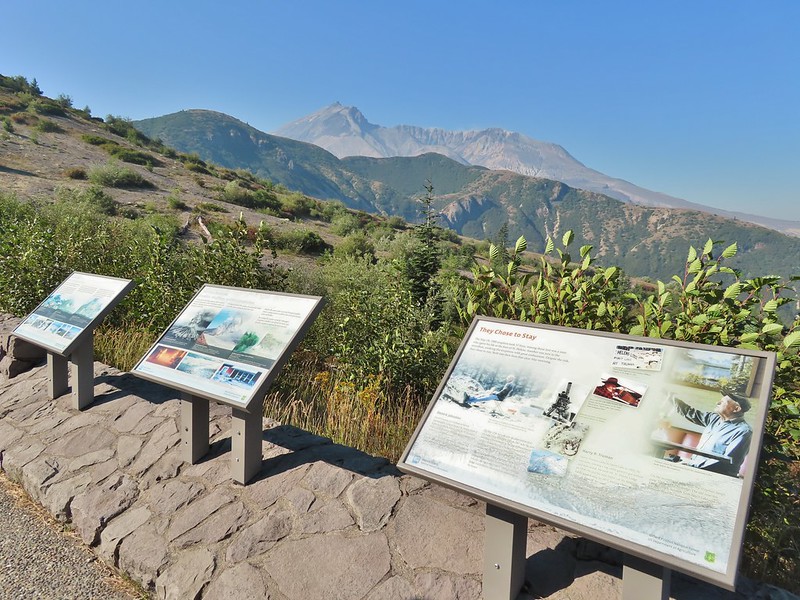 Mt. St. Helens.
Mt. St. Helens.

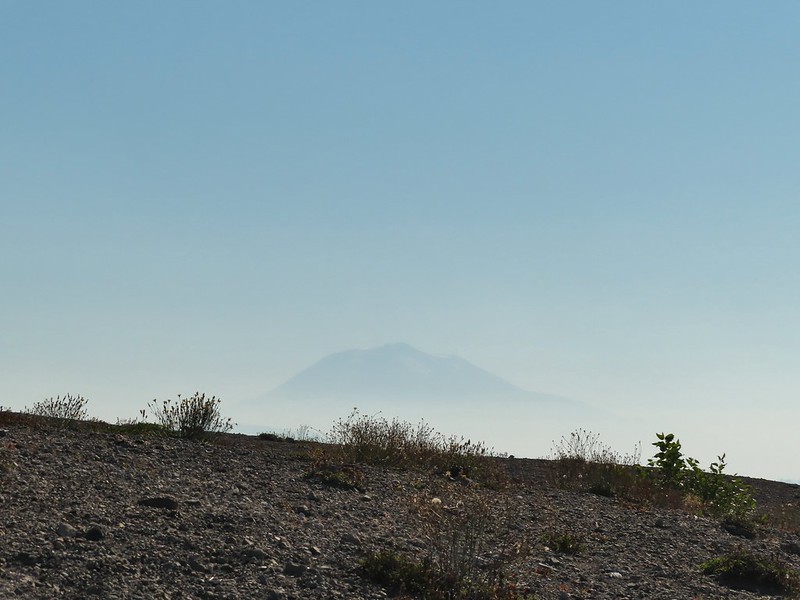 Mt. Adams
Mt. Adams Mt. Rainier
Mt. Rainier

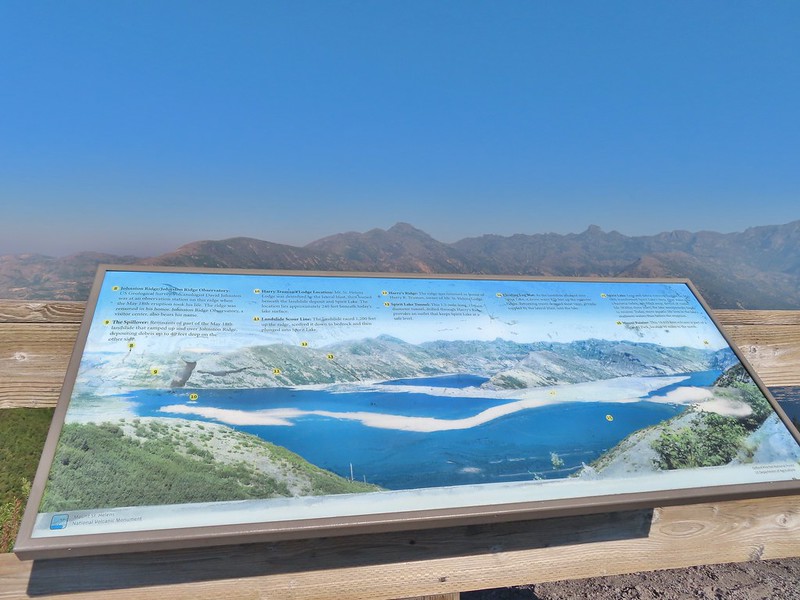
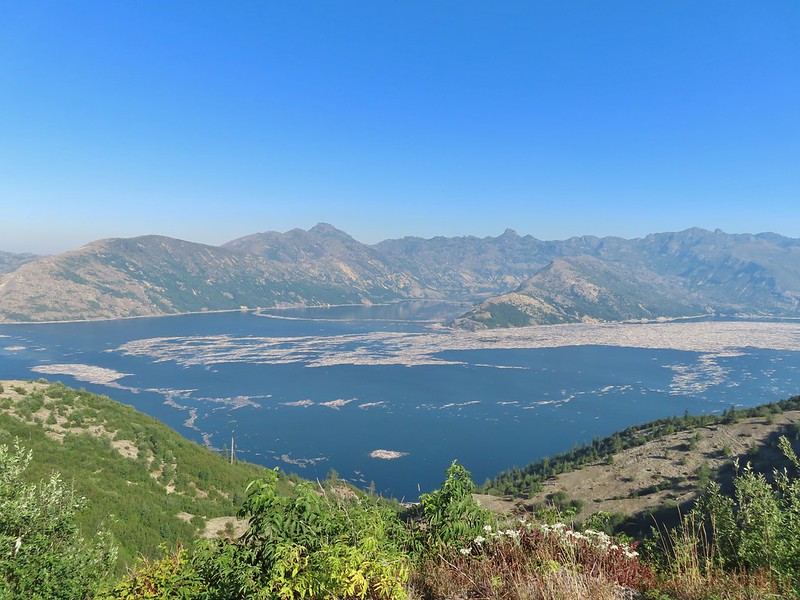
 The Johnston Ridge Observatory was visible across Spirit Lake on a far hillside.
The Johnston Ridge Observatory was visible across Spirit Lake on a far hillside.
 It’s often hard to tell if you’re seeing dust from rockfall or steam from one of the vents.
It’s often hard to tell if you’re seeing dust from rockfall or steam from one of the vents.


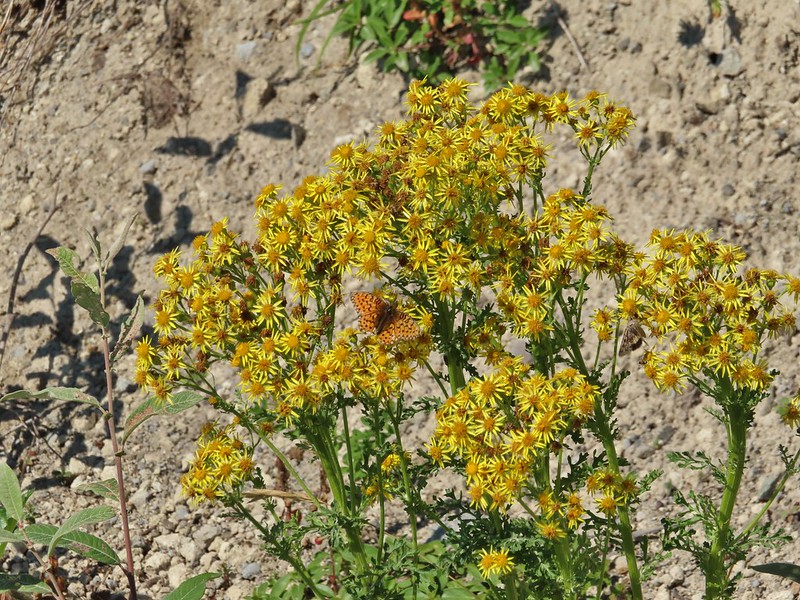 Butterfly on ragwort
Butterfly on ragwort Butterfly on pearly everlasting
Butterfly on pearly everlasting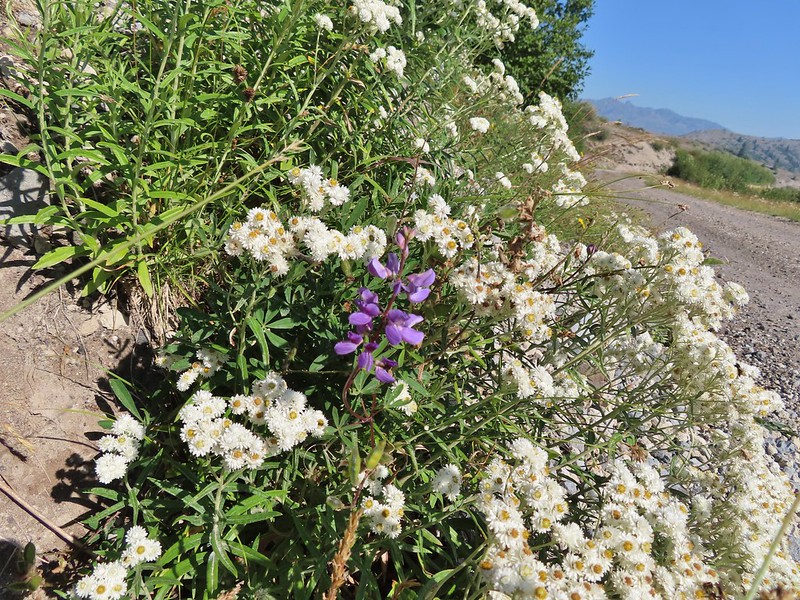 Lupine in the pearly everlasting
Lupine in the pearly everlasting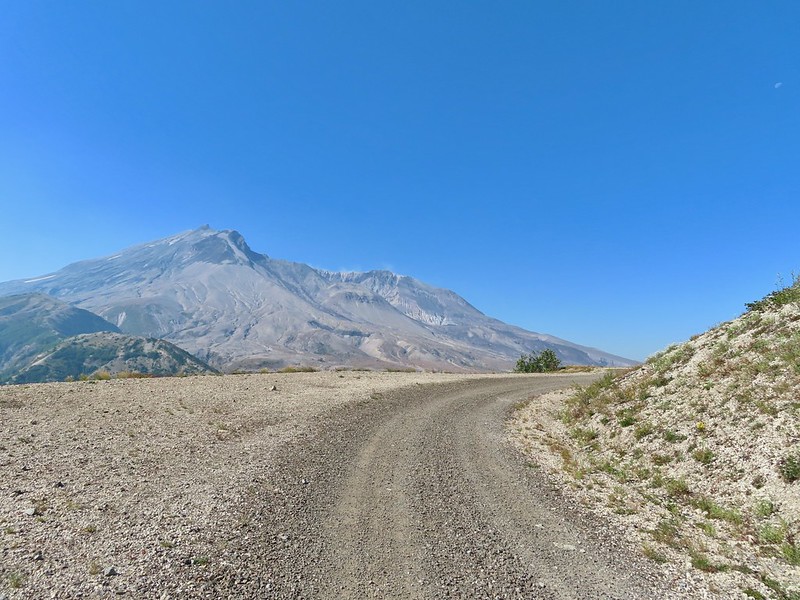
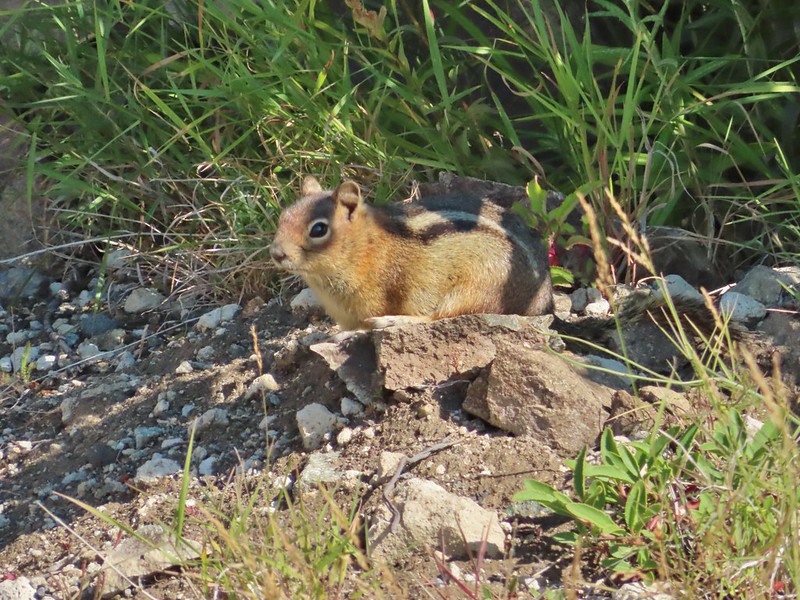 Golden-mantled ground squirrel
Golden-mantled ground squirrel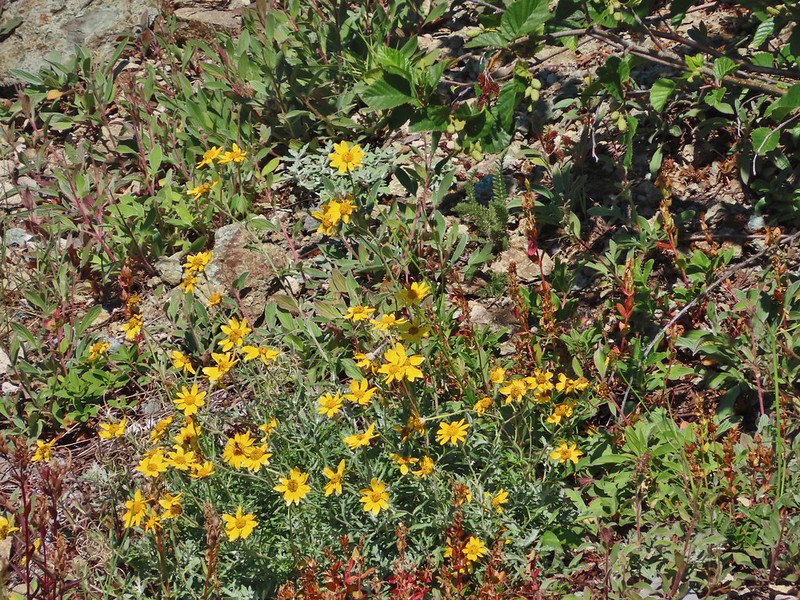 Might be Oregon sunshine
Might be Oregon sunshine Penstemon
Penstemon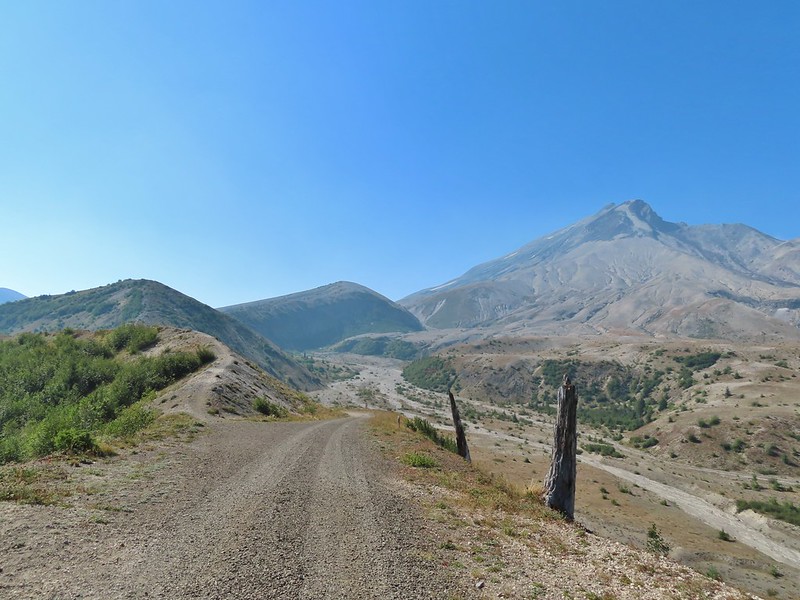
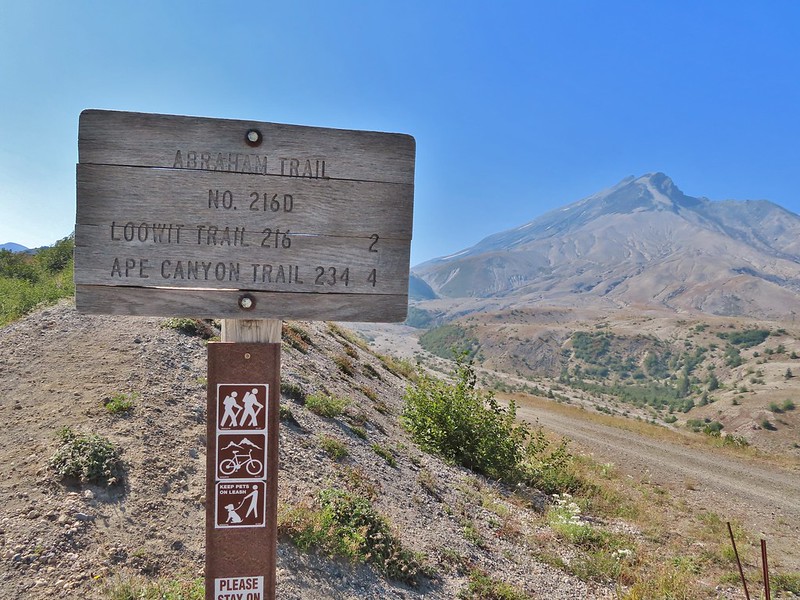





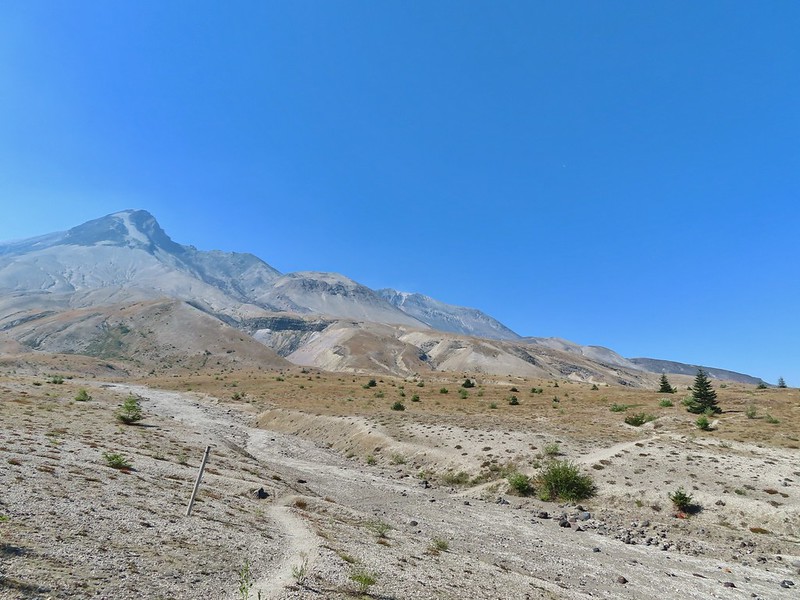
 Paintbrush and dwarf lupine
Paintbrush and dwarf lupine Pearly everlasting
Pearly everlasting
 The Loowit Trail junction.
The Loowit Trail junction.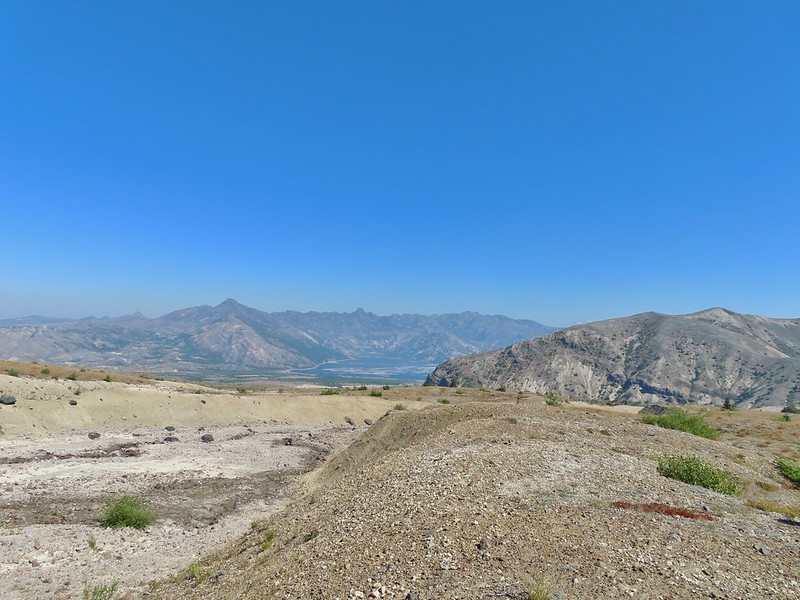 Spirit Lake from the junction.
Spirit Lake from the junction. In the gully.
In the gully.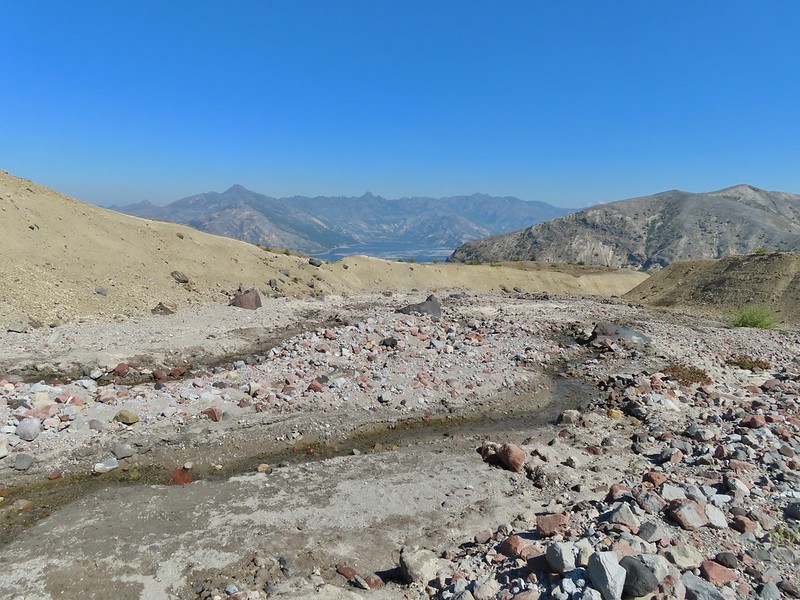
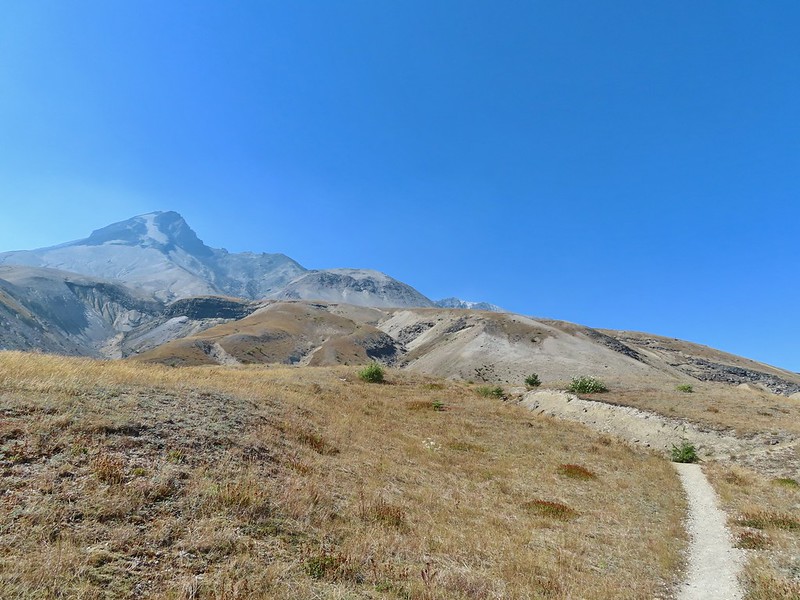
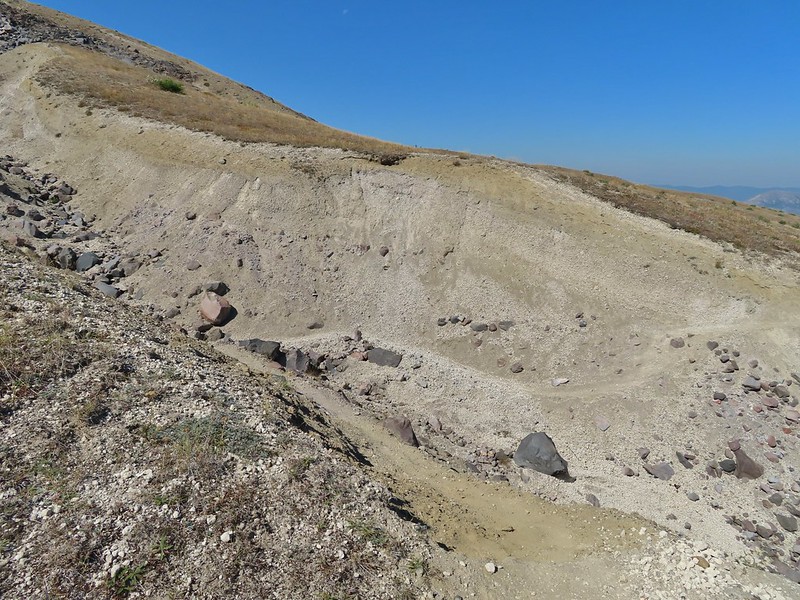 Another gully to cross.
Another gully to cross. Big Spring is in the willow thicket.
Big Spring is in the willow thicket.
 The stream flowing over the Loowit Trail.
The stream flowing over the Loowit Trail.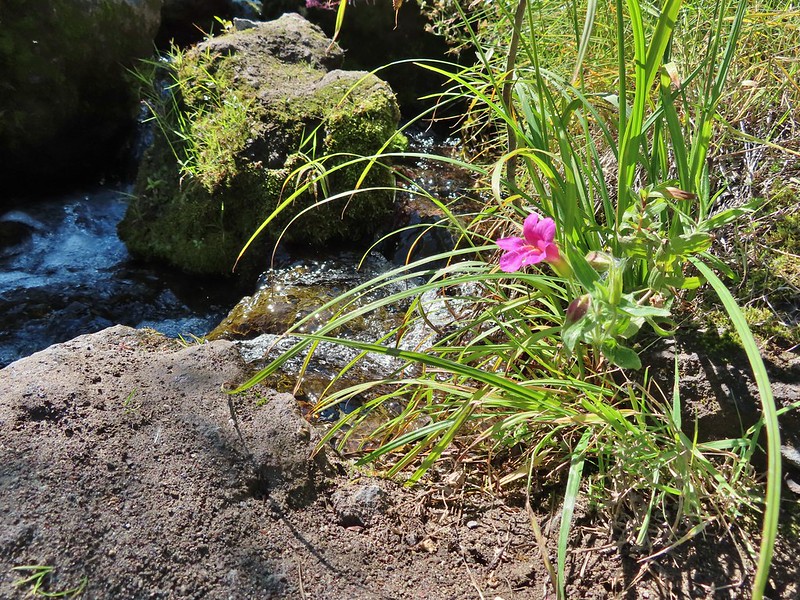 A pink monkeyflower at the spring.
A pink monkeyflower at the spring.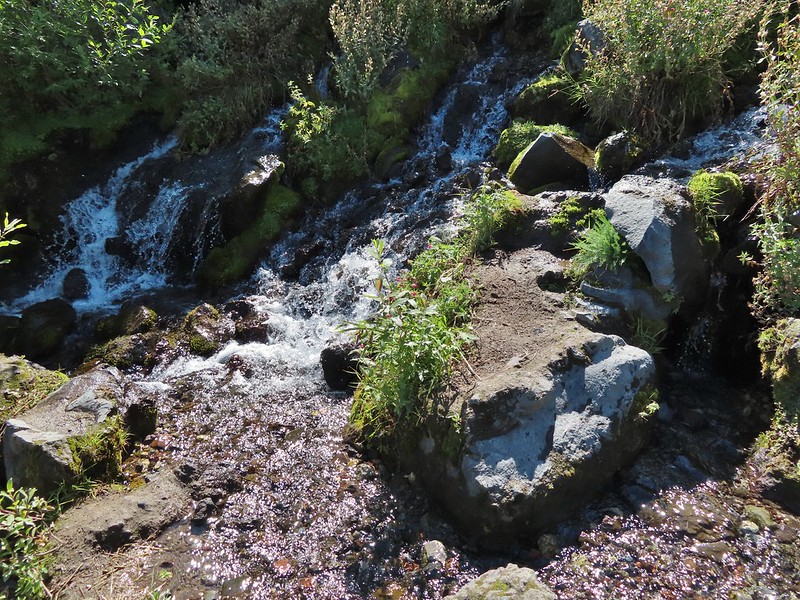
 Looking back at the willows and Big Spring.
Looking back at the willows and Big Spring.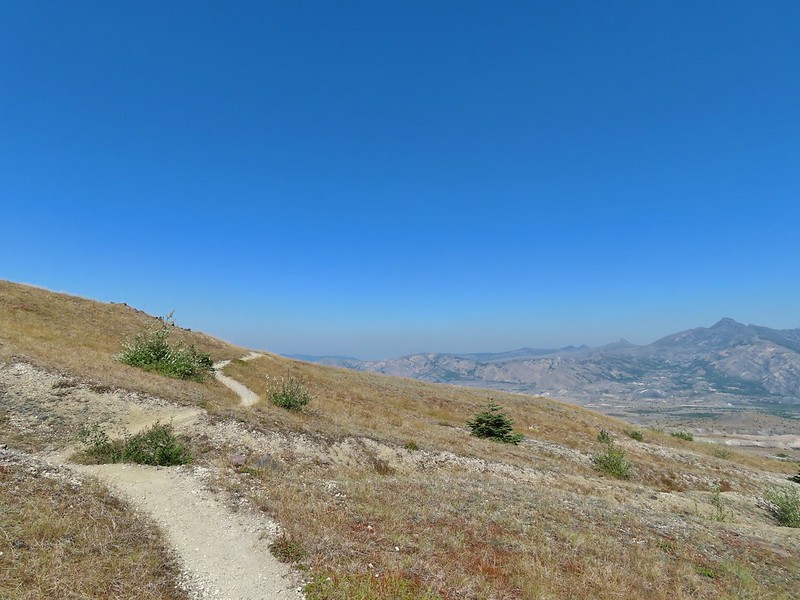 Coldwater Peak to the right.
Coldwater Peak to the right. The Sugar Bowl lava dome.
The Sugar Bowl lava dome. Spirit Lake from the trail.
Spirit Lake from the trail. The first goats we spotted are on this ridge above the lone tree.
The first goats we spotted are on this ridge above the lone tree.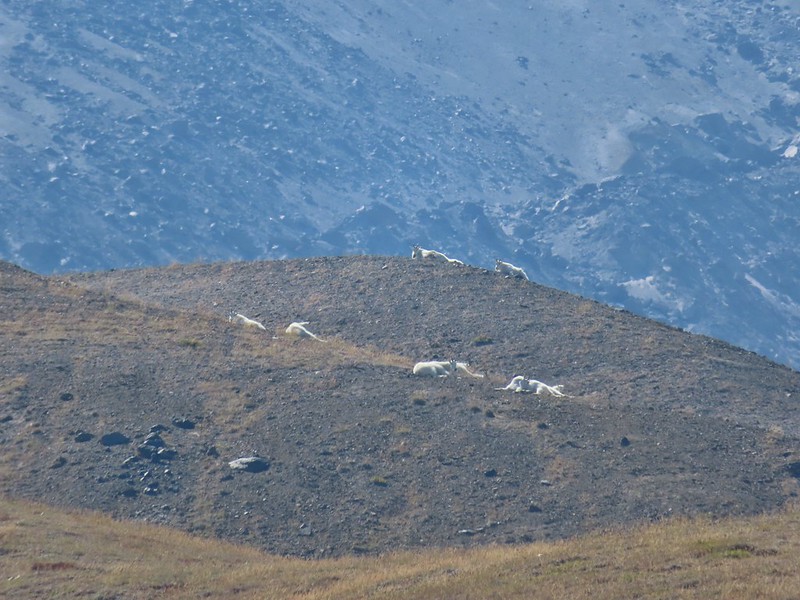
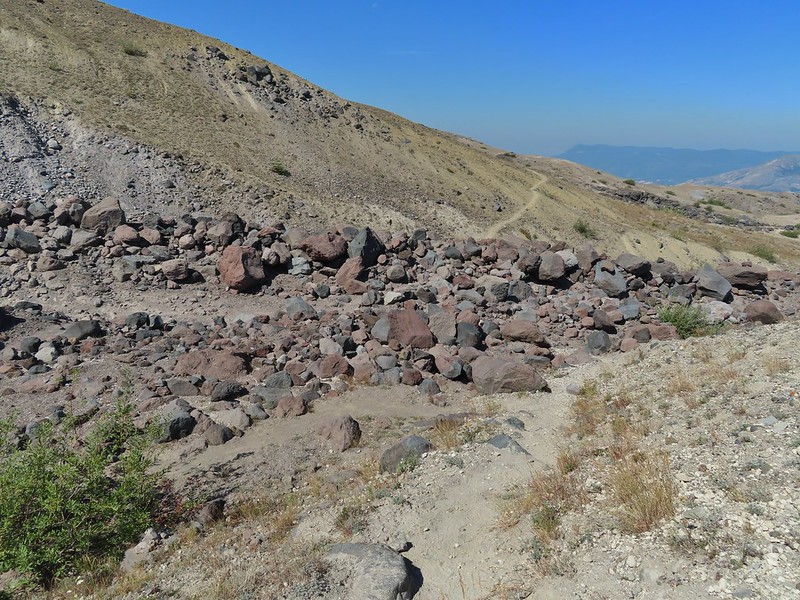 The Loowit Trail crossing two gullies in a short stretch, one red one black.
The Loowit Trail crossing two gullies in a short stretch, one red one black. Dropping into the second gully.
Dropping into the second gully. From the second gully we could see quite a few more goats on the ridge.
From the second gully we could see quite a few more goats on the ridge. Approaching the junction with the side trail to Loowit Falls.
Approaching the junction with the side trail to Loowit Falls. Sign for Loowit Falls.
Sign for Loowit Falls.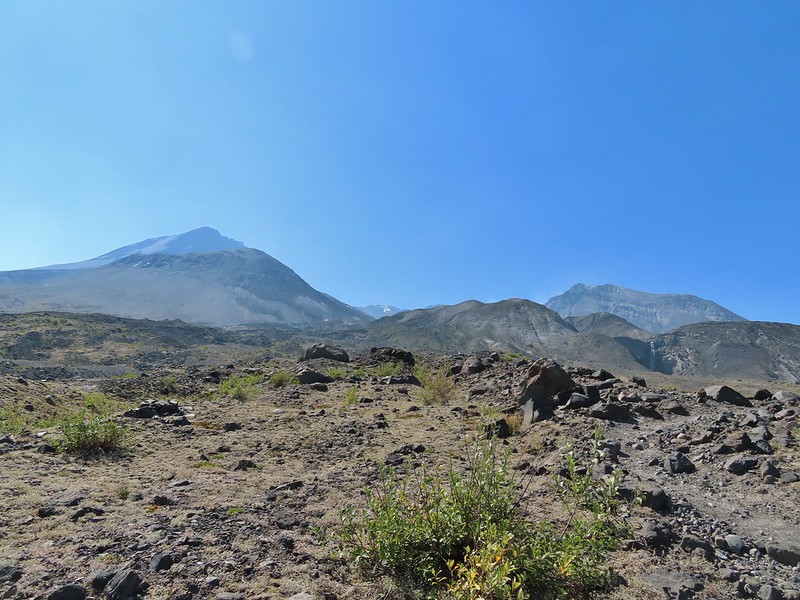 Loowit Falls (right side of the photo) was visible for much of the half mile.
Loowit Falls (right side of the photo) was visible for much of the half mile.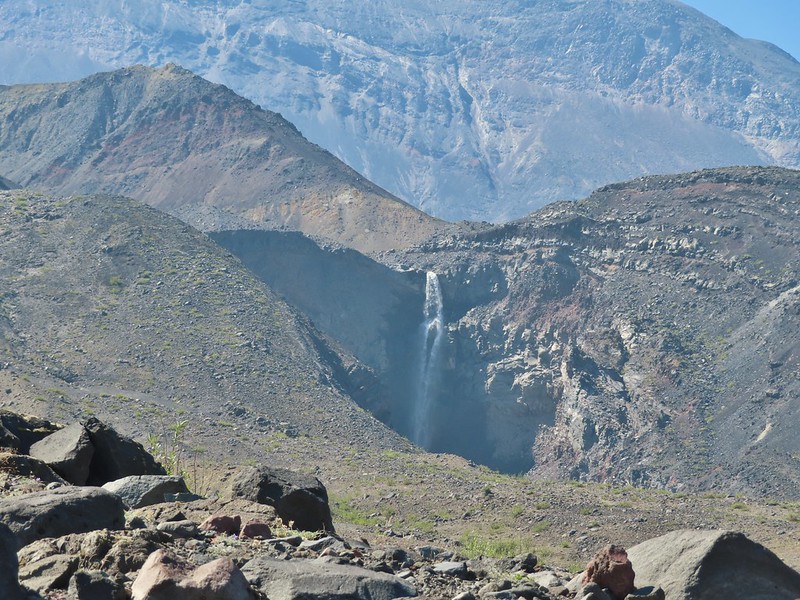
 Looking back at Coldwater Peak and Spirit Lake. (The top of Mt. Rainier is barely visible peaking over the top of the ridges.)
Looking back at Coldwater Peak and Spirit Lake. (The top of Mt. Rainier is barely visible peaking over the top of the ridges.)



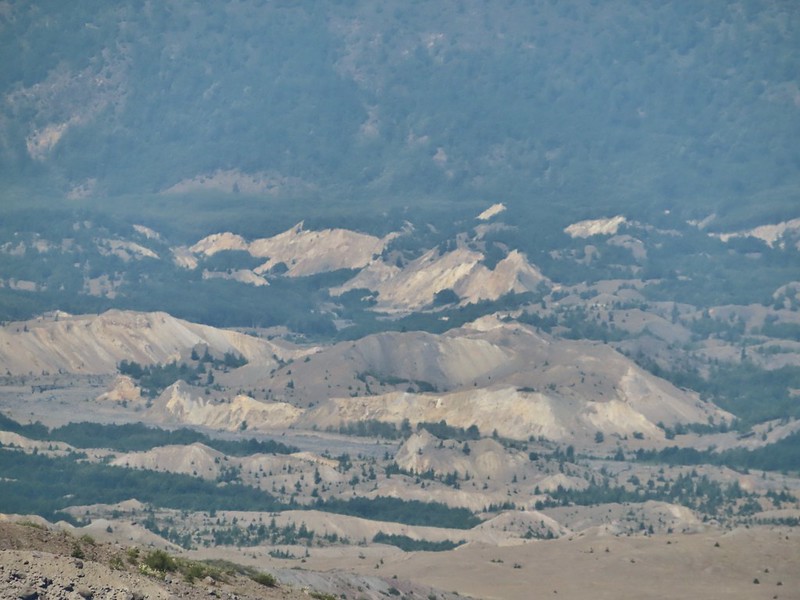


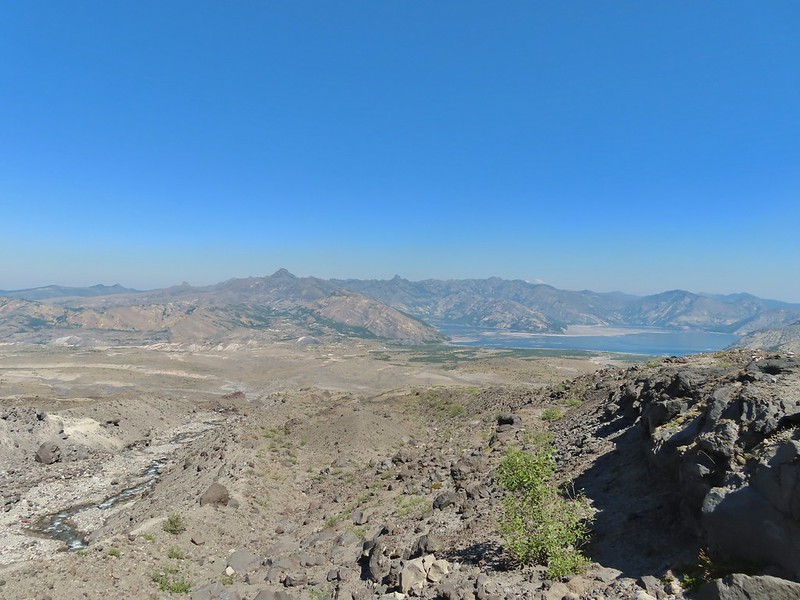 Spirit Lake from the viewpoint.
Spirit Lake from the viewpoint.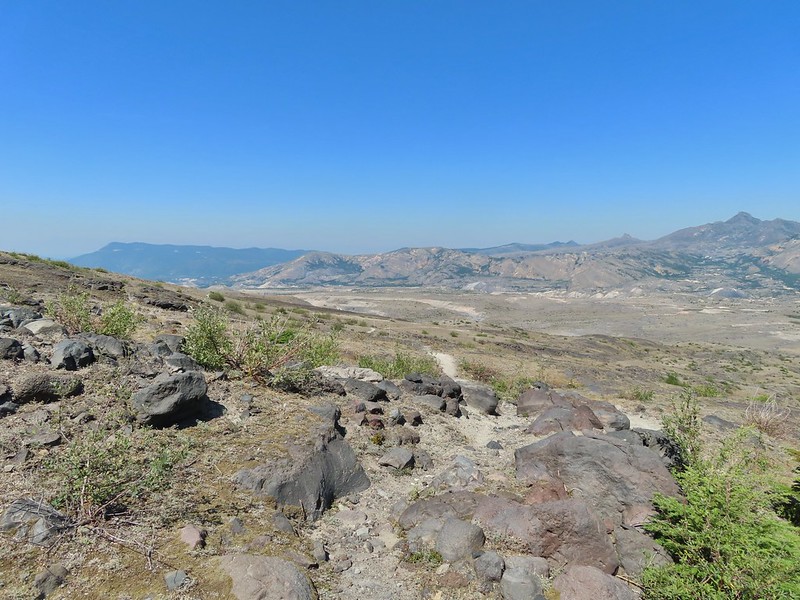

 Paintbrush
Paintbrush Dwarf lupine
Dwarf lupine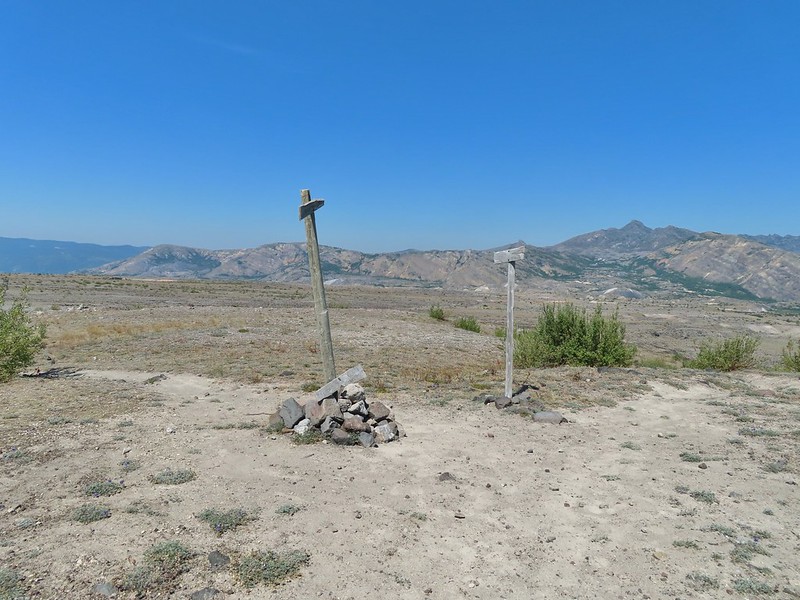
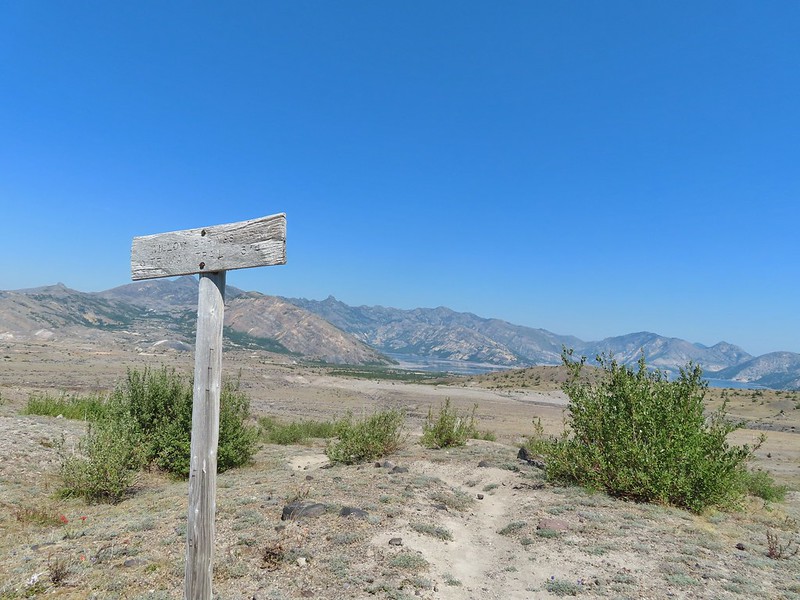
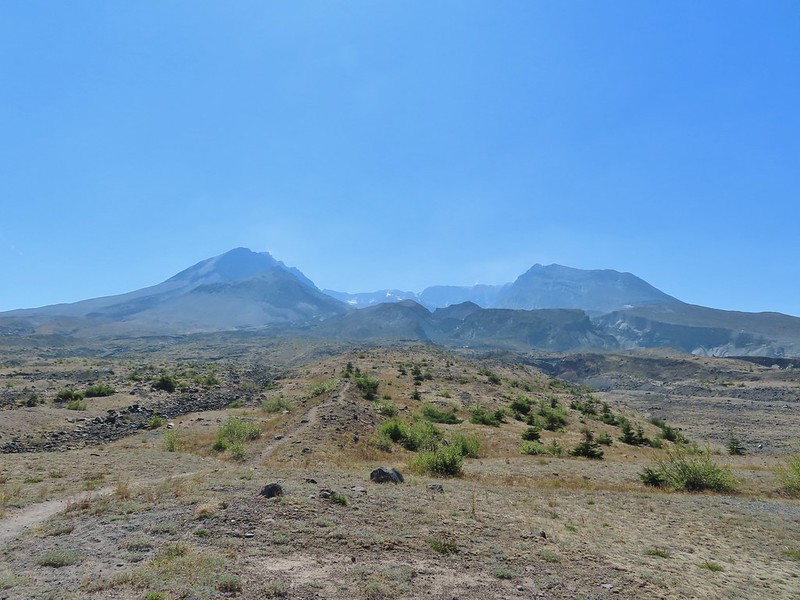 Mt. St. Helens from the Willow Springs Trail.
Mt. St. Helens from the Willow Springs Trail. Heading toward Spirit Lake.
Heading toward Spirit Lake.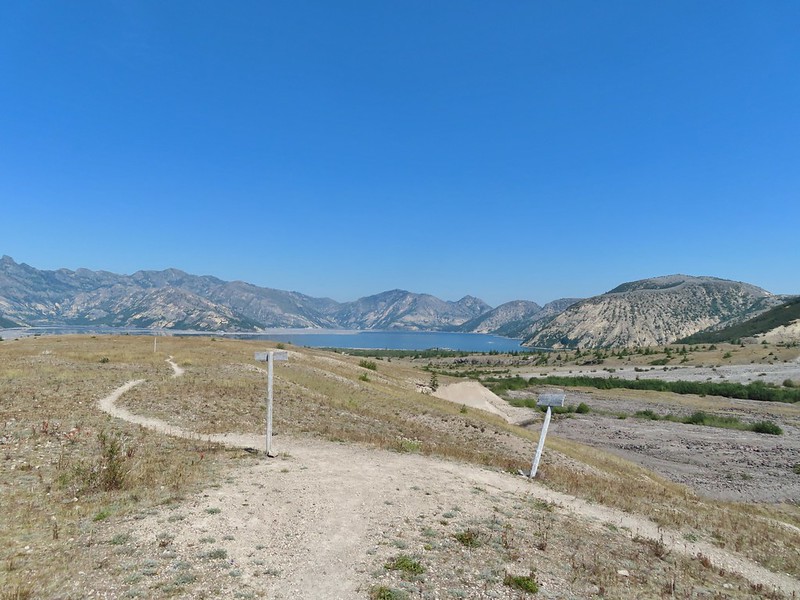

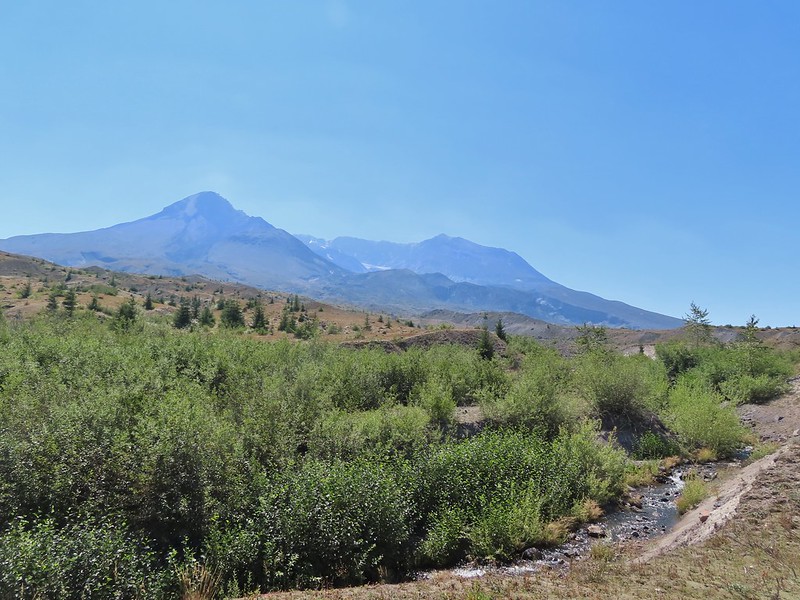
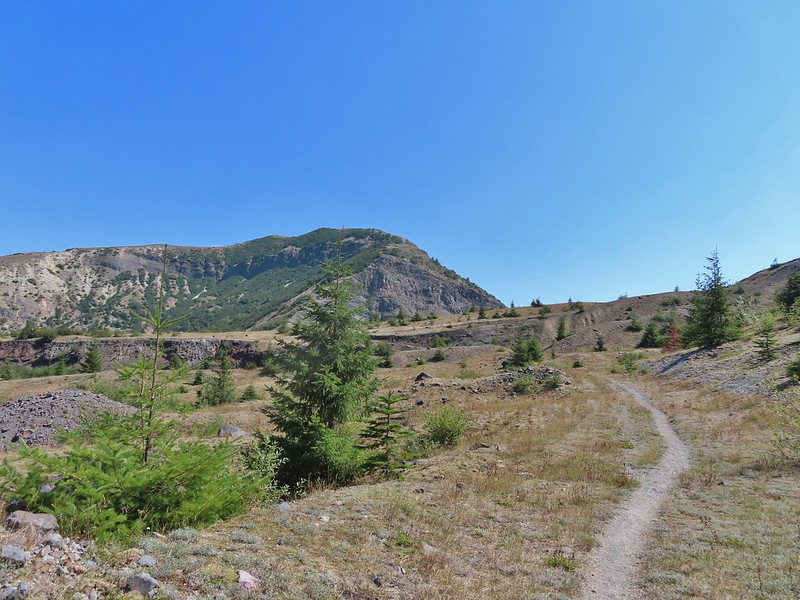

 The Dome above Spirit Lake
The Dome above Spirit Lake

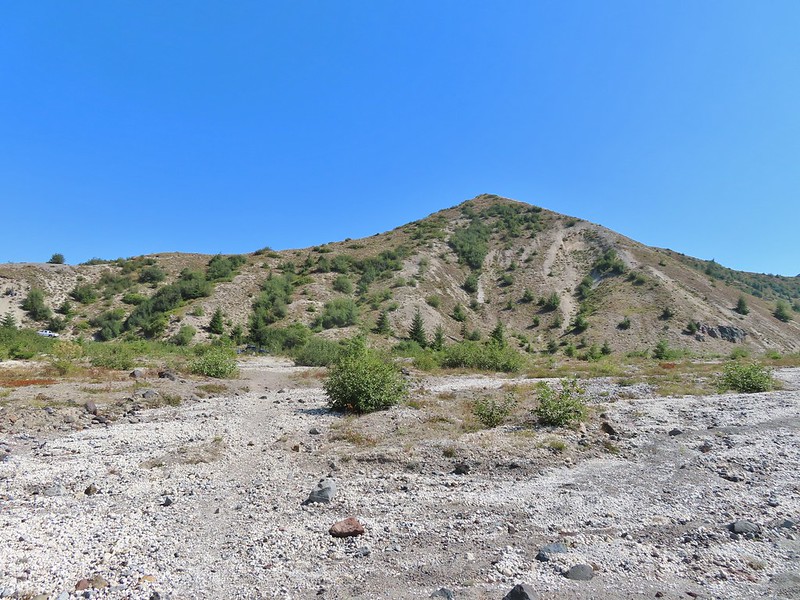 Vehicles ahead in the research parking area.
Vehicles ahead in the research parking area.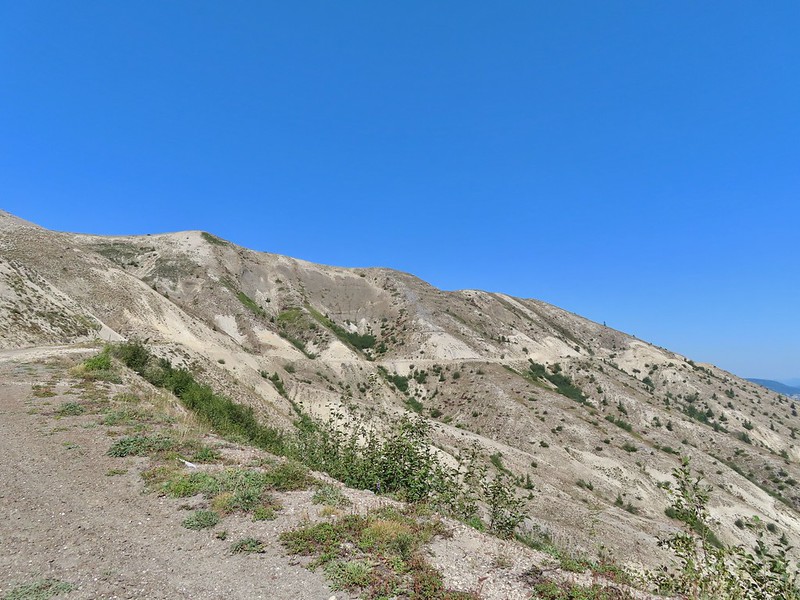
 Mt. Adams to the left.
Mt. Adams to the left. Mt. Adams
Mt. Adams Look out for snakes, not the poisonous kind just don’t want to step on them.
Look out for snakes, not the poisonous kind just don’t want to step on them.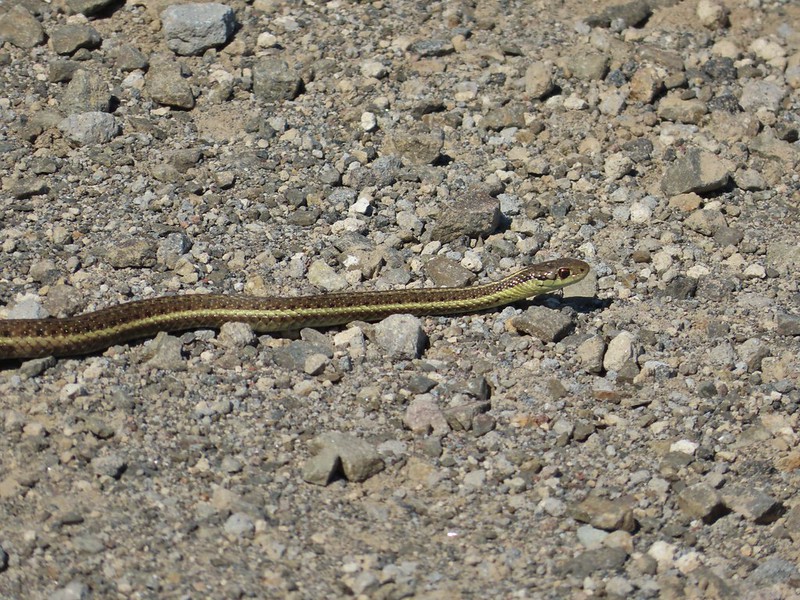
 Some sort of sulphur butterfly on pearly everalsting.
Some sort of sulphur butterfly on pearly everalsting.
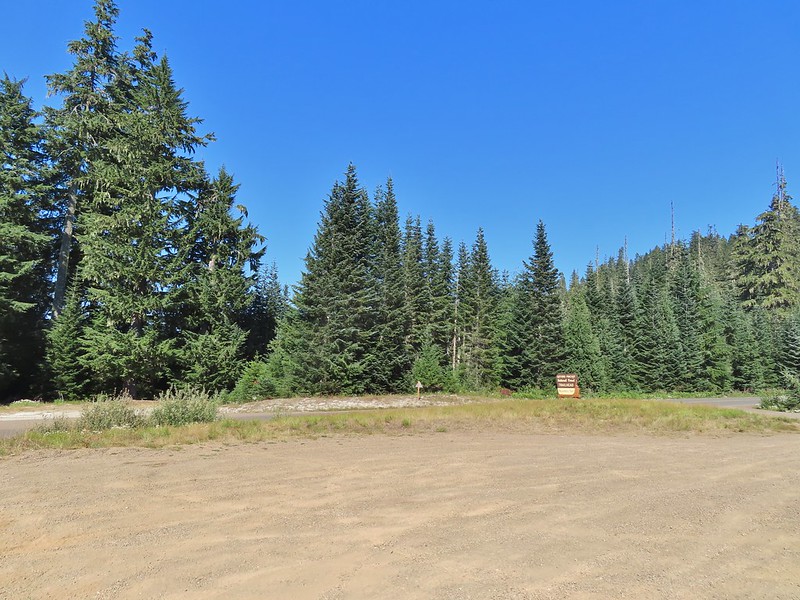
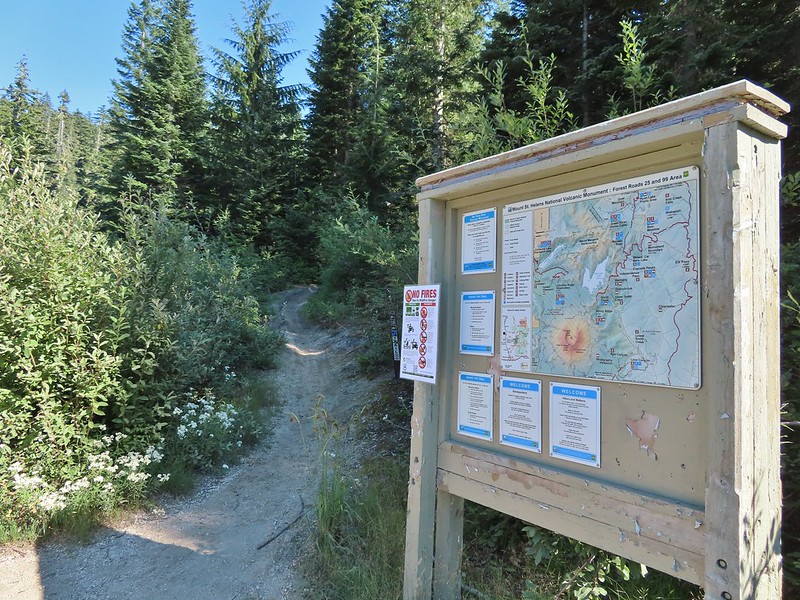



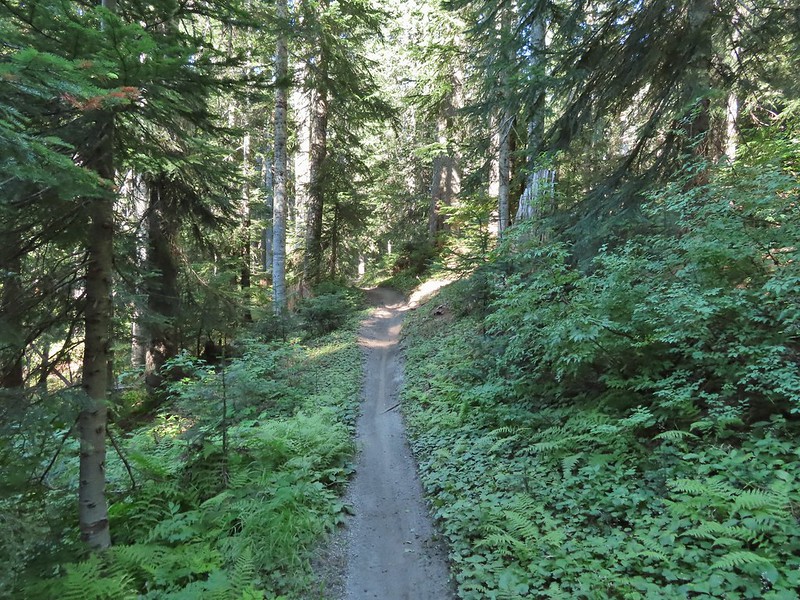

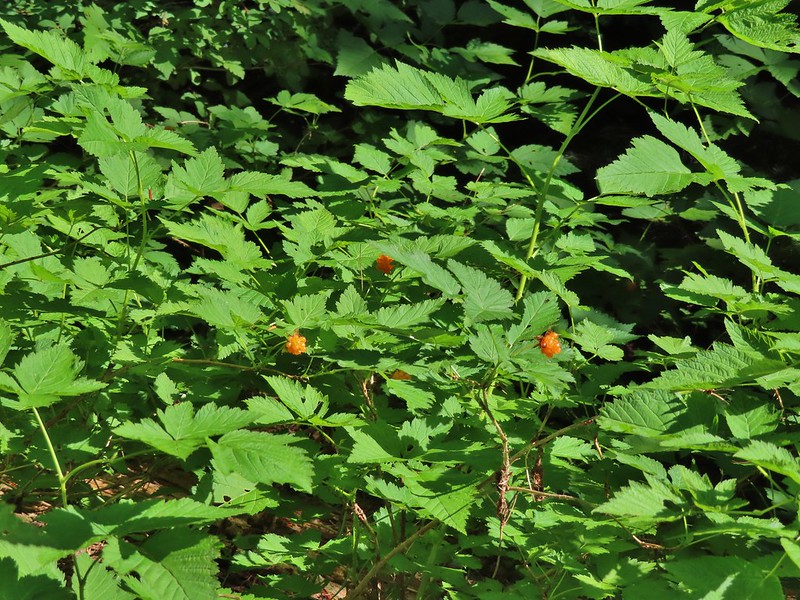 Salmonberries
Salmonberries Blueberries
Blueberries Huckleberries
Huckleberries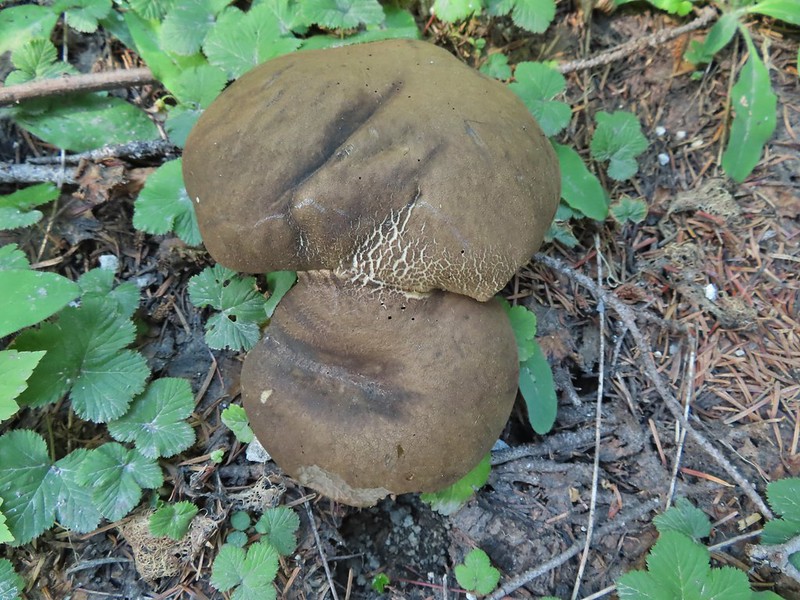 Mushrooms (the flowers of Fall)
Mushrooms (the flowers of Fall)
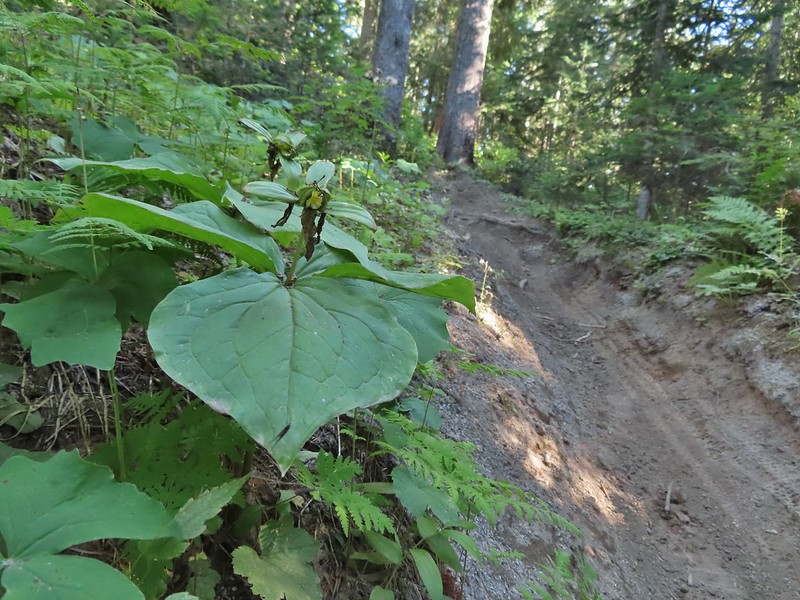 I was really surprised to still be able to make out the remains of the petals on these trillium.
I was really surprised to still be able to make out the remains of the petals on these trillium. These bunchberries with a few petals left were near the trillium above.
These bunchberries with a few petals left were near the trillium above.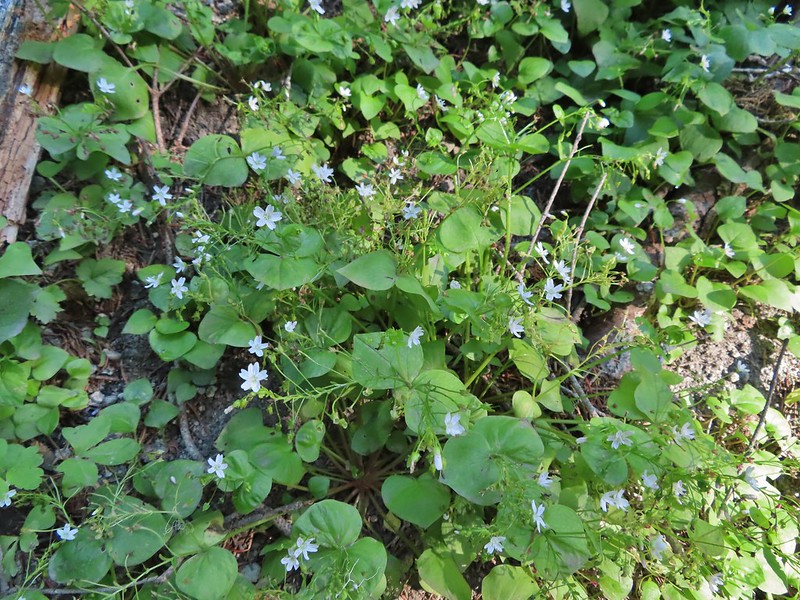 Candyflower
Candyflower

 These thimbleberries weren’t ripe but a short distance further were a lot of ripe ones. I thought I might have to hike back and retrieve Heather from them.
These thimbleberries weren’t ripe but a short distance further were a lot of ripe ones. I thought I might have to hike back and retrieve Heather from them. A brief glimpse of Mt. Rainier from the ridge the trail was following, it looked like a lot of the smoke had blown away.
A brief glimpse of Mt. Rainier from the ridge the trail was following, it looked like a lot of the smoke had blown away.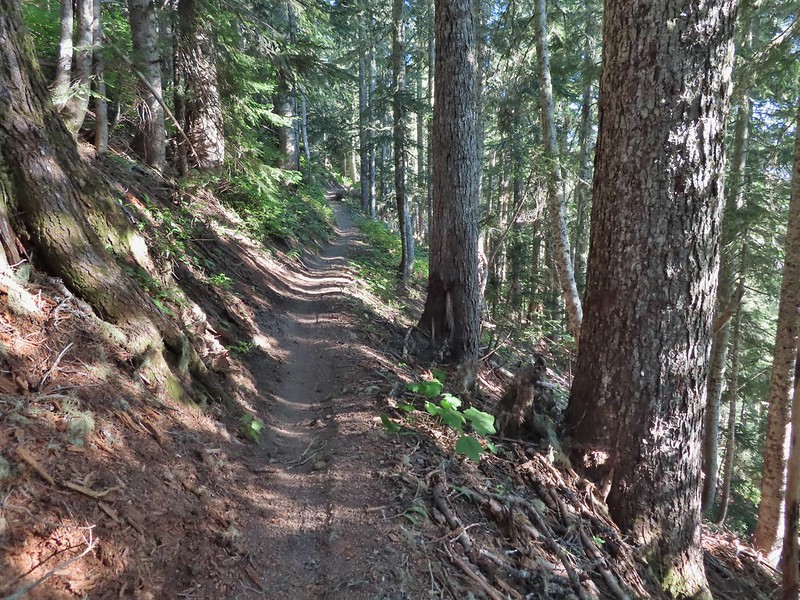

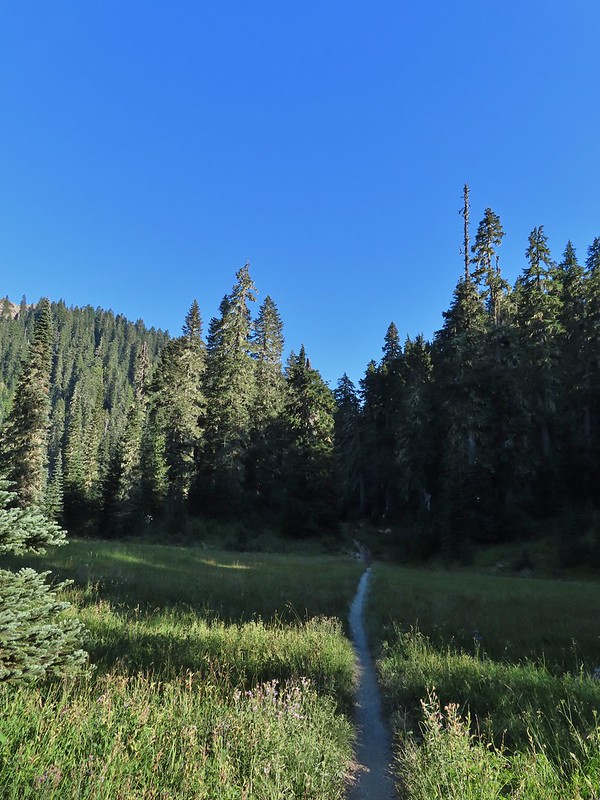
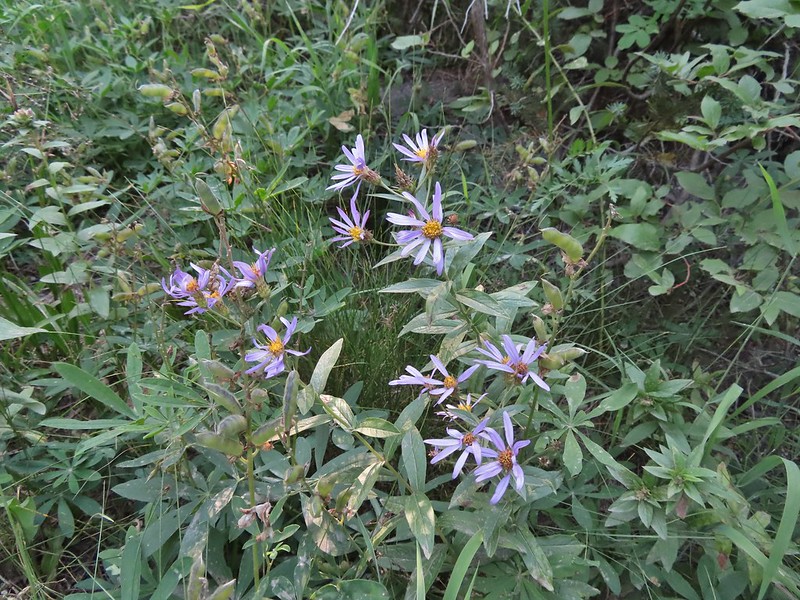 Aster
Aster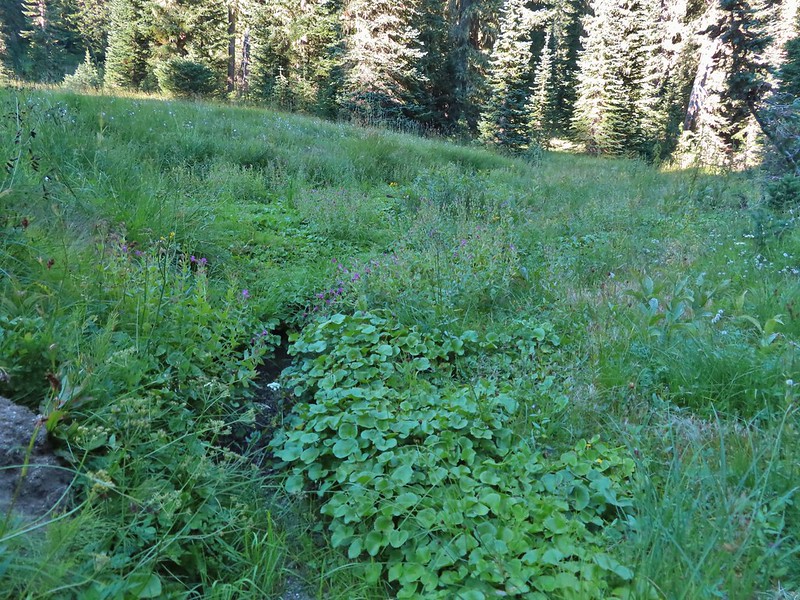 Elk Creek
Elk Creek Pink monkeyflower along Elk Creek
Pink monkeyflower along Elk Creek Lupine
Lupine The trail near Badger Lake was particularly torn up and there were several signs posted admonishing motorcyclists to stop driving off trail.
The trail near Badger Lake was particularly torn up and there were several signs posted admonishing motorcyclists to stop driving off trail.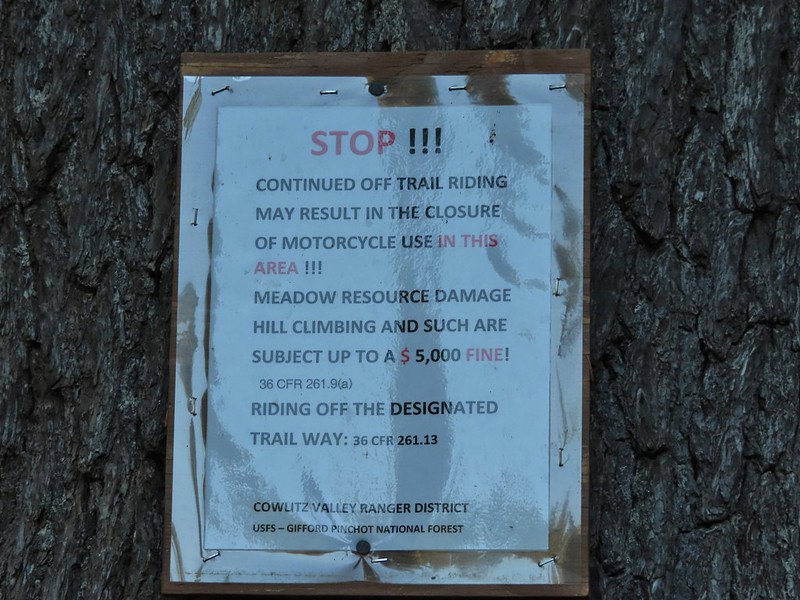
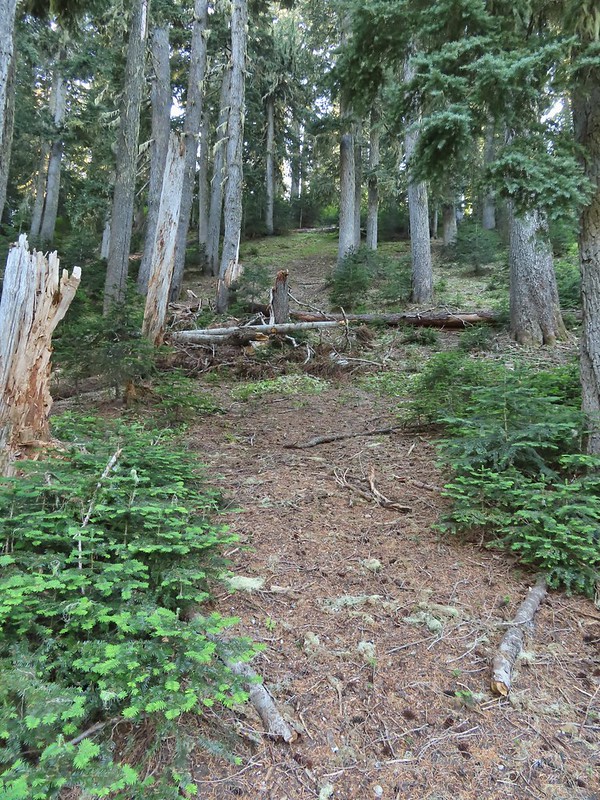 Torn up hillside near the lake, it only takes one or two idiots to cause a lot of damage (the same goes for hikers/mountain bikers).
Torn up hillside near the lake, it only takes one or two idiots to cause a lot of damage (the same goes for hikers/mountain bikers).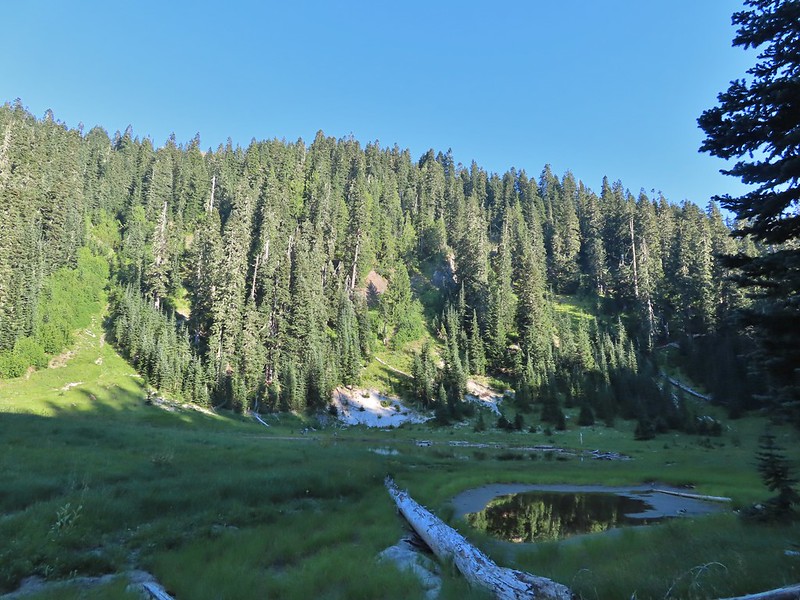 The little puddle in the foreground is not the lake, it is further back.
The little puddle in the foreground is not the lake, it is further back.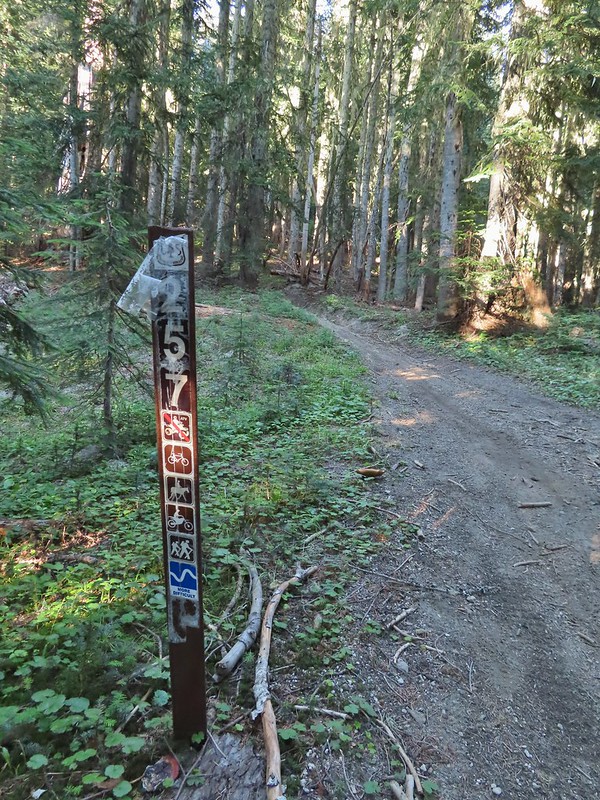
 This mushrooms was at least as wide as a salad plate.
This mushrooms was at least as wide as a salad plate.


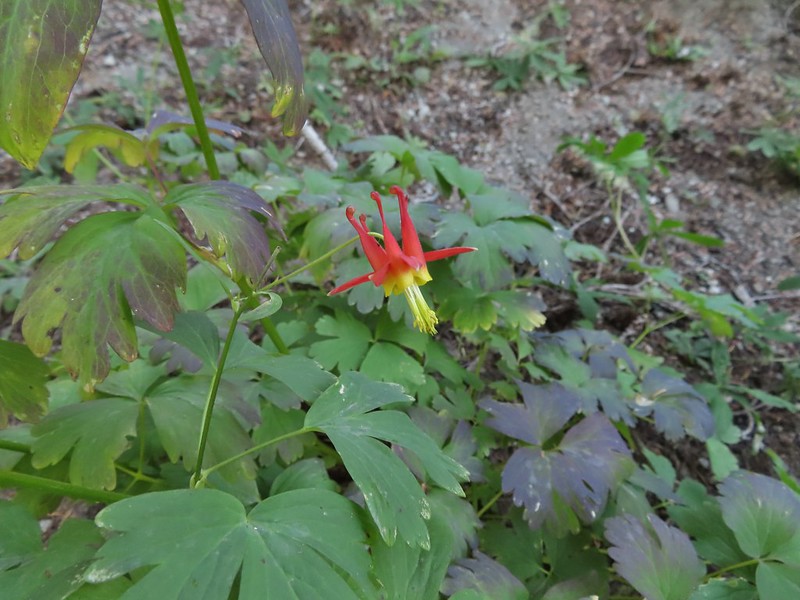 A columbine
A columbine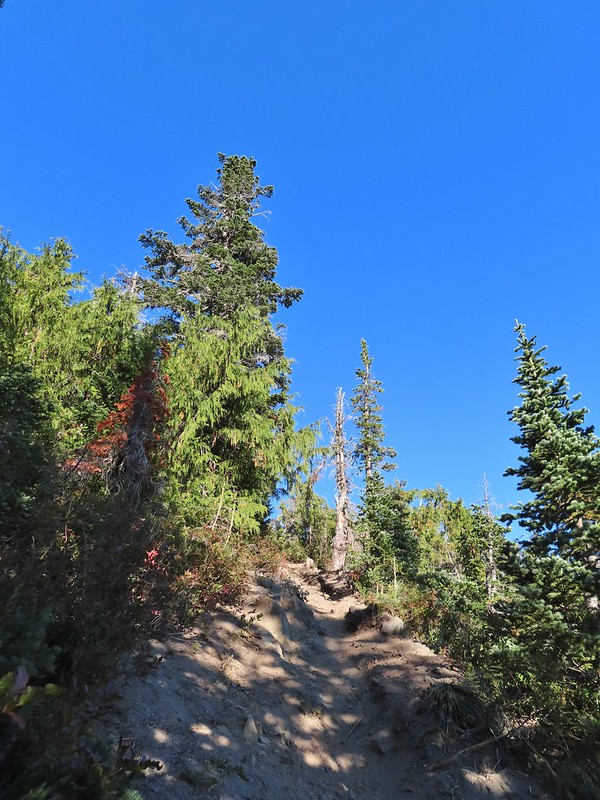
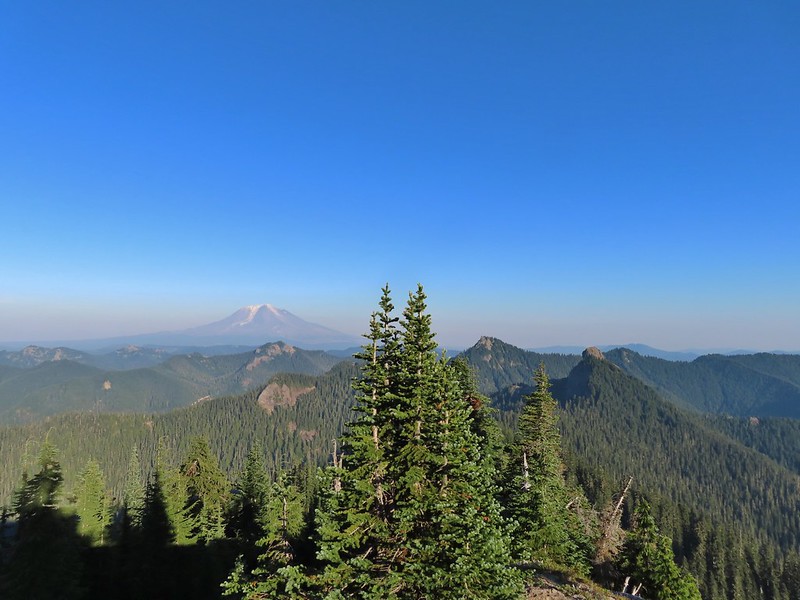
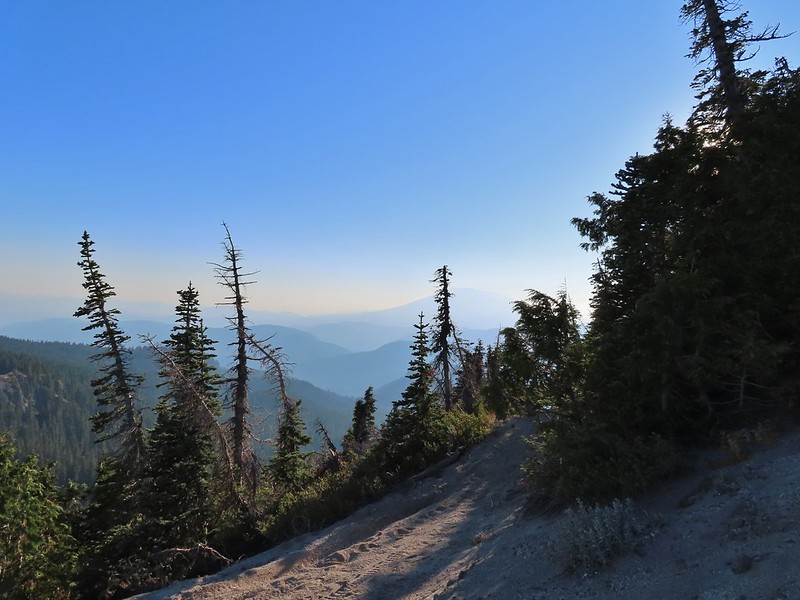 Mt. St. Helens was hard to make out with the combination of haze and Sun position.
Mt. St. Helens was hard to make out with the combination of haze and Sun position. Looking south toward Mt. Hood (I could make it out with the naked eye.)
Looking south toward Mt. Hood (I could make it out with the naked eye.) Mt. Hood in the haze.
Mt. Hood in the haze. Mt. Rainier
Mt. Rainier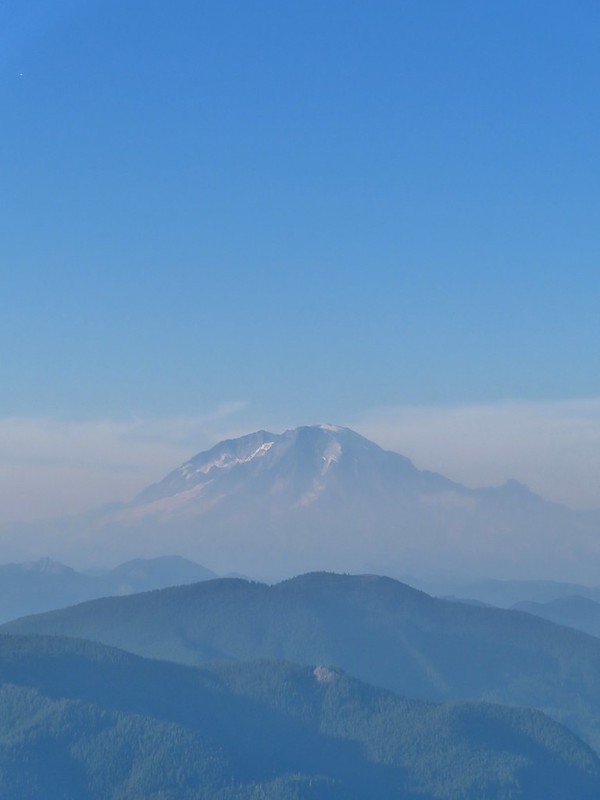 Mt. Rainier
Mt. Rainier Mt. Adams
Mt. Adams The Goat Rocks were also hard to make out due to the smoke.
The Goat Rocks were also hard to make out due to the smoke. Western pasque flowers, aka hippies on a stick, below the summit.
Western pasque flowers, aka hippies on a stick, below the summit.


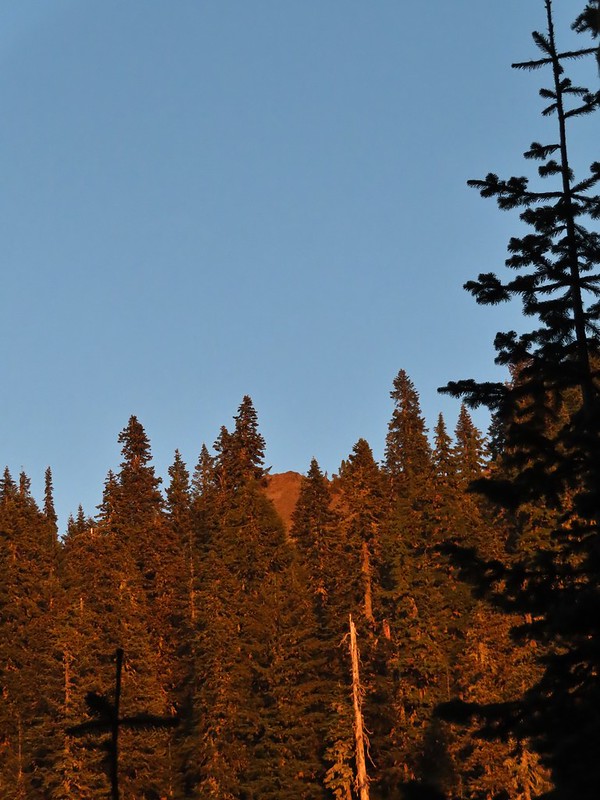 The last of the sunlight hitting Badger Peak.
The last of the sunlight hitting Badger Peak.



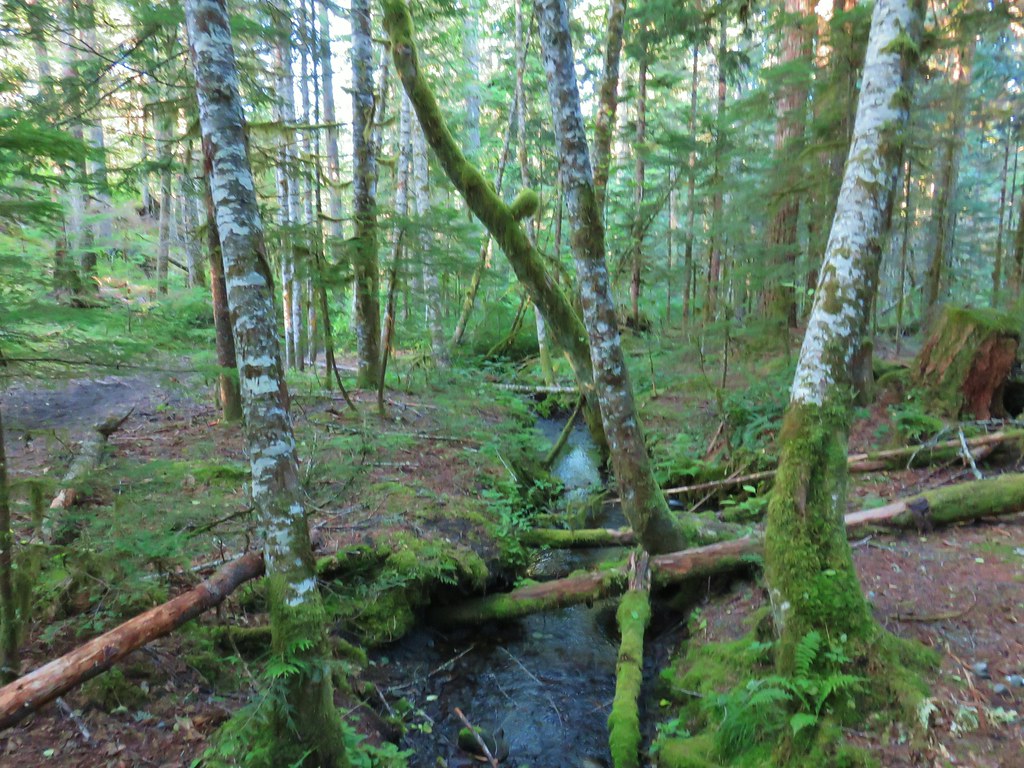

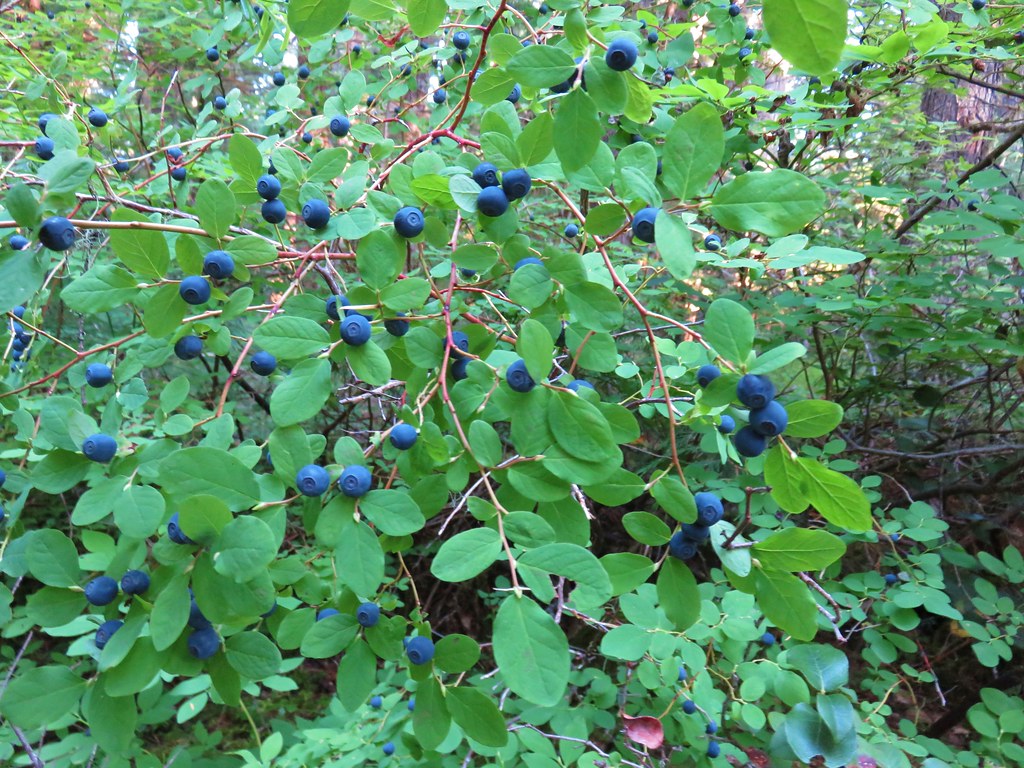
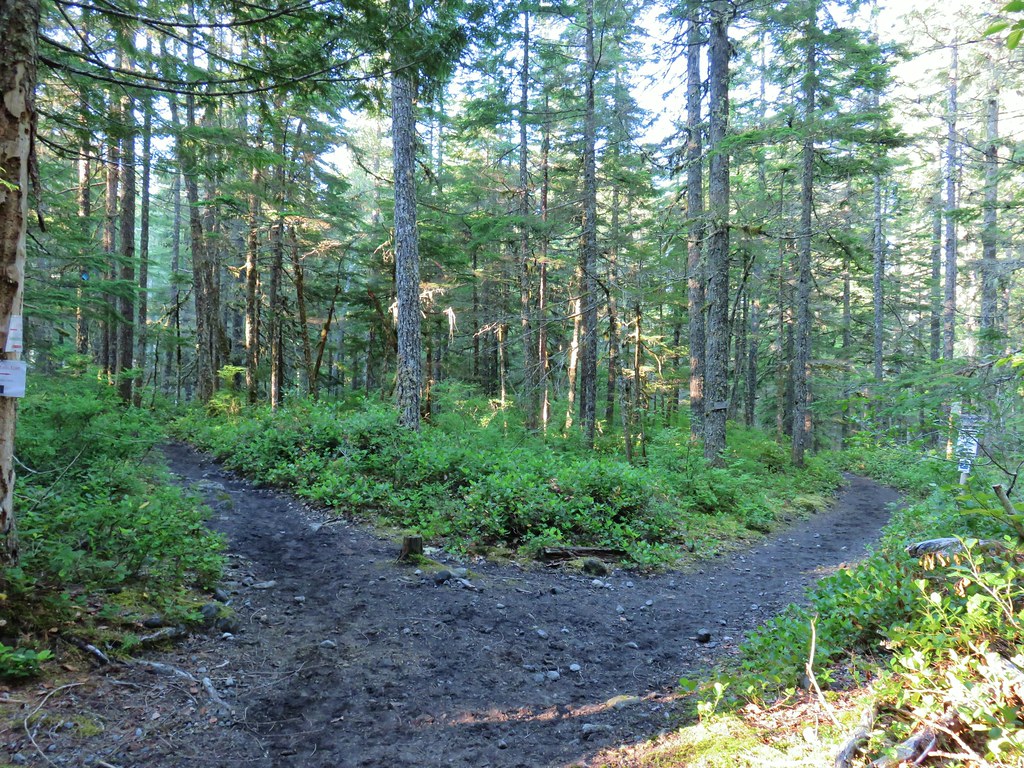
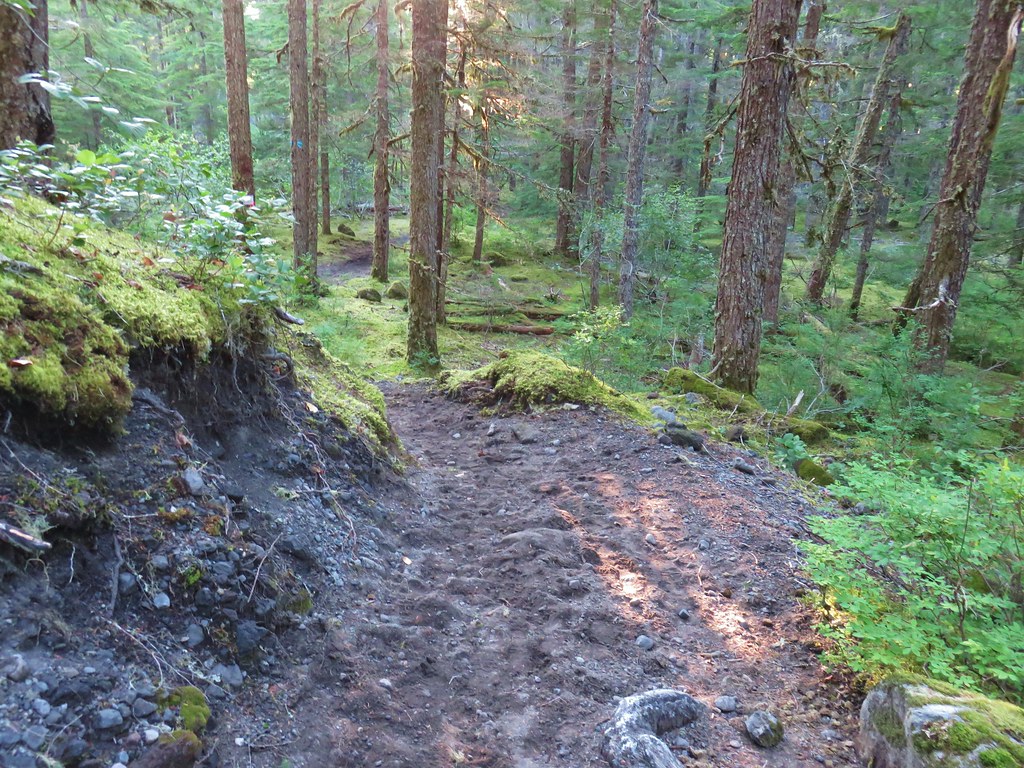 Toutle Trail
Toutle Trail Candy sticks
Candy sticks

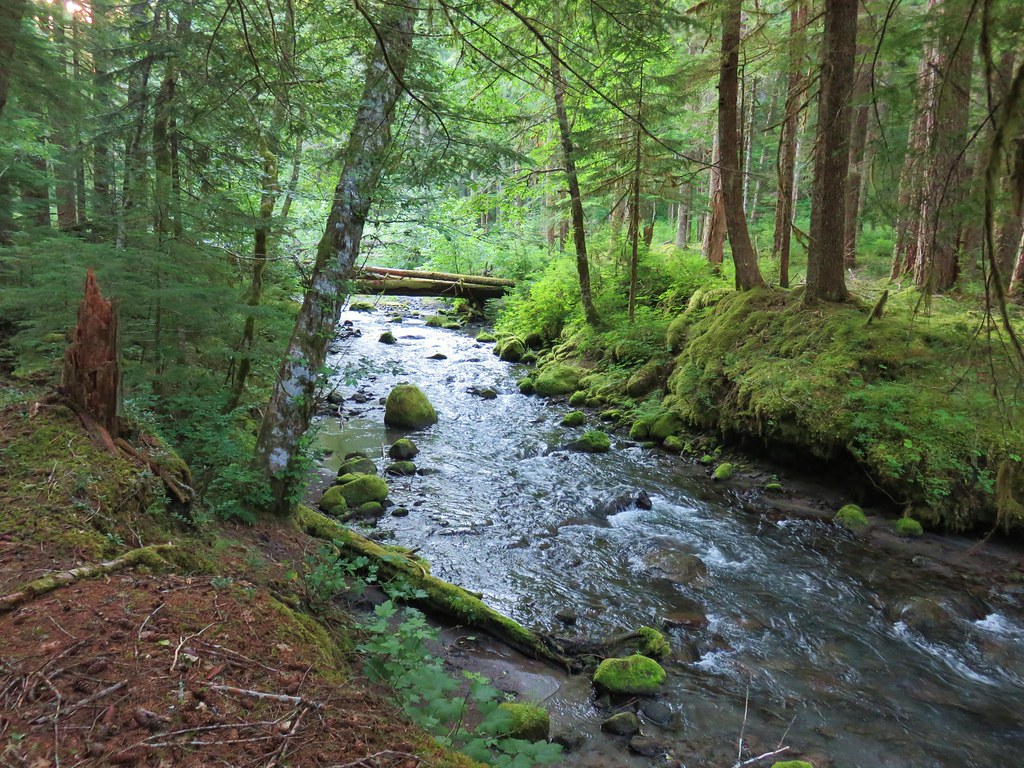


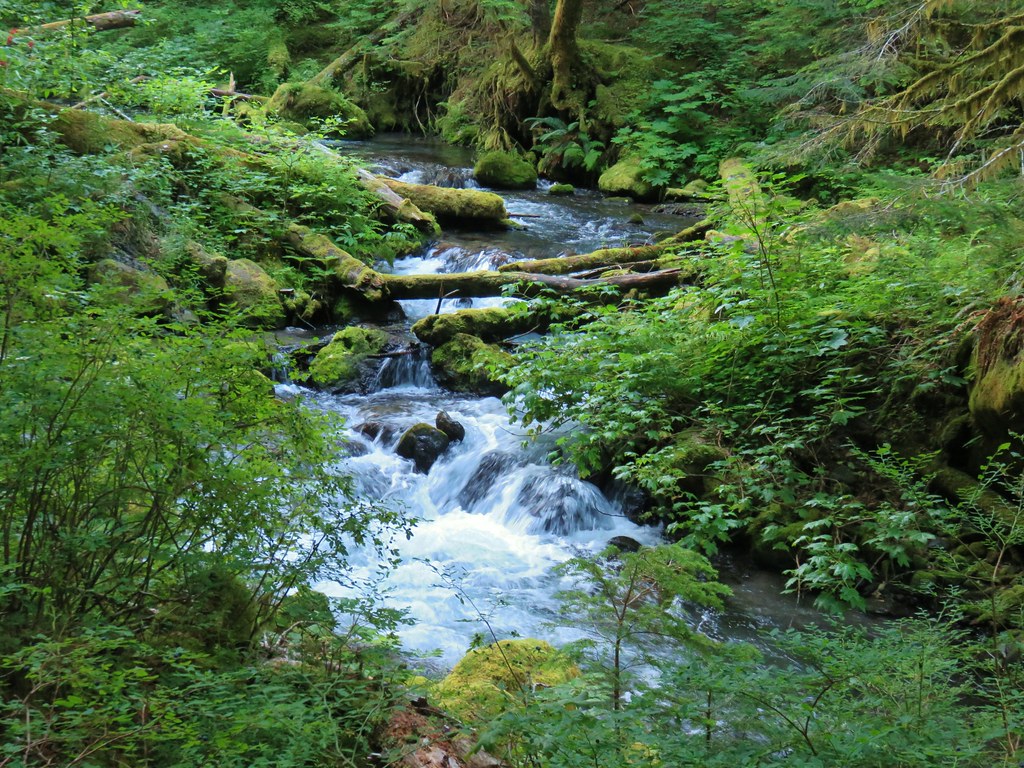



 Pinesap
Pinesap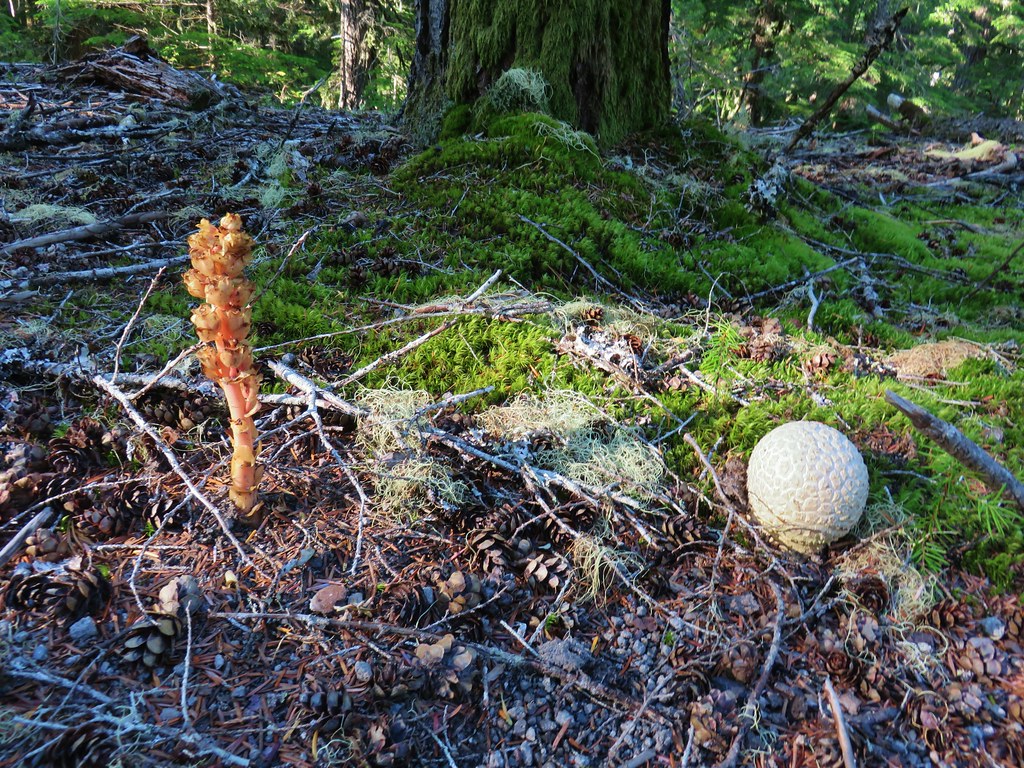 Pinesap and a puffball
Pinesap and a puffball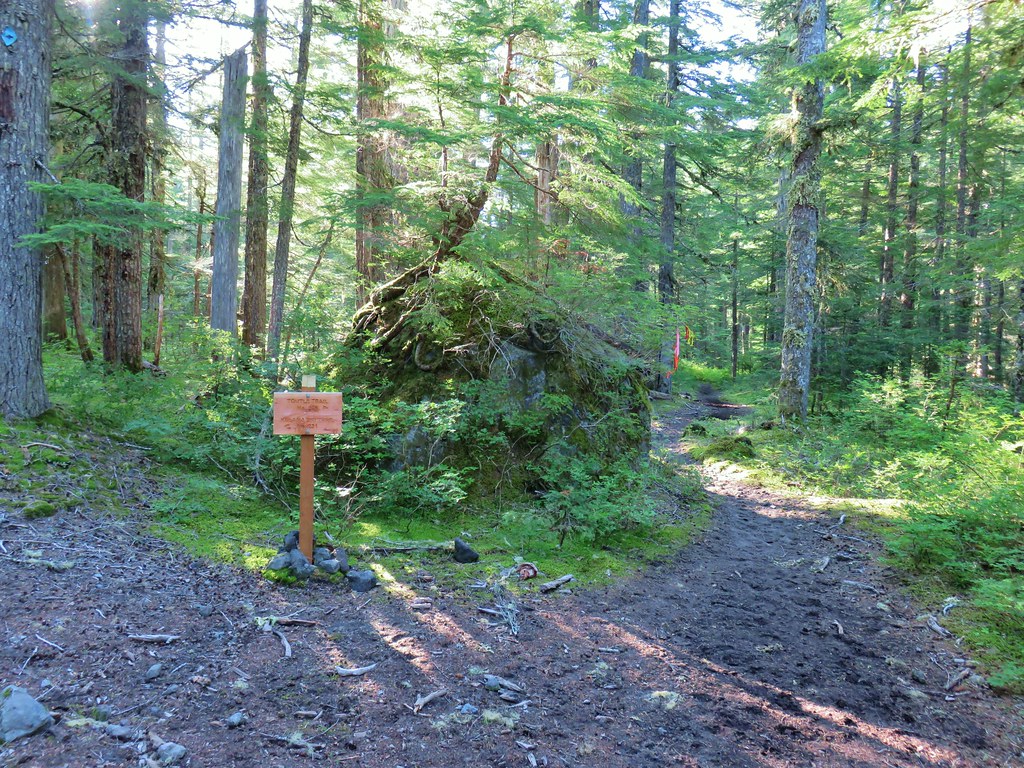
 Lousewort
Lousewort Twin Flower
Twin Flower

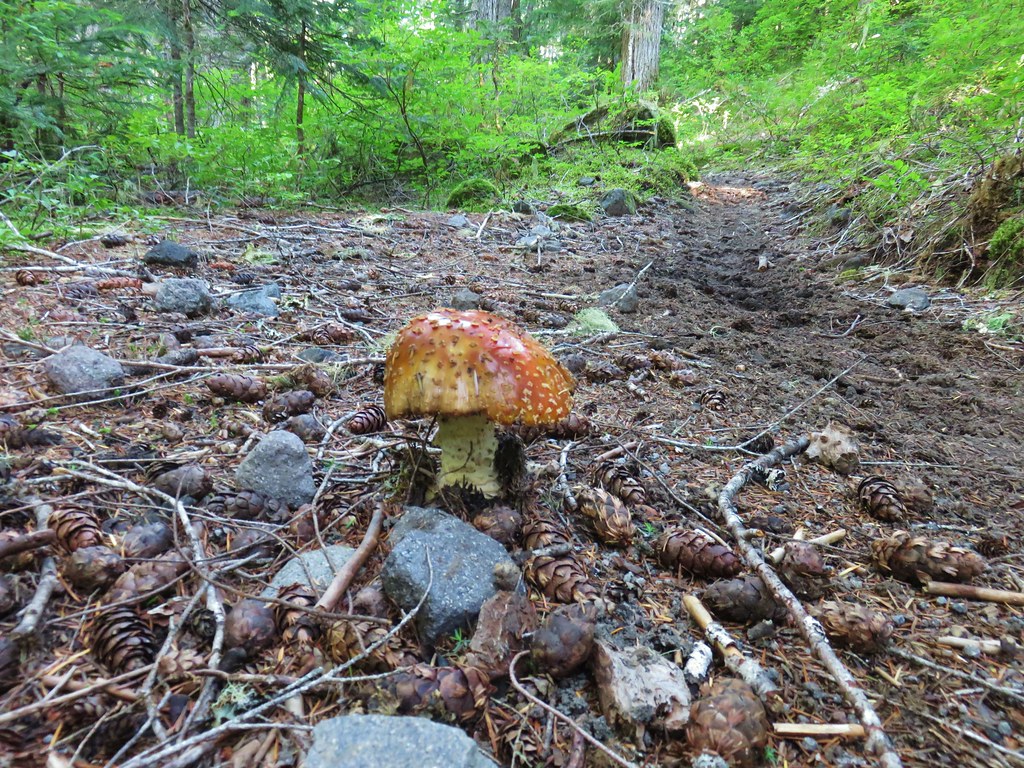

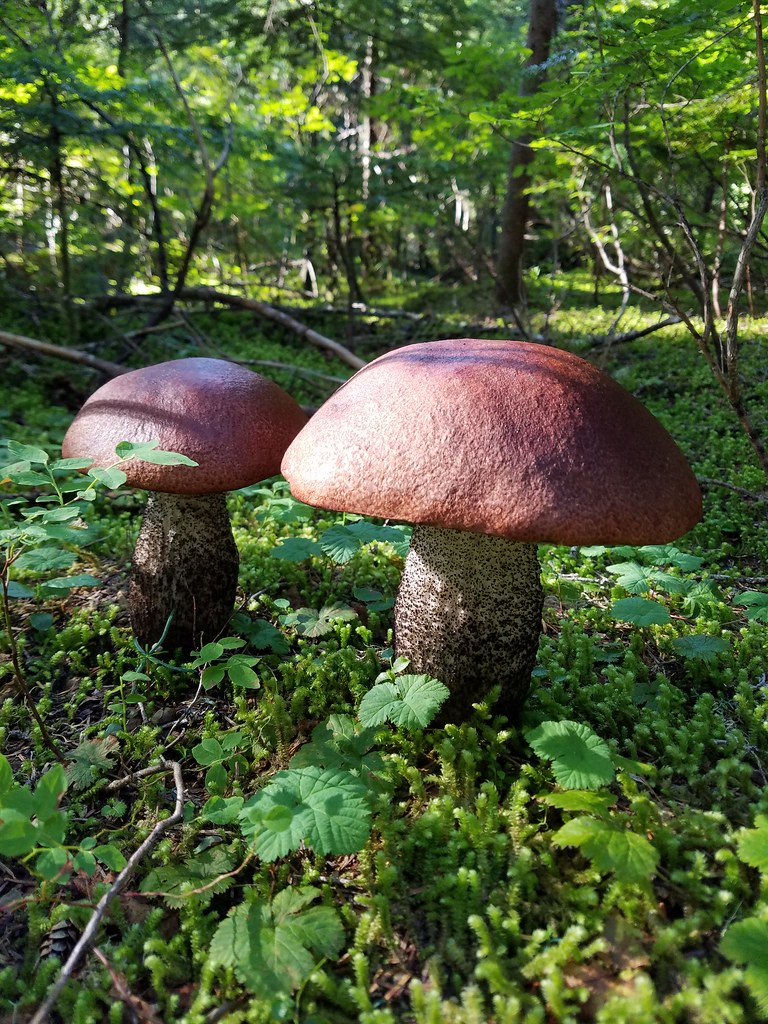
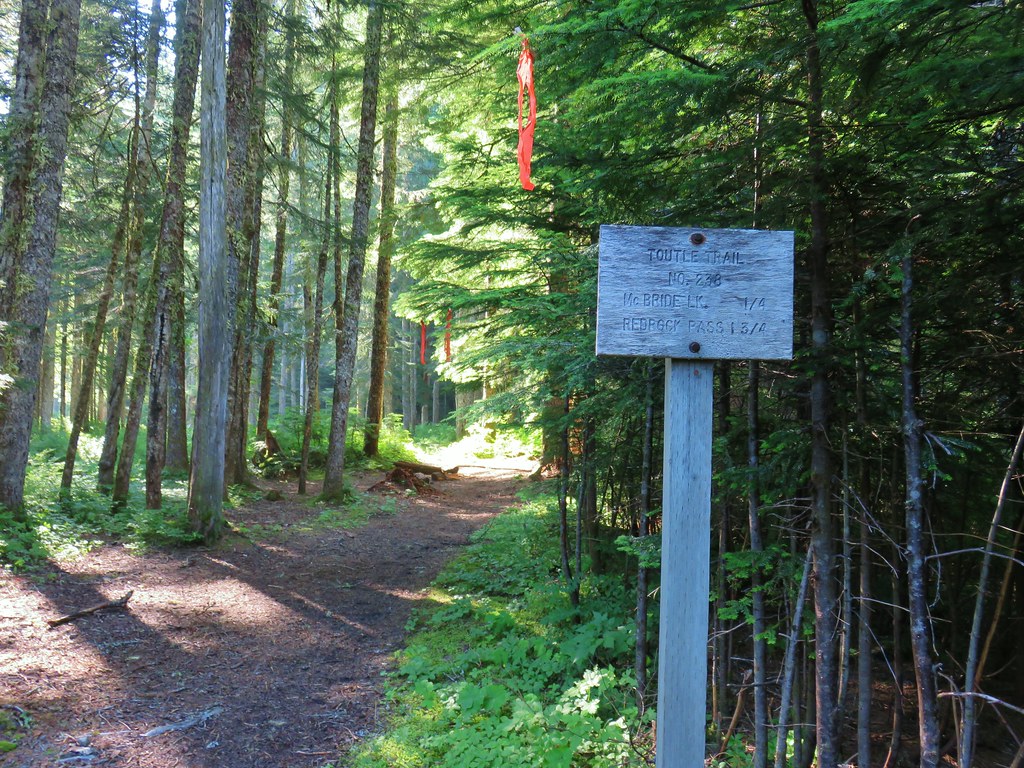
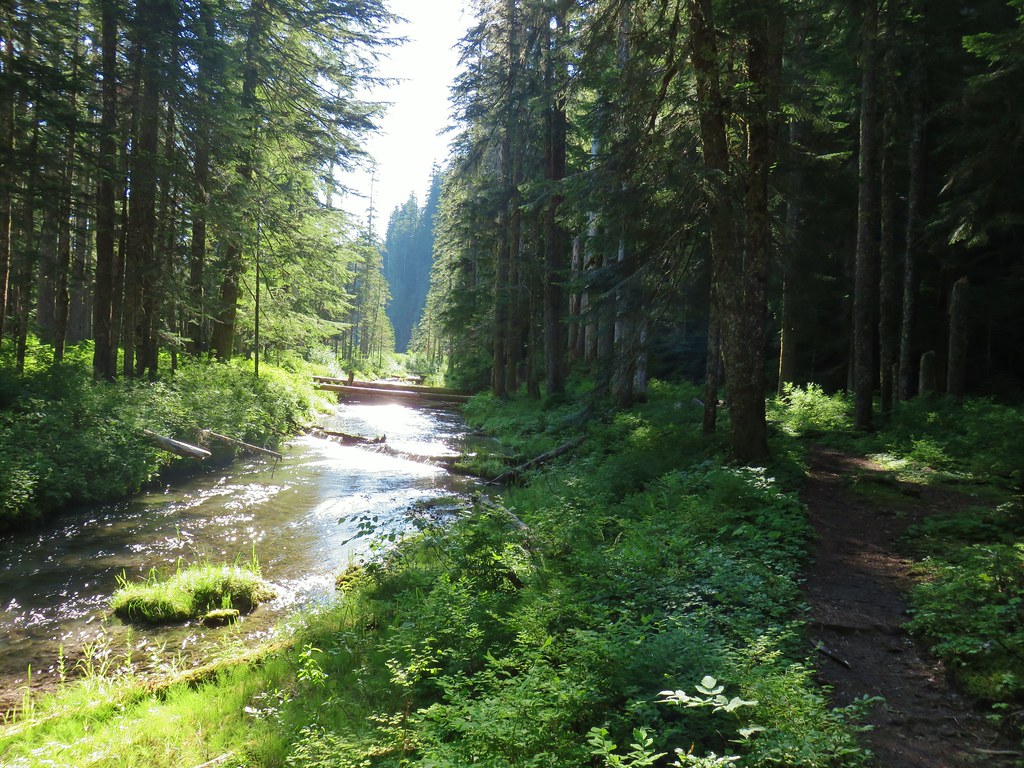


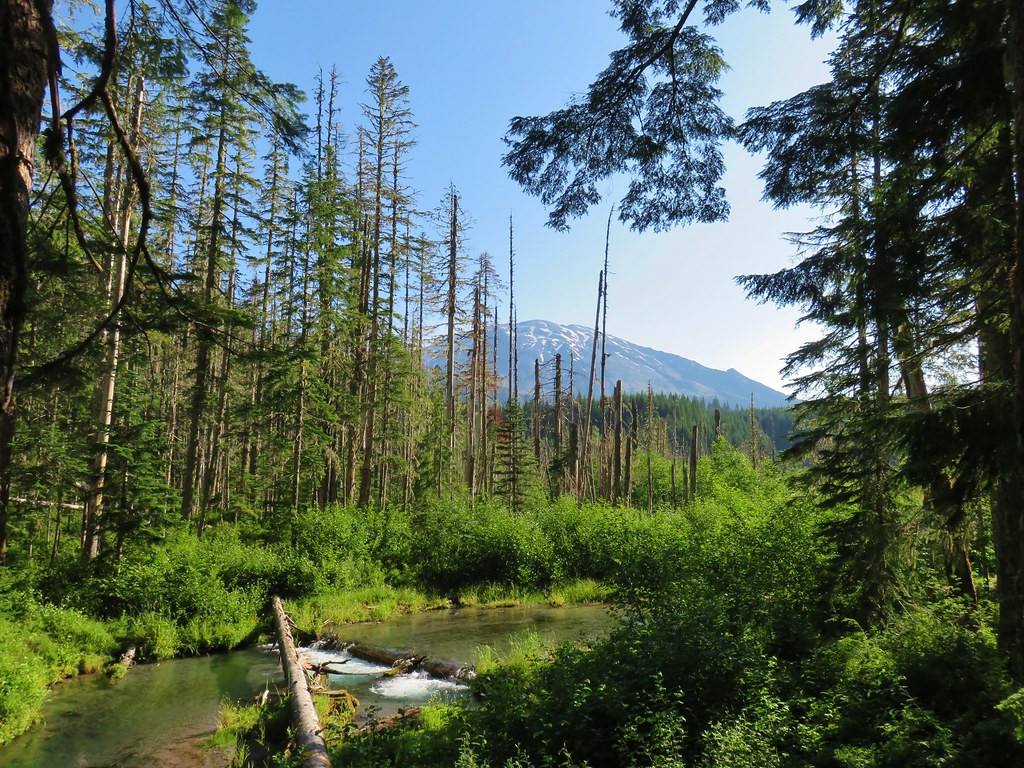

 Mt. St. Helens beyond the remnants of McBride Lake.
Mt. St. Helens beyond the remnants of McBride Lake.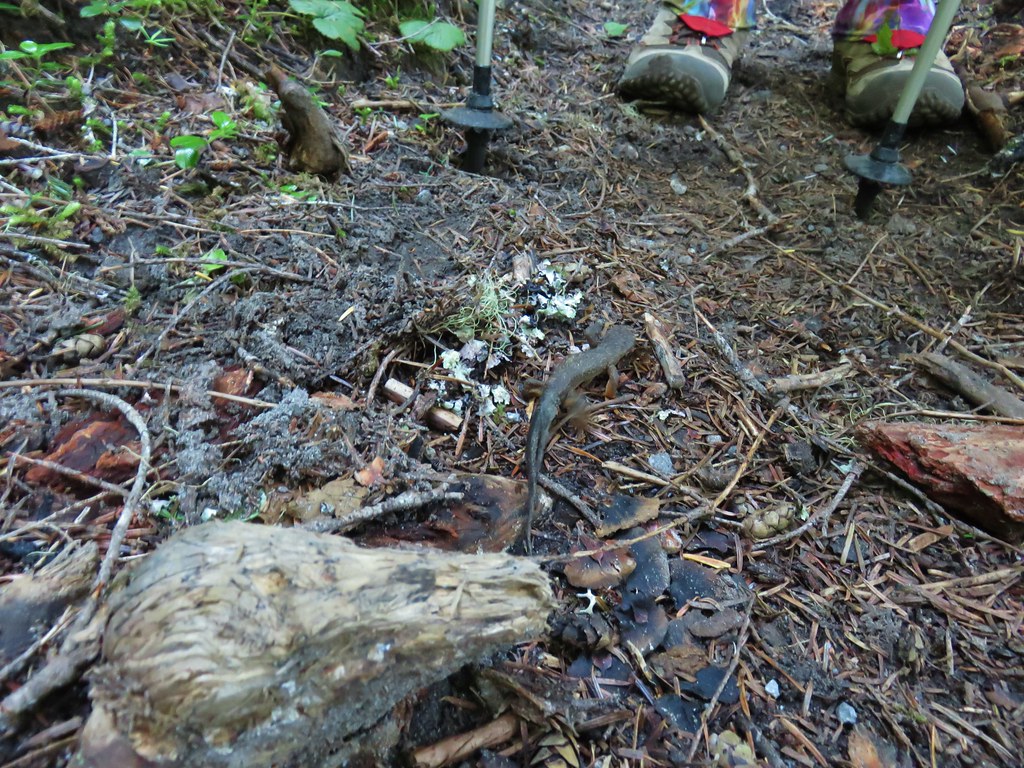

 Cars parked at Red Rock Pass
Cars parked at Red Rock Pass Cinnamon Trail on the left and Toutle Trail on the right from the unsigned junction.
Cinnamon Trail on the left and Toutle Trail on the right from the unsigned junction.

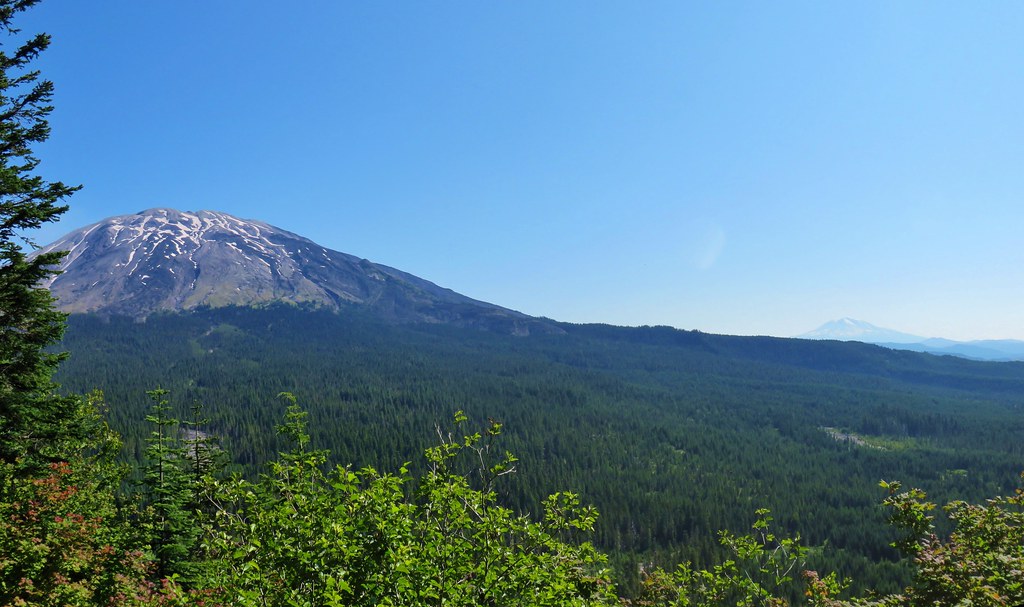

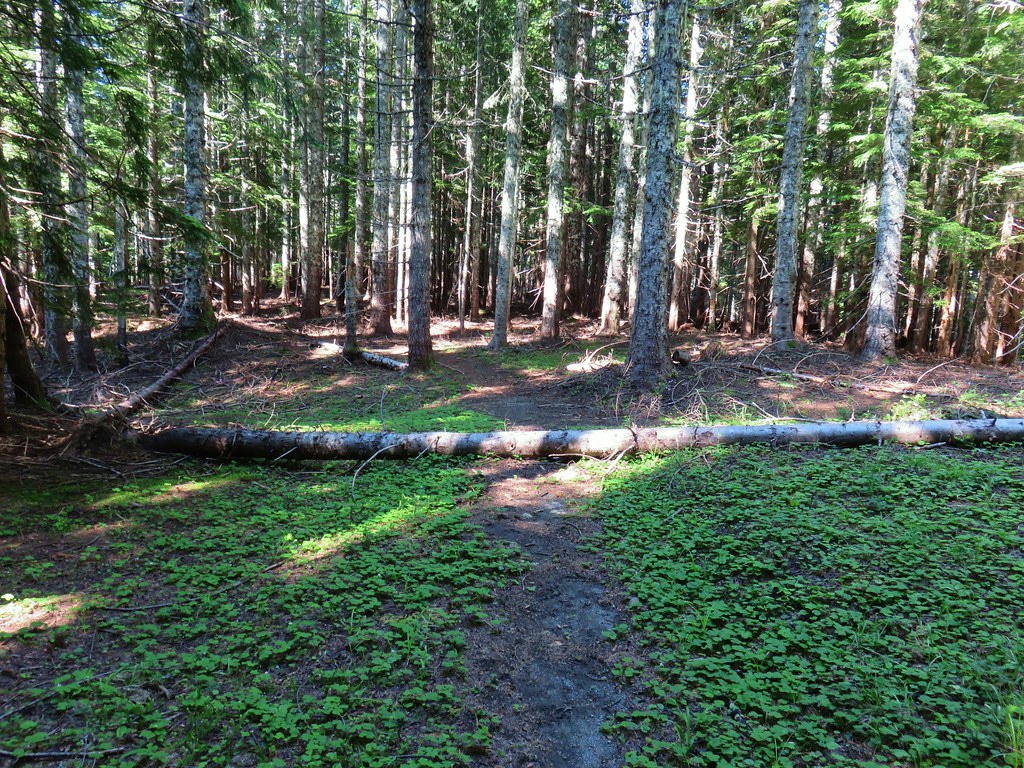

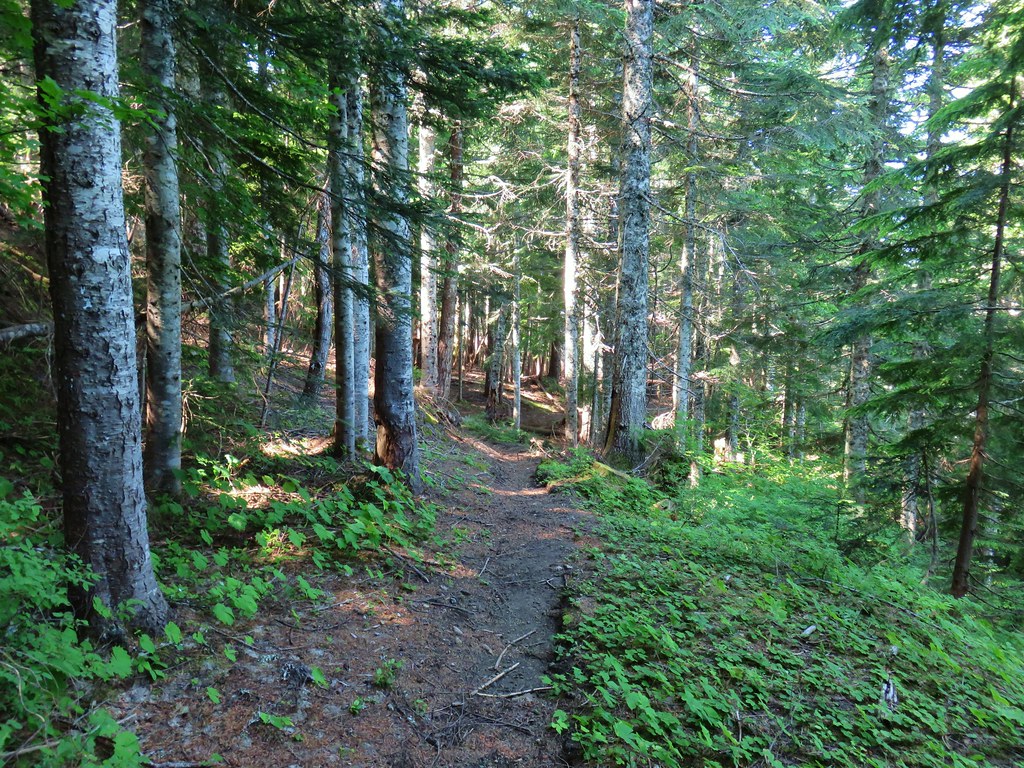

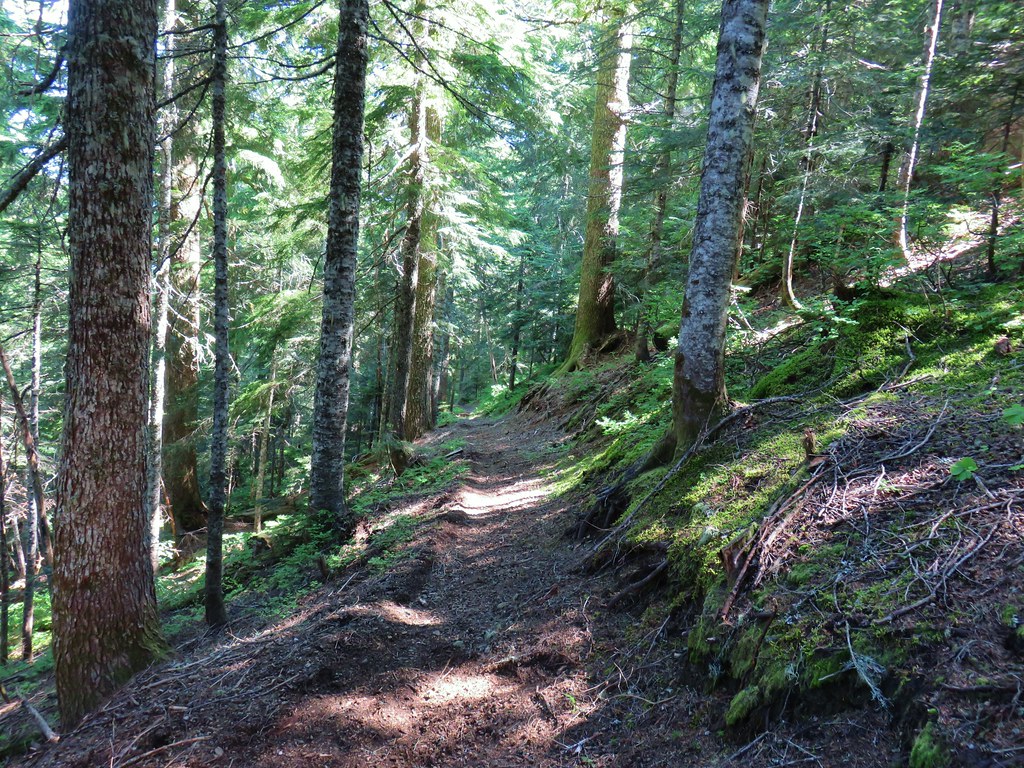
 Fungus on a stump.
Fungus on a stump.

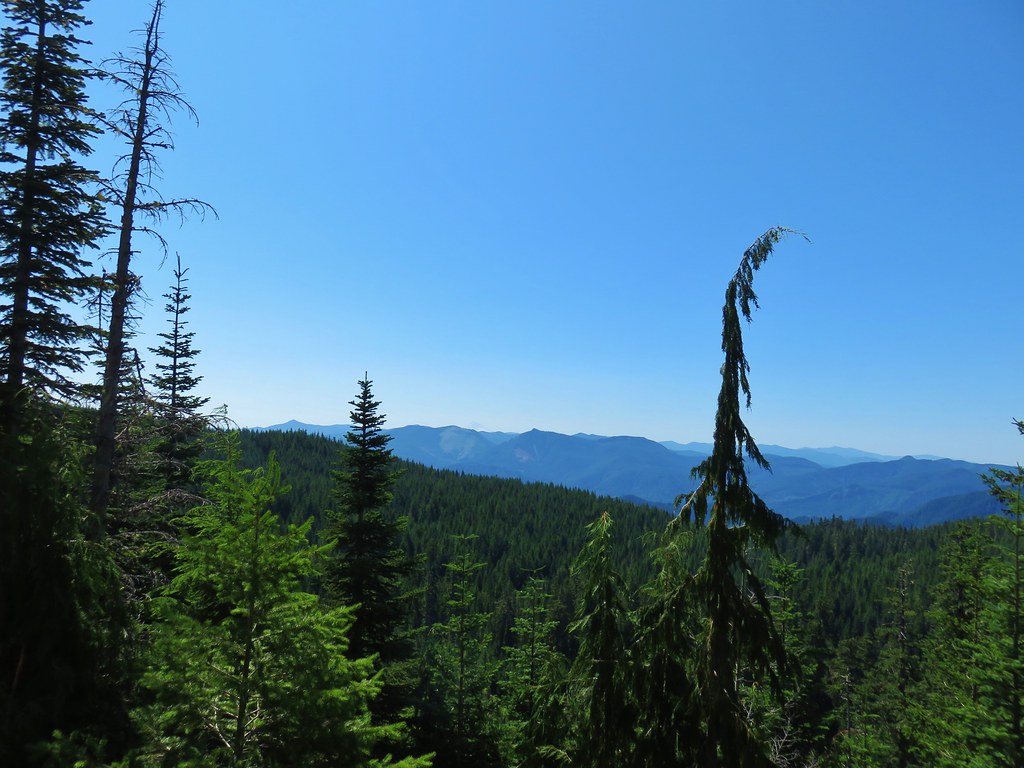
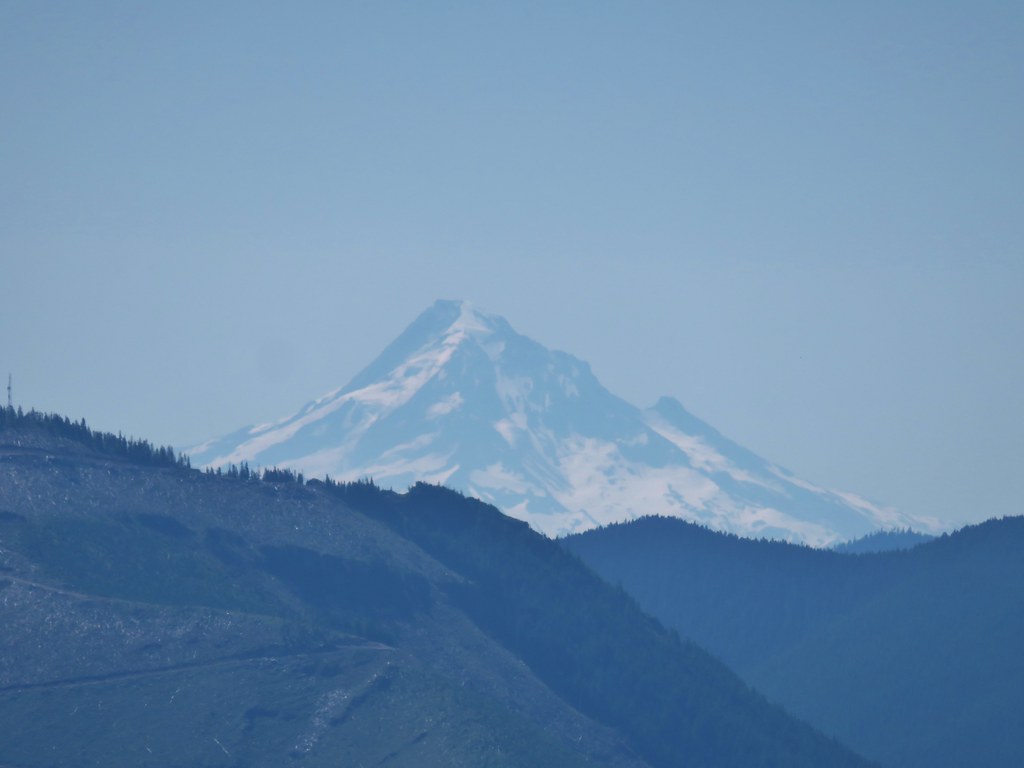
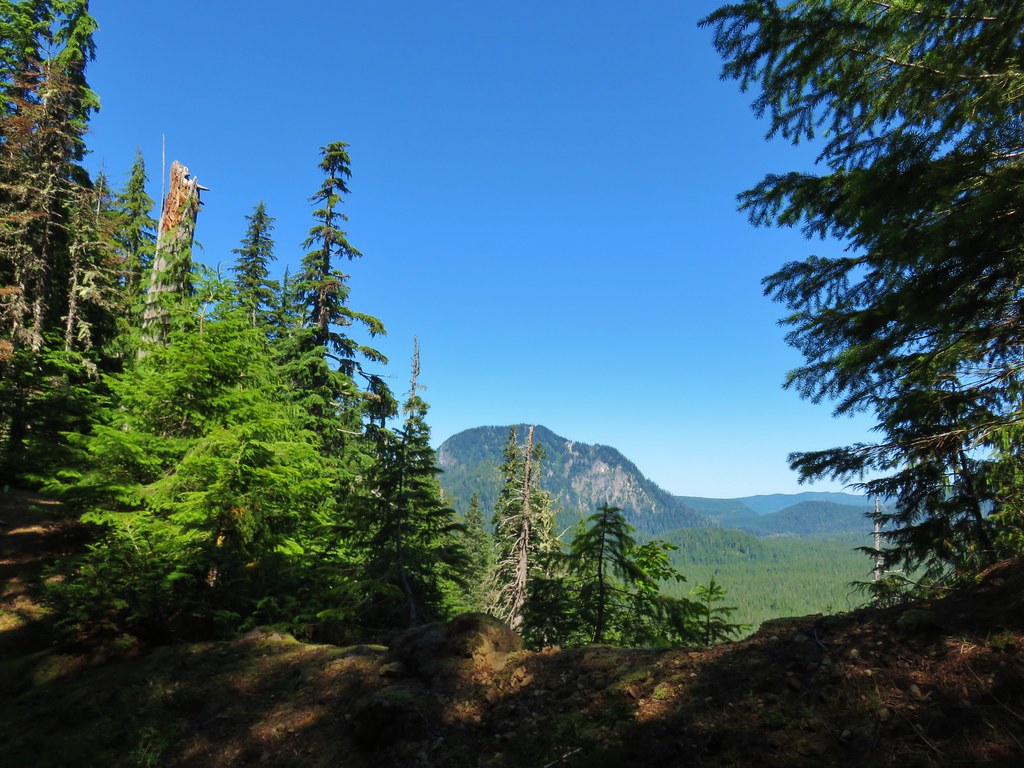
 The butte ahead (we didn’t want to have to climb that.)
The butte ahead (we didn’t want to have to climb that.) Trail wrapping around the south side of the butte.
Trail wrapping around the south side of the butte. Toad near the saddle.
Toad near the saddle. Mt. St. Helens from the saddle.
Mt. St. Helens from the saddle. Goat Mountain
Goat Mountain Mt. St. Helens and Mt. Adams
Mt. St. Helens and Mt. Adams Another frog.
Another frog. Crossing #1
Crossing #1 Crossing #2
Crossing #2 Crossing #3
Crossing #3
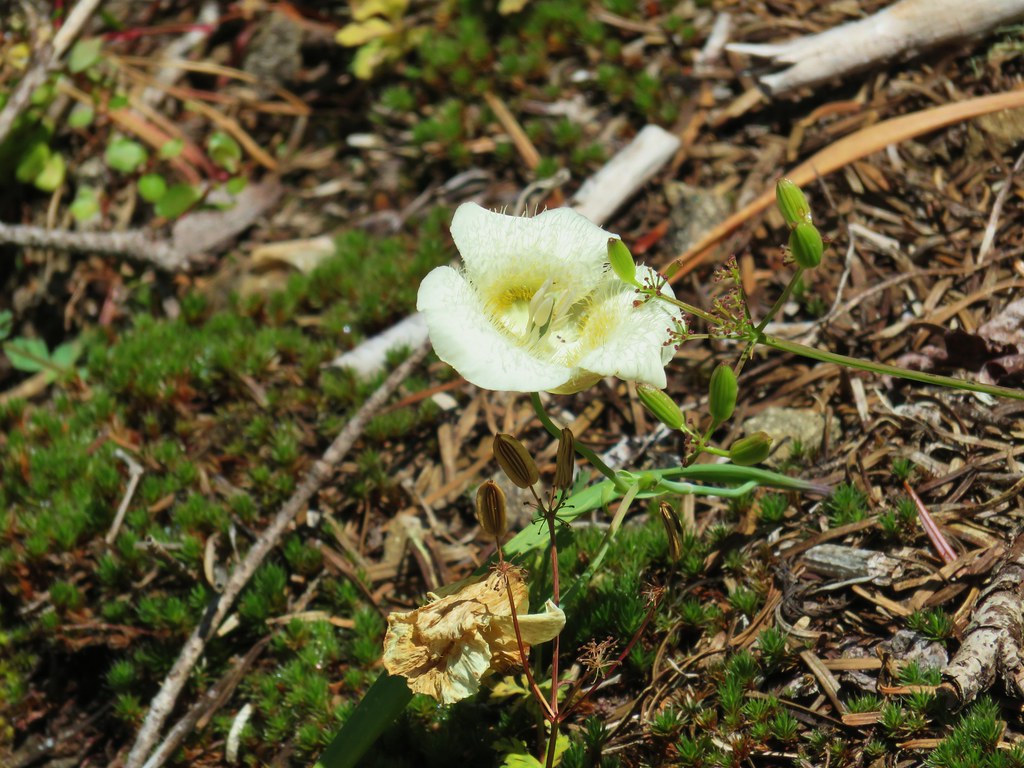
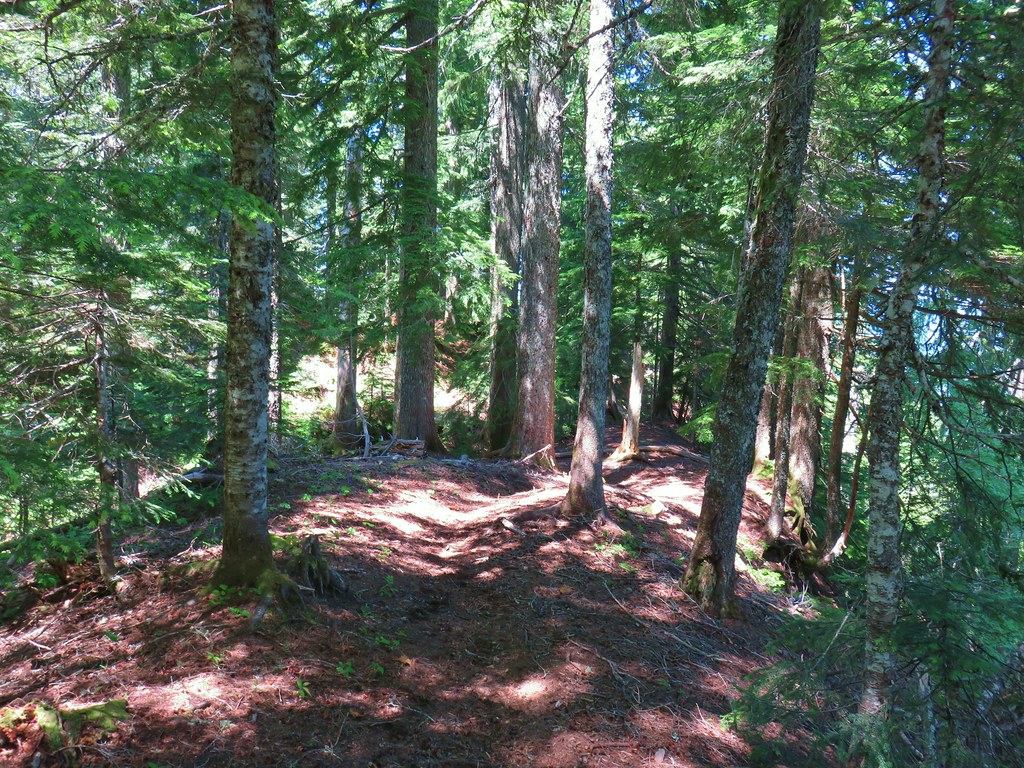


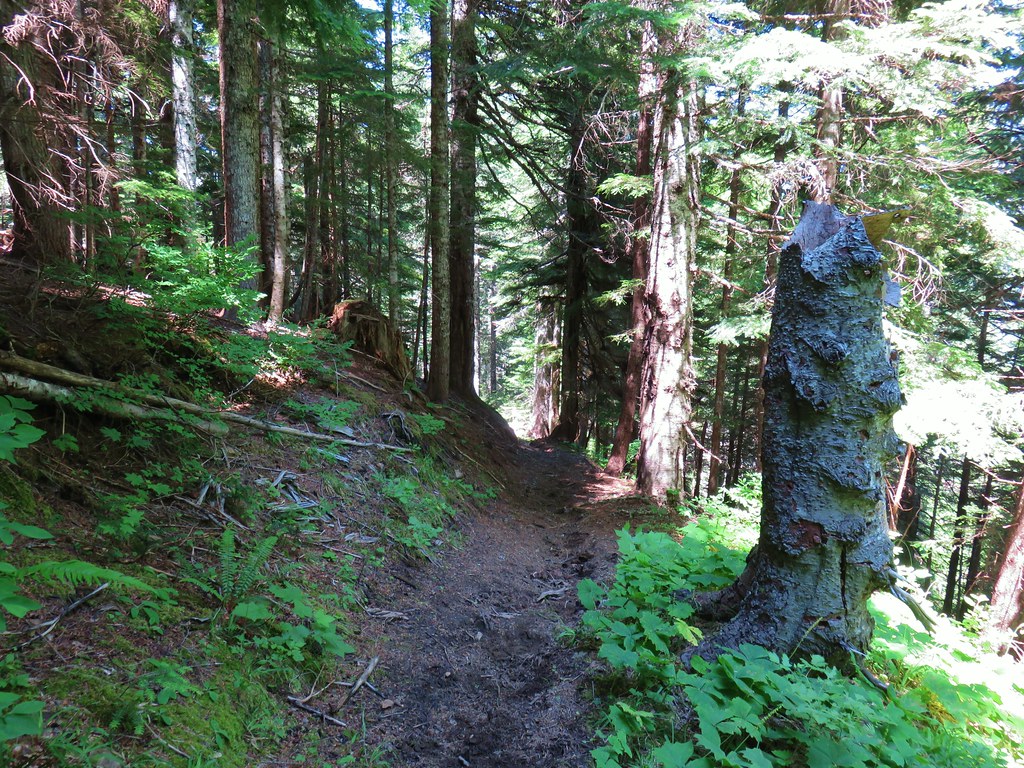
 old road crossing.
old road crossing.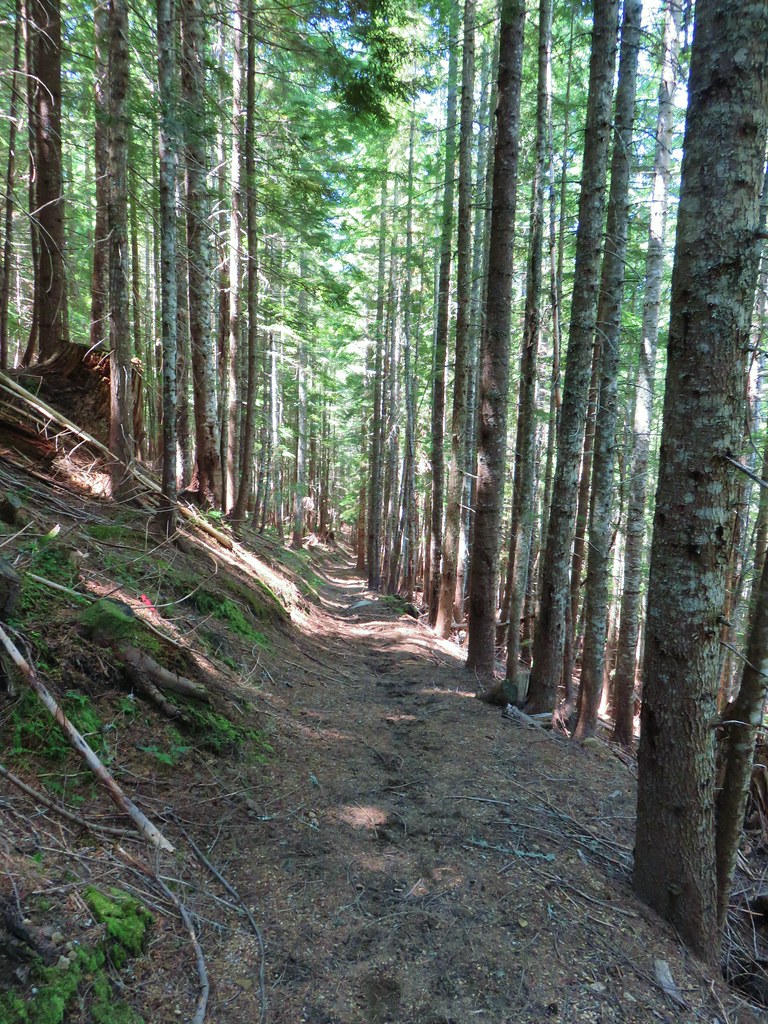
 Dropping to FR 8022(8122).
Dropping to FR 8022(8122).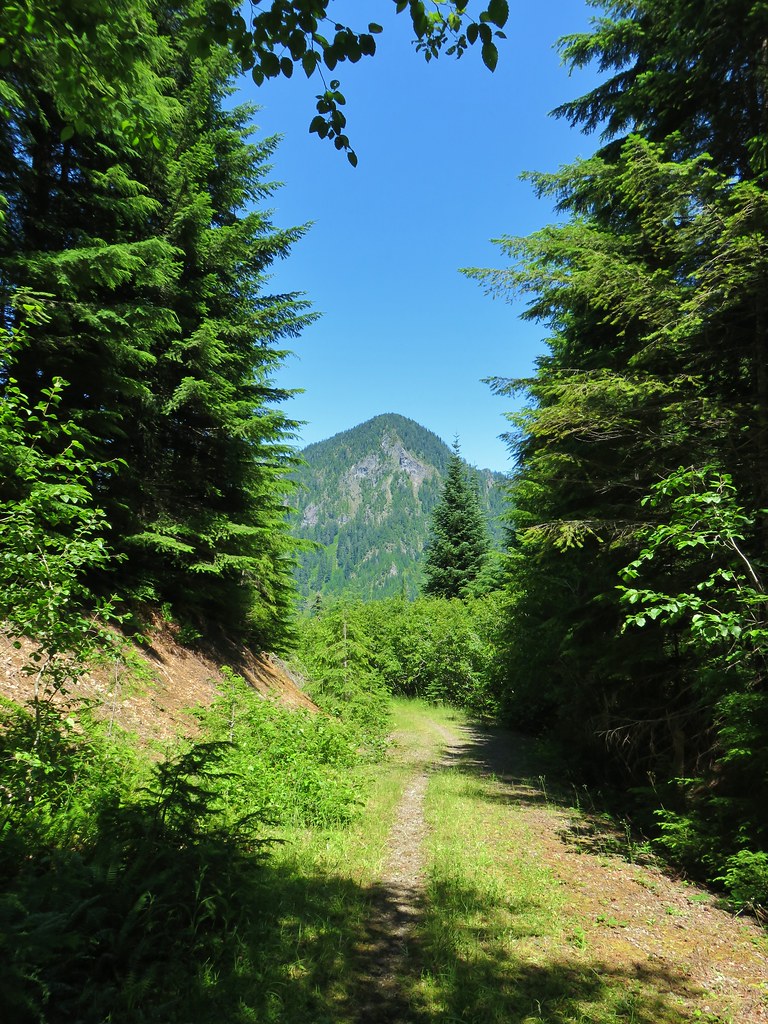 Goat Mountain from the roadbed.
Goat Mountain from the roadbed. Goat Mountain and Mt. St. Helens
Goat Mountain and Mt. St. Helens Ripening berries
Ripening berries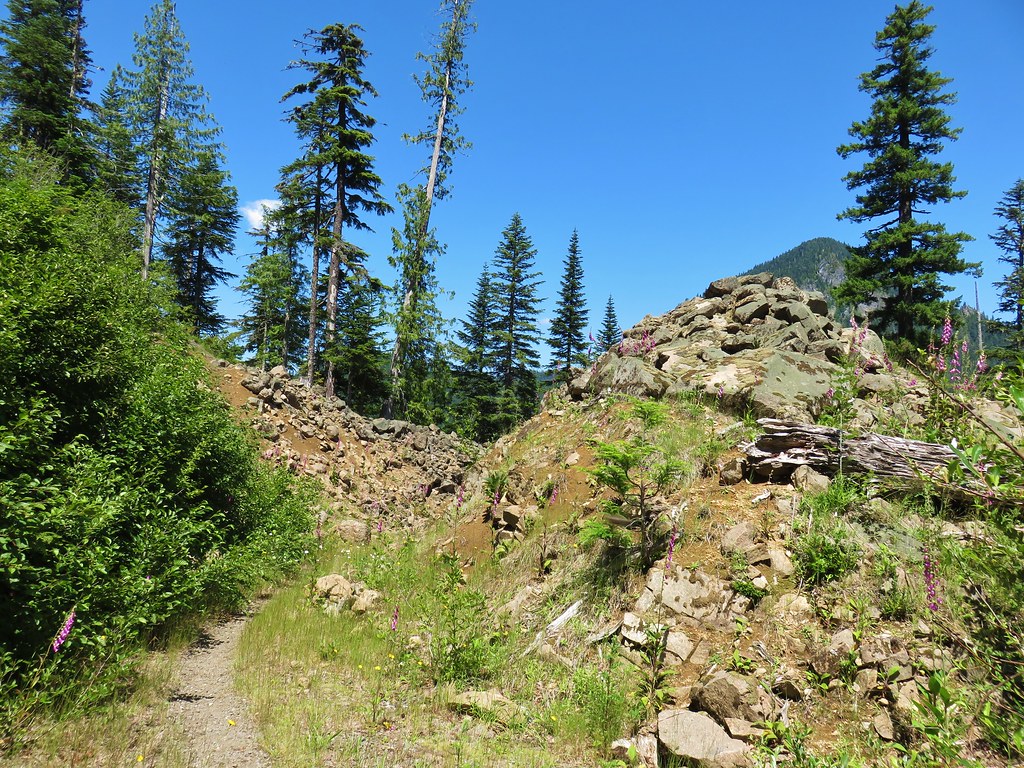 Rock slide along the roadbed.
Rock slide along the roadbed.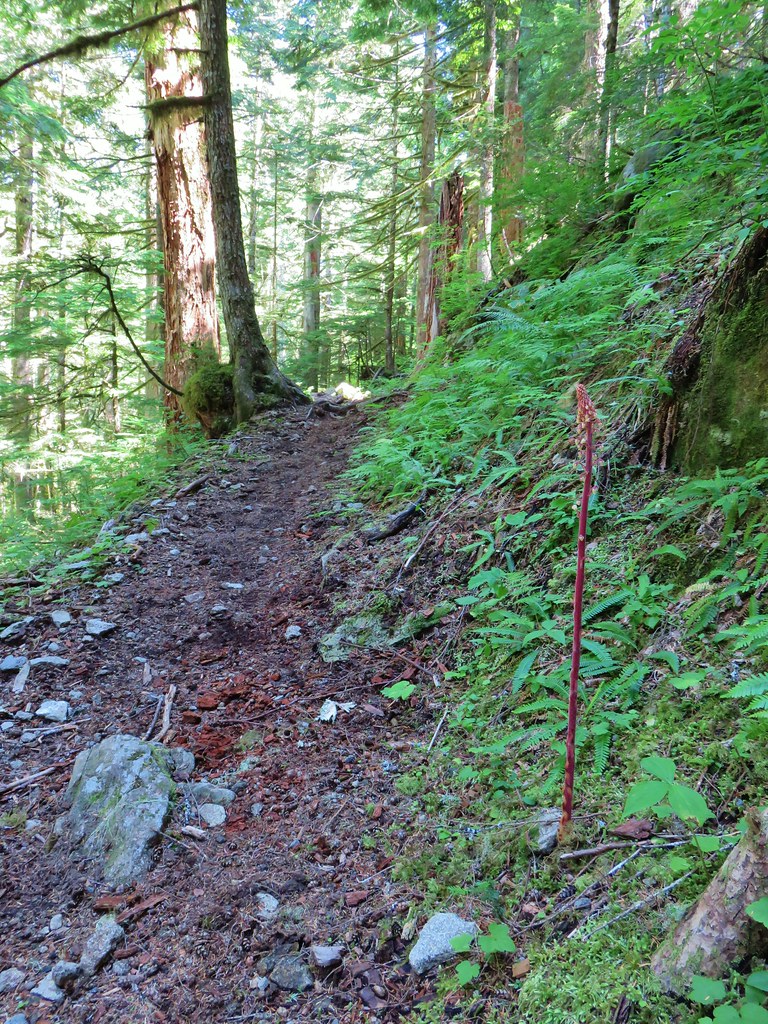
 Pinedrop
Pinedrop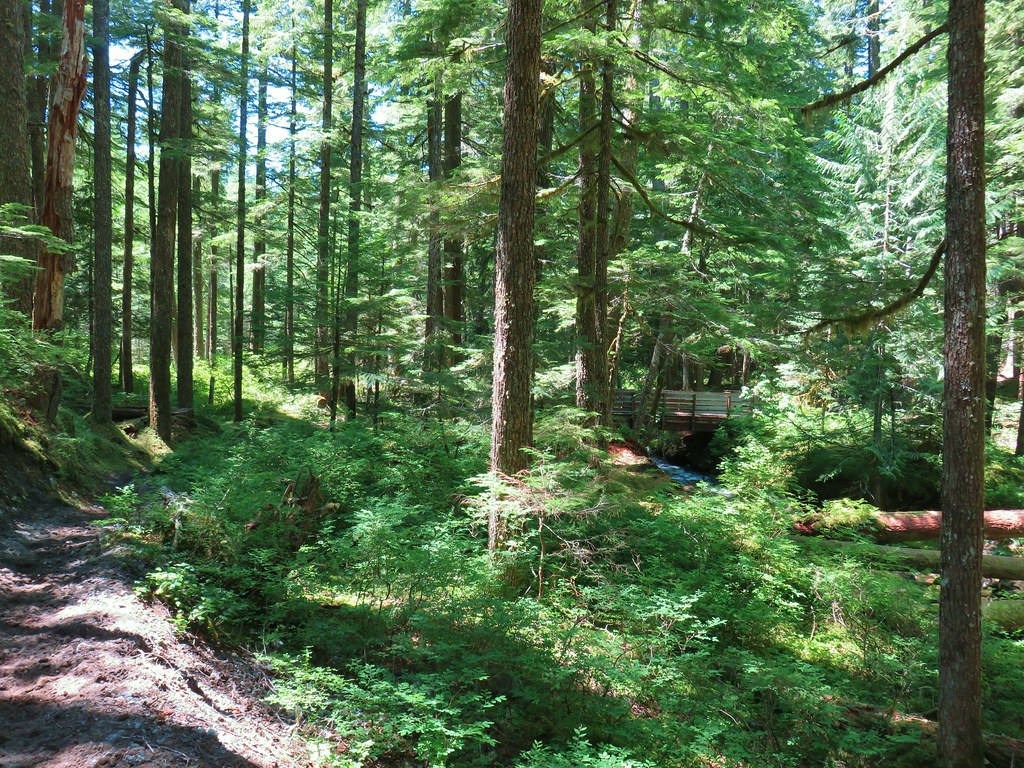
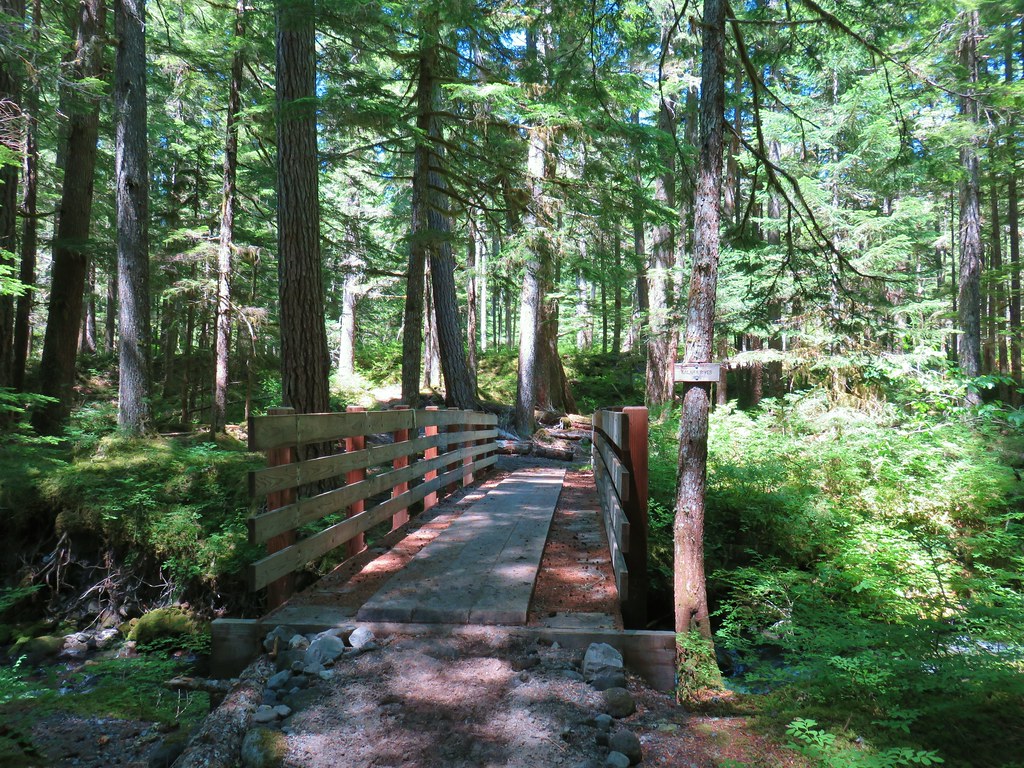




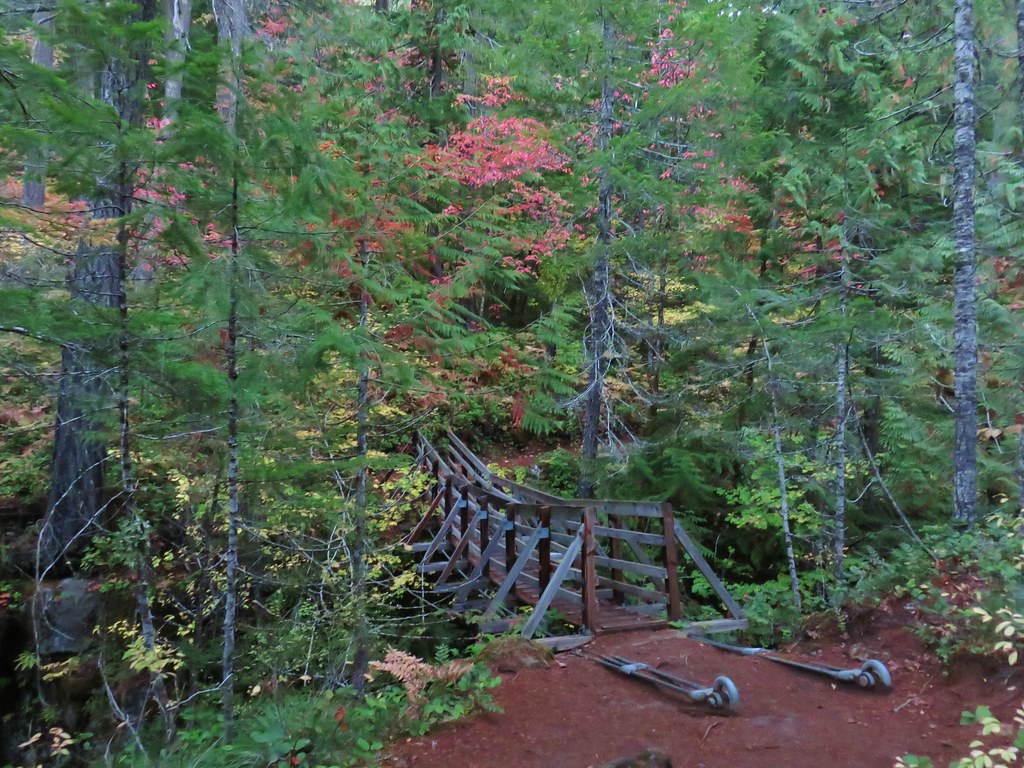
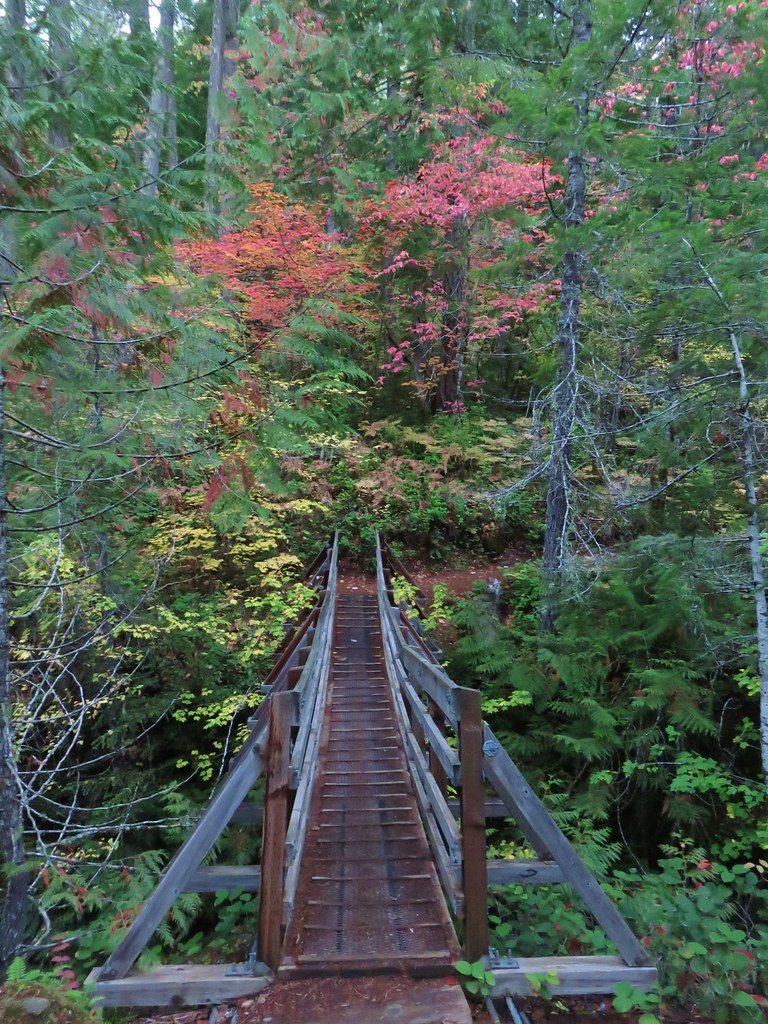
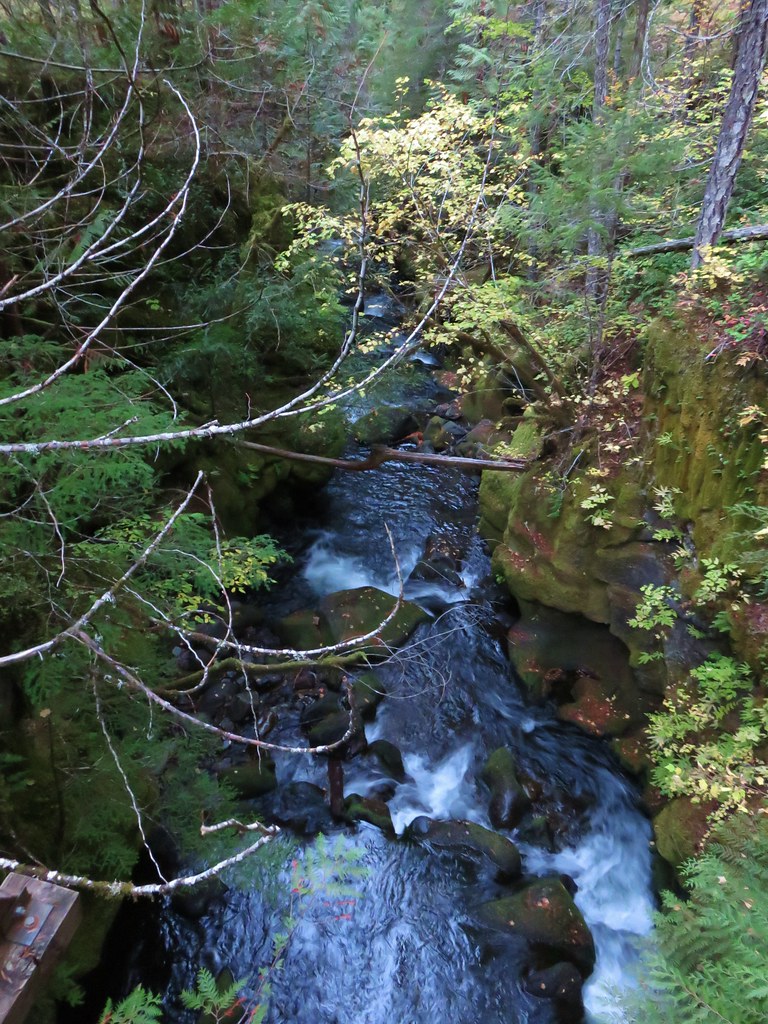
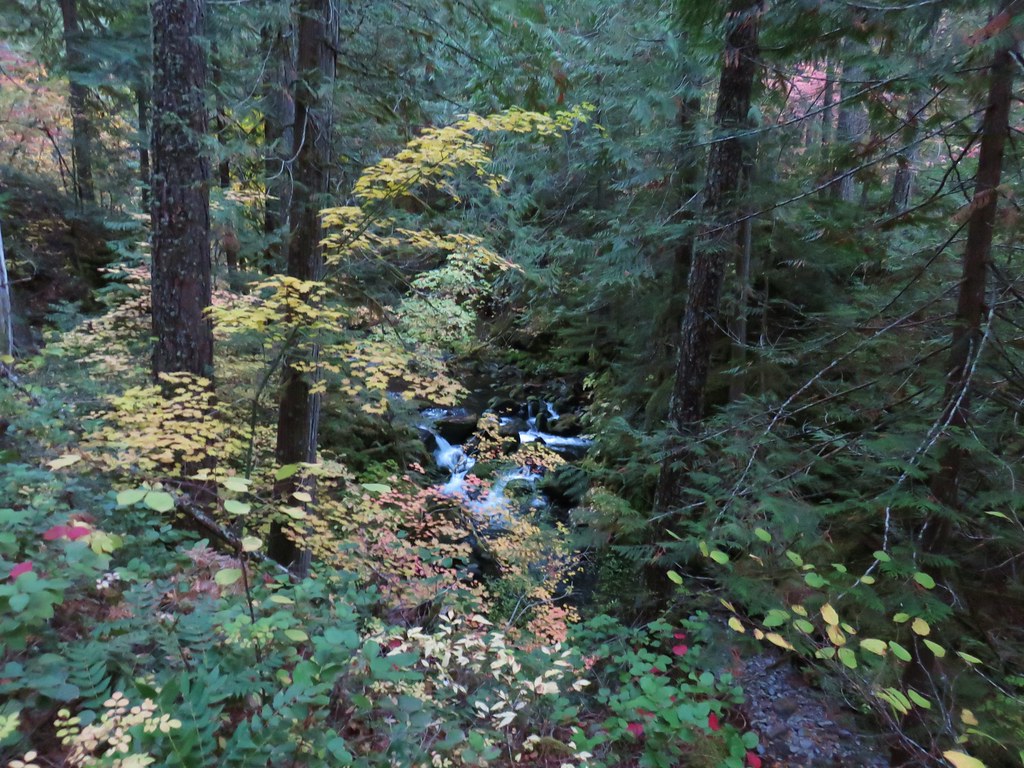

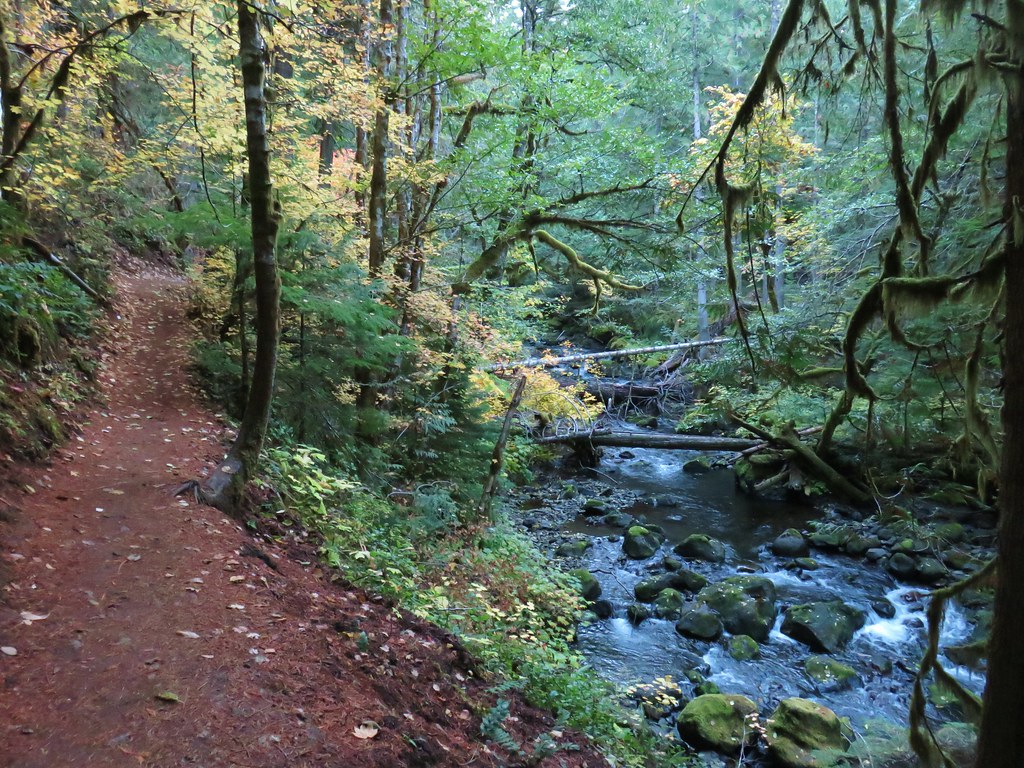
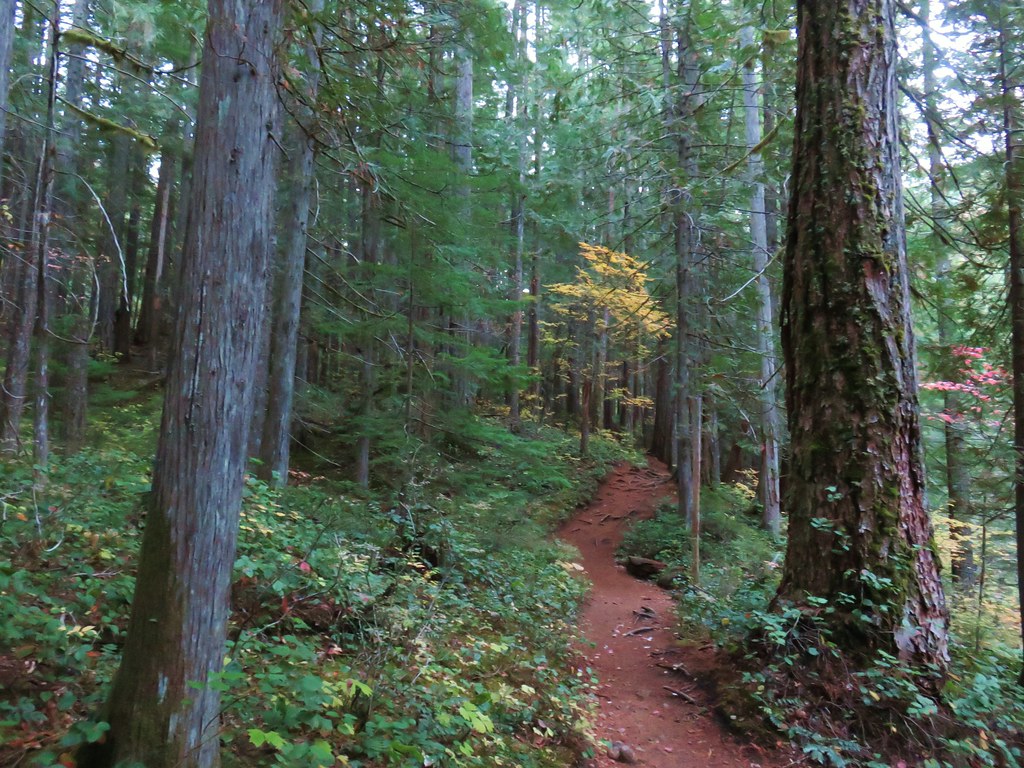
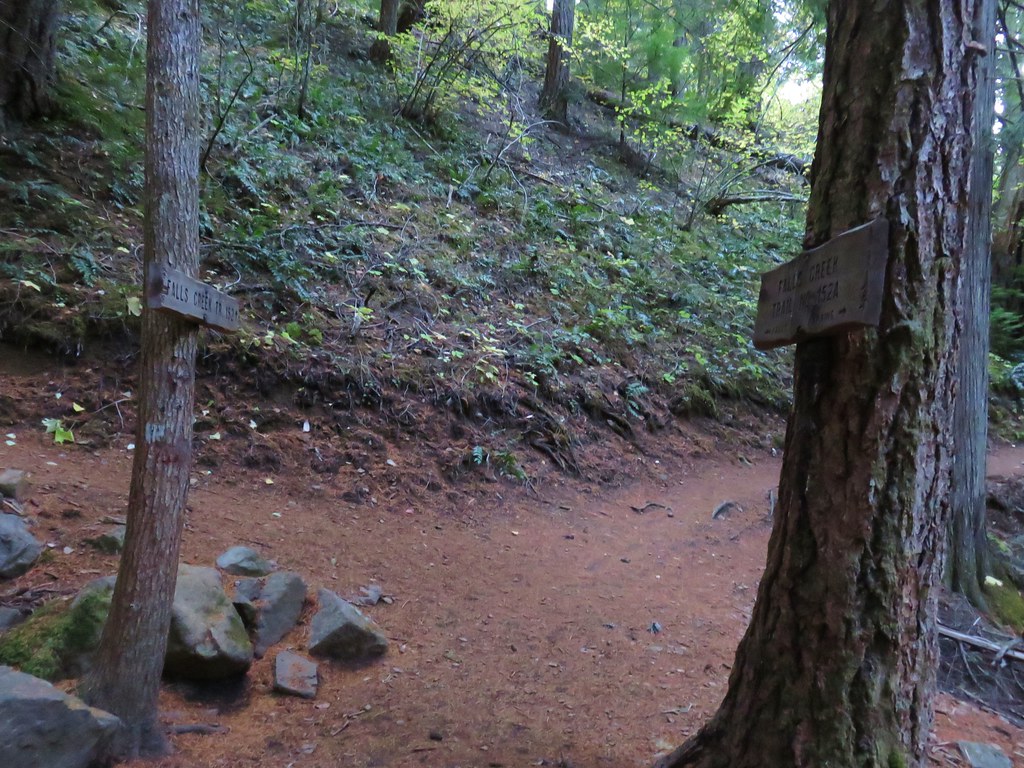
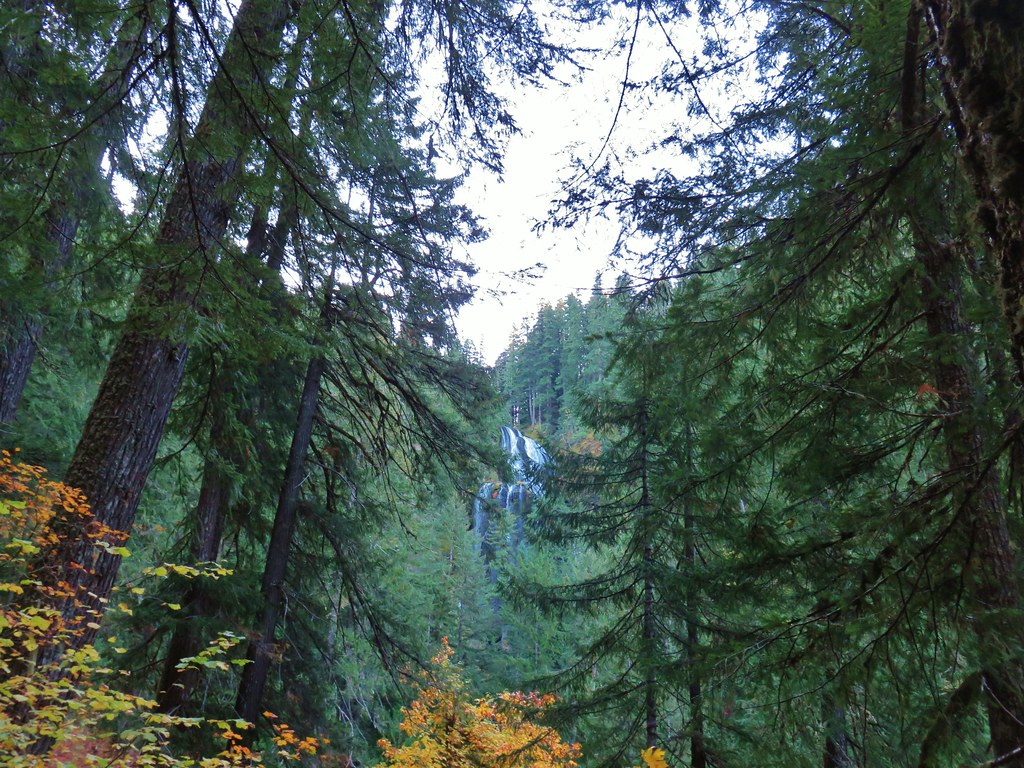
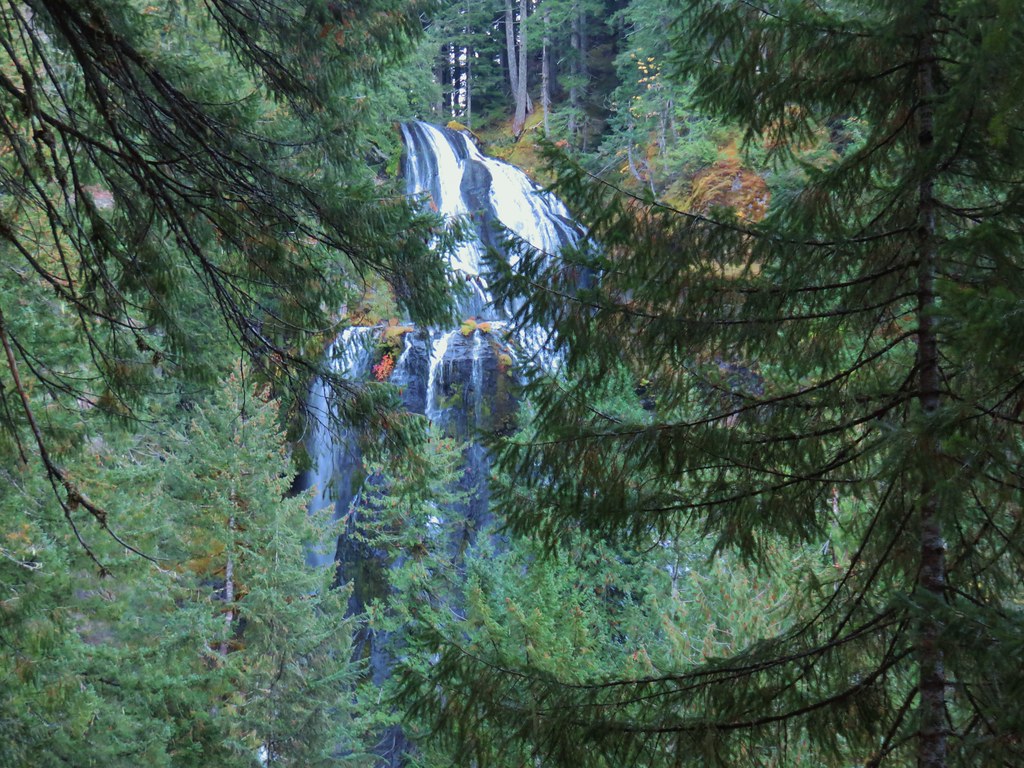
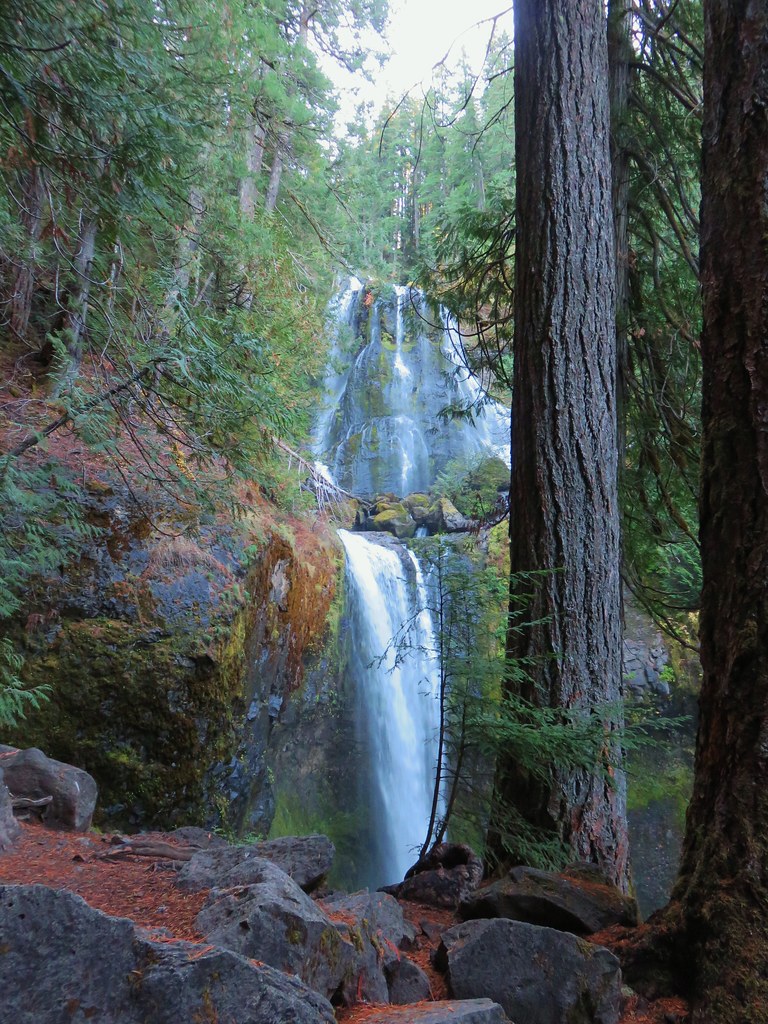
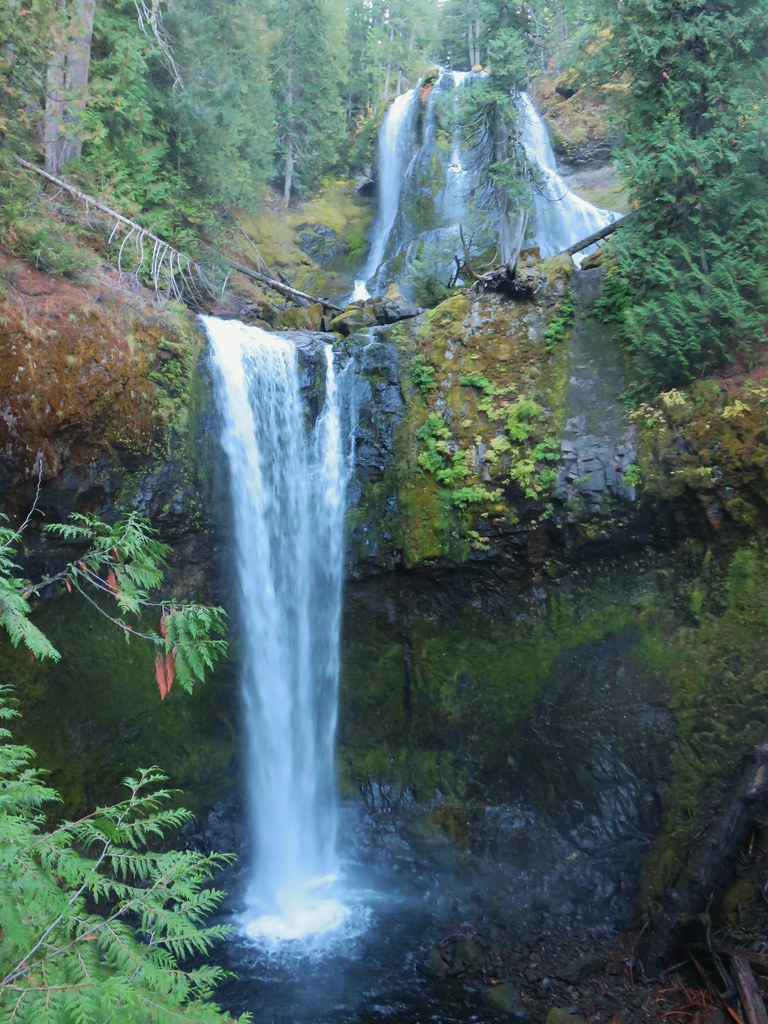

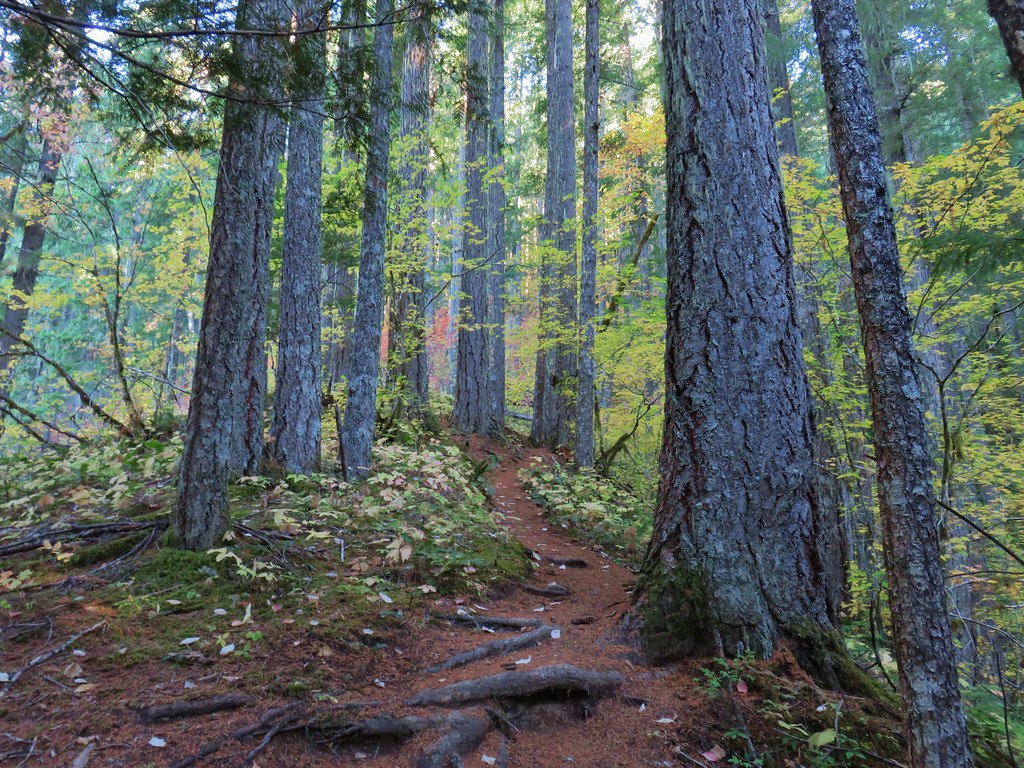
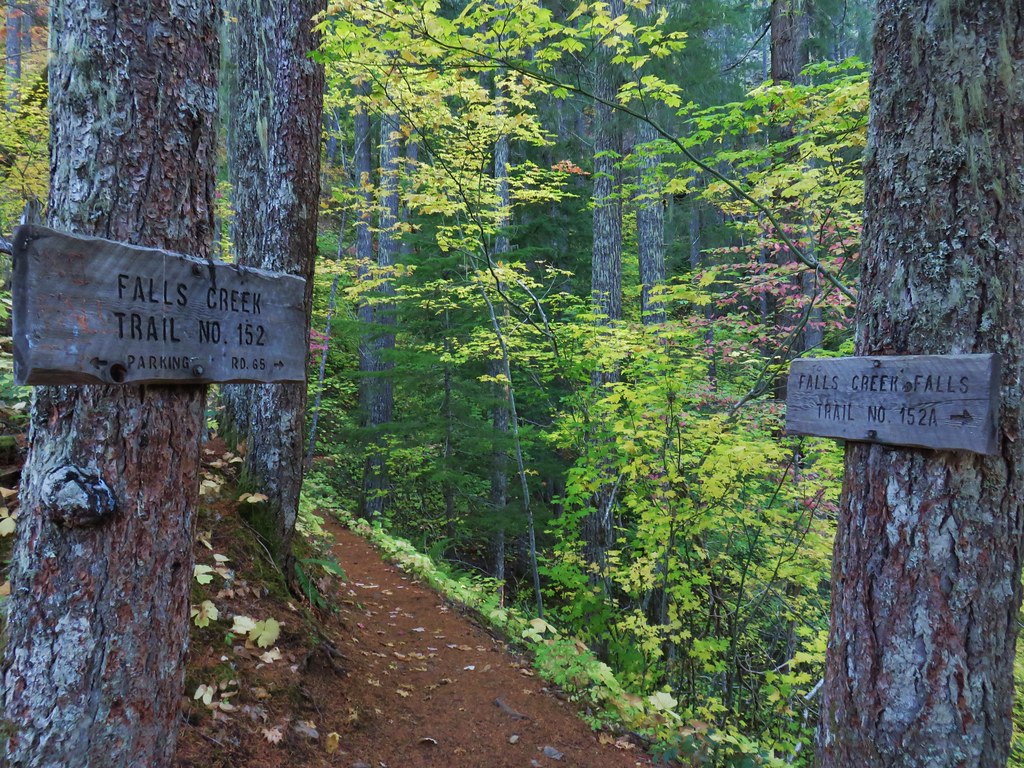


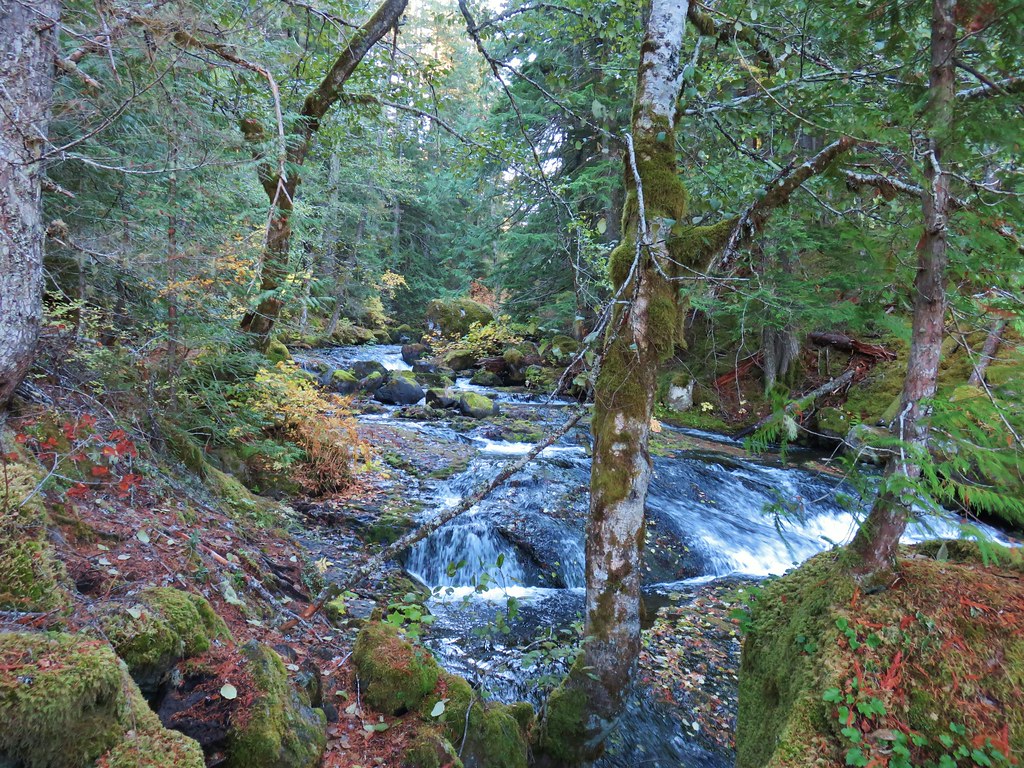

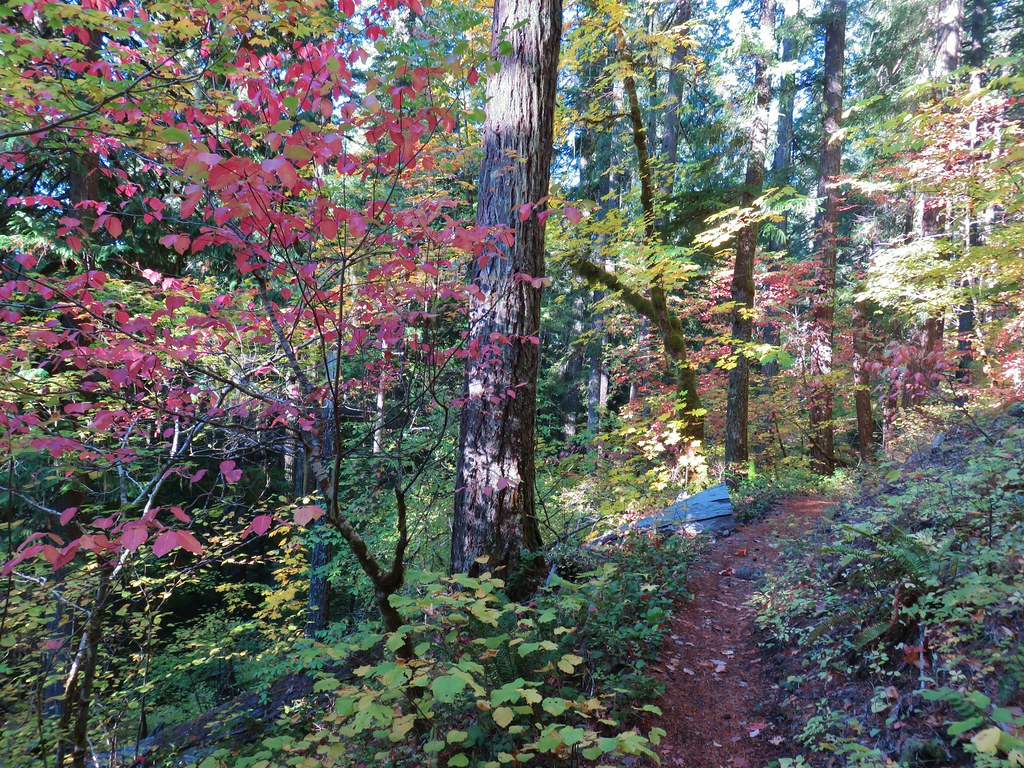
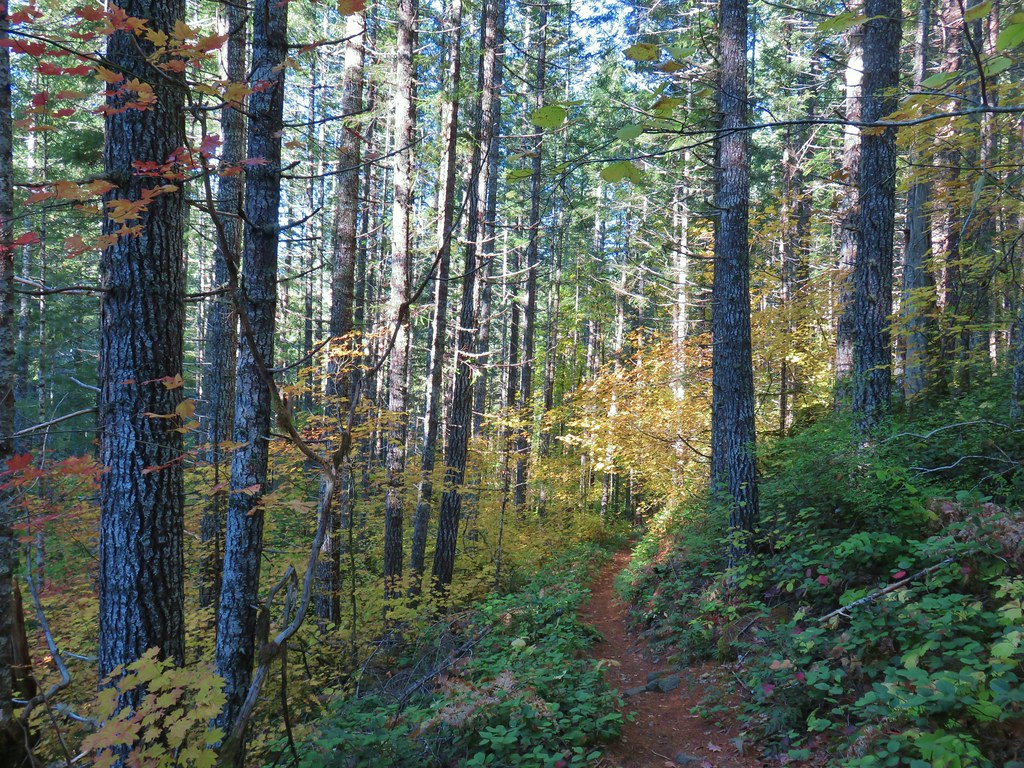
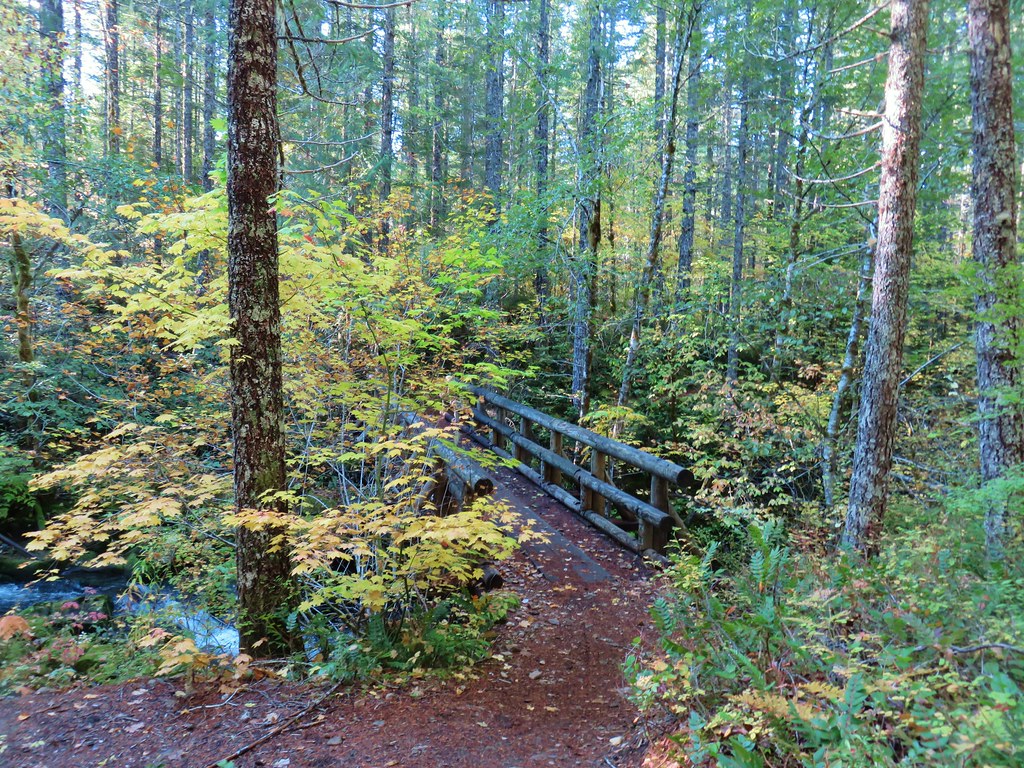
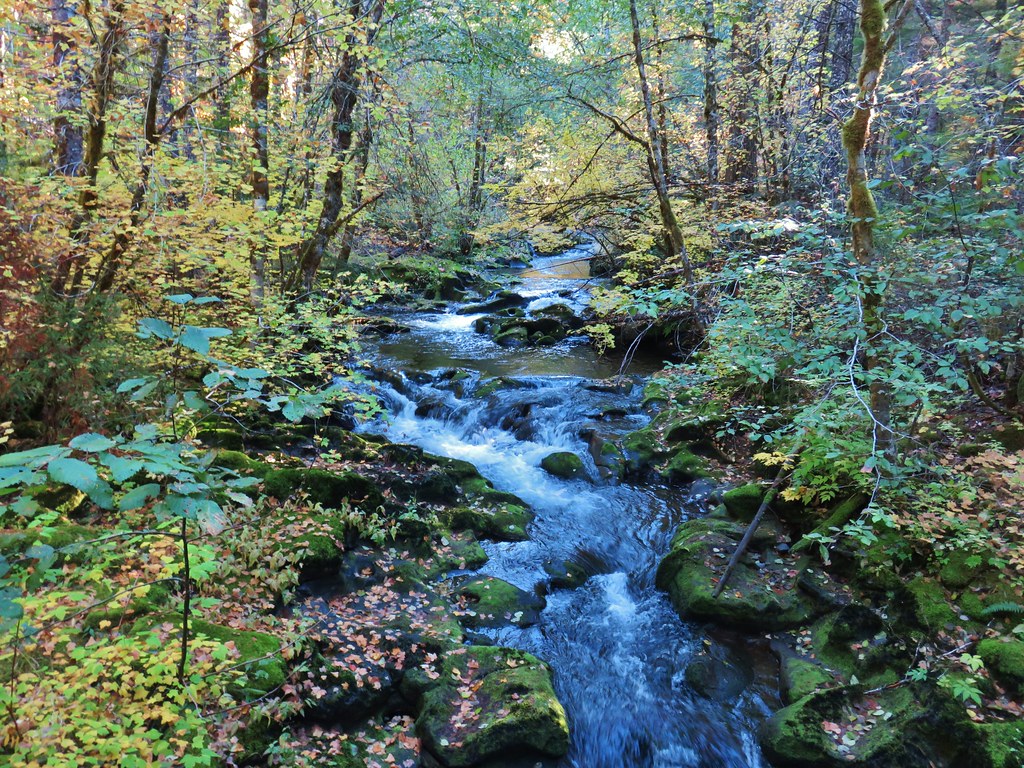
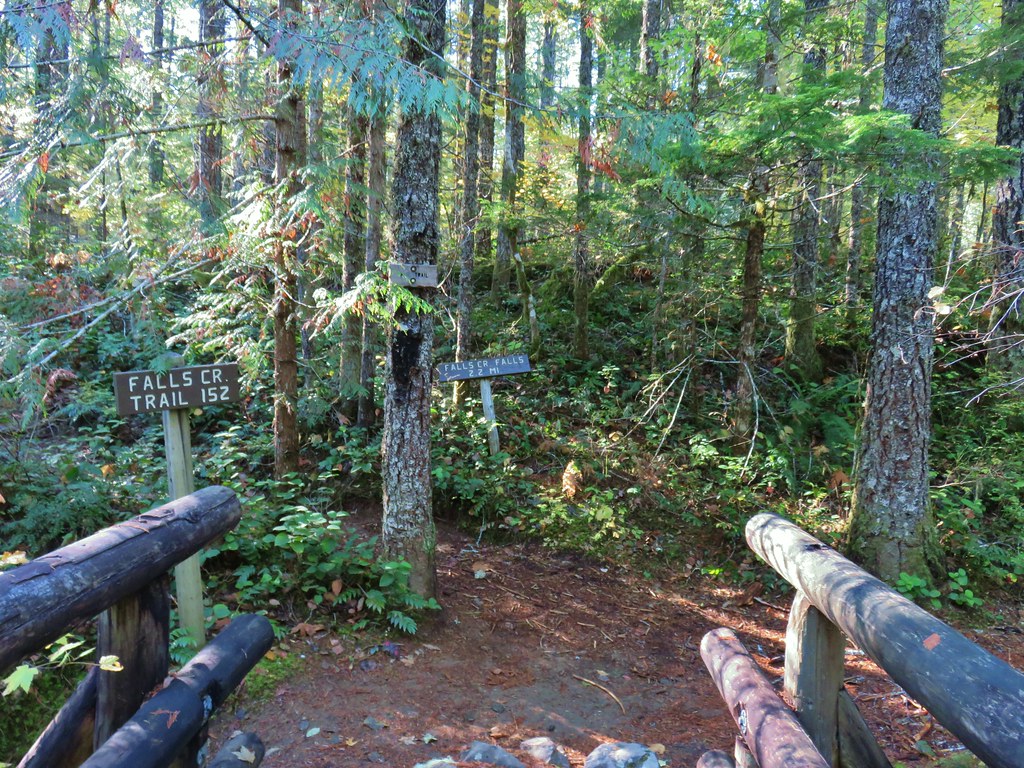
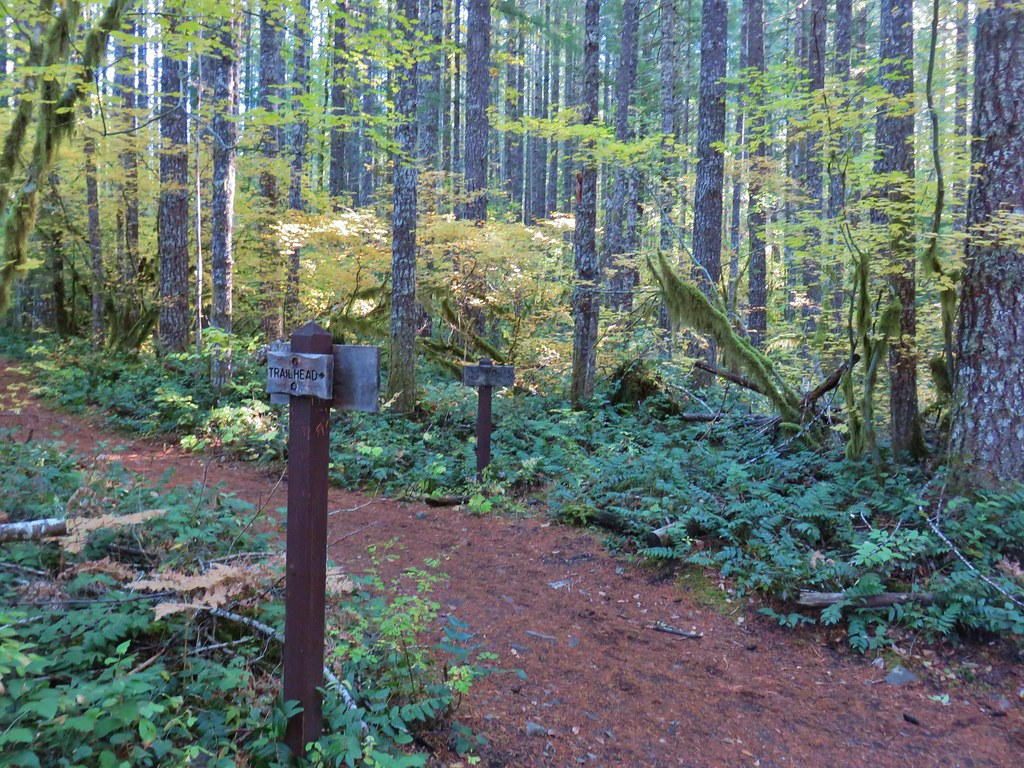
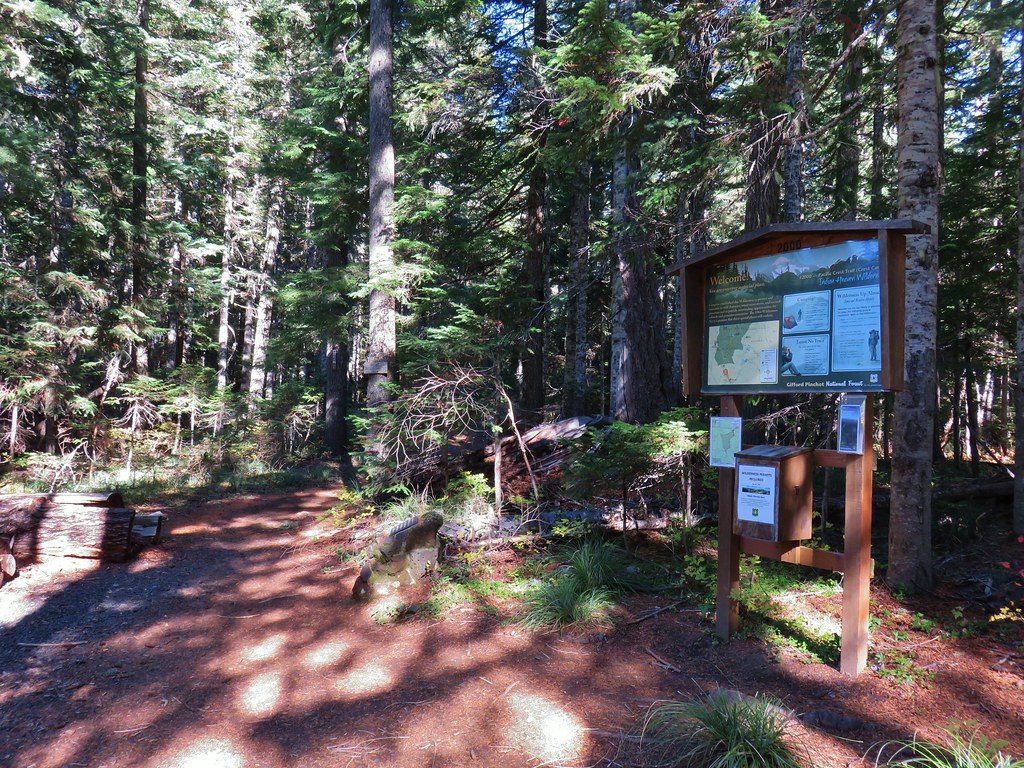
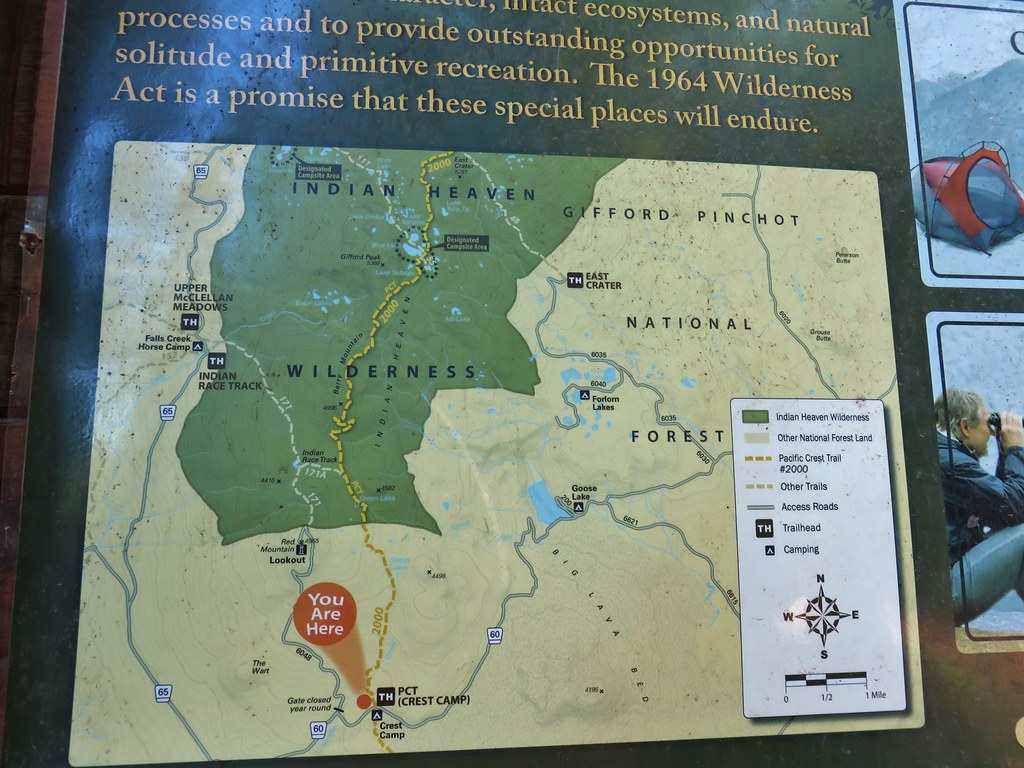
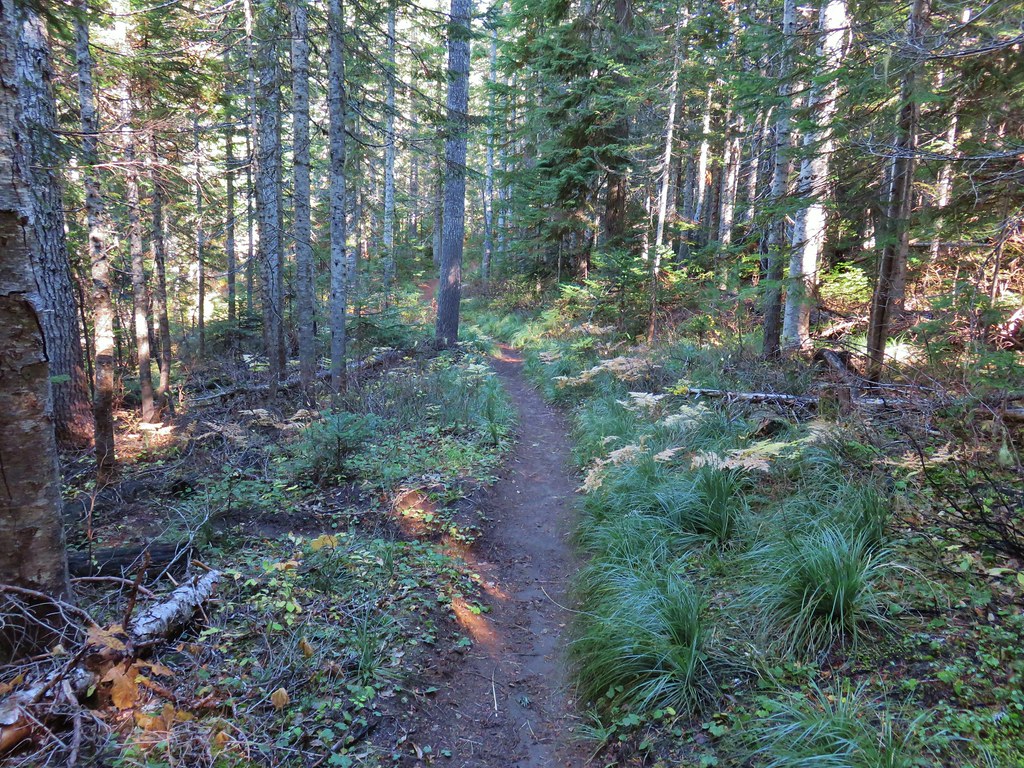


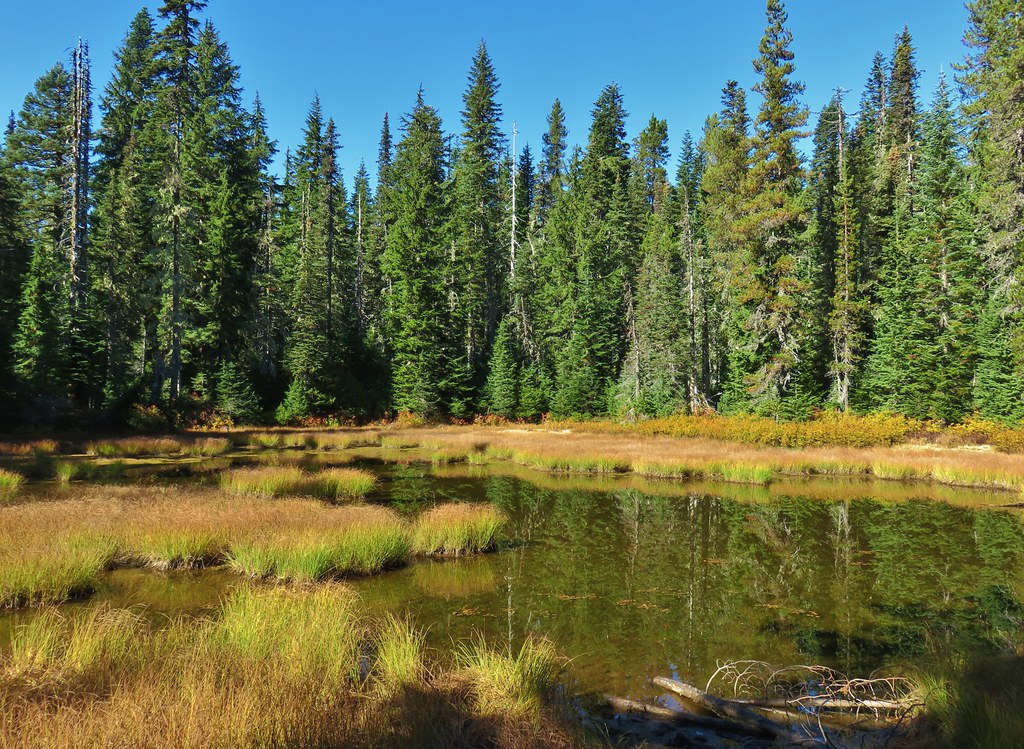
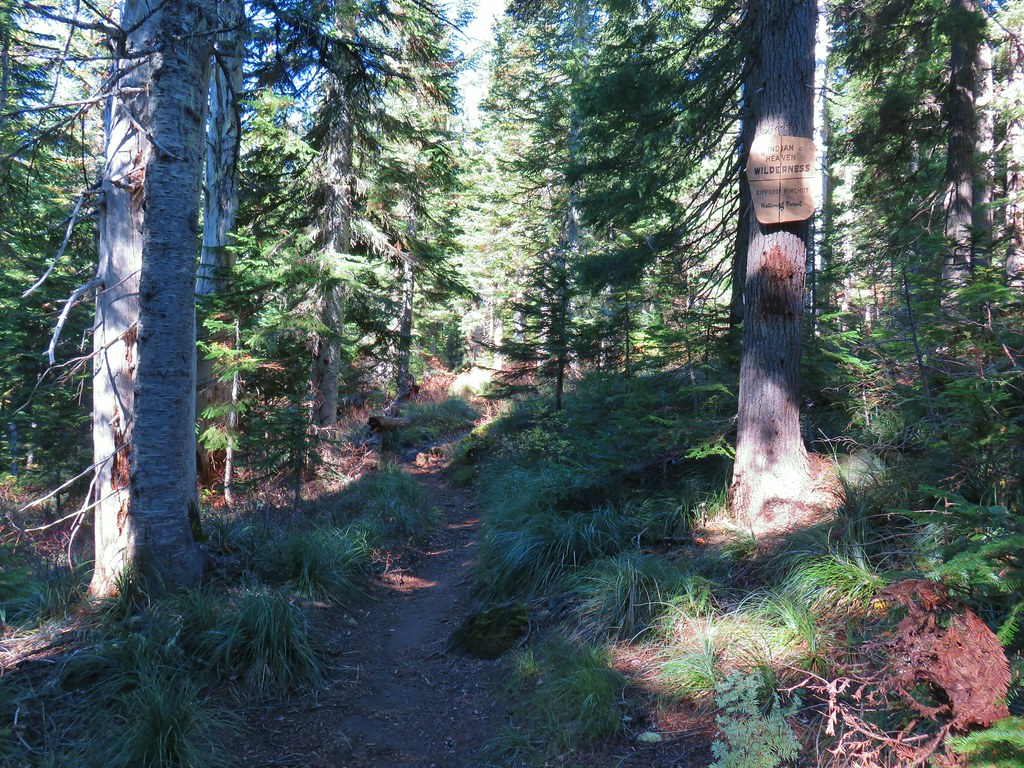
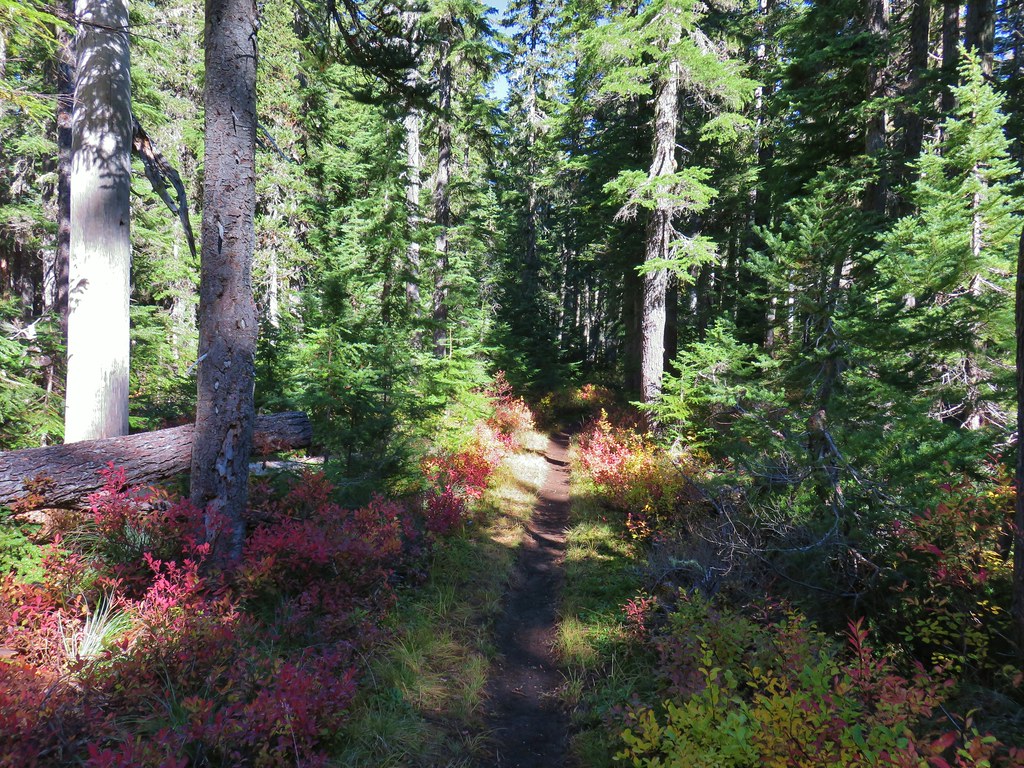
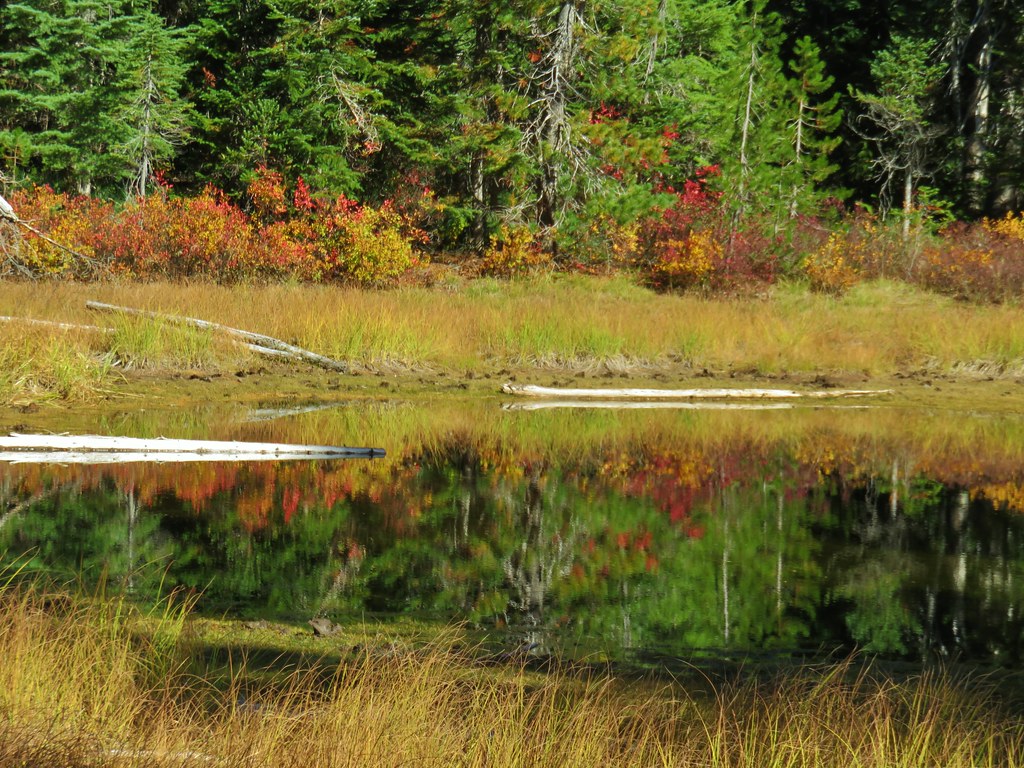 This may named be Green Lake
This may named be Green Lake
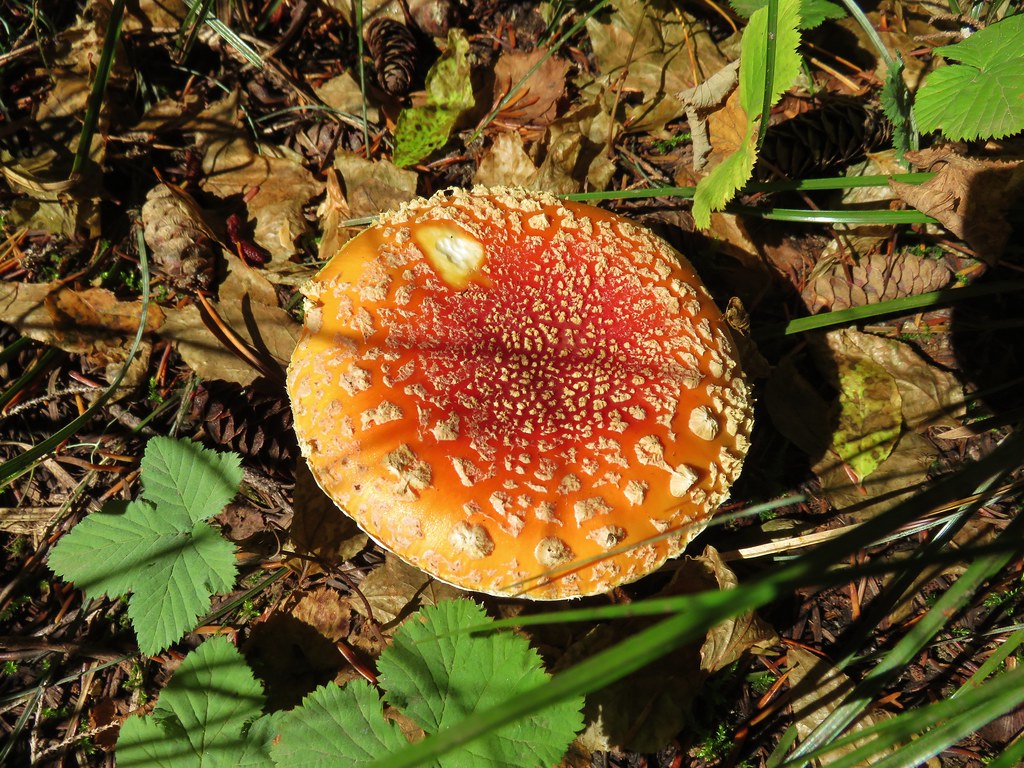
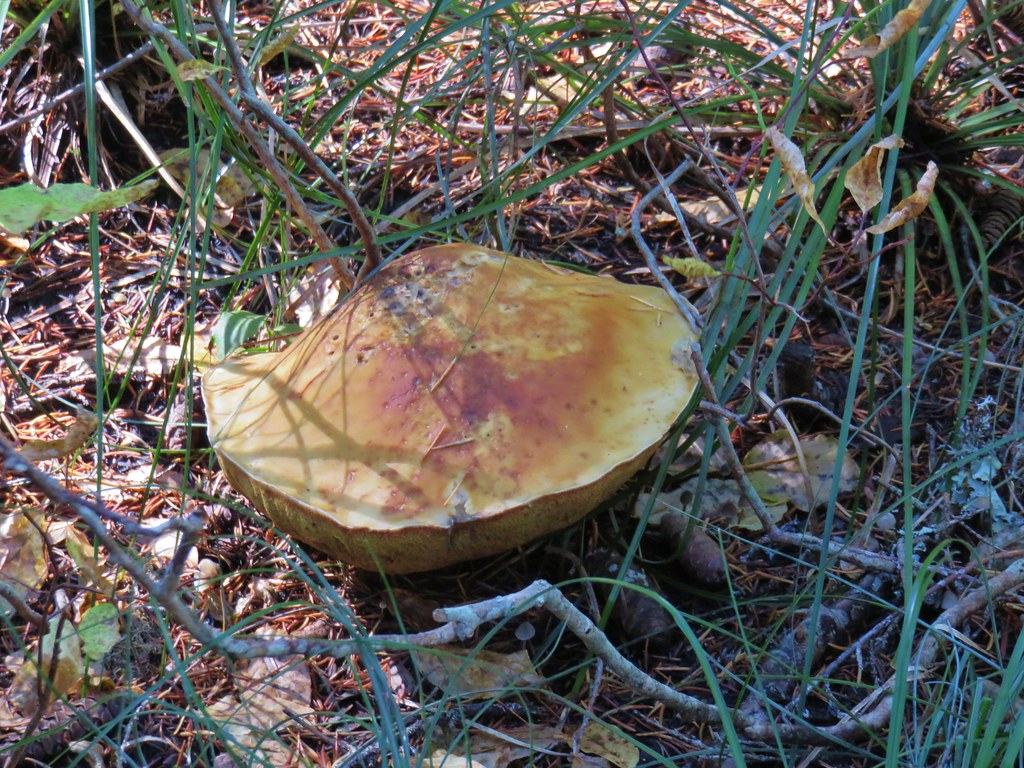
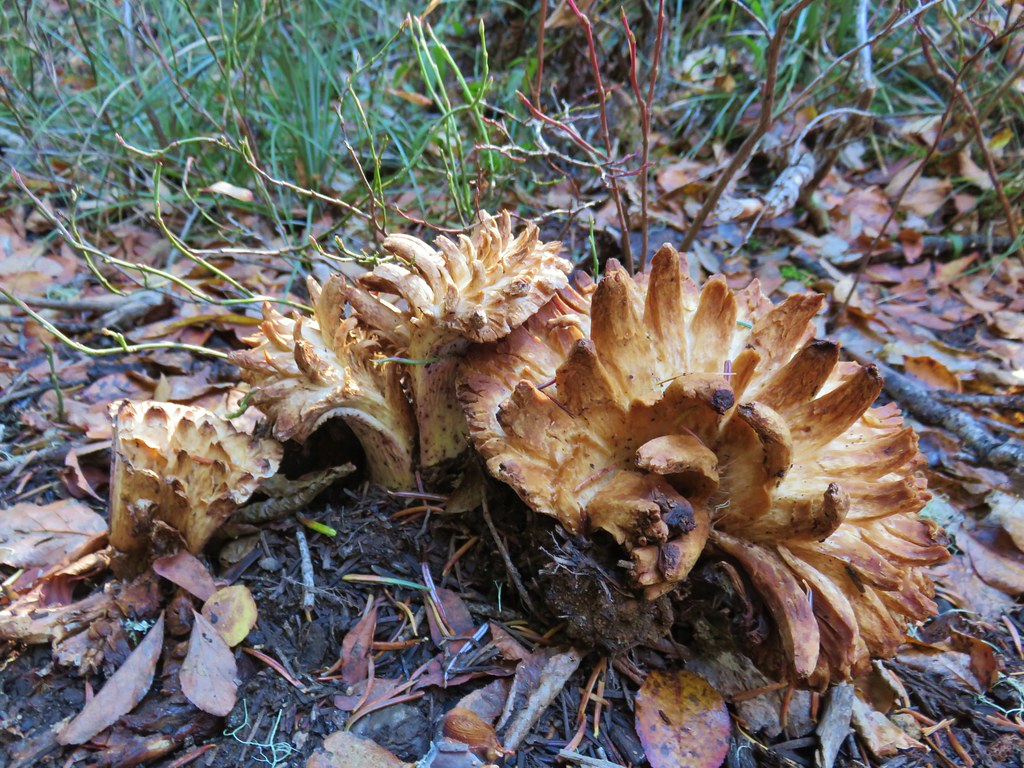
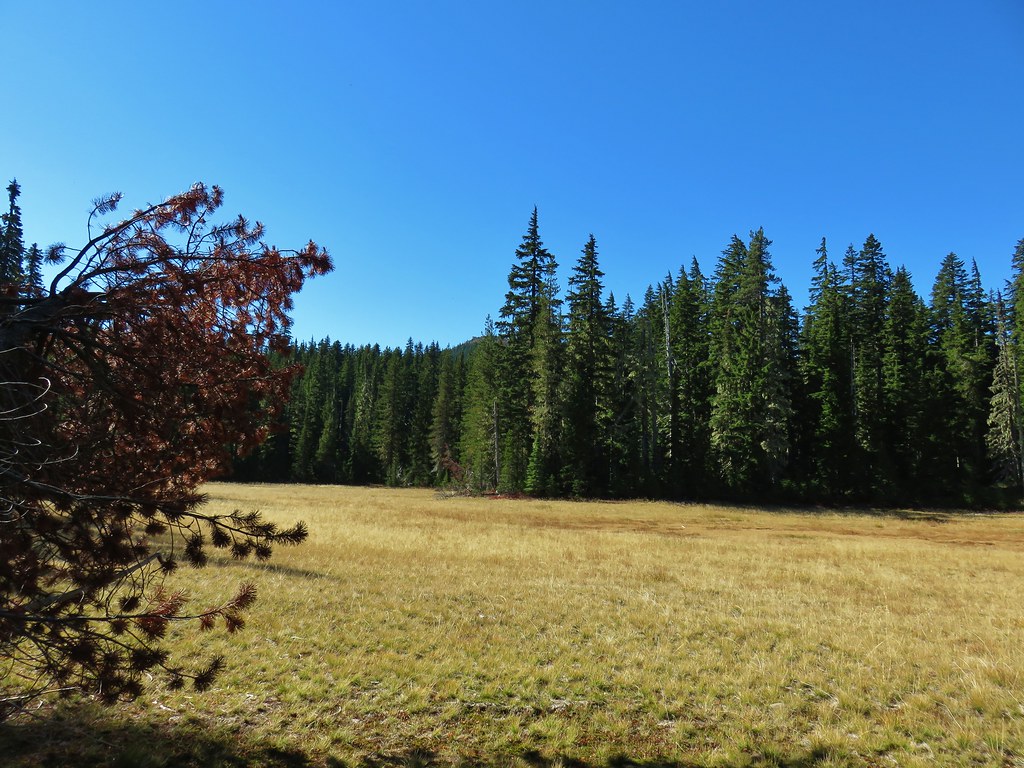

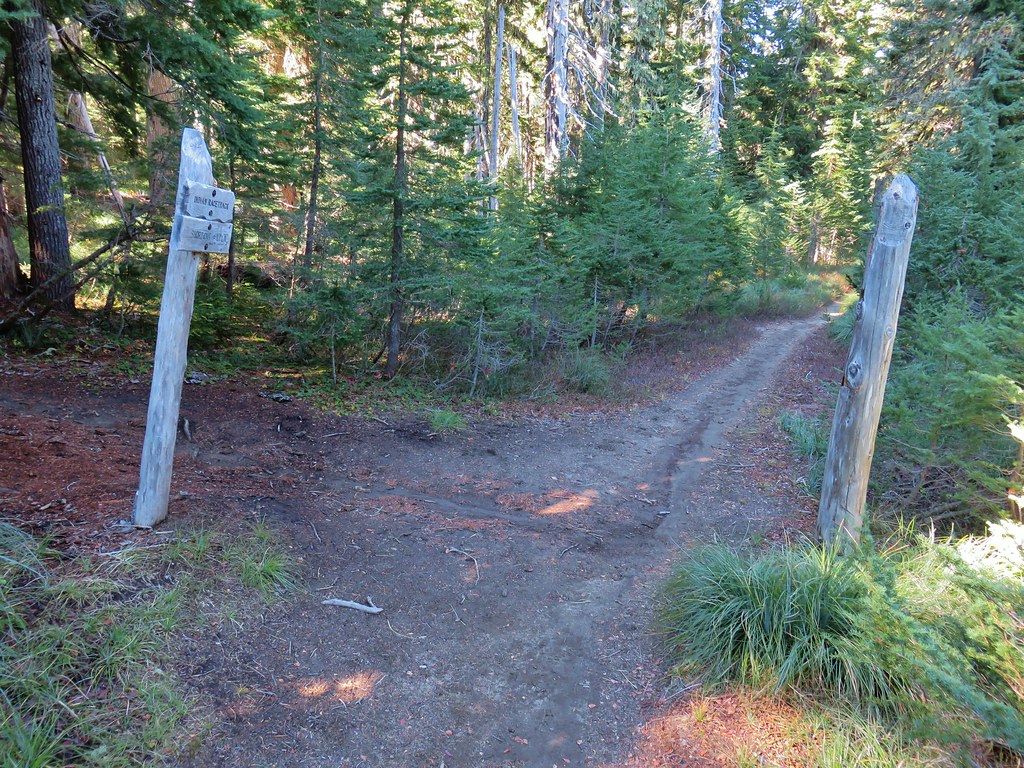

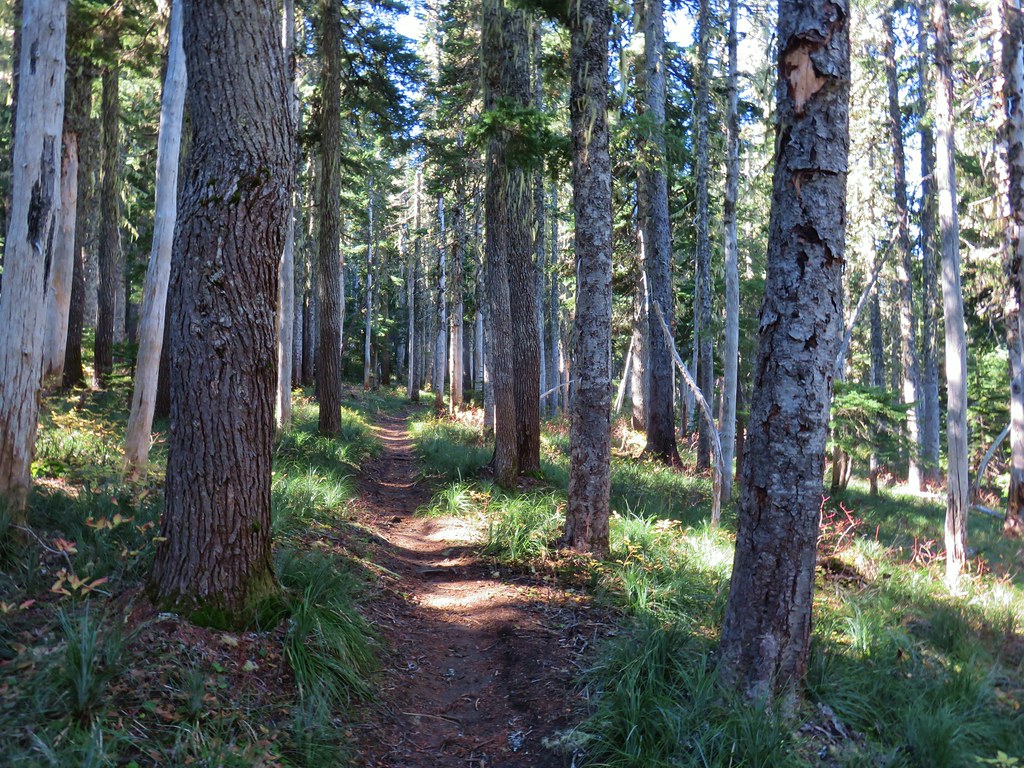
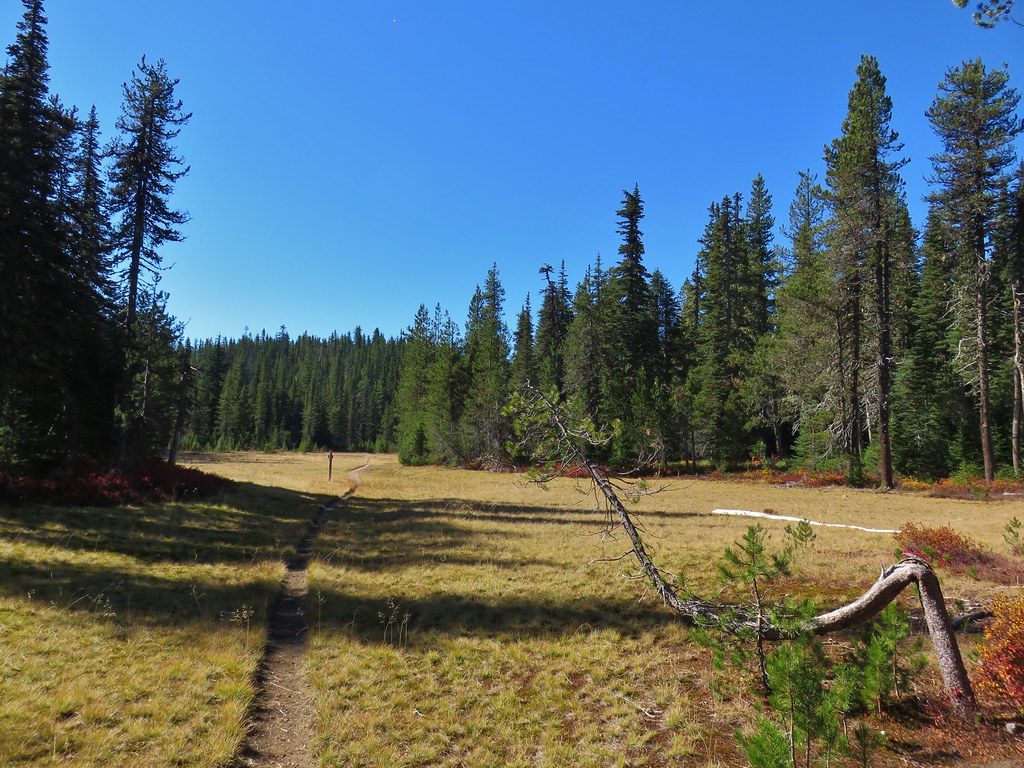
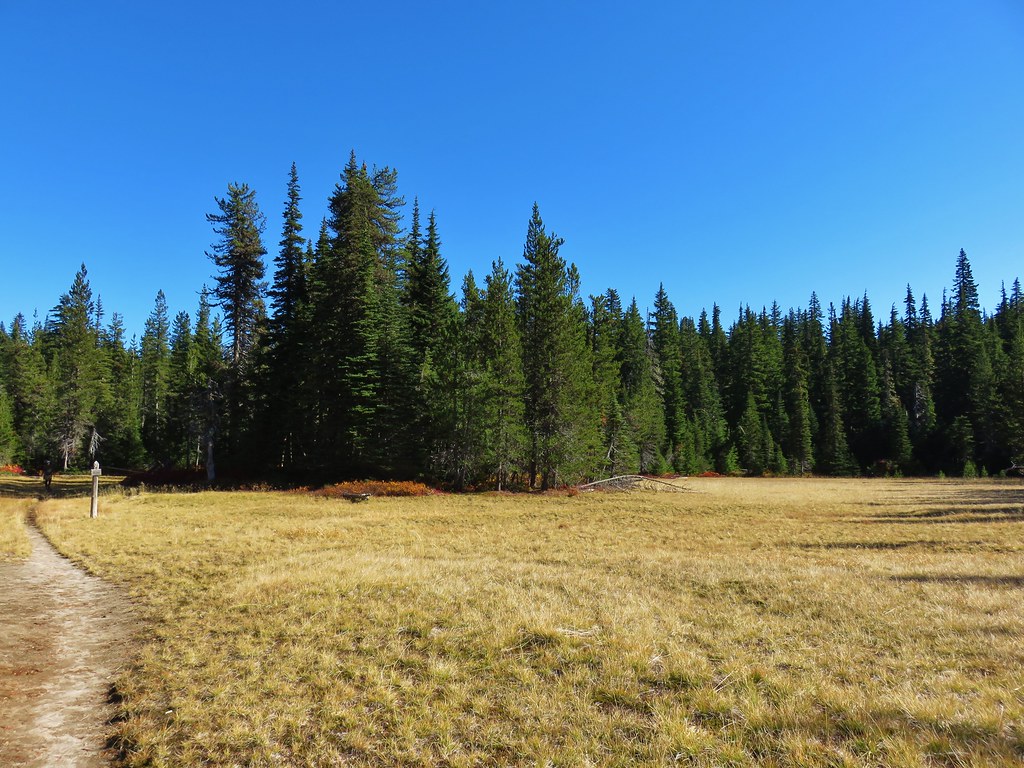
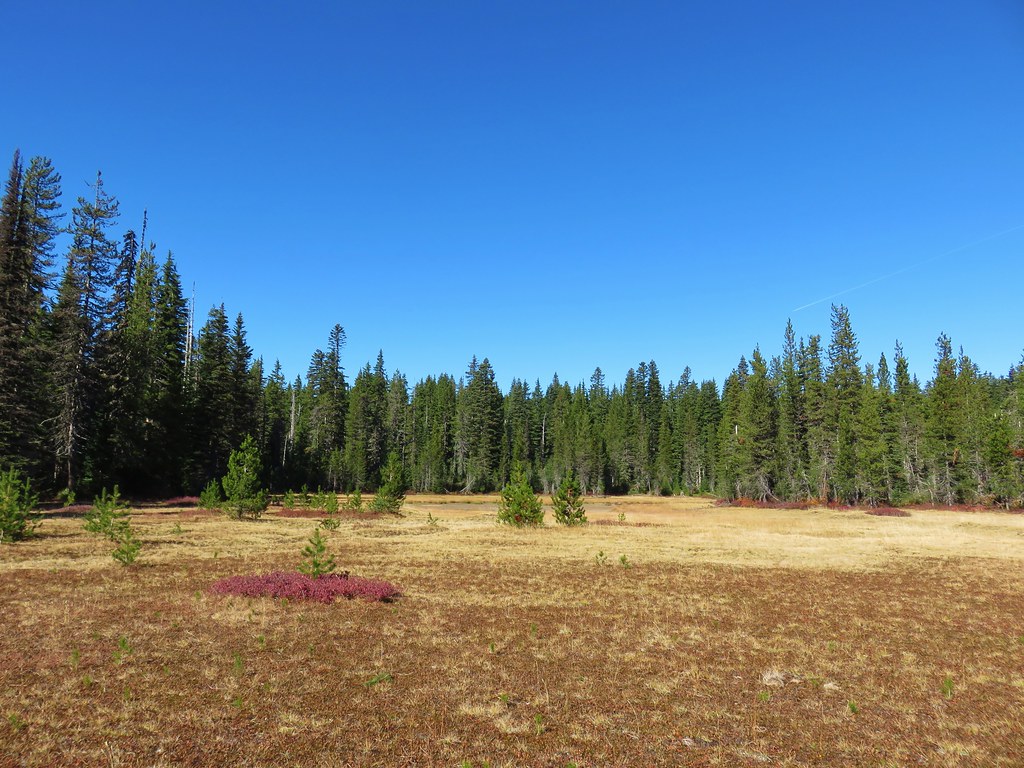
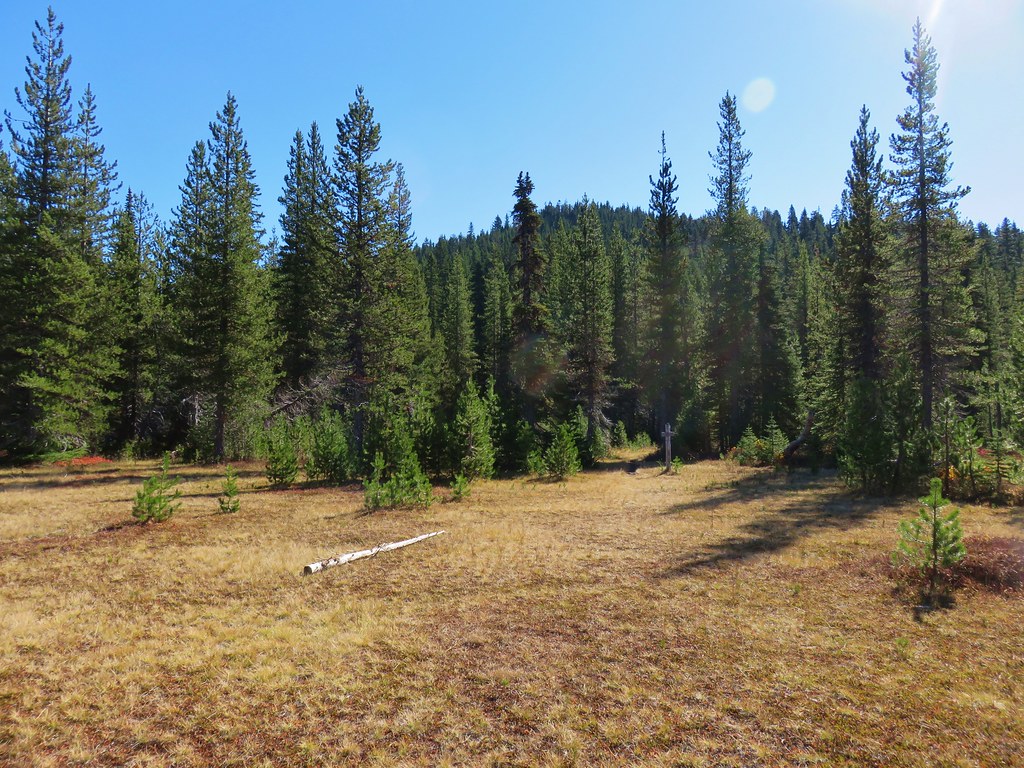
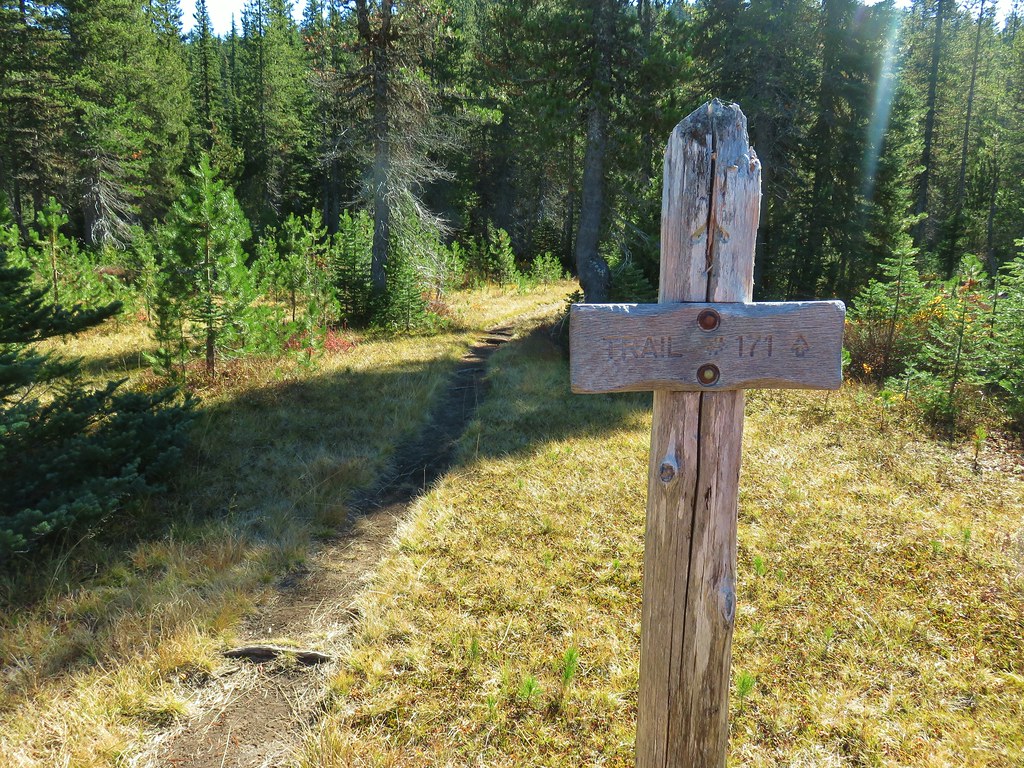
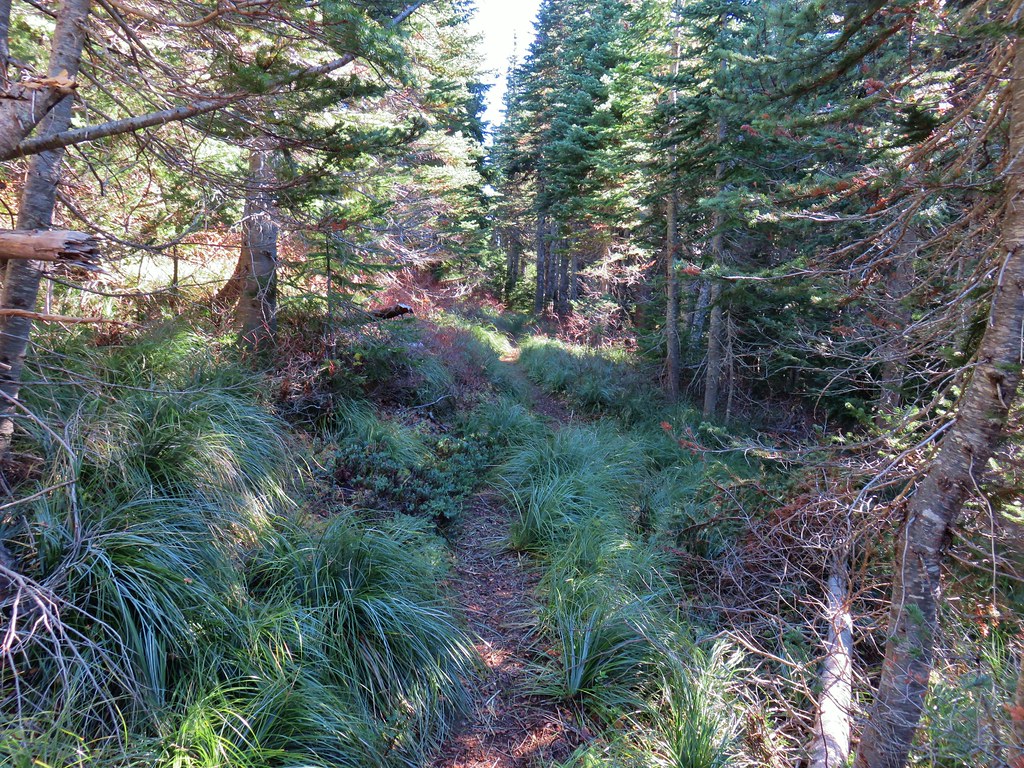
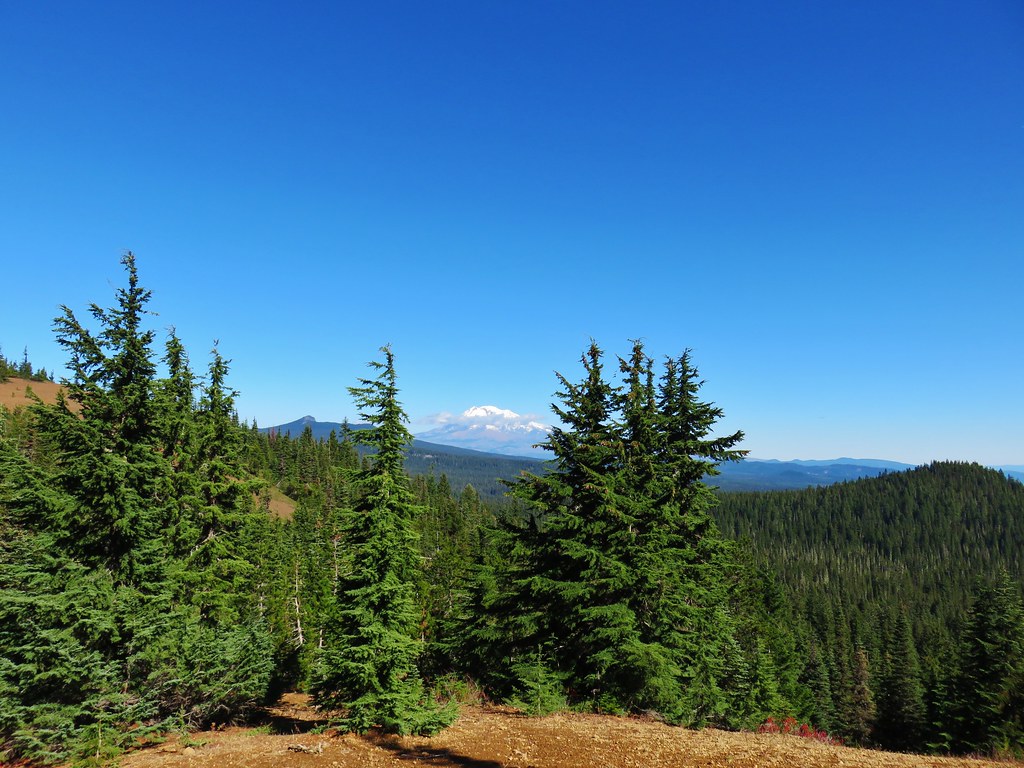

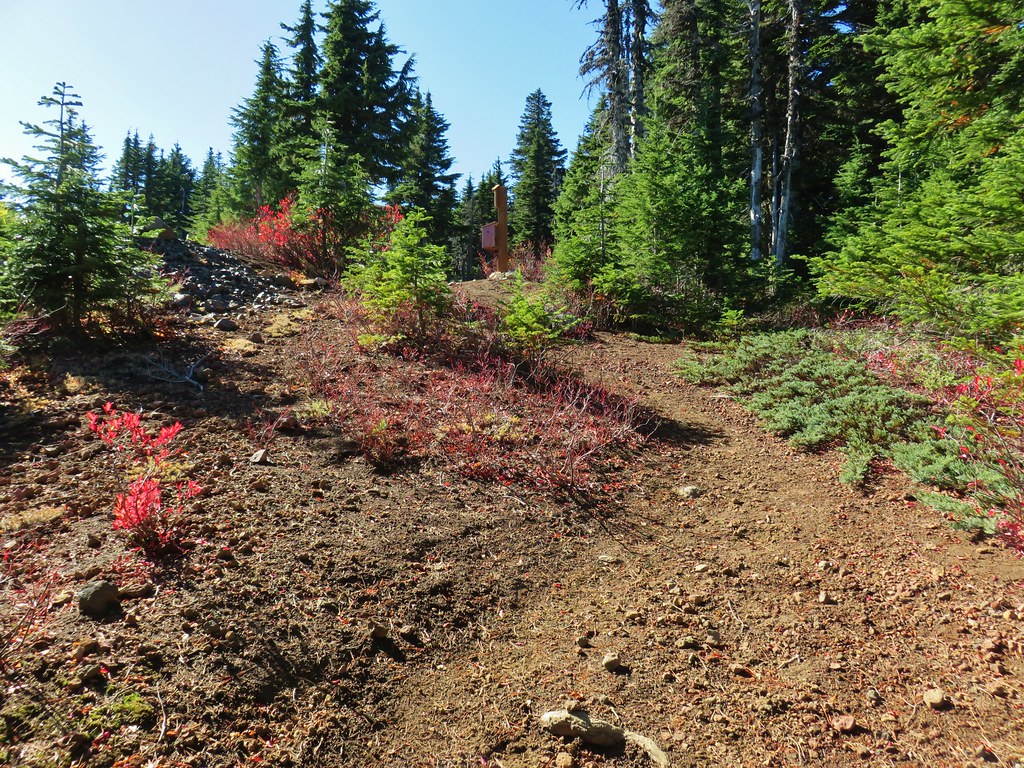

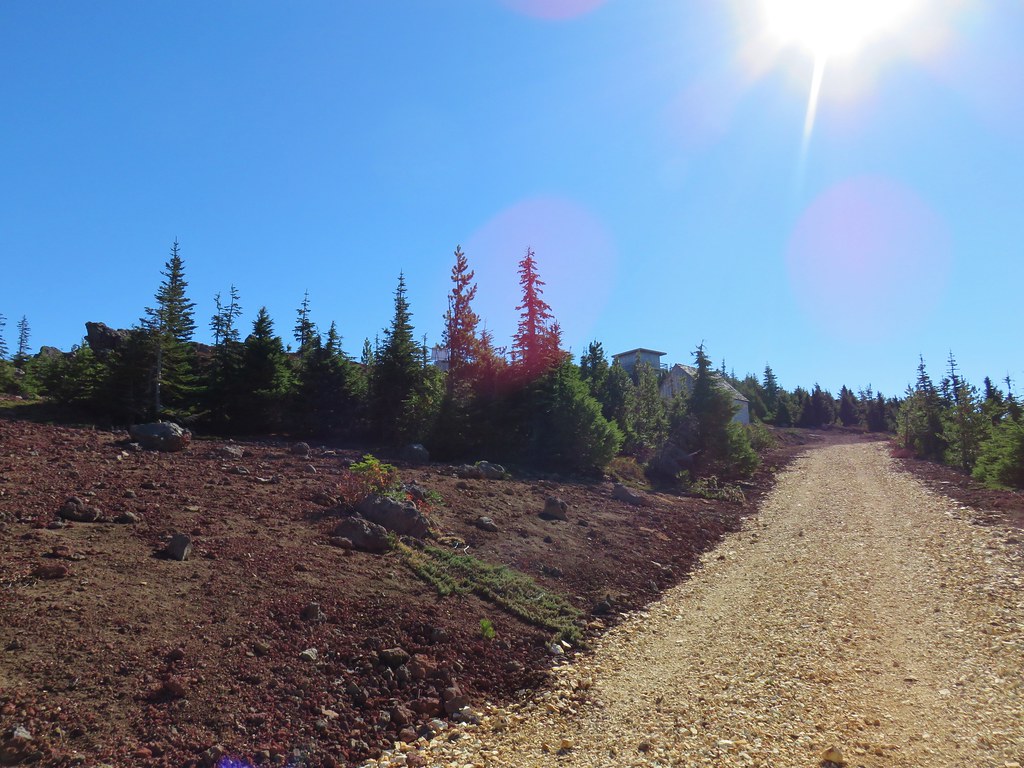

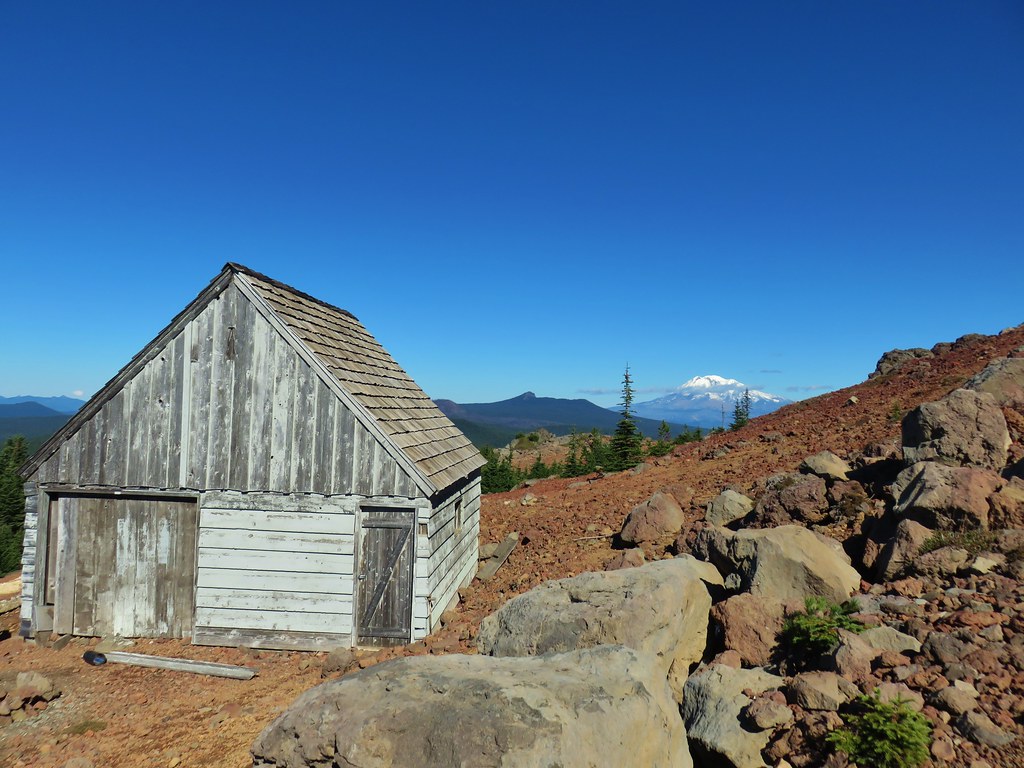 Lemei Rock and Mt. Adams
Lemei Rock and Mt. Adams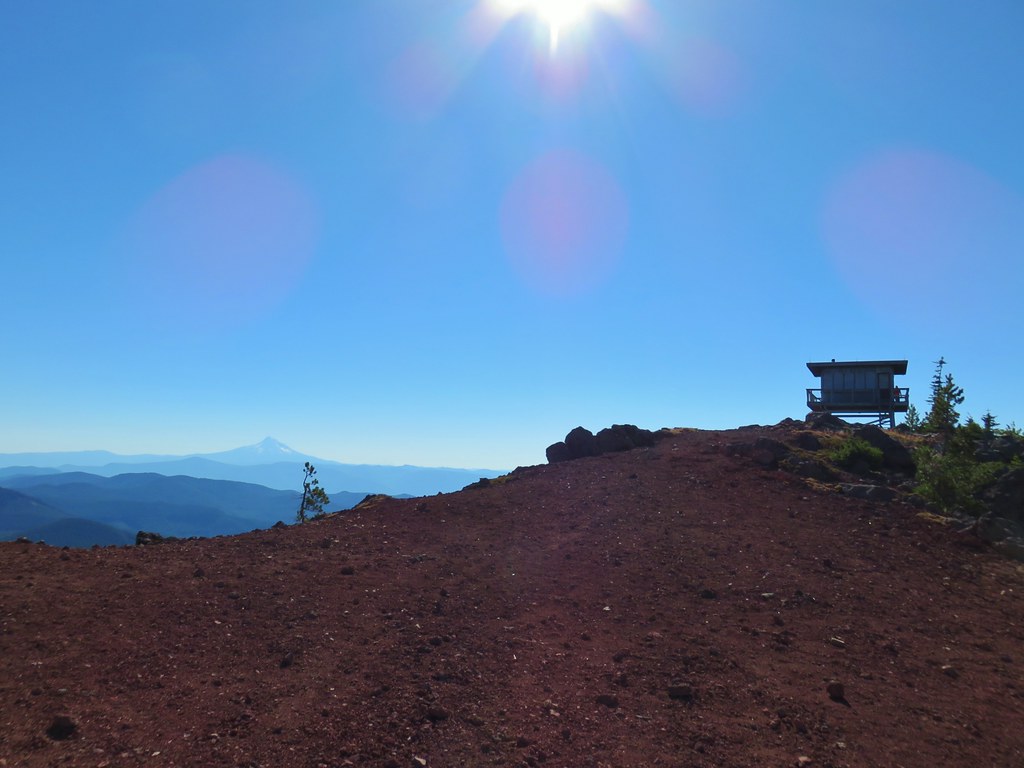
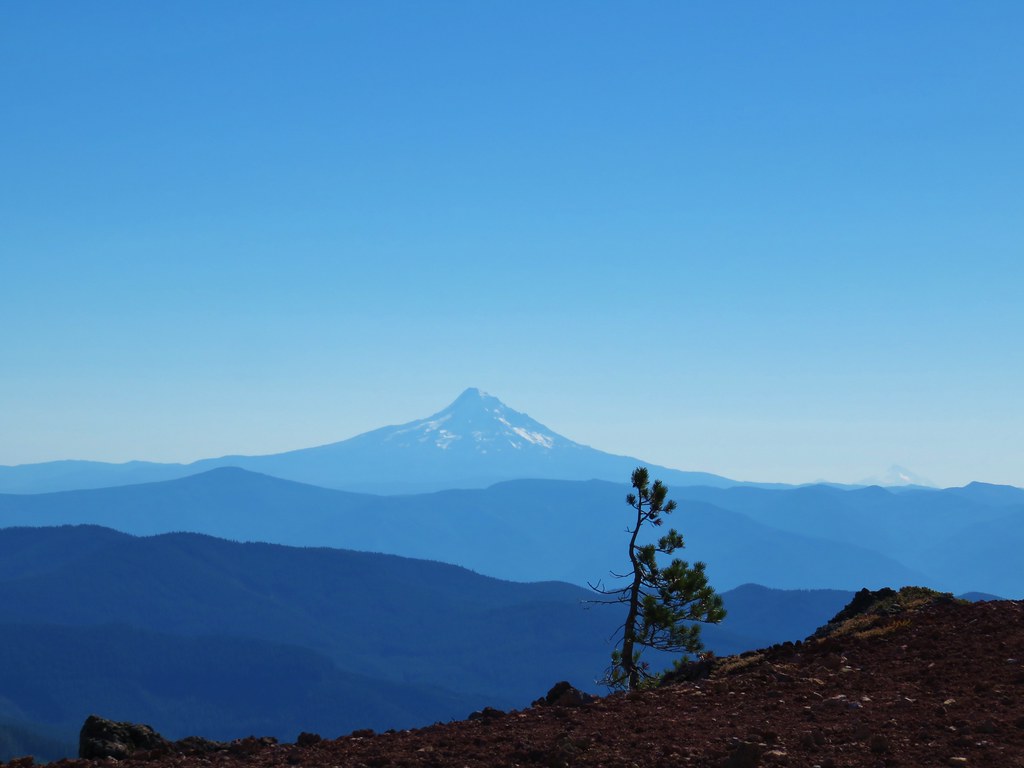

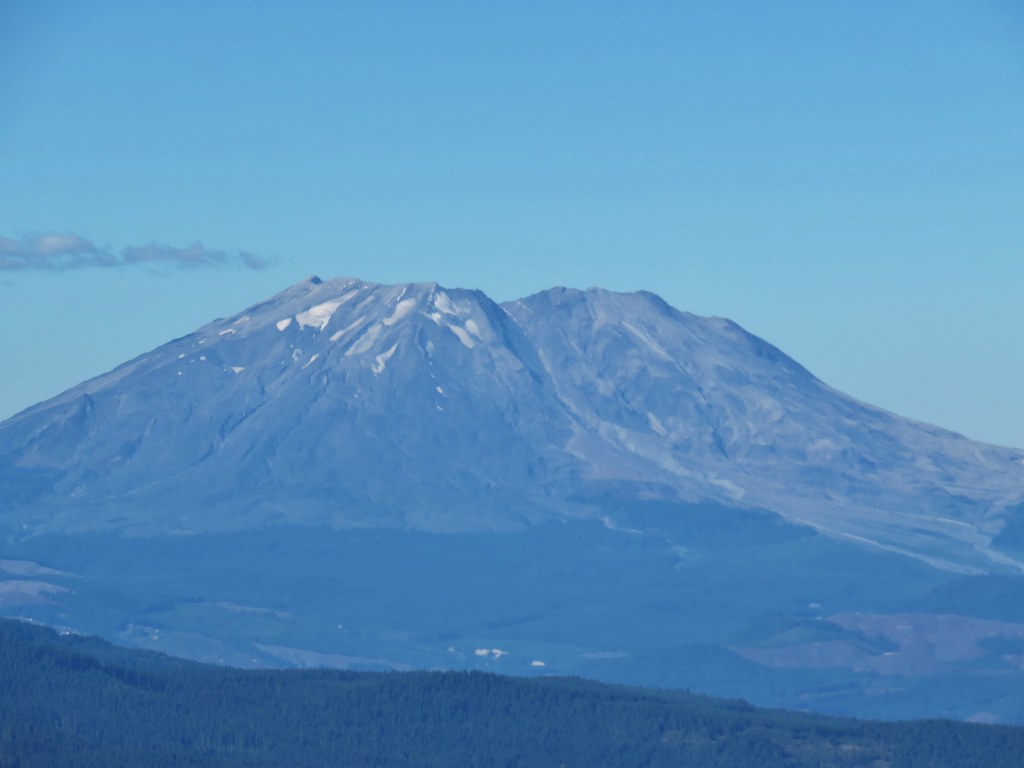 Mt. St. Helens
Mt. St. Helens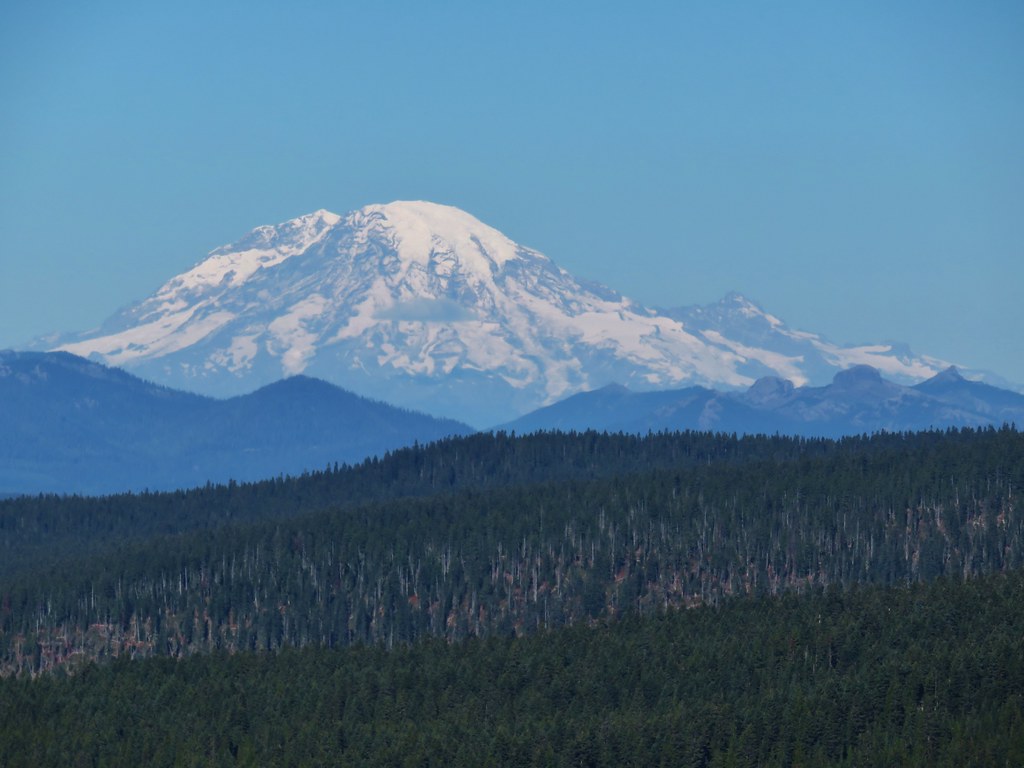 Mt. Rainier
Mt. Rainier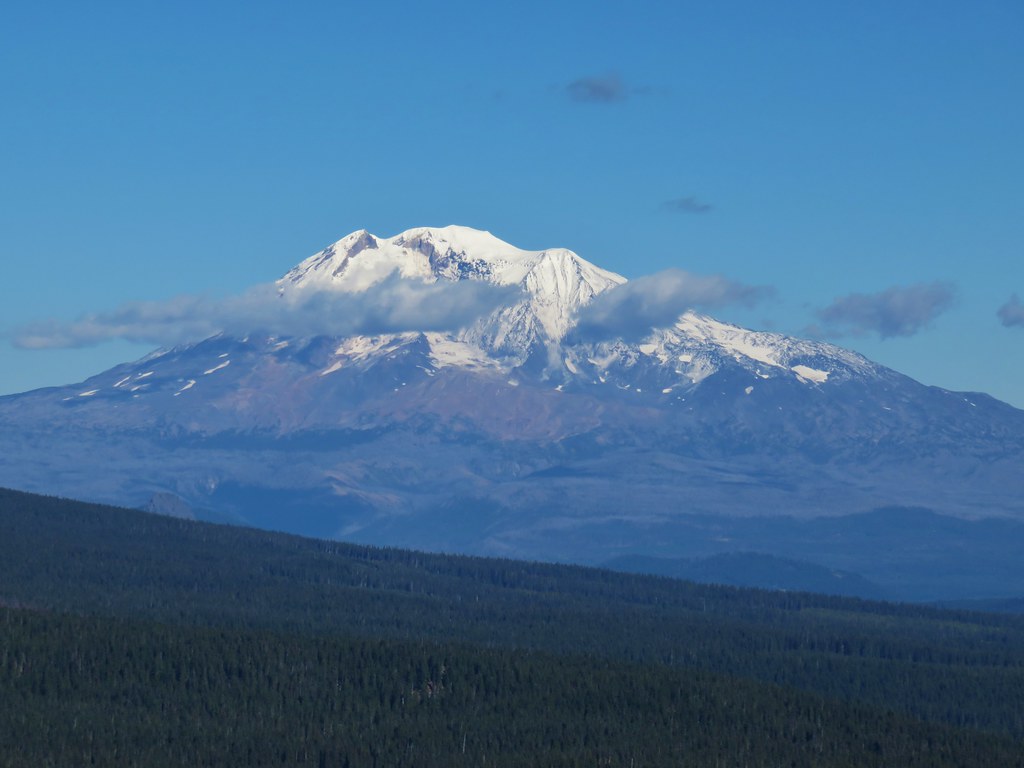 Mt. Adams
Mt. Adams